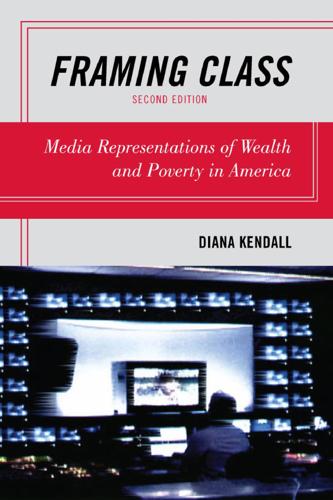
Framing Class: Media Representations of Wealth and Poverty in America
by
Diana Elizabeth Kendall
Published 27 Jul 2005
Below the working class in the social hierarchy is the working-poor category (about 13 percent of the U.S. population). Members of the working poor live just above or below the poverty line. Typical annual household income is about $25,000. Individuals identified as the working poor often hold unskilled jobs, seasonal migrant jobs in agriculture, lower-paid factory jobs, and minimum-wage service-sector jobs (such as counter clerk in restaurants). As some people once in the unionized, blue-collar sector of the workforce have lost their jobs, they have faced increasing impoverishment. A large number of the working poor hold full-time jobs, and some hold down more than one job, but they simply cannot make ends meet.
…
However, as goods-producing jobs have decreased, union membership has dropped to a small fraction of 9781442202238.print.indb 123 2/10/11 10:46 AM 124 Chapter 5 the labor force.10 Consequently, the power of the working class to influence economic and political decisions has diminished; today, the media frequently characterize the working class as low in political participation. Some scholars believe that the working poor should be a category separate from the working class, but my examination of media coverage suggests that the working class and working poor are discussed somewhat interchangeably, particularly as more working-class employees are “only a step—or a second family income—away from poverty.”11 As a result, societal lines, like media distinctions, between the working class and working poor have become increasingly blurred. Global shifts in the labor force through outsourcing, downsizing, and plant closings have created more fluidity between the two groups.
…
Global shifts in the labor force through outsourcing, downsizing, and plant closings have created more fluidity between the two groups. Some analysts place the working poor at 13 percent of the U.S. population; so, when combined with the working class (30 percent), these two categories together constitute approximately 43 percent of the population. Even under the best of circumstances, the working poor hold low-wage positions with little job security, few employee benefits, and no chance to save money. Their work conditions are frequently unpleasant and sometimes dangerous.12 The working poor may include illegal immigrants (known as undocumented workers) who worry that they will be incarcerated or deported if they complain to employers about wages or working conditions.
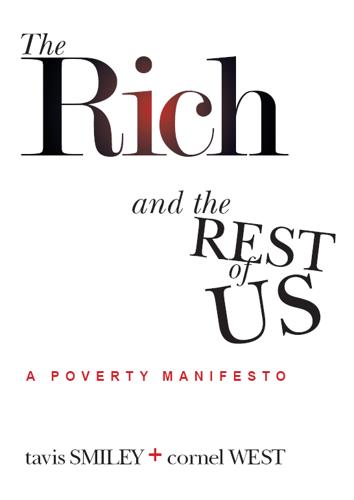
The Rich and the Rest of Us
by
Tavis Smiley
Published 15 Feb 2012
It concludes that the “well-being of low-income Americans, particularly the working poor, the near poor, and the new poor, are at substantial risk,” despite politicians’ and Wall Street’s declarations of an economic recovery.37 With the economic reality that real wages for the American working class have not increased for the past four decades, it is past time to challenge the distorted language and accompanying political rhetoric about the poor. We must move past Republican and Democratic versions of trickle-down economics—the belief that helping the rich and middle classes will magically improve the lot of the poor and working poor. Job growth has stalled so badly that several economists predict that, even if the economy rebounds, unemployment levels by the end of 2013 may return only to 2007 levels—around 4.6 percent, or almost 14 million people.
…
We want to pin the tail on any available donkey that will keep us from having to define poverty as “being unable to make a living because we can’t find a job.” LONG LIVE THE LIE For at least the past four decades, most Americans have been able to ignore the poor and deny the extent of poverty. Middle class people would disparage low-income people, low-income people would dog the working poor, and the working poor would beat down on the homeless poor—because we all want to feel like we have some sort of stature in life. Be it shame and blame or utter disdain, all these attitudes were justified by stereotypes, distortions, and lies about the poor. It took the Great Recession to make poverty a real threat to the American psyche.
…
We are concerned about poverty in America because it has impacted our lives, our outreach, the missions we’ve embraced, and our roles as democratic thinkers. For my dear brother, Tavis, poverty is not an abstraction; it was the story of his childhood. He didn’t grow up associating poverty with Black ghettos, run-down barrios, or slums. Tavis, the oldest of ten kids, grew up in a Bunker Hill, Indiana, trailer park with mostly poor whites. His working-poor, struggling parents, Emory and Joyce Smiley, and his grandmother (Big Mama) ran a strict Pentecostal household in a space that wasn’t built for 13 people. When Tavis’s aunt was murdered, the Smiley home became the safety net for her four children. He still recalls the humiliation of going to school in hand-me-down clothes and shoes with cardboard stuffed in them to cover the holes in the soles.
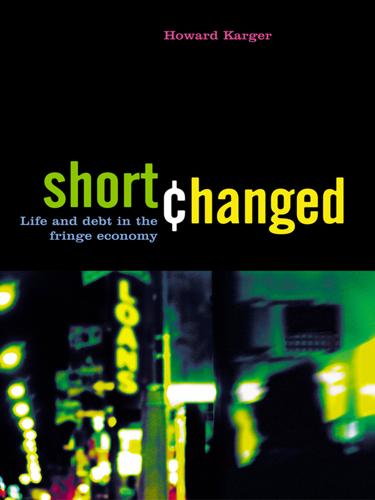
Shortchanged: Life and Debt in the Fringe Economy
by
Howard Karger
Published 9 Sep 2005
Sixty percent of American workers earn less than $14 an hour, and unskilled entry-level workers in many service occupations earn $7 an hour or less.15 The working poor are also more vulnerable to the vicissitudes of life than the middle class. For example, more than 40 million Americans lack health insurance, and unanticipated events such as illnesses or family emergencies may require workers to take off time without pay, leading to a temporary shortfall in income and increased debt. Given the low incomes of the working poor, it’s not surprising that a fringe economy that promises quick cash with few questions asked has become a high-growth sector.
…
Chapter 1 looks at the scope and size of the fringe economy and the characteristics of its customers. It then examines the major players in the fringe economy, including mainstream financial institutions. Chapter 2 explores key factors that explain the phenomenal growth of the fringe sector, including stagnant wages, the rising numbers of working poor, the impact of welfare reform, immigration, and the rise of the Internet. Chapter 3 looks at the functionally poor middle class, an economic group increasingly targeted by the fringe sector. It also investigates the role of household debt in the growth of the fringe economy. Having a credit card is almost a necessity in America’s plastic-driven society.
…
–ACE Cash Express, 2004 Annual Report 2 Why the Fringe Economy Is Growing The almost exponential growth of the fringe economy during the mid-1990s was baffling, especially since real incomes were rising and the numbers of people in poverty were dropping. Nonetheless, many factors came together to foster the phenomenal growth of the fringe economy, including the rise in numbers of America’s working poor, welfare reform, high levels of immigration, the growth of the Internet, the increased financial stress that slow wage growth and the rising cost of necessities placed on the middle class; and liberal federal banking laws. In simple terms, a major reason for the growth in the fringe economy is that 43% of Americans annually spend more than they earn.
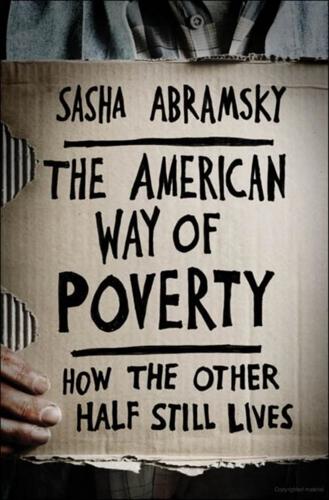
The American Way of Poverty: How the Other Half Still Lives
by
Sasha Abramsky
Published 15 Mar 2013
Contents Acknowledgments PROLOGUEA Scandal in the Making PART ONE: THE VOICES OF POVERTY CHAPTER ONEPoverty in the Land of the Plutocrats CHAPTER TWOBlame Games CHAPTER THREEAn American Dilemma CHAPTER FOURThe Fragile Safety Net CHAPTER FIVEThe Wrong Side of the Tracks CHAPTER SIXStuck in Reverse PART TWO: BUILDING A NEW AND BETTER HOUSE INTRODUCTIONWhy Now? CHAPTER ONEShoring Up the Safety Net CHAPTER TWOBreaking the Cycle of Poverty CHAPTER THREEBoosting Economic Security for the Working Poor CODAAttention Must Be Paid Note on Sources and Book Structure Notes Index Acknowledgments The American Way of Poverty is a book with many benefactors and champions. I wish I could say that I woke up one morning with the concept fully formed in my mind, but I didn’t. Rather, there were an array of themes that I was exploring in my journalism and a slew of economic and political issues that, in the years surrounding the 2008 economic collapse, I found to be increasingly fascinating.
…
And then there were the pantry denizens escaping domestic violence who had run up against draconian cuts to the shelter system. One client, Wallace recalled, was a woman in her late forties, about to enter a shelter. “We got a request to provide her food because she has to bring her own food to the shelter. The programs that assist the working poor and the poor are in dire straits.” Variations on the stories from Appalachian Pennsylvania could be encountered in cities and regions across America. After all, an economic free-fall of the kind that the United States underwent after the housing market collapse and then the broader financial meltdown leaves carnage in its wake.
…
Unable to claim unemployment insurance, they live entirely on savings, on the largesse of friends and family, or on charity. Yet this isn’t a story only about those without work. In fact, America’s scandalous poverty numbers also include a stunning number of people who actually have jobs. They are author David Shipler’s “working poor,” men and women who work long hours, often at physically grueling labor, yet routinely find they can’t make ends meet, can’t save money, and can’t get ahead in the current economy. At the bottom of that economy, income volatility is peculiarly high; casual laborers and hourly employees routinely see their hours cut, their wages reduced, or their jobs eliminated during downturns.

The Working Poor: Invisible in America
by
David K. Shipler
Published 12 Nov 2008
—Austin American-Statesman “Splendidly animated by Shipler’s empathy—his ability to see people and more important to depict them, not as statistics or symbols of injustice, but as human beings.” —The Miami Herald “The Working Poor will make any relatively well-off reader look at the struggles of the poor differently.… [It] deserves a place on the American bookshelf next to Barbara Ehrenreich’s Nickel and Dimed.” —The Boston Globe “Shipler steers clear of diatribes, looking at human frailty and a spectrum of bosses and social services. With moving under statement, he develops a compassionate picture of the working poor.” —The Star-Ledger (Newark) “A work of stunning scope and clarity.… He brings the reader close enough to the challenges faced every day by his workers to make them feel it when the floor inevitably drops out beneath them.”
…
.… He brings the reader close enough to the challenges faced every day by his workers to make them feel it when the floor inevitably drops out beneath them.” —The Buffalo News “The scope and importance of David Shipler’s The Working Poor brings to mind Upton Sinclair’s The Jungle.” —Deseret News (Salt Lake City) “A powerful exposé that builds from page to page, from one grim revelation to another, until you have no choice but to leap out of your armchair and strike a blow for economic justice.” —Barbara Ehrenreich, author of Nickel and Dimed “There is no better book on poverty in America than The Working Poor because it describes in vivid detail the sort of day to day problems and the cycles that these folks are involved in … really thought-provoking in a very important way.”
…
I use it as imprecisely as it should be used, to suggest the lowest stratum of economic attainment, with all of its accompanying problems. No discussion of the working poor is adequate without a discussion of their employers, so they also appear in these pages—entrepreneurs and managers who profit from cheap labor or who struggle to keep their businesses alive. In addition, this journey encounters teachers, physicians, and other professionals who try to make a difference. Although I have not sought to be demographically representative, most of the working poor in this book are women, as are most of them in the country at large. Unmarried with children, they are frequently burdened with low incomes and high needs among the youngsters they raise.
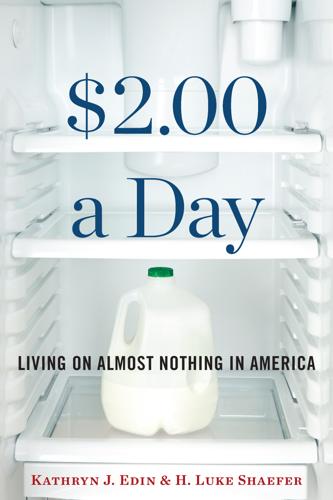
$2.00 A Day: Living on Almost Nothing in America
by
Kathryn Edin
and
H. Luke Shaefer
Published 31 Aug 2015
Drawing on Ellwood, the new president’s plan would add time limits to AFDC, but it would also increase the benefits of work to poor parents through a dramatic expansion of the EITC. By doing this, he argued, the country would “make history. We will reward the work of millions of working poor Americans by realizing the principle that if you work forty hours a week and you’ve got a child in the house, you will no longer be in poverty.” As Clinton was announcing plans to bolster the efforts of the working poor—whom many saw as deserving, but for whom there was little to no aid—he once again borrowed from Ellwood, making the case that the working poor “play by the rules” but “get the shaft.” It was time to “make work pay.” According to Jason DeParle, however, Ellwood worried that Clinton’s rhetoric on welfare time limits was too harsh.
…
We’ve seen that David Ellwood’s 1988 manifesto, Poor Support, called for replacing welfare, not just reforming it. He turned a spotlight on a portion of the poor who rarely got any attention—or much help—from the government: the working poor. Ellwood believed that by shifting the social safety net to support those who worked but remained in poverty, America could design a form of poor support that would avoid the criticisms lodged against welfare. In the 1990s, President Clinton and Congress acted on Ellwood’s ideas and bolstered the well-being of working-poor parents dramatically through tax credits that provided a substantial pay raise in the form of a wage subsidy. The largest of these programs, the Earned Income Tax Credit (EITC), is now generous enough to lift more than 3 million children above the poverty line each year.
…
Perhaps his only mistake was in assuming that this failure at the very bottom of the economic distribution would be visible and obvious, when in fact, throughout history, American poverty has generally been hidden far from most Americans’ view. America’s cash welfare program—the main government program that caught people when they fell—was not merely replaced with the 1996 welfare reform; it was very nearly destroyed. In its place arose a different kind of safety net, one that provides a powerful hand up to some—the working poor—but offers much less to others, those who can’t manage to find or keep a job. This book is about what happens when a government safety net that is built on the assumption of full-time, stable employment at a living wage combines with a low-wage labor market that fails to deliver on any of the above.
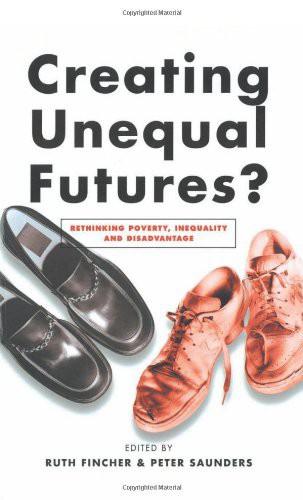
Creating Unequal Futures?: Rethinking Poverty, Inequality and Disadvantage
by
Ruth Fincher
and
Peter Saunders
Published 1 Jul 2001
The idea that government transfers are able to offset inequalities in the labour market is central to the current debate. It implies that Australia can ‘deregulate’ its labour market and yet not develop a working poor comparable to the United States (see especially the BCA 1999). How soundly based are these arguments? THE WORKING POOR AND LOW-WAGE HOUSEHOLDS Does Australia already have a ‘working poor’? In his overview of income poverty since the 1970s, Anthony King observed: Signs of the emergence of a group of working poor have been a repeated feature of recent poverty estimates and are in marked contrast to the situation in the early 1970s when employment was a virtual guarantee against poverty.
…
(King 1998, p. 100) Research by Buchanan and Watson (1997) and Eardley (1998) suggests that the working poor is still a minor presence in the economic landscape. It is, however, a group whose numbers are growing and whose presence could mushroom if extensive labour market deregulation were to occur. An important part of the argument favouring labour market deregulation relies on the distinction between the hourly wages paid to individuals and the income received by households. Low hourly wages, it can be argued, do not actually place a person among the working poor. Sue Richardson, for example, has argued: There are a number of reasons for being cautious about the presumption that low wages equate with low incomes.
…
Employers would simply substitute ‘subsidised’ workers (those on the lower pay) for ‘unsubsidised workers’. On the other hand, a large reduction in relative wages would lead to a major decline in living standards among the low-paid workforce and an increase in the size of the ‘working poor’ in Australia. In recognition of the problems of the ‘working poor’, the Five Economists have also suggested an earned income tax credit (EITC) scheme to compensate low-paid workers for their wage cuts. The American experience of the EITC suggests that earned tax credits are a successful response to the problem of welfare poverty traps and may warrant further examination (Ellwood 1999; Burtless 1998a and 1998b; Hout 1997).
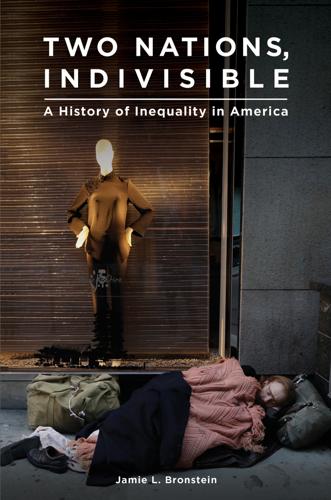
Two Nations, Indivisible: A History of Inequality in America: A History of Inequality in America
by
Jamie Bronstein
Published 29 Oct 2016
The new programs also offered insufficient support to people with mental illnesses and substance abuse problems that hampered their ability to get jobs.49 Clinton’s administration had greater success in addressing inequality caused by low wages. Americans had been distinguishing between the unworthy poor and the worthy, working poor since the era of the Great Society. During the Clinton administration some questioned the existence of the category “the working poor.” For example, the economist Bradley Schiller denied that people could work full time and still head poor families, showing little understanding that contingent workers are not in control of their schedules, yet often have to maintain open availability, and that one can work less than full time but still too many hours to have the sort of availability that permits a second job.50 Clinton’s administration combatted working poverty by expanding the Earned Income Tax Credit, acting on the premise that that no family with a fully employed household head should be living beneath the poverty line.51 The administration also managed to increase the minimum wage, although only through a bargain with Republicans that resulted in tax cuts for small businesses.52 Health care costs, and the costs of untreated illnesses, were major sources of inequality.
…
The New York Times in 2005 ran a series of articles on class, pointing out for its readership that, contrary to popular belief, the United States is not the most upwardly mobile country in the world.9 A number of recent books question the notion that deregulation, budget cuts to safety nets, free trade promotion, and privatization have promoted growth to benefit all.10 Despite its length and serious subject matter, economist Thomas Piketty’s Capital in the Twenty-First Century (2014) was widely read and reviewed. Historian Steven Fraser’s Age of Acquiescence (2015) compared the modern American public unfavorably with Americans in the late nineteenth and early twentieth centuries, who were not afraid to call out class warfare against the working poor when they saw it.11 Former Secretary of Labor Robert Reich’s documentary Inequality for All (2013) reached a wide audience, with an accessible message: the prosperity of the United States hinges on the middle class having an income to spend. After all, a multimillionaire can only drive one car at a time, wear one change of clothing at a time, sleep on one or two pillows at a time.
…
They traveled more than 2,000 miles before one of their leaders absconded with their entire treasury.112 Coxeyites in Oregon also attempted to steal a train; Attorney General Richard Olney foiled their plans by using federal troops to protect the trains because the transcontinental lines were in federal receivership.113 Coxey’s own Massillon, Ohio, contingent of only a few hundred protesters reached the nation’s capitol in May 1894, singing songs set to the tune of popular folk songs: There’s a deep and growing murmur Going up through all the land From millions who are suffering Beneath Oppression’s hand No charity, but justice Do the working poor demand And justice they will gain.114 While Attorney General Olney filed injunctions to keep Coxey’s Army from important buildings, these protests showed that, pushed far enough by inequality, the American poor could take direct action. Coxey himself lived until 1951, long enough to claim that his demands had been the basis for Roosevelt’s New Deal.
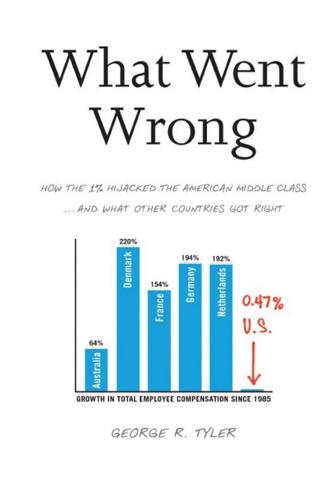
What Went Wrong: How the 1% Hijacked the American Middle Class . . . And What Other Countries Got Right
by
George R. Tyler
Published 15 Jul 2013
While performing identical tasks, they’re the ones wearing brown, not Nissan blue or gray. This downward spiral in wages has caused many reliable employees with solid job skills, but without college educations, to fall from the middle class to the ranks of the working poor. As labor economist Harley Shaiken at the University of California, Berkeley noted, family incomes for many now hover around the eligibility level for food stamps.19 Eroding wages has made this cohort of working poor enormous, as described by MIT economist Paul Osterman in August 2011: “Last year, one in five American adults worked in jobs that paid poverty-level wages. Worker displacement contributes to the problem.
…
While worksite relations have deteriorated, jobs offshored, and wages flattened for most employees, the most severely impacted may be the most vulnerable: Working poor men and women victimized by employers violating national wage and hour laws. An authoritative analysis of employer wage embezzlement was jointly conducted in 2009 by the University of California at Los Angeles, the Center for Urban Economic Development, and the National Employment Law Project. Their analysis focused on the working poor, that 20 percent of adults earning around the minimum wage. These employees tend to be the least assertive and informed and consequently more subject potentially to employer abuse.
…
Raising the minimum wage is also preferable to expanding the Earned Income Tax Credit (EITC), an income-based welfare benefit program targeted at the working poor. Funded from general revenues administered through the federal tax system, the EITC can be carefully targeted, making it a cost-effective favorite among economists. However, unlike the minimum wage, it does not incentivize employers to upskill. In addition, it has limited coverage, because the working poor must file tax returns to obtain benefits. Moreover, it’s bureaucratic and expensive to operate. Its complexity further reduces its effectiveness: there are 50 pages of instructions for single mothers and others to follow when filing for the tax benefit.51 Finally, like food stamps and other support received by the working poor, the EITC is an opaque taxpayer subsidy to low-wage employers whose balance sheets in many instances are far stronger than those of taxpayers.
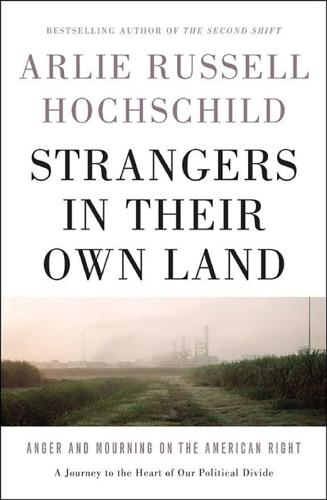
Strangers in Their Own Land: Anger and Mourning on the American Right
by
Arlie Russell Hochschild
Published 5 Sep 2016
Families are classified either as married-couple families or as those maintained by men or women without spouses present. Bureau of Labor Statistics, A Profile of the Working Poor, 2013 (Washington, D.C.: U.S. Department of Labor, 2015), http://www.bls.gov/opub/reports/cps/a-profile-of-the-working-poor-2013.pdf. For the racial composition of working-poor families, see Deborah Povich, Brandon Roberts, and Mark Mather, Low-Income Working Families: The Racial/Ethnic Divide (Working Poor Families Project and Population Reference Bureau, 2015), http://www.workingpoorfamilies.org/wp-content/uploads/2015/03/WPFP-2015-Report_Racial-Ethnic-Divide.pdf. 256the rest was payment for work According to the Congressional Budget Office, in 2011 (the latest available), households in the lowest quintile of income (adjusted for household size) received an average of $9,100 in government transfers (cash payments and in-kind benefits from social insurance and other government assistance programs from federal, state, and local governments); that amounts to about 37 percent of an average pre-tax income of $24,600.
…
PunditFact, January 28, 2015, http://www.politifact.com/punditfact/statements/2015/jan/28/terry-jeffrey/are-there-more-welfare-recipients-us-full-time-wor (based on Census and Bureau of Labor statistics). 256Medicaid or Children’s Health Insurance Program recipients Ken Jacobs, Ian Perry, and Jenifer MacGillvary, “The High Public Cost of Low Wages,” April 13, 2015, under section entitled, “The High Cost of Low Wages,” http://laborcenter.berkeley.edu/the-high-public-cost-of-low-wages. 256All Earned Income Tax Credit recipients work Jason Furman, Betsey Stevenson, and Jim Stock, “The 2014 Economic Report of the President,” March 10, 2014, https://www.whitehouse.gov/blog/2014/03/10/2014-economic-report-president. 256among homecare workers, 48 percent did so Jacobs, Perry, and MacGillvary, “The High Public Cost of Low Wages.” The Bureau of Labor Statistics produces a yearly “profile of the working poor.” In 2013, the BLS found that 5.1 million families in the United States were living below the poverty level, despite having at least one member in the labor force for half the year or more. The “working-poor rate”—the ratio of the working poor to all individuals in the labor force for at least twenty-seven weeks—was 7.7 percent for families (which the BLS defines as a group of two or more people residing together who are related by birth, marriage, or adoption).
…
Department of Labor, 2014 (accessed September 2, 2014). http://stats.bls.gov/ces/#data. _______. Mass Layoff Statistics [2012 data]. Washington, D.C.: Department of Labor, 2012 (accessed March 13, 2014). http://www.bls.gov/mls. _______. A Profile of the Working Poor, 2013. Washington, D.C.: U.S. Department of Labor, 2015. http://www.bls.gov/opub/reports/cps/a-profile-of-the-working-poor-2013.pdf. _______. “Quarterly Census of Employment and Wages [December 2014 estimates]” (accessed June 18, 2015). http://data.bls.gov/cgi-bin/dsrv?en. “Cancer Facts and Figures 2015.” American Cancer Society. http://www.cancer.org/acs/groups/content/@editorial/documents/document/acspc-044552.pdf.
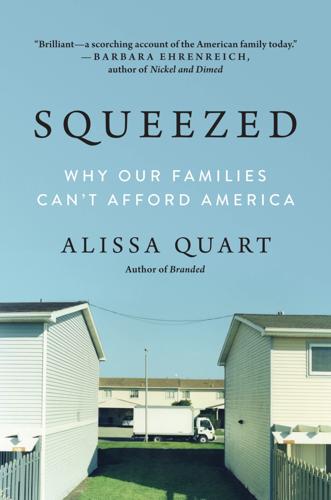
Squeezed: Why Our Families Can't Afford America
by
Alissa Quart
Published 25 Jun 2018
Still a Bernie Sanders supporter a year after the election, Bellamy bristled at the memory of the 2016 primaries. She was now researching her new book project, “Jyeshtha, the Hindu God of Misfortune.” Misfortune was indeed a subject that for her would seem apropos for our times. THERE ARE BOTH SMALL AND LARGE REMEDIES FOR THE PLIGHT OF the hyper-educated working poor—those earning around $36,000 a year, with kids, and just getting by, only a few false moves away from the poverty line. For underpaid and often desperate adjunct instructors, one particular remedy is what I think of as “unusual unions.” The last five years have seen a rise of atypical union members, like adjuncts, despite the downturn in labor membership overall.
…
Unlike those who must put their children in extreme day care and the day-care workers who overwork to serve them, Blanca was both the most squeezed of parents and day-care providers—so pressed that she had to leave her son for a decade back home, where he grew up without her. Now Blanca had to make another hard choice: whether to pay the price of getting her son back by replacing his middle-class life in Paraguay with becoming part of the working poor in America. This hasn’t always been the only choice: as the Columbia University historian Alice Kessler-Harris, author of Women Have Always Worked, tells it, at the turn of the last century and at different points in the twentieth century, America was indeed a land of opportunity. Immigration was always difficult, but it could be a pathway to success.
…
Guido’s life itself resembled a linear equation, with determinate factors and indeterminate ones, Y and X variables, like in math class. The good determinate factors were his inherent physical grace and the love of his mother and grandmother. The bad determinate factors were the language barrier and living in near poverty in a fractured family. And the indeterminate factor was luck. When working-poor New Yorkers like Blanca and Guido seek spots at the city’s more desirable schools, they often must compete with middle-class New Yorkers. The competition isn’t set up to be even. So many challenges face those who are knocking on the door. There is a persistent failure in urban schools to find bilingual communicators, even in the most diverse cities.
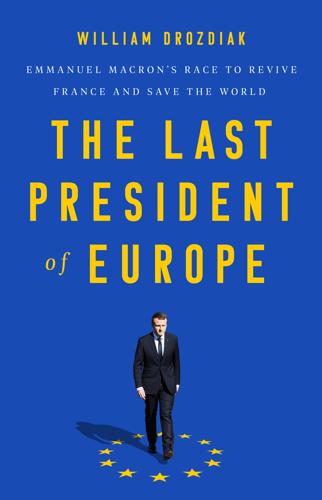
The Last President of Europe: Emmanuel Macron's Race to Revive France and Save the World
by
William Drozdiak
Published 27 Apr 2020
But for those earning an average income of 1,700 euros (about $2,000) per month, it has become harder to make ends meet with the rising cost of basic necessities like food, shelter, and transport. Over the past fifteen years, the tax burden on French citizens has grown by 25 billion euros ($28 billion) a year, with a disproportionate share borne by the working poor. By the time of the Yellow Vest movement, the steady erosion of purchasing power for lower-middle-class families over the past decade had evolved, almost unnoticed by the government, into a genuine social emergency. Although many protesters said that they approved of the government’s ambition to do something about climate change, they objected to carrying so much of the fiscal burden, particularly when cosmopolitan elites were spared onerous taxes for traveling in planes, which pollute more than cars do.
…
During an eight-day tour of World War I battlefields ahead of the centennial anniversary marking the armistice that ended one of history’s most hideous wars, Macron confronted many resentful citizens across France, who complained that he was too remote from their everyday lives and did not seem to care or understand the true nature of their hardships. They, like him, were frustrated that the fruits of his reform efforts were so slow in coming. Even Macron’s wealthiest supporters accused him of being tone-deaf to the problems of the working poor. François Pinault, whose business empire includes the Gucci fashion house, told the newspaper Le Monde that “Macron doesn’t understand the little people. I’m afraid he’s leading France toward a system that leaves the least favored behind.”9 Matthieu Pigasse, a prominent financier who heads the Lazard investment bank in France, told the business newspaper Les Echos that Macron needed to show more empathy for the lower classes.
…
The anger and frustration showed the depth of resentment in the rural areas that had not thrived in recent years. The growing divide between rich and poor—the richest 20 percent of French people, according to the World Bank, now earn nearly five times as much as the bottom 20 percent—makes a mockery of French pretensions of “liberty, equality and fraternity.” That yawning divide, in turn, heightens the working poor’s disillusionment with Macron, who took office on a cloud of euphoria amid hopes for a resurgence in economic growth that would lift up the entire nation. “The system is in crisis,” said French political scientist Dominique Reynié. “It’s the provinces against Paris, the proud and contemptuous capital.

Brave New World of Work
by
Ulrich Beck
Published 15 Jan 2000
For it increases the supply of flexible temporary labour and weakens the individual's position in the grey economy, resulting in a further loss of income. ‘If there are no mechanisms to limit cost-cutting competition among the suppliers of labour, a danger arises of self-reinforcing processes of impoverishment.’62 And this arises as a result of work. Work and poverty, which used to be mutually exclusive, are now combined in the shape of the working poor. Unemployment, non-work, grey work Unemployed people have a lot of time on their hands and are financially very insecure. But paradoxically, their receipt of unemployment benefit obliges them to do nothing. They might almost be compared to thirsty people who have to promise not to drink one drop of extra water, because they are officially given one glass a day to moisten their parched throat.
…
But this is a transition, and as long as it lasts it will be painful to many people – especially to men, who cannot get used to the fact that the rigid idea of a lifetime career opportunity will no longer mean much in the future.63 But the downward elevator effect into the world of job insecurity does not affect everyone equally. As in the past, it is true internationally that insecure and temporary forms of employment are increasing faster among women than among men. Women make up by far the larger part of the working poor, and for them in particular the systemic change that is opening up a grey area between work and non-work takes place as a descent into poverty. Nor does the growing number of men confronted with insecure and fragmented working lives result in any positive easing of the gender conflict. Indeed, in so far as the reign of the short term also undermines relations of partnership, love, marriage, parenthood and family, men suffer as much as women – and public life too dies out.
…
Leisure time is a foreign word, social life – ‘vacations’ – an endemic problem. Anyone who cannot be reached anytime and anywhere is running a risk. Such ‘individual responsibility’ lifts a burden from the public and corporate coffers and makes the individual the ‘architect of his or her own fortune’. The working poor. The jobs of ‘low-skilled’ and ‘unskilled’ workers are directly threatened by globalization. For they can be replaced either by automation or by the supply of labour from other countries. In the end, this group can keep its head above water only by entering into several employment situations at once.

When Work Disappears: The World of the New Urban Poor
by
William Julius Wilson
Published 1 Jan 1996
As I pointed out earlier, the most impoverished inner-city neighborhoods have experienced a decrease in the proportion of working- and middle-class families, thereby increasing the social isolation of the remaining residents in these neighborhoods from the more advantaged members of society. Data from the UPFLS reveal that the non-working poor in the inner city experience greater social isolation in this sense of the term than do the working poor. Nonworking poor black men and women “were consistently less likely to participate in local institutions and have mainstream friends [that is, friends who are working, have some college education, and are married] than people in other classes” and ethnic groups.
…
Graduated job ladders would provide rewards to workers who succeed on the job, “but wages would always be lower than [that which] an equally successful worker would receive in the private sector.” These wages would be supplemented with the expanded earned income tax credit and other wage supplements (including a federal child care subsidy in the form of a refundable income tax credit for the working poor and refundable state tax credits for the working poor). The Danziger and Gottschalk proposal obviously would not provide a comfortable standard of living for the workers forced to take public service jobs. Such jobs are minimal and are “offered as a safely net to poor persons who want to work but are left out of the private labor market.”
…
Drug abuse was cited as a major problem by as many as 86 percent of the adult residents in Oakland and 79 percent of those in Woodlawn. Although high-jobless neighborhoods also feature concentrated poverty, high rates of neighborhood poverty are less likely to trigger problems of social organization if the residents are working. This was the case in previous years when the working poor stood out in areas like Bronzeville. Today, the nonworking poor predominate in the highly segregated and impoverished neighborhoods. The rise of new poverty neighborhoods represents a movement away from what the historian Allan Spear has called an institutional ghetto—whose structure and activities parallel those of the larger society, as portrayed in Drake and Cayton’s description of Bronzeville—toward a jobless ghetto, which features a severe lack of basic opportunities and resources, and inadequate social controls.

The New Class War: Saving Democracy From the Metropolitan Elite
by
Michael Lind
Published 20 Feb 2020
The gap between richest and poorest in New York City is comparable to that of Swaziland; Los Angeles and Chicago are slightly more egalitarian, comparable to the Dominican Republic and El Salvador.4 Meanwhile, in the vast areas of low-density, low-rise residential and commercial zones around and among the hierarchical hubs, a radically different society has evolved. In the national heartlands, apart from expensive rural resort areas, there are fewer rich households and therefore fewer working poor employed by the rich as servants and luxury service providers. In the US and Europe, the population of the heartlands is much more likely to be native-born and white. But the heartlands are becoming more racially and ethnically diverse, making the familiar equation of “urban” and “nonwhite” anachronistic.
…
Heartland communities are more likely to be sensitive to the costs of environmental policies than hub city managers and professionals. What is more, the property-owning, working-class majorities of the heartlands are also likely to be more sensitive to environmental restrictions on what property owners can do with their property than the denizens of the hubs, where not only the working poor and the working class but also many professionals must rent because they cannot afford to own homes. And most working-class individuals in low-density regions rely on their personal cars or trucks for commuting, shopping, and recreation. The French yellow vest riots of the winter of 2018–19 illustrated the intersecting fault lines of class and place in environmental policy.
…
As split labor market theory would predict, the native working-class backlash has been greatest against particular groups of immigrants, nonwhite or white, who are viewed as competitors for jobs or welfare and public services. * * * — THE GEOGRAPHIC POLARIZATION that is evident in Western democracies, then, reflects the social divide among classes who live in different areas—college-educated overclasses and the disproportionately immigrant working poor in the high-density hubs and the mostly native, mostly white working classes in the low-density heartlands. Their differences over environmental policy, trade, immigration, and other issues reflect conflicting interests, values, lifestyles, and aspirations. Can today’s new class war, fought on all of these different fronts at once, give way to a new class peace?
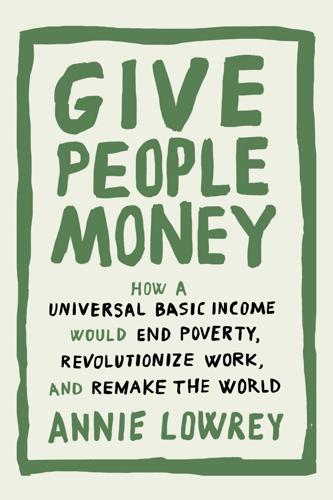
Give People Money
by
Annie Lowrey
Published 10 Jul 2018
Allegretto, Marc Doussard, Dave Graham-Squire, Ken Jacobs, Dan Thompson, and Jeremy Thompson, “Fast Food, Poverty Wages: The Public Cost of Low-Wage Jobs in the Fast-Food Industry” (University of Illinois at Urbana-Champaign and the UC Berkeley Labor Center, Oct. 15, 2013). 9.5 million people…remained below the poverty line: Center for Poverty Research, “Who Are the Working Poor in America?,” https://poverty.ucdavis.edu/faq/who-are-working-poor-america. the bottom half of earners: Thomas Piketty, Gabriel Zucman, and Emmanuel Saez, “Share of Income for the Top 1 and Bottom 50 percent of the Income Distribution,” raw data, World Wealth & Income Database, wid.world. The middle class is shrinking: Pew Research Center, “The American Middle Class Is Losing Ground: No Longer the Majority and Falling Behind Financially” (Washington, DC, Dec. 9, 2015).
…
Luis and Josefa talked about the pressure and the stress of their uncertain schedules, and the strain of knowing their children were growing up deprived. At the end of her shift at Raising Cane’s, climbing into Luis’s car, one of the Ortiz daughters told me that she often did not eat dinner. “The smell of the chicken fills me up,” she said. The working poor, the precariat, the left behind: this is modern-day America. We no longer have a jobs crisis, with the economy recovering to something like full employment a decade after the start of the Great Recession. But we do have a good-jobs crisis, a more permanent, festering problem that started more than a generation ago.
…
“Now that I have a basic income, I know my work has value. I know my time has value. I know I have value.” In Santens’s mind, a UBI is not a salve for a world of technological unemployment, or a powerful antipoverty measure, or a form of social dividend, or a way to boost the earnings of the working poor. Rather, it is all those things and more: a paradigmatic shift that would free people from having to do work that they did not want to do at all. A UBI would, in essence, lop off the bottom of the psychologist Abraham Maslow’s “hierarchy of needs,” where air, food, water, and shelter reside, with self-transcendence up at the other end.

Bikenomics: How Bicycling Can Save the Economy (Bicycle)
by
Elly Blue
Published 29 Nov 2014
National Housing Conference and Center for Housing Policy, “Losing Ground: Housing and Transportation Costs Outpacing Incomes,” 2012. 24 The working poor spend more on both housing and commuting; homeowners living in poverty spend on average 25% of their income on housing, compared with 15% among the non poor. Renters spend 32% of their income on housing, compared with 20% among the non-poor. Brookings Institute, “Commuting to opportunity: The working Poor and Commuting in the United States,” 2008 25 The first paved bike path in Oregon was privately funded, with local wheelmen kicking in $1 each to pave the road to The White House, a bar in southwest Portland.
…
In 2009, people at every income level spent more on transportation than they did on food.8 Among households that made under $70,000, nearly 20% of their annual spending went to transportation (though even with incentives that year to buy new cars, including the huge federal Cash for Clunkers9 program, people were clearly economizing—far less was spent overall than in the year before). And the working poor seemed to have it the worst that year—65% drove a car to work and reported spending between 8% and 9% of their income on gas alone.10 For further perspective, the poverty line in the U.S. in 2011 was calculated at $10,830 for a single person a year. This measure is based on the cost of food; a cost which has gone down over the last century even as other expenses, particularly transportation and housing, have gone up significantly.
…
Car ownership was seen as a path to employment, especially for low-income single mothers, and as a viable alternative to subsidizing public transportation. They made some good points. When you’re poor, you are often geographically isolated and lack good access to jobs. Transit systems in many cities don’t well serve the needs of the working poor, and most have cut back service even from where it was a decade ago. Low income people often resort to predatory loans in order to get a car. And there is a real correlation between employment and car ownership. In many cases, it’s the best of the bad options available. My sympathy for this case was dismantled piece by piece over the course of the morning.
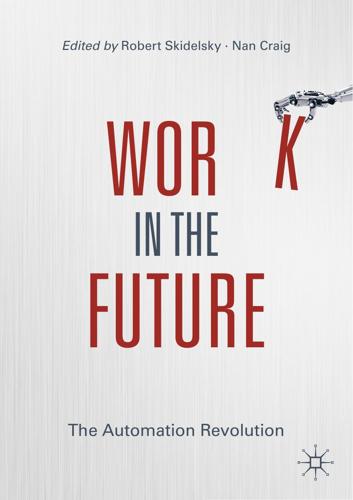
Work in the Future The Automation Revolution-Palgrave MacMillan (2019)
by
Robert Skidelsky Nan Craig
Published 15 Mar 2020
Are the French citizens, and French dissatisfied people, spoilt citizens that fear the end of welfare improvement, or is dissatisfaction mainly an issue of composition effects (Murphy and Topel 2016; INSEE 2017)? We should go further in the investigation of the paradox. The second point is dissatisfaction with pay and low confidence in the future. France’s choice has been to reject the ‘working poor’ model. The minimum wage is among the highest of OECD countries. Over the last 55 years, it has increased faster than the inflation rate and faster than the average wage over the last 20 years. France has indeed a fairly redistributive policy that lowers income inequality and manages to have a rather low share of people below the poverty line.
…
Yet, this generates dissatisfaction with pay, especially among those who invest in higher education and expect a good return from it (Artus 2017). The so-called talent drain in France builds on this unbalanced return on education and advancement. There is now also a growing concern about the momentum that the working poor model gains in France and about the costs of the fairly tight safety net used to buffer it. In fact, the polarisation of the labour market paves the way for a growing structural inequality. Jobs are concentrating at the two extremities: skilled and well-paid jobs in sophisticated sectors, and unskilled and/or deskilled low paid jobs in unsophisticated services.
…
When asked about how confident they are in their ability to keep their job over the coming months, the French are amongst the most likely to say they are not very confident. For sure, unemployment in France is high and has remained so for more than three decades, yet it mainly hits the low skilled to a greater extent than in the US or the UK, due to the rejection of the working poor model. At the same time, unemployment benefits and unemployment compensation duration in France are among the highest in Europe. The combination of strict employment protection laws and generous unemployment insurance has backed a strong insider/ outsider duality in the labour market, with strong discrepancies between permanent jobs and temporary fixed term contract jobs (OECD 2017).

Off the Books
by
Sudhir Alladi Venkatesh
That research culminated in a book, American Project: The Rise and Fall of a Modern American Ghetto, that documented everyday living conditions in these high-rises, which are now being demolished in the effort to deconcentrate poverty and revitalize inner cities. Along the way, I was hanging out in the working-poor communities surrounding the housing development. These streets were the epitome of the ghetto—-that fabled place in American culture that countless journalists have lamented, almost as many academics have analyzed, and more than a few politicians have promised to fix. These neighborhoods conformed to, but also showed the gross oversimplification of, our stereotypes about the ghetto.
…
Commercial corridors filled with low-income retail outlets—currency exchanges, liquor and "dollar" stores, fast-food chains—were slowly attracting the attention of real estate speculators who envisioned large shopping malls and who were resting their bets on rising incomes (or an influx of wealthier families). But in the early and mid nineties, much of Chicago's Southside was still primarily a working-poor black community. Families had been there for generations, living modestly and in a near-continuous state of economic vulnerability. I was drawn to a community of roughly ten square blocks in Chicago's Southside that I will call "Maquis Park" (most of the names for places and people in this book are pseudonyms).
…
However, as we have seen, the underground economy manages to touch all households, whether as a direct source of income, as a place to acquire cheap goods and services, or as a part of the public theater. Thus, it is not so easy to separate the innocent from the perpetrator. The same person who despises the gang's drug trading may depend on a member of the household to bring money into the home by fixing cars off the books. Fixing cars is not equivalent to dealing drugs, but as Chicago's working poor entered the year 2000, the gang's advances were making very blurry the lines that divided shady traders from one another. When good and bad have become very relative terms, how do you solve your problems? Since the early twentieth century, kids growing up in cities have been tempted to join their local street gang.
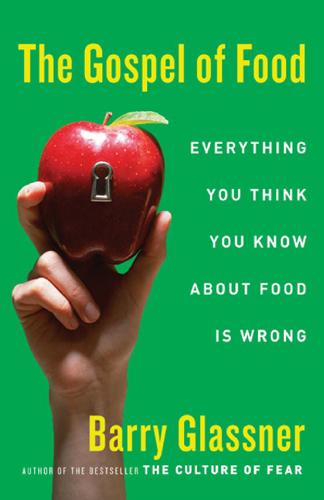
The Gospel of Food: Everything You Think You Know About Food Is Wrong
by
Barry Glassner
Published 15 Feb 2007
Mark Warbis, “Suit Says Albertson’s Forces Unpaid Work,” Associated Press, April 22, 1997; “Supermarket Strike Averted,” East Bay Business Times, January 24, 2005. 6. See also Egger, pp. 107–8; “A Profile of the Working Poor,” U.S. Bureau of Labor Statistics, March 2005. 7. Jianghong Liu, Adrian Raine, et al., “Malnutrition at Age 3 Years and Externalizing Behavior Problems at Ages 8, 11, and 17 Years,” American Journal of Psychiatry 161 (2004): 2005–13; David Shipler, The Working Poor (New York: Knopf, 2004), chap. 8; Irwin H. Rosenberg et al., “Statement on the Link Between Nutrition and Cognitive Development in Children,” Center on Hunger and Poverty, Brandeis University, 1998. 8.
…
Furthermore, he had acknowledged earlier in our interview that low-paid workers routinely show up in food lines. Many of the people America’s Second Harvest assists “have to make decisions between rent and food and medicine, or food and housing, or food and utilities,” Forney said. “Those are the decisions that working poor people have to make, and unfortunately, that means that we’re seeing a lot more people.” Each of the several leaders of hunger-relief agencies I consulted commented on the absurdity (immorality, some called it) of a wage system in which people who work forty or fifty hours a week cannot afford basic food and shelter for themselves and their children.
…
Cost information is from Kroc, p. 178; Burger King’s and McDonald’s Web sites; www.entrepreneur.com; and “McDonald’s Makes Franchising Sizzle,” BusinessWeek, June 15, 1968, pp. 102–3. 49. Talwar, chap. 8. 50. Talwar (quote is from p. 2). 51. Quote is from Talwar, p. 2. See also David Shipler, The Working Poor (New York: Knopf, 2004), p. 19. 52. Schlosser, Fast Food Nation, pp. 75–83, 265. 53. Recycling quote is from Donna Fenn, “Veggie-Burger Kings,” Inc. (November 2001): 44. 54. McDonald’s quote is from the company’s Web site; Anderson is quoted in Josef Woodard, “Her Private Happy Meal,” Los Angeles Times, January 27, 2002.
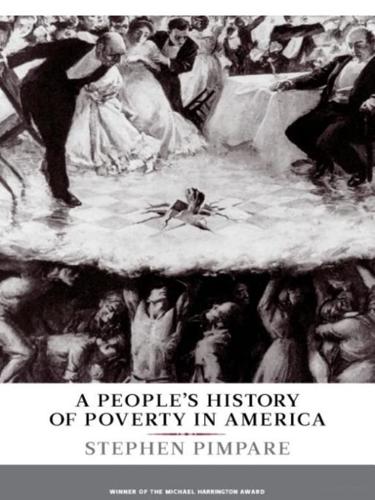
A People's History of Poverty in America
by
Stephen Pimpare
Published 11 Nov 2008
I have a family to support—I need a real job.16 One former welfare recipient, a Native American woman, said it this way: I want to give my kids someone to look up to. People should work if they can. I was embarrassed being on welfare. People think you’re lazy. I wanted to better my future. I don’t want to depend on my family. I’m an independent woman.17 But the desire for work does not necessarily translate into the ability to work: poor Americans often have less education and fewer skills, which limits their options to jobs with low pay, few benefits, and little security.18 Such jobs seldom pay enough to cover child care. Poor women are twice as likely as those with incomes above 200 percent of the poverty line to have health problems, and about half of all women on welfare report having poor physical or mental health (other studies suggest that about one in four women with experience of welfare had problems with their mental health).
…
There have to be some mothers in the neighborhood who are going to do this, or none of the mothers, even the ones who want to work, are going to be able to work.17 As Katherine Newman attests:It takes time to monitor public space. Mothers on welfare often shoulder the burden for working mothers who simply cannot be around enough to exercise vigilance. They provide an adult presence in the parks and on the sidewalks where it is most needed. Without these stay-at-home moms in the neighborhood, many a working-poor parent would have no choice but to force the kids to stay at home all day.18 This is the point that urbanist Jane Jacobs has made about the importance of a watchful eyes and mutual policing for a healthy, safe neighborhood. 19 And there’s this interesting observation by one journalist writing about recipients in Washington, D.C.
…
Official data will not get us far in evaluating or understanding the lived experience of poor Americans, which is why I have chosen not to privilege these measures in this book. Poverty over the Life Course There is another problem with most poverty data. Official rates are snapshots: they seek to count how many people are poor at any one point in time. But Americans move in and out of poverty over the course of their lives—the line between working, working poor, and poor can be very thin indeed. Many families are poor one year, not poor (at least officially so) the next, and then poor again the following year. One harsh winter, a fire, an epidemic or illness (cholera, smallpox, and yellow fever swept through the ghettoes in the past; today poor households face AIDS, diabetes, asthma, tuberculosis, or gun violence), divorce, the death or incarceration of the main breadwinner, an injury or disability, or the sudden loss of a job—these can push a family from just getting by into dire crisis.12 Thus, it would seem useful also to ask how many Americans are ever poor.

The New Division of Labor: How Computers Are Creating the Next Job Market
by
Frank Levy
and
Richard J. Murnane
Published 11 Apr 2004
Had the rest of the economy remained unchanged, the declining importance of blue-collar and clerical jobs might have resulted in the rising 4 CHAPTER 1 unemployment feared by the Ad Hoc Committee. But computers are Janus-faced, helping to create jobs even as they destroy jobs. As computers have helped channel economic growth, two quite different types of jobs have increased in number, jobs that pay very different wages. Jobs held by the working poor—janitors, cafeteria workers, security guards— have grown in relative importance.3 But the greater job growth has taken place in the upper part of the pay distribution—managers, doctors, lawyers, engineers, teachers, technicians. Three facts about these latter jobs stand out: they pay well, they require extensive skills, and most people in these jobs rely on computers to increase their productivity.
…
At any moment in time, the boundary 6 CHAPTER 1 marking human advantage over computers largely defines the area of useful human work.5 This boundary shifts as computer scientists expand what computers can do, but as we will see, it continues to move in the same direction, increasing the importance of expert thinking and complex communication as the domains of well-paid human work. What is true about today’s rising skill requirements will be even more true tomorrow. Who will have the skills to do the good jobs in an economy filled with computers? Those who do not will be at the bottom of an increasingly unequal income distribution—the working poor. The disappearance of clerical and blue-collar jobs from the lower middle of the pay distribution illustrates this pattern of limited job options. People with sufficient workplace skills can move from these jobs into one of the expanding sets of higher-wage jobs. People who lack the right skills drop down to compete for unskilled work at declining wages.
…
Smith used the term to describe the increased efficiency that came when a particular job—making a straight pin, in his example—was divided into a series of narrow tasks—making the heads of pins, making the stems, sharpening the points—with each task assigned to a specialized worker. 3. On the increase in the number of the working poor, see Barbara Ehrenreich, Nickel and Dimed: On (Not) Getting By in America (New York: Owl Books, 2001). 4. One of a limited number of exceptions was the mechanical calculator, which could perform basic arithmetic. 5. Strictly speaking, the determining factor is not humans’ absolute advantage but humans’ comparative advantage.

The Raging 2020s: Companies, Countries, People - and the Fight for Our Future
by
Alec Ross
Published 13 Sep 2021
researchers found that 40 percent of American households: Natasha Bach, “Millions of Americans Are One Missed Paycheck away from Poverty, Report Says,” Fortune, January 29, 2019, https://fortune.com/2019/01/29/americans-liquid-asset-poor-propserity-now-report/; “A Profile of the Working Poor, 2017,” US Bureau of Labor Statistics, April 2019, https://www.bls.gov/opub/reports/working-poor/2017/home.htm. Workers who received welfare payments: Henry Aaron, “The Social Safety Net: The Gaps That COVID-19 Spotlights,” Brookings Institution, June 23, 2020, https://www.brookings.edu/blog/up-front/2020/06/23/the-social-safety-net-the-gaps-that-covid-19-spotlights/.
…
These growing expenses disproportionately affect low-income families, who already spend a larger chunk of their earnings on basic necessities than wealthier households. In 2019, researchers found that 40 percent of American households were one paycheck away from falling into poverty. The figure rose to 57 percent for nonwhite families, and that was before COVID hit. Today, millions of Americans belong to the working poor, living right around the poverty line despite holding a job. Private benefits also only work when people have jobs. As unemployment soared in the early days of the COVID-19 pandemic, millions of people lost health coverage at the time they needed it most. As people filed for unemployment, food stamps, and other benefits, US government safety net programs became overwhelmed.
…
There were 234 strikes involving a thousand or more workers per year on average in the United States in the five years before the PATCO strike. In the five years after it, the number fell to 72. Over the course of the 2010s, the average was 15. Joseph McCartin, director of the Kalmanovitz Initiative for Labor and the Working Poor at Georgetown University, said without the ability to strike, unions lost all their leverage. “More and more, employers wanted strikes because they could use a strike to break the union or severely weaken it,” McCartin told me. “As workers lost the ability to engage in strikes, even when they were in unions, they didn’t have the power they used to have.

Global Financial Crisis
by
Noah Berlatsky
Published 19 Feb 2010
The crisis finds the Israeli society in worse shape than it was during the last recession, that of 2000–2003: currently about a quarter of Israeli citizens live below the official poverty line, among whom the percentage of minority groups, such as Israeli Arabs and Orthodox Jews, is extremely high. A large part of the Israeli poor population are defined as “working poor,” meaning people who are employed and yet do not earn a minimum living wage, a phenomenon which is usually regarded as a symptom of the crumbling of the middle classes. The Financial Crisis Will Hurt Israelis Despite the fact that many governments around the world, from Europe to Mexico, are intending to increase spending in order to combat the oncoming recession, the Israeli government has already declared that it will keep a balanced budget 122 Effects of the Global Financial Crisis on Wealthier Nations and that, to do so, further cuts in social spending will be necessary.
…
The center also suggests that while some nations in Latin America have pursued responsible economic policies, others such as Nicaragua and Venezuela have not and may now experience instability. Despite possible turmoil, speakers note, the region is much more politically stable overall than in the past. As you read, consider the following questions: 1. According to Rebeca Grynspan, how many working poor people are there likely to be in Latin America in 2009? 2. According to Arturo Porzecanski, which countries are part of the “responsible left and right”? 3. When was the last military coup in Latin America, according to Jorge I. Domínguez? Woodrow Wilson International Center for Scholars, “The Global Financial Crisis: Implications for Latin America,” A summary of an event hosted by the Latin American Program, Harvard University’s David Rockefeller Center for Latin American Studies and the Council of the Latin Americas/Americas Society at Woodrow Wilson International Center for Scholars on Febuary 5, 2009.
…
The middle class is also suffering, and a large population goes back and forth above and below the poverty line. The International Labour Organization estimates that the number of people living in “work poverty”—those active in the labor market but earning an income below the poverty line established by the World Bank—will rise from 6.8 percent in 2007 to 8.7 percent in 2009, constituting 7 million working poor. An additional 4 million people will lose their jobs in 2009 if growth rates, as projected, are only around 1 percent. Grynspan argued for a larger system of social protection to prevent huge reversals of the gains in reducing poverty in recent years. Programs should emphasize women and young people, who are twice as likely to be unemployed, while infrastructure investment should include small and community-based projects, not just largescale ones.
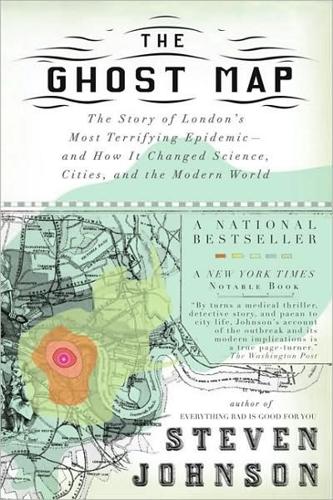
The Ghost Map: A Street, an Epidemic and the Hidden Power of Urban Networks.
by
Steven Johnson
Published 18 Oct 2006
(Unlike the typical new urbanist environment, however, Soho also had its share of industry: slaughterhouses, manufacturing plants, tripe boilers.) The neighborhood’s residents were poor, almost destitute, by the standards of today’s industrialized nations, though by Victorian standards they were a mix of the working poor and the entrepreneurial middle class. (By mud-lark standards, of course, they were loaded.) But Soho was something of an anomaly in the otherwise prosperous West End of the city: an island of working poverty and foul-smelling industry surrounded by the opulent townhouses of Mayfair and Kensington.
…
He had encountered the gossip that had been circulating in the past day, folk wisdom that would eventually find its way into the papers in the coming weeks: the residents of upper floors were dying at a more dramatic rate than those living on ground or parlor floors. There was a socioeconomic edge to this contention, one that reverses the traditional upstairs/downstairs division of labor: in Soho at the time, the bottom floors were more likely to be occupied by owners, with the upper floors rented out to the working poor. An increased death rate in the upper floors would suggest a fatal vulnerability in the constitution or sanitary habits of the poor. The notion, in its crude and haphazard way, was a version of Snow’s tale of two buildings in Horsleydown: put two groups of people in close proximity, and if one group turns out to be significantly more vulnerable than the other, then some additional variable must be at work.
…
Death was omnipresent, particularly for the working class. One study of mortality rates from 1842 had found that the average “gentleman” died at forty-five, while the average tradesman died in his mid-twenties. The laboring classes fared even worse: in Bethnal Green, the average life expectancy for the working poor was sixteen years. These numbers are so shockingly low because life was especially deadly for young children. The 1842 study found that 62 percent of all recorded deaths were of children under five. And yet despite this alarming mortality rate, the population was expanding at an extraordinary clip.
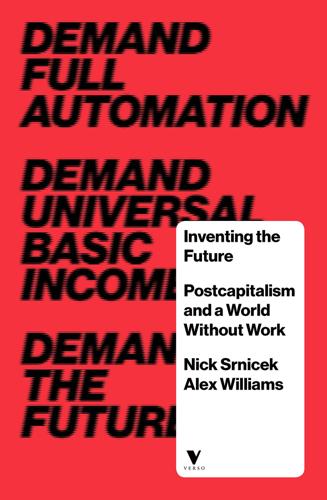
Inventing the Future: Postcapitalism and a World Without Work
by
Nick Srnicek
and
Alex Williams
Published 1 Oct 2015
Yet the language that framed the proposal maintained strict divisions between those who were working and those who were on welfare, despite the plan effacing such a distinction. The working poor ended up rejecting the plan out of a fear of being stigmatised as a welfare recipient. Racial biases reinforced this resistance, since welfare was seen as a black issue, and whites were loath to be associated with it. And the lack of a class identification between the working poor and unemployed – the surplus population – meant there was no social basis for a meaningful movement in favour of a basic income.125 Overcoming the work ethic will be equally central to any future attempts at building a post-work world.
…
William Julius Wilson, When Work Disappears: The World of the New Urban Poor (New York: Vintage Books, 1997), pp. 29–31. 34.Michael McIntyre, ‘Race, Surplus Population, and the Marxist Theory of Imperialism’, Antipode 43:5 (2011), p. 1500–2. 35.These draw broadly upon the divisions Marx drew between the floating/reserve army, latent and stagnant, but are here offered as an updating of his historical example. 36.Gary Fields, Working Hard, Working Poor: A Global Journey (New York: Oxford University Press, 2012), p. 46. 37.This is what Kalyan Sanyal describes as ‘need economies’. See Sanyal, Rethinking Capitalist Development. 38.The area of ‘vulnerable employment’ now accounts for 48 per cent of global employment – five times higher than pre-crisis levels.
…
, New Left Review II/84 (November–December 2013), p. 137. 101.Sukti Dasgupta and Ajit Singh, Manufacturing, Services and Premature Deindustrialization in Developing Countries: A Kaldorian Analysis, Working Paper Series, World Institute for Development Economics Research, 2006, at ideas.repec.org, p. 6; Breman, ‘Introduction’, p. 2; Fields, Working Hard, Working Poor, p. 58; Davis, Planet of Slums, p. 15. 102.Davis, Planet of Slums, p. 175; Breman, ‘Introduction’, pp. 3–8; George Ciccariello-Maher, We Created Chávez: A People’s History of the Venezuelan Revolution (Durham, NC: Duke University Press, 2013), Chapter 9. 103.Sassen, Expulsions, Chapter 2. 104.Sanyal, Rethinking Capitalist Development, p. 69. 105.Davis, Planet of Slums, pp. 181–2. 106.Rather than a 30–40 per cent manufacturing share of total employment, the numbers are closer to 15–20 per cent, and manufacturing now begins to decline as a share of GDP at per capita levels of around $3,000, rather than $10,000.
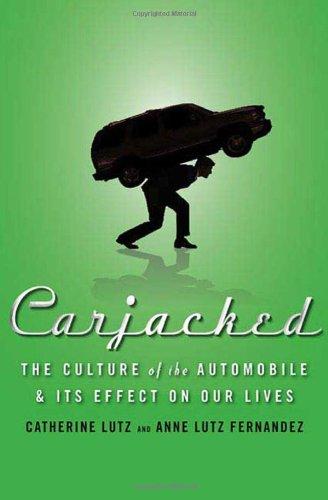
Carjacked: The Culture of the Automobile and Its Effect on Our Lives
by
Catherine Lutz
and
Anne Lutz Fernandez
Published 5 Jan 2010
While Crash’s Anthony is right—there remains a stigma to riding the bus in most cases—that shame could and should be transformed into pride in being environmentally responsible citizens. The ultimate goal should be to create more equality of opportunity without making additional car-dependence part of the solution. THE WORKING POOR: ONE PAYCHECK AWAY FROM CARLESS One step up from these poorest households cut off from jobs, health care, and reasonably priced goods are the working poor or near poor who, by 106 Carjacked rough estimate, include about 50 million Americans. These are individuals with low-wage jobs without benefits and families with two minimumor low-wage earners. The near poor are those who, as Katherine Newman, an expert on poverty and mobility, has said, are “one paycheck, one lost job, one divorce or one sick child away from falling below the poverty line.”7 They are one car repair or car crash away from poverty as well.
…
She gave her car to her sister. Things just got worse, though: the initial $50 ticket for the missing plate had swollen to $325. With the other fine, the new license and registration fees, it would have cost over $1,000 to get Amy back in a car, and that’s before even buying one. As with many of the working poor, a tax refund was the only thing that T H E C AT C H : T H E R I C H G E T R I C H E R 107 counted as savings, and she eventually had one large enough to show up in court that day. Amy should get a “going green” award for her use of public transit throughout that period (her husband, too: he carpooled with his boss or rode a bike to his job).
…
And of course, the company could repossess and resell the car if she missed a payment.11 Poor and working families are more likely to own older cars that guzzle gas and oil and have higher maintenance costs. Drive through any poor urban neighborhood in America and you will find a striking number of auto repair and body shops working on the old, unreliable cars that have “trickled down” to these neighborhoods. Behind these official shops are more informal but not always reliable networks: one working-poor Baltimore man, Dwayne, described his typical struggles with an older car. To afford the repairs his auto needed to get back on the road, he took it to the backyard garage of a neighbor with mechanic skills. Two weeks later, he was still badgering the neighbor to get to work on his car and scrambling for rides to work.
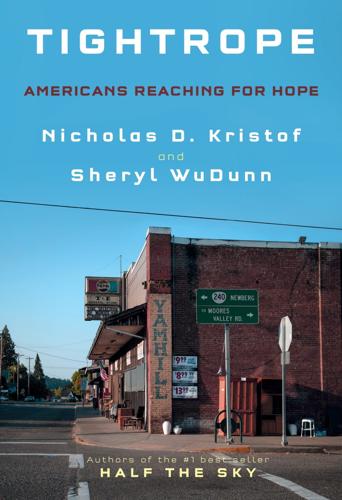
Tightrope: Americans Reaching for Hope
by
Nicholas D. Kristof
and
Sheryl Wudunn
Published 14 Jan 2020
The custodians in the buildings don’t have artful options like these to avoid paying taxes. Similarly, Amazon paid zero federal income tax in 2018 despite profits of $11.2 billion; indeed, it managed to get a $129 million “rebate” from taxes it didn’t pay. That’s an effective tax rate of negative 1 percent. Something is wrong with America’s tax structure when the working poor pay taxes so the federal government can make a payment to an e-commerce giant owned by the world’s richest man. Then there are the incentives for economic development awarded by states and local areas, often never made public. Oregon awarded Nike $2 billion for five hundred jobs, or $4 million per job.
…
The wealthy have also fought to underfund and defang the Internal Revenue Service, so it doesn’t have the resources to audit or fight dubious deductions. Only about 6 percent of tax returns of those with income of more than $1 million are audited, along with 0.7 percent of business tax returns. Meanwhile, there is one group that the IRS scrutinizes rigorously: the working poor with incomes below $20,000 a year who receive the Earned Income Tax Credit. More than one-third of all tax audits are focused on that group struggling to make ends meet, even as the agency cuts back on audits of the wealthy—while the top 5 percent of taxpayers account for more than half of all underreported income.
…
Friends in Yamhill often saw Trump as the outsider who would drain the swamp, bring back jobs in manufacturing and primary industries and restore a period when working-class lives were steadily getting better. Working-class voters are not uniformly conservative in their views. Polls show that they favor higher taxes on the rich, paid family leave and a higher minimum wage. But the working poor are disdainful of government benefits, even though they sometimes rely on them, partly because they often see firsthand how neighbors abuse those benefits; there’s far more anger at perceived welfare abuses than at larger subsidies for private jets. The resentment is more visceral when it is people around them who are bending rules and benefiting unfairly.
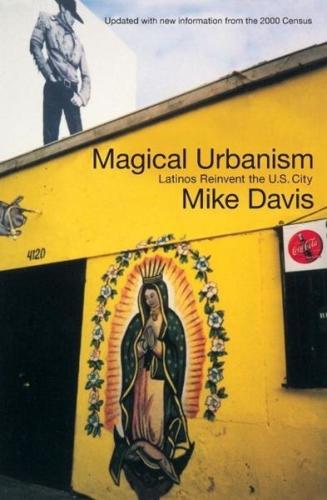
Magical Urbanism: Latinos Reinvent the US City
by
Mike Davis
Published 27 Aug 2001
The Latino educational crisis is rooted in a vicious family poverty and declining national school systems. leaving, based A commitment circle of to big city major study of the causes of Latino school- on interviews with 700 dropouts in San Antonio, EDUCATION GROUND ZERO 113 pointed to the "lack of bilingual and English as a Second Lan- guage programs, the concentration of Hispanics schools, lack of teacher preparation and panic students whole. can "^^^ testify, among in high-poverty low expectations teachers, administrators for His- and society as a In addition, as every inner-city high school counselor there are intense pressures on immigrants' teenage children (often the only citizens in the household) to supplement family incomes as soon as possible. Similarly, working poor pursue the child's classic many families of the strategy of subsidizing one education by sacrificing the schooling of others. Table 10 College Enrollment of 18- to 24- Year-Olds (Percent) Whites 1980 1990 20.8 35.9 Blacks 15.6 27.1 Asians 30.3 55.1 Latinos 14.2 22.9 Source: Marcelo Siles, Income Differentials in the Socio-Economic Development, JSRI US: Impact on Latino Working Paper No.
…
As Latinos begin to acquire majority power in the early 2000s (the retiring of the California Assembly Antonio Villaraigosa, Speaker already a de- is clared candidate for mayor), the scope for ameliorative politics will be largely defined by social investment decisions the 1980s and 1990s. Apart from jobs (and the force is made during service work- civil essentially frozen in place), the vital public resources for the working poor are education, healthcare and transit. In each instance, the future has been looted in advance. "Red Line" subway - one of the great public-works history - has devoured a generation's worth of Los Angeles's disasters in transit US investment while failing to build an extension to the Eastside and beggaring the bus system upon which most people of color depend.
…
Latinos out of told Fears, "We're "^^^ One can only hope power has become Dorn a suicidal is sincere. Locking course for African- Americans. By the same token, Latino retaliation - dispossessing Blacks of their political capital - simply works to the advantage of Giuliani and other enemies of the unity, working poor. Black and Latino however imperiled, remains the fulcrum of all progressive political change. Building Black-Latino unity is also the main challenge con- fronting Antonio Villaraigosa, the retiring left-Democrat Speaker of the California Assembly, as he prepares to run for mayor of Los Angeles in 2001.

A Framework for Understanding Poverty
by
Ruby K. Payne
Published 4 May 2012
Their circumstances demonstrate how the definition of poverty is relative to the situation." "The rise of the single-parent family has led to increased poverty among both adults and children." "Perhaps the most important factor in the increase of poverty during the 198os has been the steady decline in wage levels, so that we now have in America a group we call the working poor-people who do have jobs, who work hard, who try desperately to stay afloat as providers [for) families (sometimes men, sometimes women) but who earn such wretchedly low wages that they sink below the poverty line." Ibid. Seligman, Ben B. The Numbers of Poor. Penchef, Esther, Editor. Four Horsemen: Pollution, Poverty, Famine, Violence.
…
This inaccurate mental model is fed by media reports that favor soap operas to conceptual stories and individual stories to trends and the broader influences. The public hears about a fictitious "welfare queen" but not comprehensive studies. What is needed is a thorough understanding of the research on poverty. STUDYING POVERTY RESEARCH TO FURTHER INFORM THE WORK OF AHA! PROCESS David Shipler, author of The Working Poor, says that in the United States we are confused about the causes of poverty and, as a result, are confused about what to do about poverty (Shipler, 2004). In the interest of a quick analysis of the research on poverty, we have organized the studies into the following four clusters: ? Behaviors of the individual z Human and social capital in the community A Exploitation r Political/economic structures For the last four decades discourse on poverty has been dominated by proponents of two areas of research: those who hold that the true cause of poverty is the behaviors of individuals and those who hold that the true cause of poverty is political/economic structures.
…
The Fifth Discipline: The Art & Practice of The Learning Organization. New York, NY: Currency Doubleday. Sharron, Howard, & Coulter, Martha. (1996). Changing Children's Minds: Feuerstein's Revolution in the Teaching of Intelligence. Birmingham, England: Imaginative Minds. Shipler, David K. (2004). The Working Poor: Invisible in America. New York, NY: Alfred A. Knopf. Sowell, Thomas. (1998). Race, Culture and Equality. Forbes. October 5. Sowell, Thomas. (1997). Migrations and Cultures: A World View. New York, NY: HarperCollins. Taylor-Ide, Daniel, & Taylor, Carl, E. (2002). Just and Lasting Change: When Communities Own Their Futures.
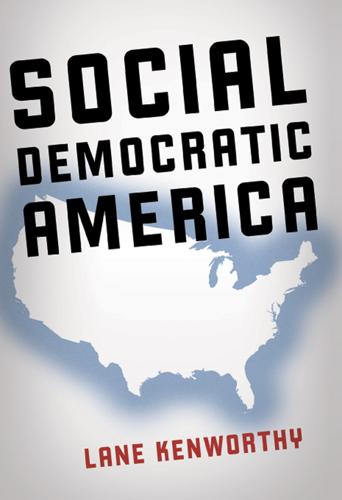
Social Democratic America
by
Lane Kenworthy
Published 3 Jan 2014
American Sociological Review 69: 613–635. Drutman, Lee. 2012. “Why Money Still Matters.” The Monkey Cage, November 14. Duncan, Greg J. and Jeanne Brooks-Gunn, eds. 1999. Consequences of Growing Up Poor. New York: Russell Sage Foundation. Duncan, Greg J., Aletha C. Huston, and Thomas S. Weisner. 2007. Higher Ground: New Hope for the Working Poor and Their Children. New York: Russell Sage Foundation. Duncan, Greg J. and Richard J. Murnane, eds. 2011. Whither Opportunity? Rising Inequality, Schools, and Children’s Life Chances. New York: Russell Sage Foundation and Spencer Foundation. Duncan, Greg J., Kathleen M. Ziol-Guest, and Ariel Kalil. 2010.
…
“Wage Subsidies for the Disadvantaged.” Pp. 21–53 in Generating Jobs: How to Increase Demand for Less-Skilled Workers. Edited by Richard B. Freeman and Peter Gottschalk. New York: Russell Sage Foundation. Kaus, Mickey. 1992. The End of Equality. New York: Basic Books. Kemmerling, Achim. 2009. Taxing the Working Poor. Cheltenham, UK: Edward Elgar. Kenworthy, Lane. 1995. In Search of National Economic Success. Thousand Oaks, CA: Sage. ———. 2004. Egalitarian Capitalism. New York: Russell Sage Foundation. ———. 2006. “Institutional Coherence and Macroeconomic Performance.” Socio-Economic Review 4: 69–91. ———. 2008a.
…
America’s Misunderstood Welfare State. New York: Basic Books. Marx, Ive, Lina Salanauskaite, and Gerlinde Verbist. 2012. “The Paradox of Redistribution Revisited.” Unpublished paper. Marx, Ive and Gerlinde Verbist. 2008. “Combating In-Work Poverty in Europe: the Policy Options Assessed.” Pp. 273–292 in The Working Poor in Europe. Edited by Hans-Jürgen Andreß and Henning Lohmann. Cheltenham, UK: Edward Elgar. Mayer, Susan E. 1999. What Money Can’t Buy. Cambridge, MA: Harvard University Press. Mayer, Susan E. and Christopher Jencks. 1993. “Recent Trends in Economic Inequality in the United States: Income versus Expenditures versus Material Well-being.”

Age of the City: Why Our Future Will Be Won or Lost Together
by
Ian Goldin
and
Tom Lee-Devlin
Published 21 Jun 2023
As a pioneering industrial city, Manchester experienced stark inequalities, but a similar story can be found across other industrializing metropolises of that era. Charles Dickens famously brought the plight of London’s working poor to life in novels like David Copperfield and Oliver Twist. In the US, the inhumane working conditions and unsanitary practices of Chicago’s meatpacking district, known as the Union Stock Yards, were brought to the public’s awareness by Upton Sinclair’s fictionalized 1906 account The Jungle. Of Chicago’s working poor, Sinclair wrote: ‘They are penned up in filthy houses and left to rot and stew in misery, and the conditions of their life make them ill faster than all the doctors in the world could heal them.’9 As industrialization led to the mass migration of the poor from the countryside, it profoundly altered the structure of cities.
…
By one estimate, such cellar dwellings contained 12 per cent of the city’s population in 1835.6 Another notable traveller to Manchester around the same time was Friedrich Engels, who in 1842 went to work at the headquarters of his family’s textile company. In his 1845 book The Condition of the Working Classes in England, Engels described how the working poor of Manchester lived ‘in wretched, damp, filthy cottages’ in which ‘no cleanliness, no convenience, and consequently no comfortable family life is possible’.7 Originally sent by his family in an attempt to cure him of his radical political views, his experience had the opposite effect. Engels’ experience of Manchester forged him into one of the most ardent critics of early capitalism.
…
Perhaps the most powerful mechanism for reducing disparities in educational outcomes within cities is to tackle the challenge of affordable housing, which prevents poorer families from accessing better schools in wealthier neighbourhoods. In the early decades of the twentieth century, as public concern continued to grow over the quality of life for the working poor in overcrowded and ramshackle inner city housing, many rich countries began major efforts to clear such areas and replace them with social housing, a process that accelerated in the aftermath of the Second World War. Britain was a particularly enthusiastic adopter, building over four million social houses between the end of the war and the start of the 1980s.43 Such initiatives were not without their critics.
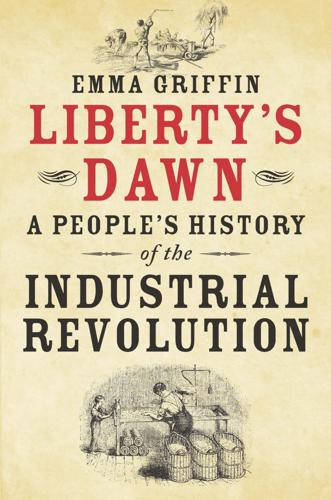
Liberty's Dawn: A People's History of the Industrial Revolution
by
Emma Griffin
Published 10 Jun 2013
Here is a collection of personal stories freely narrated by the ordinary men and women we wish to understand and it is worth emphasising the rarity of historical testimony of this kind. For all their shortcomings, the autobiographies offer the best way – indeed the only way – to examine the lives of working people during a critical epoch in world history. In looking at the encounter between industrialisation and the working poor, this book takes up a theme – that the industrial revolution degraded and exploited workers – that has exercised writers and thinkers since the first quarter of the nineteenth century. Not that there was anything new about poverty and exploitation. Toiling away for scant reward had been the lot of mankind since the dawn of time.
…
Until at least 1850, 4017.indd 54 25/01/13 8:21 PM m e n at w o r k 55 many of those who stayed faced an ongoing struggle to make ends meet: low wages, insufficient work, and positions or masters that they disliked yet could not leave. It is time to end this chapter; but this, perhaps, is where any attempt to understand the impact of the industrial revolution on the working poor ought to begin. Since the moment when commentators recognised that Britain was undergoing an irrevocable transformation, informed opinion has betrayed an unshakeable uneasiness that those at the bottom did not share equally in the advantages. Running like a thread through more than a century of historical analysis is the belief that the ordinary worker enjoyed a healthier, simpler and less frenetic life before the smoke and steam of the industrial revolution.
…
Their hasty marriage reveals the unspoken values and expectations that guided and governed the behaviour of the labouring poor. Looking at the processes by which working people went from ‘walking out’ to walking down the aisle illuminates aspects of working-class culture that are usually hidden from view.2 It would be difficult to exaggerate the place of matchmaking, wooing, and walking out in the lives of the working poor. Some of the autobiographers admitted to spending much of their early adulthood falling in and out of love, making and breaking vows of fidelity, and generally devoting the best part of their attention to matters of the heart. Undoubtedly, emotional attachments and sexual intrigue brought interest and excitement to lives characterised above all by long hours of hard work.

The Technology Trap: Capital, Labor, and Power in the Age of Automation
by
Carl Benedikt Frey
Published 17 Jun 2019
One reason that it is an evil is because energy, independence, industry, and self-reliance are undermined by it.”14 Why didn’t the working poor demand more redistribution? One reason is that the early democratization of America came with its own set of problems. In the succeeding decades, the party system that emerged had to gather support from a new group of poor and uneducated voters. The promise of a job or other personal favors turned out to be the most effective way of mobilizing them. Clientelism soon became widespread at virtually every level of government. The lucrative short-term benefits offered to the working poor meant that their long-term interests suffered. Because ordinary citizens got individual favors in return for political participation, it proved much harder to recruit them into the kind of working-class or socialist parties that popped up in Europe, where people demanded more redistribution, universal health care, and so on.15 Both the Republican and Democratic Parties gained support from working-class Americans by offering short-term benefits rather than long-term policy involvement.
…
.… The English middle classes prefer to ignore the distress of the workers and this is particularly true of the industrialists, who grow rich on the misery of the mass of wage earners.”2 The attitudes of laborers and the “middle sort” toward technological progress differed greatly.3 As David Landes writes, the middle and upper classes were convinced that they were living in the best of all possible worlds. To them, technology was a new revelation, and the factory system provided the evidence to justify their new religion of progress. But the working poor, “especially those groups by-passed or squeezed by machine industry … were undoubtedly of another mind.”4 While industrialists marveled at the rise of machines, workers often resisted their introduction and expressed their fear of unemployment in verses like the following one: Mechanics and poor labourers Are wandering up and down There is nothing now but poverty In country and in town; Machinery and steam power has The poor man’s hopes destroyed, Then pray behold the numbers of The suffering unemployed.5 The laboring poor surely had much to complain about.
…
Together with Autor, in their pioneering 2004 book, The New Division of Labor, Frank Levy and Richard Murnane, two economists at the Massachusetts Institute of Technology, were among the first to note this pattern: As computers have helped channel economic growth, two quite different types of jobs have increased in number, jobs that pay very different wages. Jobs held by the working poor—janitors, cafeteria workers, security guards—have grown in relative importance. But the greater job growth has taken place in the upper part of the pay distribution—managers, doctors, lawyers, engineers, teachers, technicians. Three facts about these latter jobs stand out: they pay well, they require extensive skills, and most people in these jobs rely on computers to increase their productivity.
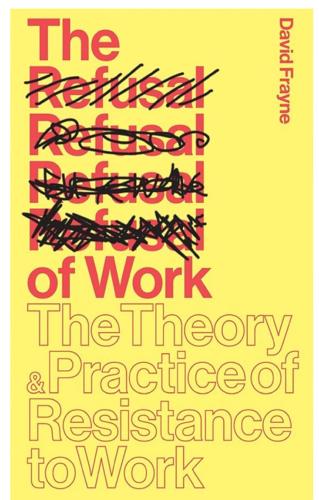
The Refusal of Work: The Theory and Practice of Resistance to Work
by
David Frayne
Published 15 Nov 2015
Significant numbers of people are also facing poverty because they are underemployed, seeking full-time work but only able to find part-time jobs. The 2013 JRF report estimated that, shortly before its publication, 1.4 million UK citizens were in this category (MacInnes et al, 2013). The working poor form a significant but largely overlooked proportion of the population in supposedly affluent societies, their experiences proving that work is not always a ticket out of poverty. Many of the working poor are employed through agencies or on a temporary basis, and may be insufficiently protected by employment legislation or trade unions. These workers are therefore likely to be excluded from the benefits of permanent employment contracts, such as paid holidays or sick leave.
…
On top of this, the failure of the labour market to deliver an adequate supply of decent jobs to those who want them is producing all manner of new travesties. The high demand for jobs seriously weakens the power and inclinations of workers to stand up for issues like pay, rights, and job quality. In recent times, we have witnessed the relatively unmitigated rise of the working poor,7 and the zero-hours contract.8 For those attempting to insulate themselves from the shifting currents of the labour market by investing in education, the old guarantee that educational credentials ensure a future of secure, well-paid and interesting work is also being eroded. An extensive analysis by Philip Brown and colleagues suggests that a combination of factors – the rapid expansion of higher education, the globalisation of job competition, and the deskilling of work – are leading huge numbers of graduates into an ‘opportunity trap’, as they fail to find a home for their specialised skills in the labour market (Brown et al., 2011).9 Even if economic growth could manage to keep pace with the demand for jobs, what would be the environmental costs of continuing expansion?
…
, 71 Williams, Pharrell, ‘Happy’, 71 women, 206; claimed possibility of liberation through work, 115; double shift working by, 230; right to work, 22 work: as aesthetic creation, 18; as main centre of social life, 14; as means of income distribution, 225; as moral test, 192–9; as playlike activity, 31; as route to personal development, 98; as source of gratification, 30; as source of sociality, 137; as unreliable source of income, rights and security, 43, 46, 93; beginning of, 23–9; central in parliamentary politics, 15–16; compression and control in, 12–13; concept of, 9; critique of, 21, 23, 105–6 (in Marx, 32); definition of term, 17–22; disdained as symbol of necessity, 23; end of, 29–35; enjoyment and achievement in, 22; ethical status of, 2; future of, 41, 43; hidden expenses of, 178; in traditional society, 24; maldistribution of, 229; marks passage to adulthood, 14; morally loaded term, 18; perceived ethical superiority of, 5, 25; producing to consume, 179; re-evaluation of, 46, 105, 116; reinventing of term, 233; related to realm of necessity, 32; ritualistic quality of, 26; seen as a medicine, 105–17; spiritual costs of, 45, 48; term used in artistic circles, 18; transformed into source of pleasure, 31 see also domestic work; resistance to work; true work; and work dogma work and worklessness, inquiry into, 228 Work Capability Assessment (WCA), 104, 152, 153 work dogma, 1-–10, 190; dismantling of, 222, 227–37; re-evaluation of, 94; research intervention into, 231–2; resistance to, 230 work ethic, 5, 9, 23–9, 34, 80, 96, 98, 111, 113, 123, 124, 191, 233; fortification of, 102; reinforced in sociology, 106; rejection of, 154; resistance to, 97, 114, 207 work experience, gaining of, 136 work-centred ambitions, lack of, 196 work-centred nature of society, 14–17, 29, 41, 112, 117, 122, 209, 232; moving away from, 234; research into, 97; strains of, 229 work–life balance, 3, 5, 16, 68, 115, 217–18; a depoliticising notion, 219 worker-consumers, 92 workfare policies, 105 working conditions see conditions of work working for ourselves, 19–20, 185 working hours, 5; in the USA, 83; length of, 139; reduction of, 32, 36–7, 38, 82, 95, 117, 131, 155, 178, 220, 222, 226 (in Sweden, 224; without loss of income, 225); statistics for, 68 working less, 7, 29, 31, 37, 124, 187, 211; obstacles to, 117 working poor, 42 working tax credits, 101 working time, 14, 82–3; reduction of, 33, 223 worthwhile ethic, 233–4 writing, pleasure of, 194–5 X Xbox One console, 172–3, 177 Y yuppie lifestyle, disillusionment of, 114 Z Zawadzki, Bohan, 204 zero-hours contracts, 42
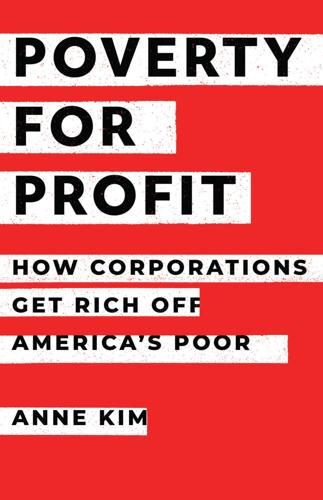
Poverty for Profit
by
Anne Kim
Long, son of legendary Louisiana governor and U.S. senator Huey Long (whose life inspired the book and the movie All the King’s Men).43 First elected to the Senate in 1948, days shy of his thirtieth birthday, Russell Long eventually rose to the chairmanship of the powerful Senate Finance Committee, which he ruled from 1965 to 1981.44 From that perch, he exercised such profound influence over the nation’s tax laws that the Wall Street Journal reportedly dubbed him “the fourth branch of government.”45 That legacy would come to include the EITC, which Long framed as “tax relief” for the working poor.46 What Long originally proposed, in 1972, was a “work bonus” equal to 10 percent of wages for low-income workers earning less than $4,000 per year. Speaking on the floor of the Senate, Long described the idea as a “dignified way to provide help to a low-income working person, whereby the more he works the more he gets.” And, he added, “this way will benefit many working poor, many of whom are not on public welfare, and many of whom we hope will not be.”47 By then, welfare reform was already in the crosshairs of conservative policymakers, including President Richard M.
…
Public opinion polls find nearly universal approval for providing welfare recipients with job training, education, and child care.39 The strength of this support enabled Clinton not only to expand the EITC, but also to increase child-care funding for low-income workers by $4 billion and to expand Medicaid coverage to working-poor families.40 Clinton also persuaded Congress to grant $100 million in new transportation funding (to improve transit access to jobs) and to create the Welfare-to-Work tax credit for employers who hired welfare recipients.41 The insistence on work, however, has also fed the notion that poverty is the consequence of personal “choices” versus the outcome of structural inequities that limit people’s potential, regardless of the decisions they make.
…
For useful background, see “The High Cost of Refund Anticipation Loans and Checks,” Michigan Legal Help, accessed November 6, 2023, https://michiganlegalhelp.org/self-help-tools/income-tax/high-cost-of-refund-anticipation-loans-and-checks#refund-anticipation-checks—pre-paid-cards. 80. Chi Chi Wu, Jean Ann Fox and Elizabeth Renuart, Tax Preparers Peddle High Priced Tax Refund Loans: Millions Skimmed from the Working Poor and the U.S. Treasury (Washington, D.C.: National Consumer Law Center and Consumer Federation of America, 2002). 81. Ibid. 82. “Tax Refund Advance Loans,” Jackson Hewitt, accessed December 15, 2021, https://www.jacksonhewitt.com/refund-advance/. 83. “H&R Emerald Advance,” H&R Block, accessed November 6, 2023, https://www.hrblock.com/financial-services/emerald-advanced-lending-credit/. 84.
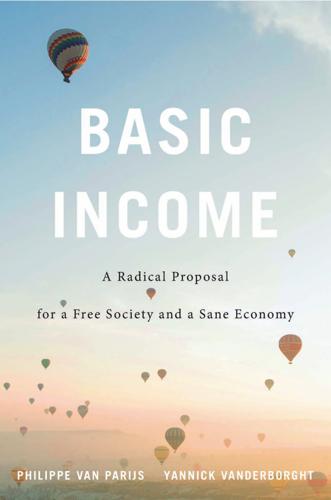
Basic Income: A Radical Proposal for a Free Society and a Sane Economy
by
Philippe van Parijs
and
Yannick Vanderborght
Published 20 Mar 2017
Many claimants did not want to run the risk of owing money back at the end of the fiscal year.27 The advantage universal schemes possess in this reÂ�spect over means-Â�tested guaranteed income schemes easily generalizes to the comparison with refundable credit schemes targeted at workers with low earnings. Yet the main difference between a basic income or negative income tax and the EITC is obviously that the latter focuses exclusively on the working poor. This is no doubt why it enjoys a wider appeal than means-Â�tested public assistance. The operation of such schemes, as Jennifer Sykes and her colleagues put it, “shows that government programs aimed at assisting families do not need to be universal to avoid stigma, as long as they are associated with beÂ�havÂ�iors most Americans condone, such as work.”28 This key difference explains, for example, why the EITC has benefited from bipartisan support in the United States, and seems to remain one of the least controversial components of the American welfare state.
…
Similarly, in Germany, where negative income tax proposals have been made from the right and the left since the 1970s (Engels, Mitschke and Starkloff 1973, Mitschke 1985, Scharpf 1993, 1994), the structure in place since the 2005 “Hartz IV” reform (see chapter 7) is also one that facilitates the combination of benefits and low earnings, with a strengthened willingness-Â�to-Â�work test. About half of the 297 NO TES TO PAGES 163–165 recipients of the means-Â�tested minimum-Â�income scheme [Arbeitslosengeld IIâ•›] are “working poor.” 77. Â�Meade (1989: 37) argues that it is impossible to achieve an adequate social dividend with a proportional tax “simply Â�because the marginal rates of tax on increased earnings and profits combined with the assurance of the substantial unconditional income represented by the social dividend introduced an unacceptably large general disincentive for enterprising work and investment.”
…
American Economic Review 74(3): 433–444. Shaviro, Daniel. 1997. “The Minimum Wage, the Earned Income Tax Credit, and Optimal Subsidy Policy.” The University of Chicago Law Review 64(2): 405–481. Sheahen, Allan. 2012. Basic Income Guarantee: Your Right to Economic Security. New York: Palgrave Macmillan. Shipler, David K. 2004. The Working Poor: Invisible in AmerÂ�iÂ�ca. New York: Vintage Books. Shirky, Ckay. 2008. Â�Here Comes EveryÂ�body: The Power of OrganÂ�izing without OrganÂ�izations. New York: Penguin Books. Shulevitz, Judith. 2016. “It’s Payback Time for Â�Women.” New York Times, January 8. Simon, Herbert A. 1998. “Letter to BIEN on the Flat Tax and Our Common Patrimony.”
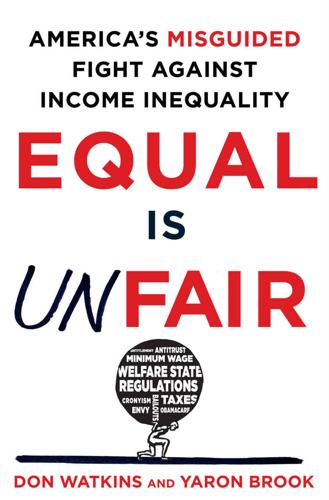
Equal Is Unfair: America's Misguided Fight Against Income Inequality
by
Don Watkins
and
Yaron Brook
Published 28 Mar 2016
Anti-poverty programs haven’t just been unsuccessful at leading more poor people to join the labor force—they’ve encouraged many to stay out of the labor force. We’ll look at the data in a moment, but it’s worth noting that this is a view shared by a lot of low-income workers. In her study of Harlem’s working poor, No Shame in My Game, Princeton sociologist Katherine S. Newman quotes several fast-food workers who believe that welfare undermines the work ethic. Here’s one young worker, Ianna: I’m not knocking welfare, but I know people that are on it that can get up and work. There’s nothing wrong with them.
…
,” Career Bear, April 17, 2012, http://careerbear.com/plumber/article/how-much-do-plumbers-make (accessed May 20, 2015). 39. Katherine S. Newman. Interview by Russ Roberts, “Newman on Low-Wage Workers,” EconTalk, March 8, 2010, http://www.econtalk.org/archives/2010/03/newman_on_low-w.html (accessed May 20, 2015). 40. Katherine S. Newman, No Shame in My Game: The Working Poor in the Inner City (New York: Vintage, 2000), chapter 5. 41. Jason DeParle, American Dream (New York: Penguin, 2004), p. 79. 42. Miles Corwin, And Still We Rise (New York: Harper Perennial, 2001), pp. 36–37. 43. What explains the decline of opportunity-nurturing values is a difficult question.
…
Elias Isquith, “Paul Ryan’s ‘Blame the Victim’ Disease: How He Epitomizes a Horrible New Consensus,” Salon.com, July 26, 2014, http://www.salon.com/2014/07/26/paul_ryans_blame_the_victim_disease_how_he_epitomizes_a_horrible_new_consensus/ (accessed April 28, 2015). 47. Interview with Don Watkins, May 2015. 48. Newman, No Shame in My Game: The Working Poor in the Inner City, chapter 4. 49. Liam Murphy and Thomas Nagel, The Myth of Ownership (New York: Oxford University Press, 2002), p. 120. 50. Richard Wilkinson and Kate Pickett, The Spirit Level (New York: Bloomsbury Press, 2009), p. 157. 51. Quoted in Joe Gelonesi, “Is Having a Loving Family an Unfair Advantage?
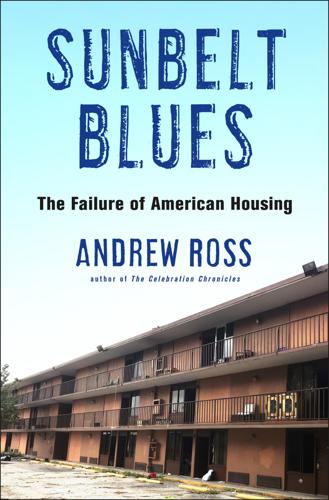
Sunbelt Blues: The Failure of American Housing
by
Andrew Ross
Published 25 Oct 2021
The small proprietors on 192 went into the hospitality business to service nightly guests and ended up as reluctant landlords, hosting long-term residents whose rights as tenants are unclear. It is by no means a wholly local predicament. Despite their original aspirations, moteliers across the country have become providers of affordable housing for the working poor and are unofficially joining the ranks of small landlords, who own almost half of the rental buildings in the US. The housing crisis has presented an opportunity for them to generate steady income from a new supply of customers. But the responsibilities of landlordship are quite different from the task of catering to nightly guests.
…
Notably, Orange County’s hotel industry is dominated by large corporate owners with substantial influence over officials. Osceola’s mom-and-pop owners have less political leverage. And the interpretation of the law adopted by the Osceola sheriff aligns with the county’s economic priorities. The motels have become a convenient way of warehousing the working poor with just enough income to stay off the streets and out of the woods. After all, the visibly homeless population who panhandle on 192 or who rest or sleep on its benches and sidewalks are considered a grave threat to the county’s economic backbone: the tourist industry. In the absence of alternatives, motels across the United States have become an all-purpose solution, serving at one and the same time as welfare housing, workforce housing, and transitional housing.
…
Laugh Floor Montana Moore, Charles Moore-Willson, Minnie moratorium Morgan Stanley Mormon Church mortgage moteliers motel landlord “motel-Patel” motels as affordable housing option association criminal activity in designated as extended stay designed to meet customer needs evictions families living together in as low-income housing projects motorists in occupancy rates public health self-perception among motel dwellers as warehousing for working poor Mulligan’s Murrin, Greg and Linda Nana, KJ Nashville, Tennessee National Association of Real Estate Brokers National Association of Realtors National Homes Guarantee National Low Income Housing Coalition National Old Trails Road National Press Photographers Association Negrin, Metin NeoCity Ñeta Association Netflix Netherlands Nevada New 21st Century Public Housing Vision New England “new homeless” See also homeless New Jersey New Mexico New Urbanism New York New York City New Yorker Ninth Circuit Ninth Congressional District “nontransient occupancy” nonurban housing crisis See also housing North Carolina Northeast District Northeast Oregon Northern Virginia North Florida North Ranch Ocasio-Cortez, Alexandria Occidental College Oconee Creek offenders Ohio Oklahoma Old Town One Stop Housing Opalka, Jesse opioid crisis Orange Blossom Family Health Orange County, Florida Orange County Housing Trust, California Oregon Organize Florida Orlando, Florida Orlando-Kissimmee tourism corridor Orlando Sentinel Osceola County, Florida commercial to industrial land use Comprehensive Plan evictions fair market rent higher-wage employment household incomes housing problems jobless rate low-income housing projects motel owners owners’ right to evict Parkway planners tax collector tourist attractions urban grown boundary (UGB) vacation homes Osceola County Ninth Circuit Court owners business condo corporate mom-and-pop motel multiunit second-home stores and restaurants ownership shift Oxy Express Oyo Hotels and Homes Palm Beach County, Florida Palm Motel pandemic.

How the Other Half Banks: Exclusion, Exploitation, and the Threat to Democracy
by
Mehrsa Baradaran
Published 5 Oct 2015
The savings bank would not cure poverty, but it would give the poor a place to build capital. At the time, commercial banks actively repelled the poor. With typical hours of operation between 9:00 a.m. and 2:00 p.m. (when everyone but the aristocrats was working), their doors were literally closed to the working poor. But it was more explicit than that. One Chicago banker described his disinterest in small deposits: “The bank with which I am connected not only does not invite savings deposits but imposes a prohibitory charge upon all accounts which average less than $300 for the express purpose of driving them away.”79 Massachusetts was the first state to pass legislation, creating the Provident Institution for Savings in Boston in 1814.80 The legislation was specifically designed to ensure that these banks stayed focused on their mission of helping the poor.
…
.… I urge favorable action by Congress on the important recommendations of the Postmaster-General for the establishment of United States postal savings depositories.30 The advocates of post office savings banks were not just trying to expand savings banks across the country; they were interested in providing a state-supported institution. In 1882, Congressman Edward Lacey said, “Private enterprise alone does not, and cannot, in this respect, meet the necessities of the industrious poor in any country, and least of all in the United States.”31 The point was that “the working poor … would be more inclined to deposit earnings in the Post Office, a public institution, than in the local savings bank run by sanctimonious clergymen and philanthropists.”32 The post office, with its rich history and public mission, proved the obvious choice for providing this service. With branches in communities where no bank and certainly, no savings bank, would go, the post office could potentially do with savings what it had with information—democratize banking.
…
He is laboring under a serious misapprehension.”64 The Boston Globe stated that “it is easy enough for anybody to find a savings bank; the trouble is to find the savings to put in it.”65 Others just stated that the reason rural dwellers were not saving in banks was because of the “ignorance of the common people” or that “the inhabitants of remote rural districts are not so well posted in the world’s wicked ways as those who have the opportunity of perusing the daily papers.”66 In other words, rural dwellers were too poor and too stupid to bank. But much like today’s banks, the private banks of that time were out of reach to most of the working poor. These banks were “not open enough of the time, nor at the most convenient hours for working people, nor for long-continued periods; they are not situated at all the convenient points.” These private institutions, Butler claimed, “do not care to deal with small sums” and were “not sufficiently adapted to the convenience of our population, nor have they either the incentive of philanthropy or of gain to induce them to become sufficiently so.”67 Savings banks simply weren’t reaching the lower strata of income.
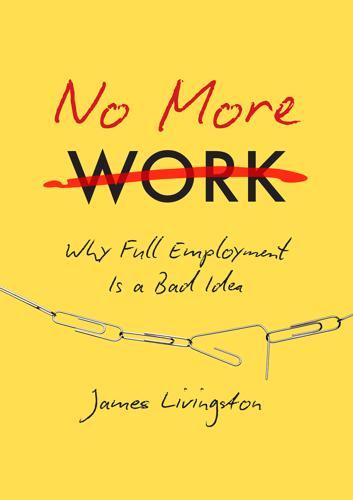
No More Work: Why Full Employment Is a Bad Idea
by
James Livingston
Published 15 Feb 2016
The big idea here was to abolish the perceived disincentives to marriage in the Aid to Families with Dependent Children program by making it easier for households and harder for single parents to acquire an adequate income. Second, the experiments and the legislation provided income supplements to the working poor, rather than grants or a baseline sum to everyone, or to people without jobs. The point—the result—of the experiments was to show that time on the job didn’t decline as income without work increased, not to discourage job-seeking or steady employment; the legislation of 1970 that called for income supplements, Nixon’s Family Assistance Program, took these findings for granted.
…
On these grounds, for example, social workers, the most liberal of interest groups, became the most outspoken critics of the legislation. These work requirements were in fact minimal. But they were a necessary part of the ideological package Nixon was selling; for a substantial bloc of voters—not just the Chamber of Commerce—worried that the working poor would quit their jobs and loaf around all day if given the chance. A Gallup Poll in 1968, for example, showed that 58 percent of Americans opposed a guaranteed annual income of $3,200 to a family of four; the typical sentiment reported by this majority was “nobody should get something for nothing.”
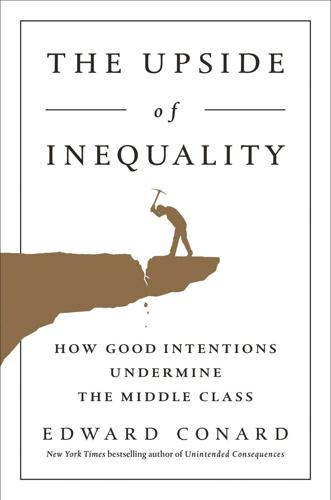
The Upside of Inequality
by
Edward Conard
Published 1 Sep 2016
It’s true that trade with low-wage economies lowers the cost of goods more than the wages of domestic lower-skilled labor. Were that not the case, it would be cheaper to produce goods domestically, rather than import them. But middle- and working-class workers bear 100 percent of the burden of lower wages for only a portion of the benefits of lower-priced goods. The rich, retirees, and the non-working poor also enjoy the benefits of lower-priced goods but without suffering the cost of lower wages. So while international trade benefits everyone on average, because the costs are shared disproportionately, it slows middle- and working-class wage growth relative to the growth of everyone else’s income.
…
If trade with low-wage economies didn’t lower the cost of goods more than the wages of domestic lower-skilled labor, it would be cheaper to produce the goods with domestic labor. So trade makes everyone better off on average. Lesser-skilled workers, however, suffer the entire burden of lower wages but capture only a portion of the benefits from lower-priced offshore goods. Much of the benefit is captured by the rich, retirees, and the non-working poor, who enjoy lower-priced goods but without the cost of lower wages. As a result, trade lowers the relative incomes of the middle and working classes. An influx of low-skilled immigrants only adds to the strain on constrained resources. If risk-takers and properly trained talent fail to create jobs for low-skilled immigrants that are as productive as the jobs of the lesser-skilled, native-born workers on average, lower-wage immigrants working in less productive jobs will bid down wages, further lowering the relative incomes of the middle and working classes.
…
But while it’s true that trade with low-wage economies may lower prices more than wages, an economy like America’s buys products made with low-wage, lesser-skilled labor and sells products made with high-skilled labor—such as operating systems produced by Microsoft, Apple, and Google. Middle- and working-class workers bear the burden of lower wages while retirees, the non-working poor, and higher-skilled workers and their families—where 20 percent of the families earn 50 percent of the after-tax pay—share the benefits of lower-priced goods. The cost and benefits are not distributed proportionally. As such, trade will slow middle- and working-class wage growth relative to the rest of the economy.
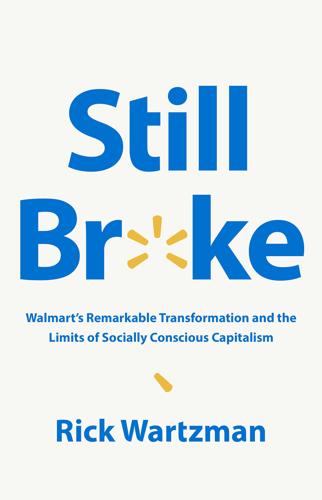
Still Broke: Walmart's Remarkable Transformation and the Limits of Socially Conscious Capitalism
by
Rick Wartzman
Published 15 Nov 2022
“In Los Angeles, they might be Mexican Americans, in… West Virginia or Pennsylvania, white Anglo-Saxon Protestants. All of them are poor; regardless of race, creed, or color, all of them are victims.” In 1963, 20 percent of full-time employees earned less than $3,000 a year, which was under the poverty line for a family of four. The term “working poor” had entered the American vernacular. In certain industries, such as retail, earnings were notoriously low. “It is a fact that our economy has a lot of jobs that pay low wages,” Labor Secretary George Shultz acknowledged in 1969. And still, this was also undeniable: as US corporations flourished, so did a huge swath of the population.
…
Raskin, a veteran labor reporter for the New York Times, said that Harrington’s book was nothing less than “a scream of rage and a call to conscience.” In the end, it fell mostly on deaf ears. The government’s War on Poverty “never truly mobilized the country, nor was it ever fought to victory,” David Shipler concluded in his 2004 book, The Working Poor: Invisible in America. “Forty years later,” he wrote, “after all our economic achievements, the gap between rich and poor has only widened.… Yet after all that has been written, discussed, and left unresolved, it is harder to surprise and shock and outrage.” We are 18 years further along now, and an ever-bigger army of low-paid workers serve us food and scrape our plates.
…
Rolf, David. The Fight for $15: The Right Wage for a Working America. New York: New Press, 2016. Rosenfeld, Jake. You’re Paid What You’re Worth: And Other Myths of the Modern Economy. Cambridge, MA: Belknap Press, 2021. Ryan, John A. A Living Wage. New York: Macmillan, 1920. Shipler, David K. The Working Poor: Invisible in America. New York: Alfred A. Knopf, 2004. Stern, Andy. Raising the Floor: How a Universal Basic Income Can Renew Our Economy and Rebuild the American Dream. New York: PublicAffairs, 2016. Stone, Brad. The Everything Store: Jeff Bezos and the Age of Amazon. New York: Little, Brown, 2013.
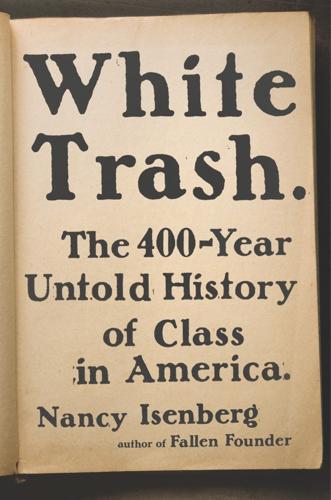
White Trash: The 400-Year Untold History of Class in America
by
Nancy Isenberg
Published 20 Jun 2016
The children of “wandering beggars,” having been “kept from idleness, and made able by their own honest and easy labor,” would grow up responsibly, “without surcharging others.” Children who escaped pauperism, no longer burdens on the state, might reenter the workforce as honest laborers. The poor fry sent overseas would now be “better bred up,” making the lot of the English people better off, and the working poor more industrious. It all sounded perfectly logical and realizable.16 Seeing the indigent as wastrels, as the dregs of society, was certainly nothing new. The English had waged a war against the poor, especially vagrants and vagabonds, for generations. A series of laws in the fourteenth century led to a concerted campaign to root out this wretched “mother of all vice.”
…
There was no guarantee that restlessness ensured social mobility.15 Poverty was increasingly common as the eighteenth century wore on. Philadelphia had its economic slumps, brutally cold winter weather, and shortages of wood that caused the poor nearly to freeze to death. In 1784, one man who was part of the working poor in the city wrote to the local newspaper that he had six children, and though he “strove in all his power,” he could not support them. Hard work by itself was not the magic balm of economic self-sufficiency, nor was Franklin correct that big families were always a boon. He was even wrong about his tabulations on American birthrates.
…
He too loosely clothed the language of class in the garb of continental races and commercial impulses. Indians and slaves are marginalized in his grand vision of a new world order. Neither did he allow the ignoble waste people to make any appearance in Common Sense; the vast numbers of convict laborers, servants, apprentices, working poor, and families living in miserable wilderness cabins are all absent from his prose. For Paine, the crucial issue for Americans in 1776 was not whether but how soon a new and independent regime would advance toward its destiny as first among nations. He assumed that the mighty forces of commerce and continental expansion would eliminate idleness and correct imbalances.

Blood in the Machine: The Origins of the Rebellion Against Big Tech
by
Brian Merchant
Published 25 Sep 2023
There was already a sense, even then, that they were doing more than enriching themselves at the expense of the workingmen whom their devices were making redundant; they were using those machines to impose an entirely new mode of work onto the populace. Theirs were the guiding hands on new technologies that were helping to forge the very shape of industrial capitalism. Footnote 1 Also crucial were the ideas of the economist Thomas Malthus, who held that periods of mass suffering among the working poor were inevitable in any prospering economy as the population grew too fast for food production to keep pace. B November 1811 In a secret meeting at the Falstaff Hotel in Manchester, in the middle of a black November night, a man who dressed and presented as a cloth worker listened in as a delegate from the town of Royton spoke up.
…
Soldiers, the royal dragoons, and organized militias had been the face of the Crown’s opposition to the Luddites in Nottingham. The spies kept quietly to the shadows, as spies do, though the workers were well aware they were out there. The Nottingham Luddites had, after all, begun to win some victories and concessions. Not only were they popular with the working poor, but they had driven some shop owners to abandon the new machines, raise wages, and return work to the craftsmen. The Luddites were nothing less than a threat to the ruling class’s economic power. Magistrates like Ralph Fletcher were convinced that, whether by rifle in broad daylight or by arrest at night, these threats had to be rooted out immediately—or else they’d spread.
…
Life expectancy wasn’t long in the eighteenth and nineteenth centuries, and most working people were fortunate if they lived past their forties. And progress was beginning to cut its forked path. There was a vaccine for smallpox now—even Blincoe got a dose—and yet conditions in factories for the working poor left them worse off, physically stunted from malnourishment, or killed prematurely in the machinery. And it was a certain kind of death—to be killed by the cutting-edge technology, for a profit—that cast so dark a shadow. When these deaths were reported, they made the news, plainly underscoring the dangers of the factory and how commonplace this kind of carnage risked becoming.

Nickel and Dimed: On (Not) Getting by in America
by
Barbara Ehrenreich
Published 2 Jan 2003
When someone works for less pay than she can live on—when, for example, she goes hungry so that you can eat more cheaply and conveniently—then she has made a great sacrifice for you, she has made you a gift of some part of her abilities, her health, and her life. The “working poor,” as they are approvingly termed, are in fact the major philanthropists of our society. They neglect their own children so that the children of others will be cared for; they live in substandard housing so that other homes will be shiny and perfect; they endure privation so that inflation will be low and stock prices high. To be a member of the working poor is to be an anonymous donor, a nameless benefactor, to everyone else. As Gail, one of my restaurant coworkers put it, “you give and you give.”
…
On a Thursday after work, I drive to the Mobil station across the street from The Maids and call the Prebles Street Resource Center, which is listed in the phone book as a source of free meals and all-around help. I get a recorded message saying that Prebles Street closes at 3:00 P.M.—so much for the working poor!--but to try 774-HELP after that. There I wait on hold for four minutes before someone picks up. I tell him I am new to the area and employed but need some immediate food aid or cash assistance. Why do I need money if I'm employed, he wants to know—didn't I bring any money with me? It got used up on housing, I tell him, which was more expensive than I'd expected.

The Global Auction: The Broken Promises of Education, Jobs, and Incomes
by
Phillip Brown
,
Hugh Lauder
and
David Ashton
Published 3 Nov 2010
Hirsch, The Social Limits to Growth, 6; Phillip Brown, “The Opportunity Trap: Education and Employment in a Global Economy,” European Educational Research Journal, 2, no. 1 (2003): 142–180; revised and abridged as “The Opportunity Trap,” in H. Lauder et al. (eds.), Education, Globalization and Social Change (Oxford: Oxford University Press, 2006). 11. Raymond Boudon, Education, Opportunity and Social Inequality (New York: Wiley, 1973), 6. 12. David K. Shipler, The Working Poor: Invisible in America (New York: Vintage Books, 2005). 13. Ivar Berg, Education and Jobs: The Great Training Robbery (New York: Penguin, 1970). 14. Randall Collins, Four Sociological Traditions (New York: Oxford University Press, 1994), 146; Credential Society: An Historical Sociology of Education and Stratification (New York: Academic Press, 1979). 15.
…
If the same principles were applied to tackling poverty in America, it could be abolished tomorrow. See Simon Caulkin, “Stock Exchange: A Casino Where the Rich Can’t Lose,” The Observer, October 5, 2008; James K.Galbraith, The Predator State (New York: Free Press, 2008). 32. Jeremy Rifkin, The End of Work (New York: Tarcher/Putnam, 1996), 267. 33. The Working Poor Families Project, Still Working Hard, Still Falling Short (2006). http://www.workingpoorfamilies.org/still_working.html 34. See Brown and Lauder, Capitalism and Social Progress. Notes to Pages 161–164 187 This page intentionally left blank Index Page numbers in bold indicate figures. A. T.
…
See also high-skill, low-wage workforce hourly wages, 117, 118 income inequalities, 124–25 industrial policy, lack of, 158 industrial revolutions, 21 Wilensky, Harold, 80 Williamson, Peter, 43, 57–58 Wilson, Timothy, 68 The Winner-Take-All Society, 122 IT revolution, 127 knowledge wars, 45–48 winner-takes-all, 11, 123, 160, 165n7 win-win scenario, 20, 111, 152–53 National Institute on Drug Abuse, 146 opportunity trap, 137 R&D (research and development), 44, 45 World Bank, 59, 130, 149 The World Is Flat, 66 World Trade Organization (WTO), 41 STEM subjects studies, 37–38, 39, 153 trade imbalance, 108–9 World University Rankings, 95 WTO (World Trade Organization), 41, 52 war for talent, 86 working poor, 163 universities. See colleges and universities 198 wage inequalities, 59–60 Wall Street, 111, 148 war for talent, 9, 83–90, 93–97, 148, 176n8, Young, Michael, 133, 182n3 value chain, 52, 54–56, 58, 98, 108–10, 128 Zeng, Ming, 43, 57–58 zero-sum game, 22 venture capital, 114–15 vertical integration, 103 Zhou, Eve, 45 ZTE, 42 Index
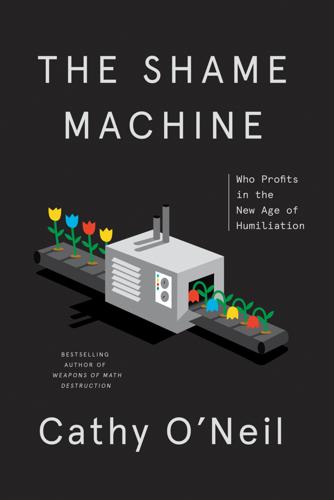
The Shame Machine: Who Profits in the New Age of Humiliation
by
Cathy O'Neil
Published 15 Mar 2022
And miserly benefits continue to subsidize the disgracefully low wages paid by fast-food restaurants and retail giants. In this way, society keeps the working poor on a hamster wheel, struggling mightily just to get by, with no money to spare if their car breaks down or their kid gets sick. And it condemns the unemployed poor to abject poverty. In short, it punishes people for failure and accepts their misery as the status quo. This is both shortsighted and immoral. The key to changing it—which goes against all of our shaming instincts—is to help people in need, and to stop making assistance contingent on work. Poor people, like everyone else, should have childcare, shelter, healthcare, food, and access to decent education.
…
That’s a horrifying statistic, and worse when you consider that this homelessness epidemic expanded during a period of economic boom. Statisticians choose what they count. That’s axiomatic. State and local governments in the United States often configure the poverty line to undercount expenses like rent, food, and healthcare costs. This saves taxpayer money, at least in the short term, and punishes the working poor. If you set the threshold, for example, at $2,100 for a family of four, a struggling Uber driver who works crazy hours to make $2,200 per month counts as someone who has pulled himself up from poverty, even while he may be homeless or drowning in credit card debt. But the biggest shortcoming of poverty statistics is that they reduce the experience to numbers and ignore the human pain and despair of being poor.

Hard Times: The Divisive Toll of the Economic Slump
by
Tom Clark
and
Anthony Heath
Published 23 Jun 2014
Using regression analysis on UK data, the respected labour market experts Paul Gregg and Stephen Machin find that whereas ‘a doubling of unemployment at any point in the period between 1986 and 2002’ would have driven down wages by 7%, in more recent years the same proportional rise would ‘push typical pay down by 12%’.10 That amounts to a serious intensification of hard times – as experienced not by the traditional jobless victims, but by people who have remained in employment. This nasty spillover from redundancy notices onto workers who kept their jobs is most marked at the bottom of the scale – and in the US it is stark. The Bureau of Labor Statistics keeps track of America's working poor, defined as those who spend the bulk of the year in the labour force, but who nonetheless live below the poverty line: the 2010 tally of 10.5 million was the highest since records began, in 1987.11 One study concluded: ‘during … the Great Recession, the bottom of the US earnings distribution has fallen dramatically … In terms of earnings, the bottom 20 percent of the US population has never done so poorly, relative to the median, during the whole postwar period.’12 The only reason this did not produce an immediate surge in inequality in family incomes, the same paper notes, was rising government redistribution; redistribution that reflects such moves as the extension in unemployment compensation that we reported on in Chapter 2.
…
In his own estimation at least, however, his troubles are less to do with being unemployed as such, and more to do with being desperately poor: ‘Losing a job is nothing, compared to what I'm going through right now, because I am on the breadline.’ The anxiety of the workless was, perhaps, somewhat more marked in our interviews, but there was little difference between them and the working poor in the sorts of things that stirred fear – those dramatic words about homelessness and being haunted by broken fridges came from case studies of people in work. All this suggests that serious anxiety may be gripping the more weather-beaten sections of the workforce. The next question is whether there is any sign of that in the hard data.
…
Whereas he used to ‘cycle into London twice a week … [to] go see my son’ (whom he otherwise sees only at weekends), his workfare obligations – and his terror of breaching them – now mean that he cannot make the trip. A wider slice of the population could soon experience such workfare-type requirements, as policy adjusts to the reality that much benefit spending now goes to the working poor. Changes in the pipeline could extend such obligations from the unemployed proper to the underemployed and the low-paid: the government has taken powers to allow it to extend a sanctions regime to the tax credits of poor working families, so that their payments can also be docked if their personal efforts to increase their hours of work or their rate of pay are deemed inadequate.
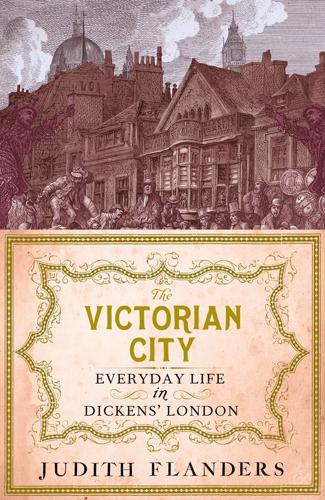
The Victorian City: Everyday Life in Dickens' London
by
Judith Flanders
Published 14 Oct 2012
Whitecross Street market, another Sunday market, was much larger. Near Old Street, towards the Barbican, it opened at 7 a.m. on Sundays, with sellers including butchers, bakers, grocers, provision dealers, linen drapers, hosiers, milliners, furniture brokers, ironmongers, hardware and trinket shops, leather sellers and curriers. The working poor arrived first, but by nine the market was filling with the ‘hungry, meagre, and unwashed’. Many men spruced themselves up while their wives shopped. ‘Sunday morning is always an exceedingly busy time in a barber’s shop in a working-class neighbourhood,’ as men had their weekly shave, or the ‘swells’ who were going out for the day came in ‘to have their hair brushed and “done up”’.
…
One walked four miles to and from her dairy: after a 5.30 start she trudged her routes until 7 p.m., earning 9s a week and her meals. The next sellers were the watercress girls, followed by the costermongers, then the fishmongers’, the butchers’ and the bakers’ boys to take the daily orders. The cress girls and the costers wore the standard street-dress of the working poor. Early in the century, for the men, this was breeches, thereafter replaced by cord trousers, with shirts and waistcoats or smocks, sometimes a jacket, a cloth cap and always a silk kingsman neckerchief – a coster had to be very hard up not to have one. The girls wore cotton dresses, usually pinned up out of the mud, frequently with two aprons, a coloured one covered by a white one, with a shawl, a silk neckerchief if it was affordable, and a black velvet or straw bonnet, or, if they carried their goods on their heads, a folded handkerchief.
…
In a series of views of London, which Rowlandson illustrated between 1808 and 1810, the caption to a picture of the Westminster Workhouse, with its happy, well-fed paupers, reads: ‘The establishment of a permanent and certain provision for the aged and the helpless, not of occasional bounty, but of uncontrovertible [sic] right, and the anxious care which has watched...over every abuse or neglect in the execution of them, may be placed in competition with the greatest of our national achievements.’ Workhouses were shelter for the very aged or the ill; the healthy and working poor who could not make ends meet received ‘outdoor relief’ of both money and food, supplemented sometimes by clothes, shoes and assistance in finding apprenticeships for their children. By the 1830s, however, increasing urbanism, population and inequality of income, creaking infrastructure and the rise in evangelical morality helped to create a view that the poor were poor not because of misfortune, or because wages were too low, but because they were drunken and lazy, probably immoral and dissolute, and no doubt rogues and thieves to boot.
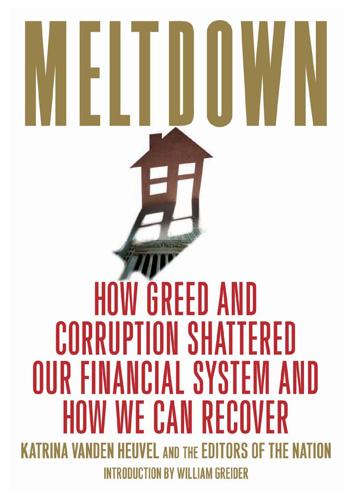
Meltdown: How Greed and Corruption Shattered Our Financial System and How We Can Recover
by
Katrina Vanden Heuvel
and
William Greider
Published 9 Jan 2009
Known as a pragmatic and decisive leader, Paulson will likely be more proactive than Snow, whose sole job essentially was traipsing up to Congress once a year and urging lawmakers to raise the U.S. debt cap by another tril lion dollars so we wouldn’t default on our interest payments to China. Bush’s economic legacy is a weak dollar (who wants to invest in a country teetering on the brink of default?) and tax cuts for the super-wealthy that have created an outrageous deficit and debt. And that legacy benefits men like Paulson at the expense of middle-class Americans and the working poor. It will be a stretch for him to argue for prudent budgeting, while facing the country’s highest national debt ever, without cutting social programs to get there. This shaky economic legacy also makes Paulson’s possible appointment more challenging and hence more potentially dangerous than Rubin’s.
…
The housing boom also spawned the now infamous subprime mortgage—a scheme devised by Main Street realtors and Wall Street bankers to finance home buying with loans that let the borrower buy in with little money down but carried high interest rates. The expensive payments would be made later by refinancing the mortgage as prices continued to rise. These subprimes were sold to middle-class strivers upgrading to McMansions as well as to the working poor. The increased demand pushed housing prices further into the stratosphere—until, inevitably, they fell back to earth. When the subprime borrowers could no longer make their payments, foreclosure signs went up, lowering the value of other houses in the neighborhood. The refinancing spigot shut off, retail sales sputtered and by January the economy was shedding jobs.
…
The pain of homeowners has now spread throughout the economy. We must challenge plans that bail out the rich, put out the poor and put down the middle class. We can’t just bail out Wall Street and ignore Main Street. The bailout must be bottom up, not just top down. The poor—the unemployed poor, the working poor and the fixed-income poor—must benefit from the investment of their tax dollars. Any “solution” or remedy must be judged by how it affects “the least of these.” The oversight committees and the overseers must come off the payroll of Wall Street. They cannot eat from the same trough and retain any credibility as regulators.
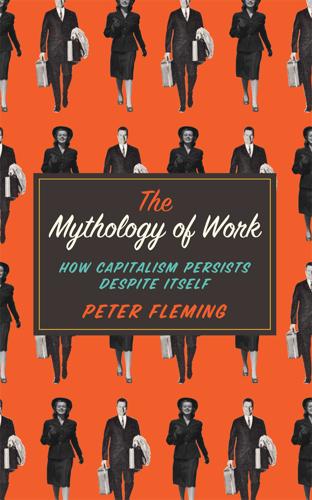
Mythology of Work: How Capitalism Persists Despite Itself
by
Peter Fleming
Published 14 Jun 2015
We saw this most clearly in the United States and the United Kingdom when public funds (derived from income tax) were used to bail out the banks following the 2008 crisis. This instance of welfare to the rich is not an exception but the norm. For example, in the United States, tax breaks for the top 5 per cent of income earners have placed a huge burden on the remaining 95 per cent, and have, in effect, entailed an unprecedented transfer of wealth from the working poor to the rich. Lazzarato explains this in relation to the 2010 Bush–Obama law that extends the tax cuts to those making more than $250,000. The income bracket represents only 5% of the population … in exchange for peanuts for the unemployed, the rich received $315 billion over two years. To have an idea of the handout, one should remember that the US government investment in the economy came to $800 billion in 2008.
…
There is only one winner. Welcome to neoliberal Britain. According to Meek, when Thatcher came to power in 1979, the top rate of tax was 83 per cent and the basic rate 33 per cent. Now they are 45 per cent and 20 per cent respectively. But it is the flat taxes that really put the boot into the working poor. In 1979 value-added tax (or VAT, whereby everybody pays the same rate regardless of income) was 8 per cent. Now it is 20 per cent, which disproportionately sucks money away from working people. Meek goes even further. In addition to VAT, there are others, and they are onerous; they just aren’t called taxes, though they should be – private taxes.
…
Governmental economic ideology is primarily guided by class politics, with the social construction of ‘work’ being a central factor for garnering legitimacy and justifying false scarcity. For example, it is largely state governance structures that has allowed the 2008 financial crisis to become a veritable boon to the rich as it sucks the life out of the working poor. It was recently noted that ‘the 400 wealthiest Americans are worth a record $2.02 trillion (£1.4tn), up from $1.7tn in 2012, a collective fortune slightly bigger than Russia’s economy’ (The Guardian, 2013). Indeed, the old Marxist debates in the 1970s about whether or not the state was semi-autonomous from capital look quaint and naive today.
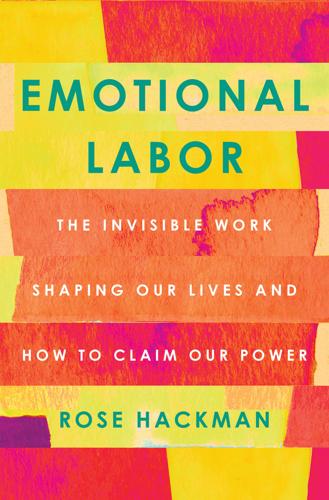
Emotional Labor: The Invisible Work Shaping Our Lives and How to Claim Our Power
by
Rose Hackman
Published 27 Mar 2023
“Women CEOs of the S&P 500 (List),” Catalyst, March 25, 2022, https://www.catalyst.org/research/women-ceos-of-the-sp-500/. 11. Karry A. Dolan (ed.), Chase Peterson-Withorn (deputy ed.), and Jennifer Wang (deputy ed.), “The Forbes 400 2021,” Forbes, accessed February 7, 2022, https://www.forbes.com/forbes-400/. 12. “A Profile of the Working Poor, 2016,” BLS Reports, US Bureau of Labor Statistics, July 2018, accessed June 16, 2020, https://www.bls.gov/opub/reports/working-poor/2016/home.htm. 13. “The Great Resignation: Why People Are Leaving Their Jobs in Growing Numbers,” NPR.org, October 22, 2021, accessed February 12, 2022, https://www.npr.org/2021/10/22/1048332481/the-great-resignation-why-people-are-leaving-their-jobs-in-growing-numbers. 14.
…
As of February 2022, there were 31 women holding CEO positions at Fortune 500 companies, representing an abysmally low 6.2 percent total.10 In 2021, the ten wealthiest people in America were all men and were all white.11 On the flip side, women continue to be more likely to be living in poverty than men and are more likely than men to be among the working poor, with the greatest rate among Black and Hispanic women.12 Yes, we have made progress, but this is a society that is still plagued by male domination, and in which it is no coincidence that women are expected to take on the lion’s share of emotional labor. And frankly, we have reached breaking point.
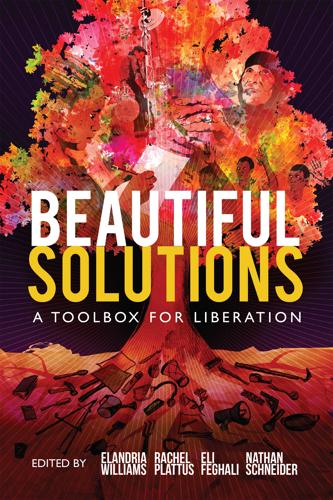
Beautiful Solutions: A Toolbox for Liberation
by
Elandria Williams, Eli Feghali, Rachel Plattus
and
Nathan Schneider
Published 15 Dec 2024
SEWA shows that large-scale cooperative organizations can have the flexibility and capacity to grow and adapt, thereby serving the changing needs of their members, communities, and the movement for labor rights and justice at large. LEARN MORE WEBSITE Self-Employed Women’s Association. sewa.org VIDEO “Made in India. The Story of SEWA” by Light Night Production. (2018) youtu.be/hBXcPsBNTRo ARTICLE “Organizing Working Poor Women: The Sewa Experience” by Ela Bhatt. (2007) law.uchicago.edu/recordings/ela-bhatt-organizing-working-poor-women-sewa-experience SOLUTION BARAZA A baraza in Alebtong, Northern Uganda, in 2019. Photo by Merab Ingabire (Solidarity Uganda), used with permission. OVERVIEW Originating in East Africa, a baraza is a kind of large community gathering held to discuss important matters, share information, make collective decisions, and hold leaders to account.
…
GUIDED BY NOHRA PADILLA HERRERA LUCIA FERNANDEZ (interview) Padilla Herrera is a third-generation waste picker from Bogotá, Colombia, and winner of the Goldman Environmental Prize for her activism on behalf of Colombian recyclers. Fernandez is the waste picker global coordinator for Women in Informal Employment: Globalizing and Organizing, a global network dedicated to improving the working conditions of the working poor—especially women—in the informal economy. WRITTEN BY THE BEAUTIFUL SOLUTIONS TEAM The work of recyclers and waste pickers is vital to reducing the ecological impact of cities. In parts of the world where people have little economic power, informal work like waste picking is widespread. There are 20 million recyclers worldwide, many of them in China and Brazil.
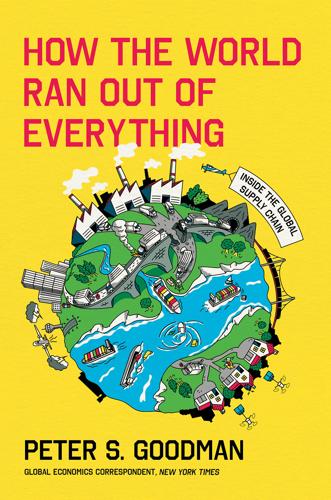
How the World Ran Out of Everything
by
Peter S. Goodman
Published 11 Jun 2024
“When someone works for less pay15 than she can live on—when, for example, she goes hungry so that you can eat more cheaply and conveniently—then she has made a great sacrifice for you, she has made you a gift of some part of her abilities, her health, and her life,” Ehrenreich wrote in her masterful book Nickel and Dimed. “The ‘working poor,’ as they are approvingly termed, are in fact the major philanthropists of our society. They neglect their own children so that the children of others will be cared for; they live in substandard housing so that other homes will be shiny and perfect; they endure privation so that inflation will be low and stock prices high. To be a member of the working poor is to be an anonymous donor, a nameless benefactor, to everyone else.” Those words were powerful and apt, describing the conditions on which normalcy rested.
…
More than 9 million American families relied on the program at some point in 2018. More than three-fourths of those families16 included at least one person who had a job. A job was no longer reliable insurance against poverty. The term of art to describe people caught in that circumstance was “the working poor.” Their ranks included people employed at warehouses run by companies like Amazon. There, an estimated thirty-eight thousand workers relied on some form of government benefits17, from food stamps to Medicaid, according to an analysis conducted in 2021. The previous year, Amazon had logged $21 billion in profits, sending its shares soaring, and making its founder, Jeff Bezos, the richest person on earth.
…
See also dockworkers; dray operators; long-haul trucking; meatpacking industry; rail freight and Precision Scheduled Railroading; railroads; reshoring; unions automation and, 335–41 China’s workforce wages, 171–72, 287 Chinese banking system and, 30 downsizing by Toyota (1950), 61 downsizing of, and Great Supply Chain Disruption, 3, 9–10 early remote corporate management by railroads, 201 flexible workforce concept, 67–68, 157, 164, 167, 169–70, 178–80 flexible workplace needed for, 312 Ford on treatment of, 221–23, 299–300, 333–34, 336 Great Upheaval of 1877, 202–4, 219 hiring people with criminal records, 299, 311–12 Mexico and manufacturing, 333–34 middle-class job loss, 52 paid sick leave denied to, 204–5, 216, 220, 223–25, 252 productivity of (1948–1979), 170–71 reshoring and, 299–300, 308–13 unemployment (2020), 85 unemployment and inflation, 349–50 unemployment benefits denied, 255 working poor, 24, 171, 349–50 WorkHound, 233 World Shipping Council, 128 World Trade Organization (WTO), 15, 26–31, 34–37, 292 Xi Jinping, 283, 284 Yang Ming Marine Transport, 116, 160 Yavar, Eskander, 306–7 Young, Coy, 277–78, 345 Zate, Kary, 336 Zheng, Calvin, 83–84, 89, 90–91, 285, 293–94 Zhu Rongji, 30 Zipfox, 320 Zipline, 338 Zou Qinghai, 291 Zuntex, 348 About the Author PETER S.

The System: Who Rigged It, How We Fix It
by
Robert B. Reich
Published 24 Mar 2020
Consequently, inequality is far wider in the United States than it is in any other advanced country, and the American middle class is no longer the world’s richest. Considering taxes and transfer payments, middle-class workers in Canada and much of Western Europe are better off than in the United States. The working poor in Western Europe earn more than do the working poor in America. Globalization or technology cannot account for these differences because all these nations face much the same international competition and deal with the same technological changes. The answer is to be found in the different organization of these countries’ political-economic systems.
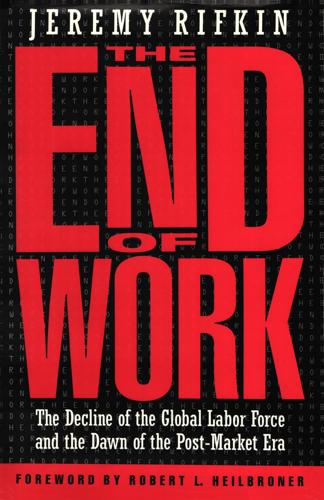
The End of Work
by
Jeremy Rifkin
Published 28 Dec 1994
In the Netherlands, the conditions governing disability benefits have been tightened up in the hope of saving more than $2 billion a year in public spendingP Some European officials, such as European Union (EU) Commissioner Padraig Flynn, are urging caution in the debate over lowering the social net. He warns that "you're going to see more low-wage jobs being created ... and more part-time work." In both cases, says Flynn, "the key is to have a satisfactory level of social protection ... so that you're not creating working poor and increased levels of poverty."28 The lowering of the social net, at a time when growing numbers of workers are being displaced by new technologies and management restructuring, is increasing tensions throughout Europe. In March 1994, tens of thousands of students took to the streets in cities across France to protest a government decree lowering the minimum wage for young people.
…
Historian Paul Kennedy asks whether countries like India can "take the strain of creating world competitive, high-tech enclaves ... in the midst of hundreds of millions of their impoverished countrymen." Noting the growing disparity between the new symbolic analyst class and the declining middle and working poor in countries like the United States, Kennedy asks whether developing countries like India might fare even more poorly in the new high-tech world. "Given the even greater gap in income and lifestyles that would occur in India," says Kennedy, "how comfortable would it be to have islands of prosperity in a sea of poverty?"
…
In both the Reagan and Bush White House, third-sector themes were continually manipulated in a cynical effort to mask a free-market agenda. "Returning the government to the people" became a convenient euphemism to push for deregulation of industry, fewer corporate taxes, and cutbacks in social services and entitlement programs for the working poor and those trapped below the poverty line. In the end, the third sector was seriously compromised and undermined by the very political forces that professed to be its champions and advocates. To avoid a similar occurrence in the future, it is necessary to understand both the disarming ways the Reagan people were able to manipulate third-sector images and the responses they evoked from Democrats and progressive forces.

Evicted: Poverty and Profit in the American City
by
Matthew Desmond
Published 1 Mar 2016
History repeated itself 100 years later, when wage gains that workers had made through labor strikes were quickly absorbed by rising rents. In the interwar years, the industrial job market expanded, but the housing market, especially for blacks, did not, allowing landlords to recoup workers’ income gains. Today, if evictions are lowest each February, it is because many members of the city’s working poor dedicate some or all of their Earned Income Tax Credit to pay back rent. In many cases, this annual benefit is as much a boost to landlords as to low-income working families.44 In fixating almost exclusively on what poor people and their communities lack—good jobs, a strong safety net, role models—we have neglected the critical ways that exploitation contributes to the persistence of poverty.
…
The shame of rejection not only can pressure people to accept undesirable circumstances today; it can also discourage them from striving for something better tomorrow. On the experience of rejection when job hunting for entry-level work, see Philippe Bourgois, In Search of Respect: Selling Crack in El Barrio (New York: Cambridge University Press, 1995), chapter 4; Katherine Newman, No Shame in My Game: The Working Poor in the Inner City (New York: Vintage, 1999), chapter 3. 11. Some months later, Betty received a letter from Tobin threatening eviction for boarding Larraine. Larraine responded by paying Tobin what he said she owed in back rent and court costs. That amount was twice what the court records said Larraine owed.
…
Applying matching techniques as well as discrete hazard models to the Milwaukee Area Renters Study data set with Carl Gershenson, I found low-wage workers who involuntarily lost their homes to be significantly more likely to lose their jobs. When we examined the effects of forced removal for renters with relatively stable work histories and those with fairly unstable employment, we found forced removal to be an actuator of job loss for both groups. Matthew Desmond and Carl Gershenson, “Housing and Employment Insecurity Among the Working Poor,” Social Problems, forthcoming. 2. Consider Tina’s story. A single mother of three, Tina worked part-time for a landscaping company, entering data and making customer-service calls. After serving her an eviction notice, Tobin began calling Tina’s work and threatening to carry out the eviction unless she paid him $600.

Straphanger
by
Taras Grescoe
Published 8 Sep 2011
The “chariot of the poor” encouraged the creation of decent, walkable neighborhoods—places like Jackson Heights in far-flung Queens, conceived as a prototypical garden suburb (and later the lumpen Shangri-la of television, inhabited by the likes of Frank and Estelle Costanza). In the outer boroughs, virtually all new construction clustered within a quarter-mile of the tracks. By following the taproots of mass transit, the working poor were able to escape industrial squalor for greener pastures. Before the subway, over half of all New Yorkers lived in Manhattan; forty years later, only a quarter lived there, and Brooklyn had become the city’s most populous borough. While the subway reduced population density in Manhattan, it also intensified downtown commercial development.
…
By 1930, 94 percent of all dwellings in the city were suburban-style single-family houses, largely inhabited by the “middle-aged middle class from the Midwest”—who were also the world’s earliest and most enthusiastic adopters of the private automobile. As of the 2010 census, however, L.A. is a majority Latino city, and a further 20 percent of the population is African and Asian American. The city’s enormous population of working poor, many of whom live in car-dependent subdivisions built for past generations of migrants, is disproportionately dependent on transit. The money the city is about to spend on a new subway line, this argument goes, could buy working-class Angelenos a whole lot of buses. Ironically, it is a line of reasoning that puts the far-left Bus Riders’ Union in the same camp as libertarians who oppose “big-government”-built rail transit, and favor privately owned buses as the market-driven, and fittingly second-class, solution for those who can’t afford cars.
…
Buses, it’s true, can be excellent forms of transit, especially when they run along dedicated rights-of-way, as they do on the Orange Line. (And as I would discover later in my travels, citywide rapid transit bus networks are providing superior service in developing-world metropolises.) But subways are permanent infrastructure that benefit the working poor and middle class alike—and unlike bus lines, which can be cut overnight when civic budgets get tight, rail transit lasts. No subway system in the world has ever permanently stopped running. Most Angelenos support the subway. In 2010, they ignored the Bus Riders’ Union position on Measure R, and voted 68 percent in favor of the transit-supporting sales tax.
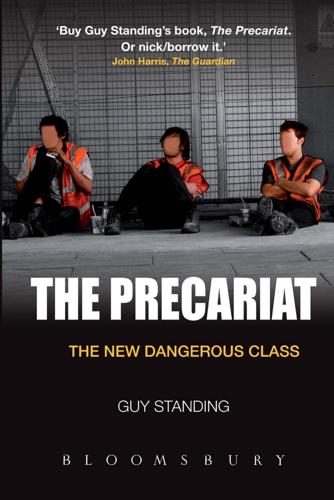
The Precariat: The New Dangerous Class
by
Guy Standing
Published 27 Feb 2011
In Japan, the term has been used as synonymous with ‘the working poor’, although it evolved as a distinctive term as it became associated with the Japanese May Day movement and so-called ‘freeter unions’, made up of young activists demanding better working and living conditions (Ueno, 2007; Obinger, 2009). Japan has produced a group of young workers known as ‘freeters’ – a name peculiarly combining ‘free’ and Arbeiter, German for worker – who have been pushed into a work style of casual labour. It is not right to equate the precariat with the working poor or with just insecure employment, although these dimensions are correlated with it.
…
National Equality Panel (2010), An Anatomy of Economic Inequality in the UK: Report of the National Equality Panel, London: Centre for Analysis of Social Exclusion and the Government Equalities Office. Needleman, S. (2009), ‘Starting Fresh with an Unpaid Internship’, Wall Street Journal, 16 July, p. D1. Nink, M. (2009), ‘It’s Always about the Boss’, Gallup Management Journal, 25 November. Obinger, J. (2009), ‘Working on the Margins: Japan’s Precariat and Working Poor’, Electronic Journal of Contemporary Japanese Studies, 25 February. OECD (2010a), International Migration Outlook 2010, Paris: OECD. OECD (2010b), A Profile of Immigrant Populations in the 21st Century: Data from OECD Countries, Paris: OECD. Paine, T. ([1795] 2005), Common Sense and Other Writings, New York: Barnes & Noble, pp. 321–45.
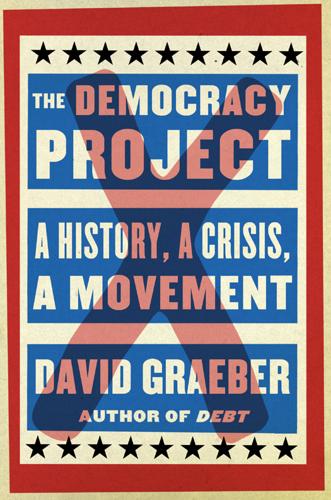
The Democracy Project: A History, a Crisis, a Movement
by
David Graeber
Published 13 Aug 2012
Some of it, perhaps, lies in the fact that the lines between students and workers have somewhat blurred. Most students turn to paid employment at least at some point in their college careers. Furthermore, while the number of Americans entering college has grown considerably over the last twenty years, the number of graduates remains about the same; as a result, the ranks of the working poor are now increasingly filled with dropouts who couldn’t afford to finish their degrees, still paying for those years they did attend, usually still dreaming of someday returning. Or who still carry on as best they can, juggling part-time jobs and part-time classes.8 When I wrote the story in The Guardian, the discussion section was full of the usual dismissive comments: these were a bunch of pampered children living off someone else’s dime.
…
As a result student loan debt continues to balloon at a giddy rate, the total amount owed having long since overtaken total credit card debt and other forms of debt as well: TOTAL DEBT BALANCE AND ITS COMPOSITION Mortgage 72% HE Revolving 5% Auto Loan 6% Credit Card 6% Student Loan 8% Other 3% *2011Q3 Total: 11.656 Trillion Aside from students, the other group stuck in the debt trap is the working poor—above all working women and people of color—who continue to see huge chunks of their already stagnating earnings culled directly by the financial services industry. They are often called the “subprimers,” since they are those most likely to have signed up for (or been tricked into) subprime mortgages.
…
A dramatic case is Stockton, California, which declared bankruptcy in early 2012. The city announced it intended to find the revenue to pay its creditors through massively increasing “code enforcement”: essentially, through parking tickets, and fines for unkempt lawns or not removing graffiti quickly enough; such penalties will inevitably fall disproportionally on the working poor. See “Stockton Largest U.S. City Going Bankrupt,” Daily News, June 26, 2012. 10. “Parsing the Data and Ideology of the We Are 99% Tumblr,” http://rortybomb.wordpress.com/2011/10/09/parsing-the-data-and-ideology-of-the-we-are-99-tumblr/. 11. See, for example, http://lhote.blogspot.com/2011/10/solidarity-first-then-fear-for-this.html, http://attempter.wordpress.com/2011/10/12/underlying-ideology-of-the-99/, and the accompanying comment section. 12.
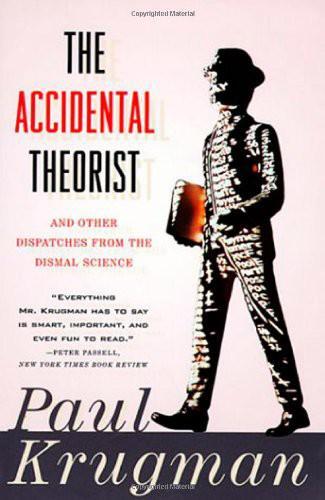
The Accidental Theorist: And Other Dispatches From the Dismal Science
by
Paul Krugman
Published 18 Feb 2010
That is less than one worker in 300—a tiny blip in the number of workers who lose or change jobs every year, even in the healthiest economy. And the great majority of downsized workers do find new jobs. Although most end up making less in their new jobs than they did before, only a fraction experience the much-publicized plunge from comfortable middle class to working poor. No wonder Stiglitz found that the destruction of good jobs by greedy corporations is just not an important part of what is happening to the American worker. The point is that Reich’s style of economics—which relies on anecdotes rather than statistics, slogans rather than serious analysis—cannot do justice to the diversity and sheer size of this vast nation.
…
Should we, as some in the administration wanted, focus our attention on preserving the jobs of well-paid employees at big corporations? Should we pressure those companies to stop announcing layoffs? Should we use the tax system to penalize companies that fire workers and reward those that do not? Or, instead, should we fight tooth and nail to preserve and extend programs like the Earned Income Tax Credit that help the working poor? It is disingenuous to say we should do both: Money is scarce and so is political capital. If we focus on small problems that make headlines, we will ignore bigger problems that don’t. So let’s give Joe Stiglitz some credit. No doubt his political masters allowed him to downsize the issue of downsizing at least partly because they believed that good news reelects presidents.

Digital Dead End: Fighting for Social Justice in the Information Age
by
Virginia Eubanks
Published 1 Feb 2011
A family with two children and two full-time earners, both working at minimum-wage jobs, will make $29,000 a year before taxes, too much to qualify for federal assistance available to those below the poverty line ($22,050 for a family of four) but too little to be able to afford health care, child care, or savings for education or emergencies. If growth in the low-wage service sector continues to be a primary feature of the information economy, too many full-time workers will remain working poor. As Annette Bernhardt and Christine Owens argued in their 2009 Nation article, “Rebuilding a Good Jobs Economy,” we are presented with a unique opportunity in the current global financial crisis. They argue that deep and growing inequality is the biggest challenge for America’s economic recovery: while a handful of people prosper and workers are more productive than ever, a decreasing share of corporate profits goes to wages, and ben- Conclusion 163 efits are shrinking.
…
Though some members of the community would bristle at being described as “poor,” as they see themselves as resourceful women with a rich array of skills and powers, many other members of the community took on the label “poor” or “working-class” as a political identity and marker of solidarity. In my experience, all poor people work, either for wages or as unpaid careworkers. Thus, I find “working poor” redundant, and do not use the term. While many scholars and policymakers use the phrase “low-income,” to avoid the stigmatized connotations of “poor,” I find it does not adequately describe the struggles that many poor and working-class people face—which stem only partially from the level of their income.
…
Fisher makes a similar point about the relationship between the pharmaceutical clinical trials industry and its “volunteer” research subjects. The industry responds in part to the decreasing availability of medical insurance for many Americans, and clinical trials are often the only kind of care available to the working poor in the United States, who make too much to qualify for Medicaid but too little to pay for private insurance when they are not covered by an employer. This is often the case for women, whose employment is more commonly contingent and temporary, and therefore less likely to qualify them for health insurance.
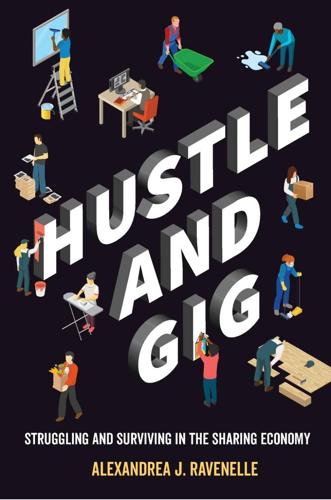
Hustle and Gig: Struggling and Surviving in the Sharing Economy
by
Alexandrea J. Ravenelle
Published 12 Mar 2019
New York: National Employment Law Project. Newcomer, Eric. 2017. “In Video, Uber CEO Argues with Driver over Falling Fares.” Bloomberg, February 28. Newcomer, Eric, and Olivia Zaleski. 2016. “Inside Uber’s Auto-Lease Machine, Where Almost Anyone Can Get a Car.” Bloomberg, May 31. Newman, Katherine S. 1999. No Shame in My Game: The Working Poor in the Inner City. New York: Knopf. Newton, Casey. 2013. “Tempting Fate: Can TaskRabbit Go from Side Gigs to Real Jobs?” The Verge, May 23. New York Communities for Change and Real Affordability for All. 2015. Airbnb in NYC: Housing Report. New York: New York Communities for Change and Real Affordability for All.
…
“Work at Home? Your Employer May Be Watching.” Wall Street Journal, July 30. Shepherd, Dean A., and J. Michael Haynie. 2011. “Venture Failure, Stigma and Impression Management: A Self-Verification, Self-Determination View.” Strategic Entrepreneurship Journal 5:178–97. Shipler, David. 2004. The Working Poor: Invisible in America. New York: Knopf. Shontell, Alyson. 2014. “All Hail the Uber Man! How Sharp-Elbowed Salesman Travis Kalanick Became Silicon Valley’s Newest Star.” Business Insider, January 11. Siegel, Reva B. 2003. “A Short History of Sexual Harassment.” In Directions in Sexual Harassment Law, ed.
…
Byers. 2015. “First Look at Online Reputation on Airbnb, Where Every Stay Is above Average.” Social Science Research Network, January 28. Zinn, Howard. 1999. A People’s History of the United States, 1492–Present. New York: HarperCollins. Zuberi, Dan. 2006. Differences That Matter: Social Policy and the Working Poor in the United States and Canada. Ithaca, NY: Cornell University Press. Zukin, Sharon. 2009. Naked City: The Death and Life of Authentic Urban Places. New York: Oxford University Press. Zumbrun, Josh. 2016. “Voter Discord Isn’t over Wages.” Wall Street Journal, August 7. Index Abundant Host, 46 acceptance rates, 1–2 access, 28fig. 2 accidental occupational liability policies, 110–11 Adshade, Marina, 127 advertisements: Airbnb, 44fig. 5; by Kitchensurfing, 57, 59; TaskRabbit, 100fig. 12; by Uber, 50, 51fig. 7 African-Americans: as Airbnb hosts, 35, 39; digital divide and, 193; discrimination against, 169, 193; economic issues of, 140; as Uber users, 35; wealth gap and, 195 age issues: age of chefs, 59; age of drivers, 53; age of hosts, 49; age of sharing economy workers, 62; age of TaskRabbits, 56; child labor, 65, 70, 224n12, 225n15; Schor on, 224n1; in textile industry, 67, 225n15 Airbnb: overview, 7, 21, 22; African-American hosts, 35–36, 39; background on, 43–49; bathroom use, 88; business use of, 182, 228n14; children and hosting, 12–13; choices, 168; commercial user crackdown, 20; communication issues, 63; Couchsurfing and, 9; cultural capital and, 165, 166–67; discrimination and, 170; as durable-assets-sharing sites, 27; economic impact of, 39; employee monitoring, 204; entrepreneurship and, 6, 164–66; flexibility, 168; high capital-barrier, 43, 43tab. 1, 166–68; for homeless people, 4; illegal rentals, 40, 41, 149–52; income potential, 19; Instant Book service, 170; interaction-free key transfers, 34; low pricing strategy, 231n8 (ch.7); marketing, 160; multilocation hosts, 40; participant recruitment and methodology, 42–43; Peers and, 72; promises of, 25; response rates, 81–82, 160; safety issues, 113–14; as sharing economy company, 26, 27–29; social interactions and, 33; striving workers and, 132; struggling workers and, 132; successful workers and, 19–21, 39–40, 131–32; trust and, 30; worker-client sexual interactions, 128–31 Airbnb hosts.

Essential: How the Pandemic Transformed the Long Fight for Worker Justice
by
Jamie K. McCallum
Published 15 Nov 2022
When employers control access to healthcare, workers either lose it when they lose their job or are more easily bullied into working in dangerous situations to keep it. When only half the working population has a right to sufficient paid sick leave, the other half lives and works at the behest of others. When the working poor are denied the right to Medicaid explicitly because lawmakers will not extend the Affordable Care Act (ACA) provision to grant it to them, as happened in seven states, they are the captive subjects of a ruling elite. These developments are the inevitable outcome of a system where one class places profits over people.
…
Forty-seven people jumped to their deaths that day. One hundred others were burned alive or died from asphyxiation. Bosses had locked the exits to the stairwells, a common practice then to ensure workers didn’t take unauthorized breaks, preventing workers from being able to flee the fire. Perkins had been an advocate for the working poor before the fire, but that single day transformed her thinking about what real change looked like. “The New Deal began on March 25, 1911,” she later said. Her memory of that day convinced her that “something must be done. We’ve got to turn this into some kind of victory, some kind of constructive action.”
…
Early in her career, in 1897, she accepted a teaching position at a women’s medical school in Chicago and became a resident of Jane Addams’s famous Hull House. The settlement house brought the well-off, immigrants, and poor together, giving Hamilton an insider’s view of poverty-induced health defects among the working class. She lived with and treated the working poor and immigrants for diseases resulting from commonplace working conditions. It was at Hull House she was encouraged to pursue a particular life of the mind that combined rigorous research with a social agenda. “Life in a settlement does several things to you,” Hamilton noted in her 1943 autobiography, Exploring the Dangerous Trades.

The Second Intelligent Species: How Humans Will Become as Irrelevant as Cockroaches
by
Marshall Brain
Published 6 Apr 2015
But current workers are making less, retired workers are living longer, and the number of people retiring is immense. We will find ourselves in a situation where we have no way to support the growing elderly population. As medical science finds ways for people to live longer and longer, we as a society find ourselves wishing that the elderly would actually die sooner. That is dysfunctional. The working poor represent another area of dysfunction. We have a large segment of the American population - tens of millions of people - who are playing by the rules. They are working hard. Many of them are working two or three jobs - they are some of the hardest working people in our economy. Yet they cannot make ends meet because wages are so low.
…
And most minimum wage workers will still become unemployed as robots arrive. Should we reduce the work week, say to 30 hours per week (then 20, then 10), to decrease unemployment and increase leisure time? It would be outstanding if we could make this decision as a society, but all indicators today point in the opposite direction. The working poor are making so little money that they are having to work 60 hours a week in two or three jobs. Many salaried employees are compelled to work far more than 40 hours per week. We would have to reverse a number of trends to move our society to a 30 hour work week, and corporations will resist these changes every step of the way.

Let Them In: The Case for Open Borders
by
Jason L. Riley
Published 14 May 2008
Normally, it’s liberals who traffic in class-envy statistics, fretting about “income inequality,” “stagnant wages,” “rising poverty,” “the disappearing middle class,” and the plight of the “working poor.” A 2004 BusinessWeek story was typical of this thinking. It noted that “one in four workers earns $18,800 a year or less,” and went on to prescribe the usual left-wing remedies, including higher minimum wages and more unions. But free-market conservatives know that such income data is misleading. A third of those people are part-time workers and another third are under twenty-five. That leaves us with one-third of one-fourth—or roughly 8 percent of this subgroup—who are actually “working poor” in any long-term sense. Poverty is transient for the overwhelming majority of Americans, so a snapshot of who’s in the bottom fifth of income earners at any one point in time doesn’t tell you much.

Big Capital: Who Is London For?
by
Anna Minton
Published 31 May 2017
But it also impacts private tenants on housing benefit, who get pushed into shocking conditions in temporary accommodation, perhaps even as far out as Margate, which is becoming an unusual mix of priced-out London artists and creatives alongside a large homeless population in temporary accommodation. So from Kensington to Acton, from Acton to Forest Gate and from Forest Gate to the South Coast, individuals, couples and families – both the middle classes and the so-called ‘claimant cultures’ and working poor – are pushed out of London altogether. This is the ‘super prime crisis’, and it affects everyone. Very large injections of global capital into London’s safe haven, including corrupt money, have combined with quantitative easing, limited regulation, flexible employment and some of the lowest corporate tax rates in the world, to transform London in under a decade.
…
This means generation rent must pay through the nose to live in an increasingly hollowed out, sterile city which provides a playground for the rich in the centre, hipster gentrifying areas in the hinterlands and poor housing for cheap labour in our banlieues, in parts of Barking and Dagenham or Edmonton where the ‘working poor’ live.14 HOUSING AND MENTAL HEALTH It is a truism that moving house is the third most stressful life event. It’s rarely an easy experience even when the move is voluntary and wanted. But it’s incomparably worse when it involves being wrenched away from the support networks, daily routines and the sense of identity that comes with being able to call a place a home.

Last Best Hope: America in Crisis and Renewal
by
George Packer
Published 14 Jun 2021
Most of the books and columns and gossip aimed at the 1 percent come from people just a few percentage points below, implying that the high salaries of elite professionals are legitimately earned, while the capital windfalls of business executives and investors are crooked. Below the meritocrats are the vast middle and working classes, some with college degrees and some without—skilled tradespeople, government clerks, schoolteachers—all in constant peril of being right-sized or automated into the ranks of the working poor, where supermarket cashiers and warehouse workers toil for low wages. The hazardous lives of those below are a source of quiet self-congratulation for meritocrats, but smugness barely holds down a deeper feeling, which is fear. The fall is steep, and when parents on the fortunate ledge of this chasm look down, vertigo stuns them.
…
A woman in her sixties in Tampa, a retired municipal employee who had made and then lost money in real estate, described herself to me as a member of “the formerly middle class.” She meant that she no longer lived with any security. Her term could apply to a nonunion electrician making $52,000 a year and a home health aide making $12 an hour. The first still belongs financially to the middle class, while the second is working class—in fact, working poor. What they share is a high school diploma and a precarious prospect. Neither of them can look with confidence on their future, less still on their children’s. The dream of leaving their children better educated and better off has lost its conviction, and therefore its inspiration. They can’t possibly attain the shiny, well-ordered lives they see in the houses of elite professionals for whom they work.
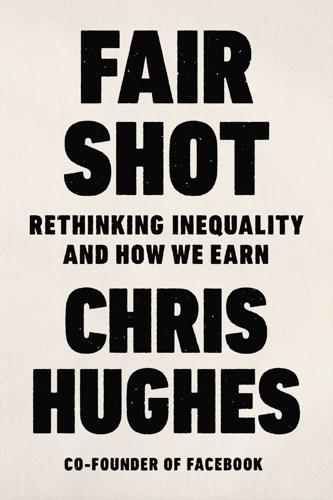
Fair Shot: Rethinking Inequality and How We Earn
by
Chris Hughes
Published 20 Feb 2018
While it’s true that addicts might spend an extra $500 on drugs, the solution to their challenge isn’t to keep them in poverty—it is better substance abuse programs to help them battle their addictions. A guaranteed income would also be a powerful antidote to homelessness. In fact, it could help prevent homelessness in the first place. A recent study examined what happens when you give a working poor person on the brink of homelessness a one-time $1,000 cash infusion. The recipients were 88 percent less likely to be homeless three months later, and 76 percent less likely after six months. “We found no evidence that this effect fades away,” the author of the report, James Sullivan from the University of Notre Dame, told Science magazine.
…
Our World in Data. “Price Changes in Consumer Goods and Services in the USA, 1997–2017.” November 7, 2017. https://ourworldindata.org/grapher/price-changes-in-consumer-goods-and-services-in-the-usa-1997-2017. Oxfam America and Economic Policy Institute. “Few Rewards: An Agenda to Give America’s Working Poor A Raise.” 2016. https://www.oxfamamerica.org/static/media/files/Few_Rewards_Report_2016_web.pdf. Painter, Anthony, and Chris Thoung. “Creative Citizen, Creative State: The Principled and Pragmatic Case for a Universal Basic Income.” RSA, December 2015. https://www.thersa.org/globalassets/reports/rsa_basic_income_20151216.pdf.
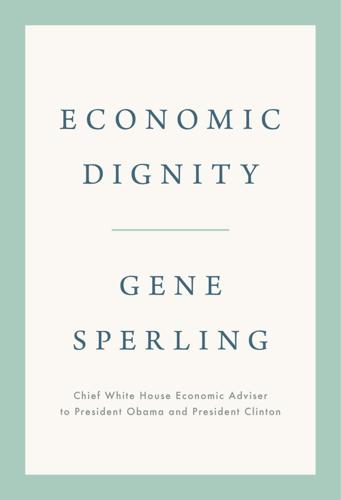
Economic Dignity
by
Gene Sperling
Published 14 Sep 2020
Paul Ryan’s Theory on Poverty Is Tricksy—and Wrong,” Slate, March 5, 2014, https://slate.com/business/2014/03/paul-ryan-war-on-poverty-federal-programs-are-not-a-poverty-trap.html; and “Read the House GOP’s Poverty Report,” Washington Post, March 2, 2014, http://apps.washingtonpost.com/g/page/politics/read-the-house-gops-poverty-report/850/. 20. Sharon Parrott, “Rubio Proposal to Replace EITC Would Likely Come at Expense of Working-Poor Families with Children,” Off the Charts (blog), Center on Budget and Policy Priorities, January 9, 2014, https://www.cbpp.org/blog/rubio-proposal-to-replace-eitc-would-likely-come-at-expense-of-working-poor-families-with. 21. Bureau of Labor Statistics, “National Compensation Survey: Employee Benefits in the United States, March 2018,” September 2018, 311, https://www.bls.gov/ncs/ebs/benefits/2018/employee-benefits-in-the-united-states-march-2018.pdf. 22.
…
Mothers receiving the biggest EITC increases had significant improvements across health indicators such as reduced mental stress, compared with otherwise similarly situated women who were not eligible for the increases. Additionally, EITC increases are linked to better academic outcomes for elementary and middle-school students as well as higher college enrollment for children from working poor families. The overwhelming weight of the evidence, even if not unanimous, has found the EITC has positive labor market effects, including being the biggest factor in the major increase in employment for single mothers in the 1990s.26 Yet to lead to a true economic dignity wage, the EITC needs to take a bold step forward with what I call an “EITC for All” proposal.27 The EITC, together with the minimum wage, needs to create a guaranteed living wage that not only raises every working American above the poverty line but ensures the capacity to care for and enjoy family and to be a greater buffer for economic security for those in the middle class.
…
Eisenhower, “Special Message to the Congress Transmitting Proposed Changes in the Social Security Program,” Social Security Presidential Statements (August 1, 1953), accessed November 9, 2019, https://www.ssa.gov/history/ikestmts.html. 15. For Gingrich welfare comments, see Rob Wells, “Tax Bill Would Deny Key Benefit to Working Poor,” Associated Press, July 3, 1997. For “lucky duckies,” see “The Non-Taxpaying Class,” editorial, Wall Street Journal, November 20, 2002, https://www.wsj.com/articles/SB1037748678534174748; “Lucky Duckies Again,” editorial, Wall Street Journal, January 20, 2003; and “Even Luckier Duckies,” editorial, Wall Street Journal, June 3, 2003, https://www.wsj.com/articles/SB1037748678534174748. 16.

Tailspin: The People and Forces Behind America's Fifty-Year Fall--And Those Fighting to Reverse It
by
Steven Brill
Published 28 May 2018
He promoted meetups for aspiring tech entrepreneurs, organized informal hackathons and training programs, and sponsored speakers programs. By 2012, he recalled, “I could see that the most productive opportunity was to focus on using technology to boost the 64 percent of New Yorkers who lack college degrees and are the poor and the working poor into the middle class.” He also was inspired by his military experience, where, he says, “some of the smartest, hardest-working people I’ve ever met were soldiers who didn’t graduate from college.” Through a network of high school and college friends and others he had met through various local civic and business organizations, Hsu recruited a handful of managers and volunteer coding teachers.
…
At the same time, because cash assistance was now so much less available, the $2.00-a-day economy that Edin and Shaefer wrote about became a reality for millions, including single mothers who, as the authors so vividly documented, spent their days trying to find jobs that would take them and their children off a relative’s couch or out of homeless shelters. Programs initiated by Clinton, George W. Bush, and Obama to expand food stamps, school lunches, and Medicaid, to provide health care to lower-middle-class and poor children, and to give earned income tax credits to the working poor have been important factors in staving off still more poverty in an economy that is so tilted toward those at the top. Fifty-two percent of the nation’s fifty million public school students qualified for free or reduced-priced lunches in 2016, and 44.2 million Americans received food stamps. “We should not discount everything we’ve done,” said Edelman.
…
While the unemployment rate that reached 10 percent in 2009 had come down sharply by 2017, the jobs that came back were typically lower-paying or part-time, and there were not enough to meet the needs of the more than seven million Americans who were still looking for work. Two thirds of Americans in one late 2016 poll agreed that “good jobs are difficult to find.” Much of the debate in recent years about poverty has included the term “working poor.”*2 As the number of working people using food stamps or requiring housing assistance indicates, millions of workers are poor or are on the verge of poverty. Millions more who have dropped out of the workforce out of frustration would welcome the training and the work that would make them un-poor.
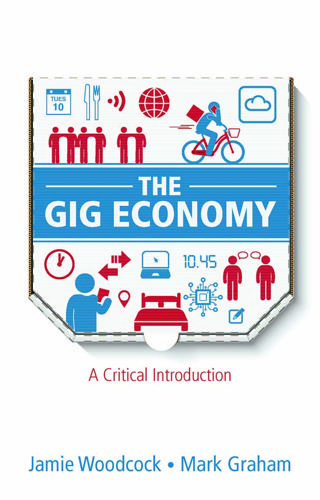
The Gig Economy: A Critical Introduction
by
Jamie Woodcock
and
Mark Graham
Published 17 Jan 2020
These kinds of work involved a ‘link’ between the work relationship (i.e. between the buyers and sellers of time) and the ‘wider risk-sharing role of the welfare or social state’, which came to prominence by the middle of the twentieth century (Fudge, 2017: 379). This meant that the risks of work were increasingly mitigated through social agreements, particularly with social security nets that could cushion workers from some negative outcomes, such as lack of work, poor working conditions or illness and accidents. Of course, referring to ‘the standard employment relationship’ carries with it the implication that this is somehow the ‘normal’ state of affairs. It then follows that precarious work should be understood as a break from this norm, as an attack that newly undermines long-standing conditions and benefits.
…
The availability of cheap (<$20) smartphones and pay-as-you-go mobile plans have made the mobile phone an essential piece of technology to communities from Brazil to Burundi to Bangladesh. Urban regions of low- and middle-income countries are characterized by even higher levels of connectivity, and many of the working poor in cities as varied as Cairo, Bangkok, Nairobi and Rio all find ways of connecting. As alluded to above, this connectivity for most people in low-, middle- and high-income countries is no longer confined to desktop machines plugged into a wall. A decade ago, internet access tended to be something limited to the home or the office, with many people still using dial-up modems.

Survival of the Richest: Escape Fantasies of the Tech Billionaires
by
Douglas Rushkoff
Published 7 Sep 2022
It’s a heck of a lot easier and less stressful to stay focused on 3D models of interplanetary spacecraft or animated renderings of interlinking seastead communities than to consider the lives of the people who would have to make the Doordash deliveries to such places. The only substantive difference between today’s reality and the one in their high-tech fantasies is the absence—or at least the invisibility—of the working poor. On some level, those who intend to create a future based on The Mindset understand the harm they must do in order to maintain their privilege. Their business models almost universally depend on exploiting both consumers and the labor who serve them. While these companies addict our tweens to social media and our crops to glyphosate, they also send slave labor into caves to mine for rare earth metals and out onto toxic waste dumps to forage for “renewables .”
…
Where the people reforming today’s social media platforms may hope to mitigate the influence of alt-right extremists and conspiracy theorists on our beliefs and behavior, Lippmann and Wilson were concerned about early-twentieth-century nationalists who sought to keep America isolated and turned inward. Their concerns felt justified. They had lived through Teddy Roosevelt’s failed effort to engender a progressive populism. In a fashion vaguely similar to Trump, Roosevelt rose to power by articulating the complaints of the working poor against corporate elites. He demanded the press expose corporate corruption and the anger of the common people, but all this “muckraking” only frightened the middle class reading about angry crowds in the daily newspaper. Otherwise compassionate progressives found themselves more concerned about taming the mob than addressing whatever underlying issues were leading to the unrest.
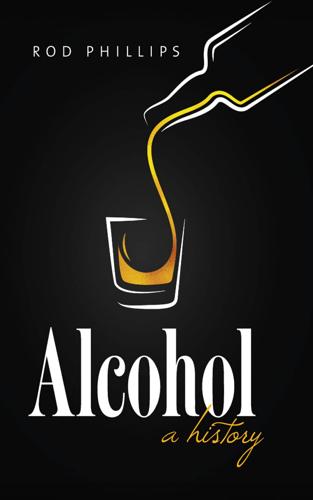
Alcohol: A History
by
Rod Phillips
Published 14 Oct 2014
The episode speaks not only to the virulence of anti-Semitism in medieval Europe but also to both the continuing suspicion and consumption of water. Jews, we might note, were not accused of poisoning barrels of beer or wine. For the most part, the diets of the homeless, the transient, and even the stable working poor are lost to us, but there is occasional, if uneven, evidence for the strata above them. In the village of Montaillou, in the foothills of the Pyrenees, peasants drank wine as part of the daily diet. The 250 inhabitants supported a wine-seller who made rounds of the houses selling wine brought by mule from Tarascon and Pamiers; but shepherds drank only sour wine and some milk on a daily basis, and good wine was reserved for festive occasions.22 Farther east and north, in wine-producing Lorraine, wine was consumed in households as grand as that of the Duke of Lorraine and as modest as those of peasants who made it for their own consumption.
…
The stress on the particular evils of women’s drinking echoed a contemporary reassertion of the belief that women were destined by nature to be mothers and that they bore particular responsibilities toward their families. Excessive drinking by women was not only deplorable but unnatural. But affordable gin must have been attractive to many of London’s workers as a pleasant experience in a life that offered few. Many of the working poor were recent migrants from the country, used to drinking festivities reined in by informal social mechanisms that were either absent from or less effective in the urban environment. It is believable that the better-off interpreted any widespread public intoxication as evidence of social disorder and collapse.
…
This class-specific distinction marked a shift away from the undifferentiated condemnation of drunkenness as sinful and as a first step on a life of immorality and crime. By the mid-eighteenth century, elite drunkenness was more likely to be seen as a private vice that had no social consequences (and which society and the law might therefore overlook), while heavy drinking by the working poor (the very poor and the indigent could not afford to drink alcohol, let alone drink enough to get drunk) was associated with crime and social disorder.18 This perspective emerged from a vigorous debate, coinciding with the so-called gin-craze in the first half of the 1700s, about the legal consequences of drunkenness.

Nomad Citizenship: Free-Market Communism and the Slow-Motion General Strike
by
Eugene W. Holland
Published 1 Jan 2009
“In the history of primitive ac cumulation,” Marx says, all revolutions are epoch-making that act as levers for the capital class in course of formation; but, above all, those moments when great masses of men are suddenly and forcibly torn from their means of subsistence, and hurled as free and “unattached” proletarians on the labor-market.55 Hence what the title of the first chapter of part VIII calls the “secret” of so-called primitive accumulation is that it really designates the ruthless des titution of the working poor, not the stockpiling of wealth in liquid form: The capitalist system presupposes the complete separation of the laborers from all property in the means by which they can realize their labor. . . .The process, therefore, that clears the way for the capitalist system, can be none other than the process which takes away from the laborer the possession of his means of production. . . .
…
Whereas the major accounts in Marx and Marxism (of the capitalist system as a functional totality; of its simple reproduction) take the existence of capital as a given, or derive it from exchange-value in a self-contained (or “latently contained”) dialectical progression, the minor accounts in Marx treat the contingent historical emergence and ongoing reproduction of capitalism as a function of the initially violent yet equally ongoing dispossession of the working poor. Such is the open “secret” of so-called primitive accumulation. This second theoretical displacement is clearly related to the first. There the question of who has the phallus and attempts to possess it was displaced by the problem of overcoming the effects of enforced separation from the Mother as source of the means of life and enjoyment.
…
Lest we get misled by M arx’s invocation of the “self-positing and selfrealization of exchange-value” once it circulates as capital in such a multi cycle system, we should remember the so-called secret of primitive accumu lation: that despite appearances and terminology, primitive accumulation is fundamentally about the forcible dispossession of the working poor and their ensuing consignment to the status of wage slaves. In making this point about the relative importance of money and labor to the forma tion of capital, in one of the few passages in the early chapters of Capital, volume 1 (chapter 6) that refers explicitly to history, Marx insists that the historical conditions of [capital’s] existence are by no means given with the mere circulation of money and commodities.

American Foundations: An Investigative History
by
Mark Dowie
Published 3 Oct 2009
Not only do they fund long-neglected areas like health promotion, disease prevention, and public health, but they are also increasingly directed by trustees from the communities they serve rather than by overnight millionaires and the managers of new for-profit entities (as earlier conversions were). Most of these new foundations are better informed, more imaginative, and more responsive to community needs than traditional health founda tions. Whereas the latter are unlikely to fund programs in children's health and health services for the working poor, such projects are the perennial favorites of many conversions. Several conversion foundations have created hospitals that differ markedly from those evolved from health plans and HMOs. Such hospitals have earmarked, in accordance with state regulation of conversions, considerable funds for indigent care and for other services not offered by new for-profit institutions.
…
Kaplan Fund, and Dade County and New Haven community foundations-have dabbled in arts PRIs, but larger foundations have yet to show an interest. Another lasting problem is described by Paul DiMaggio. Despite the estimable intentions of a few small foundations, "few grants support access to and participation in the arts for the poor and working poor; conservation or preservation of performances in dance, theater, or improvisational music; or assistance for innovative artists and arts organizations. Nor are there many that support programs and organizations promoting the values of pluralism and diversity through genres like jazz and dance. . . .
…
That may be why few other foundations have paid heed to it, although they all seem equally dedicated to discussing, defining, and lamenting the sorry state of civil society. Post-devolutionary America's ability to be truly civil, it seems clear, will not be tested until harder times cause millions of the working poor to fall into the safety nets woven by neighborhood associations and palliative charities supported by faithbased institutions and financed, one supposes, by private foundations. Conservative civil societarians believe that there is enough compassion and financial wherewithal to save them. Only time will tell.

Stuck: How the Privileged and the Propertied Broke the Engine of American Opportunity
by
Yoni Appelbaum
Published 17 Feb 2025
Veiller testified that the “hordes of factory employees” were destroying the “exclusiveness of Fifth Avenue” and that only a height cap could save the property values. The Fifth Avenue Association presented the commission with a straightforward choice. The city could either respect the long-established right of its people to develop their property or use its power to defend the investments of some of its wealthiest citizens at the expense of the working poor. Not every politician lined up with the wealthy. A wave of reformers dislodged the Democrats from city hall, and McAneny was succeeded by Manhattan’s first Jewish borough president, Marcus M. Marks. Marks had made his fortune in the garment business and then served as founding president of the National Association of Clothiers.
…
They needed to allow for tenements and residential hotels and boardinghouses and all the other varieties of nineteenth-century housing that kept dwellings affordable and made homelessness comparatively rare. Instead, Veiller had written his codes to restrain mobility and to make it unprofitable to develop new housing for the working poor. Veiller’s reforms, one leading builder of model tenements complained in 1912, were “the chief cause of high rents,” producing shiny new buildings that no workingman could actually afford and making it all but impossible to construct low-cost units. The only way to make sense of such reforms is to believe the confessions of the men who authored them, who were frankly hostile to immigration, apartments, and mobility.
…
Their new neighborhoods were typically residential monocultures, maintained by the zoning rules and restrictive covenants demanded by government lenders. Suburbanites commuted back to their jobs in cities’ business districts in their new cars, on huge government-funded highways that sliced through older neighborhoods. The working poor were left behind, as were Black families and others barred by discriminatory rules from following. In part, the movement of the white middle class—the children and grandchildren of the European immigrants who had seemed ineradicably, unassimilably different—toward suburbia was driven by growing affluence, which put the dream of the single-family home within reach of more families.

Utopia for Realists: The Case for a Universal Basic Income, Open Borders, and a 15-Hour Workweek
by
Rutger Bregman
Published 13 Sep 2014
And whereas the basic income debate under President Johnson had begun when experts signaled unemployment as becoming endemic, Nixon now spoke of joblessness as a “choice.” He deplored the rise of big government, even though his plan would distribute cash assistance to some 13 million more Americans (90% of them working poor). “Nixon was proposing a new kind of social provision to the American public,” writes the historian Brian Steensland, “but he did not offer them a new conceptual framework through which to understand it.”4 Indeed, Nixon steeped his progressive ideas in conservative rhetoric. What, we may well ask, was the president doing?
…
On August 7 of that same year, Nixon told Moynihan that he’d been reading biographies of the British Prime Minister Benjamin Disraeli and the statesman Lord Randolph Churchill (the father of Winston). “Tory men and liberal policies,” Nixon remarked, “are what have changed the world.”5 The president wanted to make history. He saw himself presented with the rare, historic chance to cast out the old system, raise up millions of working poor, and win a decisive victory in the War on Poverty. In short, Nixon saw basic income as the ultimate marriage of conservative and progressive politics. All he had to do was convince the House and Senate. To put his fellow Republicans at ease and manage concerns over the Speenhamland precedent, Nixon decided to attach an additional proviso to his bill.
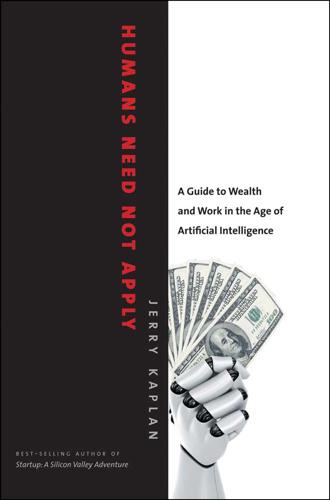
Humans Need Not Apply: A Guide to Wealth and Work in the Age of Artificial Intelligence
by
Jerry Kaplan
Published 3 Aug 2015
He prefers to live a relatively modest, though comfortable, lifestyle.15 But enough about the rich. Let’s look at the other side of this coin—the myriad of talented people who work hard yet struggle all their lives for simple things that the elite take for granted. It’s easy to display statistics and charts showing just how difficult life is for the working poor, much less the nonworking poor. But somehow these tools don’t capture the real gravity of their circumstances. So instead, I’ve selected a single individual—typical in many ways—to profile, in the hope that his story will convey these struggles more graphically. Emmie Nastor is the perfect employee.
…
See income; salaries Wall Street, 51–53, 57–58, 95 Walmart, 139–40, 142–43 average revenue per employee, 139, 177 employee numbers, 116 warehouses, 101–2, 134–35 box unloading, 39 chaotic storage tracking, 135, 144 Waterloo, battle of (1815), 58 water quality, 168 Watson (IBM AI computer program), 26, 31, 36, 39, 150, 198 Watson Research Lab (IBM), 19 wealth, 3, 12, 109–19, 127, 132 from assets ownership, 14–15, 174–76 benefits of, 165–66 civic responsibility and, 58 disparities in, 164–65, 169–70, 176, 180–87 distribution of, 186 factors in creating, 12 fairer distribution of, 86–87 Forbes ranking of, 109, 113 HFT program transfer of, 57, 91 lifestyle embodiments of, 57, 109, 110–11, 112, 114 luxury item sales and, 117–18, 165–66 philanthropy and, 58, 113, 118–19 power from, 114–15 reinvestment vs. spending of, 117 super-wealthy and, 11, 111–13, 116–19, 118–19, 164–65 synthetic intellects’ accumulation of, 91–92 top 1 percent holders of, 11, 111–13 worker median salary and, 116 websites: advertising sale of space on, 64–72 electronic surveillance of visits to, 9, 64–75 individually targeted ads, 64–75 user identifier, 65, 66 WebTV, 127 weeding, 144 Weisel, Thom, 115 welfare recipients, 170 Wellington, Duke of, 58 Wellpoint, 150 wide-area high-bandwidth wireless communication, 126–27 wildfire extinguishers, 44 Winster.com, 119, 122–23, 124 wireless communications, 45 words, shifted meanings of, 191–92, 198, 203 workforce. See labor market working poor, 119–21 working women, 172 work-life balance, 171 workplace, 48 robot danger potential, 37–38 WPA (Works Progress Administration), 170 Yahoo, 67 Yeats, William Butler, 48 Zandi, Mark, 117 Zuckerberg, Mark, 223n15

What About Me?: The Struggle for Identity in a Market-Based Society
by
Paul Verhaeghe
Published 26 Mar 2014
13 Those statistics appear in a somewhat different light once you know that since the neo-liberal Hartz reforms (2003–2005), German jobseekers have been forced to take virtually any job offered to them, collective labour agreements aren’t enforced in half of Germany’s companies, and the other half are increasingly staffed by temps who have little or no protection and often earn 30–40 per cent less than the staff on fixed contracts working alongside them. The result is that one in five working Germans (almost seven million in 2008) receive a net hourly wage of four to six euros, forcing many people to take on two jobs. The reduction in unemployment is matched by an almost equal increase in the number of working poor. According to official EU figures, poverty in Germany increased from 12.5 per cent in 2005 to 15.5 per cent in 2009. Between 2000 and 2009, real wages shrank by 4.5 per cent, causing social inequality to soar. By way of comparison: in the same period, Belgian wages increased by 7.4 per cent, roughly keeping pace with the cost of living.14 The news article celebrating the German model was followed shortly afterwards by a corresponding debate on the Belgian figures.
…
The system creates an underclass who regard themselves as failures, are ashamed, and seek to draw as little attention to themselves as possible. The old silent majority has now become an invisible majority of isolated groups who try to hide their difficult situation from the outside world. This also has the effect of undermining solidarity just when it is most sorely needed. Wallraff believes that these working poor will soon become a self-perpetuating problem because their children are so disadvantaged. In a society of this kind, there can be no question of a meritocracy for these youngsters.15 From Wallraff, we can move on to the impact on individuals of the misconception that to measure is to know. Figure-driven evaluation and performance interviews are lethal to job satisfaction, motivation, loyalty, and identification with an enterprise.

After the New Economy: The Binge . . . And the Hangover That Won't Go Away
by
Doug Henwood
Published 9 May 2005
But since then, "long-term economic growth has had little impact on poverty among full-time workers."^^ The poverty rate among such workers is admittedly low—only around 3%—but these are the best-positioned workers in the labor force, and the poverty line is a pretty undemanding benchmark. As the report's subtide said, "America's Full-Time Working Poor Reap Limited Gains in the New Economy." Inclusion of "the New Economy" isn't just PR spin; as the report points out, "an increase in the relative share of low-skill employment is one characteristic of this 'New Economy...,'" though "low-pay" is more relevant to the analysis than "low-skill."That's not what most New Economy rhetoric emphasized, of course, but the bubble's sales force never deployed much of rigorous evidence.
…
That's not what most New Economy rhetoric emphasized, of course, but the bubble's sales force never deployed much of rigorous evidence. Apologists were quick to point out that the Conference Board's report didn't include the beneficial effects of the Earned Income Tax Credit (EITC), which has boosted the incomes of the working poor dramatically: in 1998, almost 20 miUion returns claimed the EITC, and $32 billion was paid to those who filed them (Herman 2000).That works out to an average of $1,600 per return, which is a lot better than nothing, but which amounts to just $4.38 a day. But while the official measure, on which the Conference Board relies, doesn't include the EITC (or Food Stamps), it also doesn't account for taxes or child-care expenditures.
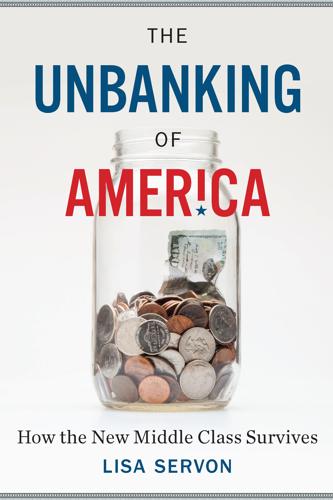
The Unbanking of America: How the New Middle Class Survives
by
Lisa Servon
Published 10 Jan 2017
I discovered that chronic financial insecurity is growing among the middle class. In his book The Great Risk Shift, Jacob Hacker writes that “economic insecurity is not a problem faced by a small vulnerable segment of the population. It is a problem faced by a wide swath of Americans . . . Problems once confined to the working poor . . . have crept up the income ladder to become an increasingly normal part of middle-class life.” A recent study conducted by the Center for Financial Services Innovation found that 57 percent of Americans—138 million people—are struggling financially, more than double the number of adults the FDIC categorized as unbanked or underbanked in its most recent survey.
…
But the odds are stacked against all of us now, in ways they’ve never been before. It’s time to demand a change. It’s been two years since Ariane, my fellow Check Center teller, left for a better job at a veterinarian’s office. The regular hours and better pay meant that life was more predictable, but Ariane aimed higher. She wanted to leave the working poor and join the middle class—the “old” middle class, in which a college degree and a regular paycheck purchased financial security. So she paid off her payday loans, what Suze Orman would call “bad debt,” and took out student loans, considered “good debt” because she was investing in herself, in order to go to college full-time.
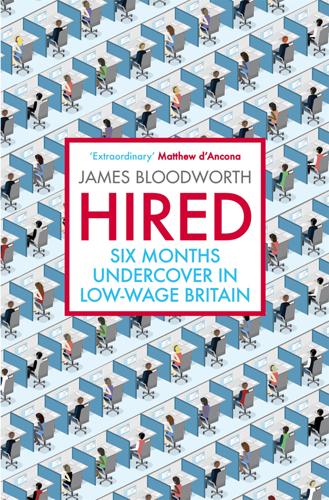
Hired: Six Months Undercover in Low-Wage Britain
by
James Bloodworth
Published 1 Mar 2018
A pessimist might even argue that the social democratic gains of the twentieth century depended to some extent on the existence of a class of semi-slaves toiling away behind an ‘iron curtain’. Once people had liberated themselves from the power of the commissars, capitalist countries could once again risk antagonising the working poor with little fear of communist subversion. But we also live in the world we do today because of conscious choices made by our own politicians. There exists a discernible thread running right the way from the Welsh Valleys and the men and women I met there to the dingy warehouses, private care homes, call centres and the fleet of Uber drivers who, as I write this, swarm around the West End of London searching desperately for riders.
…
.: These Poor Hands 23, 149, 190 courier firms 211, 215, 217, 223, 236, 244–7, 250, 256, 257 Cwm, Wales 147, 148, 187, 190, 195, 196, 197 Cwmbran, Wales 143 Daily Express 124–5 Daily Mail 66, 134, 188 Dan (bicycle courier) 248, 249 Dangerfield, George 72 Davies, Idris 148–9 Gwalia Deserta (Wasteland of Wales) 148 ‘The Angry Summer’ 174 debt 62, 69, 146, 151, 153 Deliveroo 215, 217, 223, 250, 256, 257 democratic socialists 192 Department for Work and Pensions 133 Dickens, Charles 29, 205, 210, 249; Hard Times 138–9 Disclosure and Barring Service (DBS) 88–90, 109–10, 214 Dorothy (housemate of JB) 203, 204–5 DriveNow 217 Dropit 217 Eastern Europe, migrant workers from 11, 13, 15, 21, 24, 26–7, 30, 32, 33, 34, 45, 57, 61–2, 75, 114–16, 128–9, 154, 203–4, 260–1 see also under individual nation name Ebbw Vale, Wales 147, 149, 154; legacy of de-industrialisation in 187–200 Elborough, Travis 93 emergency housing 96 employment agencies 1, 16, 19, 20, 23, 37, 38, 39, 40, 41, 42, 43, 56, 65–6, 70, 72, 73, 82, 86, 127, 130, 158, 189, 194 see also under individual agency name Employment and Support Allowance (ESA) 248 employment contracts/classification: Amazon 19–20, 53, 58 care sector 87–8, 107–8, 116 Uber 214–15, 222, 229–35, 243, 245, 250–2, 257 zero-hours see zero-hours contracts employment tribunals 38, 229–30, 243–4 English seaside, debauchery and 92–3 Enterprise Rent-A-Car 214 ESOL (English for Speakers of Other Languages) programmes 115–16 European Economic Community (EEC) 195 European Referendum (2016) 61, 195–6 Evening Standard 208, 241 Express & Star 59–60 Fabian Society 109 Farrar, James 229–31, 232, 233, 234, 236, 238, 240, 241–2, 250, 254, 255–6 Fellows of the Academies of Management 17 Fernie, Sue 182 financial crisis (2008) 1, 2, 45, 125, 195, 209 Flash (former miner) 165–8, 170, 171–2, 174, 175, 176–8, 179, 188, 196 Fleet News 246 Foot, Michael 149 football 56, 58, 92, 94, 97, 98, 126, 135, 169 fruit picking 61 FTSE 123, 262 Gag Mag 122 Gallagher, Patrick 246 Gary (homeless man, Blackpool) 96–104, 105 Gaz (Gag Mag seller, Blackpool) 122 GDP 146 General Election (2015) 109 General Strike (1926) 148, 149, 173 gentrification 219 Geoff (former miner) 189, 190, 191, 193 ‘gig’ economy 2, 208–10, 217–18, 232, 236, 242, 243–4, 248, 249–50, 252, 257 see also Uber Gissing, George: New Grub Street 64 GMB union 36 grammar schools 261 Guardian 5, 235 Hamstead Colliery, Great Barr 169 Hazel (home carer) 110–11, 114, 115, 116, 117, 119 Heller, Joseph: Catch-22 235–6 Hemel Hempstead 54, 70 Henley, William Ernest: ‘England, My England’ vii Hoggart, Richard: The Uses of Literacy 45 home care worker (domiciliary care worker): Disclosure and Barring Service (DBS) checks 88–90, 109–10 employment contracts 87–8, 107–8, 116, 118, 120 length of home care visits 108–9, 110 local authority budget cuts and 107–10 MAR (Medication Administration Record) sheets 114, 115 migrant workers as 114–16 negligent 86–7 privatisation of social care and 106–8, 109 recruitment 82–4 ‘shadowing’ process 88, 109–10 societal view of 106 staffing crisis 85–6, 119 suicide rate among 100 typical day/workload 110–14, 118 unions and 88 view job as vocation 86–7 wages/pay 107–8, 117, 118–19, 159 Home Instead 119 homelessness 95–105, 138, 187, 208 hostels 95, 96, 101, 102 housing/accommodation: Amazon workers, Rugeley 20–2, 24–6 Blackpool 80, 124, 137–8 buy-to-let housing market 24 emergency housing 96 homelessness and 95, 96, 101, 102, 137–8 hostels 95, 96, 101, 102 inability to buy 62 landlords and 12, 21, 24, 39, 67, 69, 95–6, 137–8, 164, 204, 206, 258 London 203–8 migrant workers and 20–2, 24–6, 197–8 social housing 62, 206 Swansea 124, 150 housing benefit 96, 137–8, 248 immigration 26–7, 61, 115–16, 128–9, 144, 193, 197–9, 236, 259–61 see also migrant workers indeed.co.uk 83–4 independent contractors 209, 248, 251–2 Independent Workers Union of Great Britain (IWGB) 230, 257 inequality 18, 73, 123, 125, 207–8, 226, 238, 262, 263 inflation 2, 122 job centres 19, 96, 133–6, 139–40, 156, 158 Joe (housemate of JB) 22 John Lewis 23, 83 Joseph Rowntree Foundation 70, 159 June (call centre employee) 181–2, 183, 184 Kalanick, Travis 215, 228, 229, 233, 235 Kelly, Kath 66 Khan, Sadiq 256 Koestler, Arthur: The God that Failed 228 Labour Party 7, 57, 59, 61, 109, 144, 149, 150, 173, 174 Ladbroke Road, Notting Hill, London 219 Lamb, Norman 109 Lancashire Evening Post 104–5 landlords, private 12, 21, 24, 39, 67, 69, 95–6, 137–8, 164, 204, 206, 258 Lea Hall Colliery, Staffordshire 31–2, 54, 55, 56, 57 Lea Hall Miners’ Social Club, Staffordshire 55, 56, 74 Len (step-grandfather of JB) 143–4 Lili (London) 203–4 living wage 1, 85, 160, 246 Lloyd George, David 172 loan sharks 151, 156 local councils 104–5, 164 London 201–57 accommodation/housing in 65, 203–8, 218 gentrification in 219 ‘gig’ economy in 208–57, 263 homelessness in 95 migrant labour in 205–6, 213, 239 wealth divide in 207–8, 238 London Congestion Charge 254 London Courier Emergency Fund (LCEF) 247 London Metropolitan Police 90 London, Jack 205 low-skilled jobs, UK economy creation of 153 Lydia (Amazon employee) 70 Macmillan, Harold 3 manufacturing jobs, disappearance of 59, 139 Marine Colliery, Cwm, Wales 190 Mayhew, Henry 4, 205 McDonald’s 52, 68, 83 Merkel, Angela 196 Metcalf, David 182 middle-class 6, 39, 51, 67, 68, 69, 72–3, 74, 75, 149, 178, 205, 258, 259, 260, 262, 263 migrant labour: Amazon use of 11, 12, 13, 15, 20, 21, 22–7, 30, 32, 33, 34, 44, 45, 46, 51, 53, 57, 61–2, 65, 71–5, 258, 260–1 care home workers 114–16 ‘gig’ economy and 203–6, 213, 239 restaurant workers 154 retail sector and 128–9 Miliband, Ed 109 mining see coal mining Miners’ Federation of Great Britain (MFGB) 173 Miners’ Strike (1984–5) 3, 174–7 minimum wage 1, 7, 55, 62, 84, 107, 108, 118, 135, 155, 159, 173, 189–90, 209, 212, 235, 236, 245, 250, 262 Morecambe, Lancashire 137–8 Morgan family 156–8 Morgan, Huw: How Green Was My Valley 147 Moyer-Lee, Jason 257 National Coal Board (NCB) 54, 170, 171 National Institute for Health and Care Excellence (NICE) 108 National Union of Miners (NUM) 174, 176 New York Times 222 NHS (National Health Service) 106, 108, 247 Nirmal (Amazon employee) 45–6, 51 Norbert (Amazon employee) 71–5 nostalgia 3, 60, 93–4, 216 Nottingham 2, 151–2 objectivism 228 oil crisis (1973) 122–3 Oliver, Jamie 154 Orwell, George 56, 169 Palmer, William 29 pay see wages and under individual job title and employer name payday loans 156 PayPal 216 Pimlico Plumbers 251–2 platform capitalism 215 PMP Recruitment 19, 189–90 Poland, migrant workers from 128–9, 130, 135, 197–8 ‘poor, the’ 145 Port Talbot, Wales 166, 176, 190, 196 ‘post-truth’ discourse 199 ‘post-work’ world 165 poverty: Blackpool and 132, 137 class and 4 darkness and 96 diet/weight and 137 ease of slipping into 5 Eastern Europe and 26 monthly salary and 156 as a moral failing 188–9 press treatment of 66–7 time and 67 working poor living in 194 Preston, Lancashire 100, 105, 138–9 private school system 123 progressive thought 262 Public Accounts Committee (PAC) 107 Putin, Vladimir 71 Rand, Ayn 228–9, 235, 236; The Fountainhead 228, 229 recession (2008) 1, 45, 104, 121, 125, 156 ‘regeneration’ 55, 60–1, 146 rent-to-own 157–8 retirement, working in 58–9 Reve, Gerard: The Evenings 160 Robin (Cwm) 196, 197 Rochelle (home care worker) 117–19 Romania, migrant workers from 11, 12, 13, 15, 20, 21, 22–7, 32, 44, 46, 51, 53, 61, 65, 71–5, 203, 206, 258 Ron (former miner) 170, 195 Royal London 59 Royal London pub, Wolverhampton 71 Royal Mail 151 Rugeley, Staffordshire 28–35 Amazon distribution centre in 11–76, 79, 86, 119, 127, 128, 159, 258 decline of coal mining industry in 31–2, 54–6, 57, 169 disappearance of manufacturing jobs from 54–63 high street 28–35 immigration and 30–4, 193–4 Tesco and 58–9, 62–3 Scargill, Arthur 175 scientific management theories 17 Scotland Yard 90 self-employment: ’gig’ economy and 214–15, 222, 229–30, 234, 243–4, 245, 246, 249, 250–1 increase in numbers of workers 2, 209 ‘independent contractors’ and 209, 248, 251–2 Selwyn (former miner) 175, 178, 179, 263–4 Senghenydd, Glamorgan pit explosion (1913) 169–70 Shelter 104 Shirebrook Colliery, Derbyshire 55 Shu, William 250 Silicon Valley, California 210, 232 Sillitoe, Alan: Saturday Night and Sunday Morning 2, 3, 94 Sky Sports News 126 social democracy 3, 263 social housing 62, 206 socialism 7, 56, 131, 144, 148, 149, 173 social mobility 58, 199, 261 South Wales Miners’ Museum, Afan Argoed 166, 196 South Wales Valleys 141–200 accommodation in 150, 197 Amazon in 145–6 beauty of 148 call centre jobs in 153–64, 180–6 coal industry and 143–4, 147–9, 165–79, 180, 188, 189, 190–1, 193, 195, 196 immigration and 197–9 JB’s family history and 143–4 legacy of de-industrialisation in 187–200 nostalgia and 147 radical history of 149–50 see also under individual place name ‘spice’ 95 Sports Direct 55 squatting 96, 99 steel industry 176, 180, 188, 189, 190, 196–7 Steven (housemate of JB) 124, 126, 127–31 Stoke-on-Trent 58–9 suicide 99–100 Sunday Times 175 ‘Best Companies to Work For’ 154 Rich List 125 Swansea, Wales 145–6, 150–2, 154–64, 176, 178, 197, 205 Tata Steel 190 tax 65, 69, 70, 118, 146, 158, 159, 163, 164, 212, 229, 244, 246, 248, 251, 255 Taylor, Frederick W.: The Principles of Scientific Management 17 Tesco 35, 57, 58–9, 62–3 Thatcher, Margaret 122, 123, 146, 174–5, 193, 207, 263–4 Thorn Automation 57 Thorn EMI 59 trade unions: Amazon and 36 B&M and 130, 131 call centres and 160, 181, 184–5, 186 care sector and 88 coal industry decline and 55–6, 173, 174, 263–4 decline of 2, 3, 35 ‘gig’ economy and 230, 257, 261 objectivism and 228 oil crisis (1973) and 122 Thatcher and 123, 174, 193, 263–4 Wales and 144, 149 see also under individual union name Trades Union Congress (TUC) 173 transgender people 40–1 Transline Group 19, 20, 37, 38, 39, 40, 41, 43, 65–6, 86 Transport for London (TFL) 211, 212–13, 214, 233, 254, 256 Tredegar Workmen’s Medical Aid Society 247 Trefil, Wales 149 Trump, Donald 7 Uber 207, 211–57 ‘account status’ 221 clocking in at 218 corporation tax and 229 customers 221, 222, 226–7, 237–41, 244, 257 driver costs/expenses 214, 217, 233, 241, 246, 253–5 driver employment classification/contract 214–15, 222, 229–35, 243, 245, 250–2, 257 driver hours 221, 226, 230, 232, 233, 236, 246, 253, 255 driver numbers 211–13, 233–5 driver wages/pay 212, 218, 221, 229–30, 235, 236, 237, 240, 241, 244, 246, 252–5 employment tribunal against (2016) 229–34 flexibility of working for 213–14, 218, 230–3, 248, 250–1 James Farrar and see Farrar, James migrant labour and 213, 236 ‘Onboarding’ class 224–5, 238, 241, 256 opposition to 215–17 philosophy of 228–9, 235, 236 psychological inducements for drivers 222–3 rating system 225–7, 232, 238, 239, 243, 253 rejecting/accepting jobs 221–2, 224–5 ride process 219–21 surge pricing 237, 238, 253 TFL and 211, 212–13, 214, 233, 254, 256 Travis Kalanick and see Kalanick, Travis UberEATS 256 UberPOOL 225, 240–2, 253, 255–6 UberX 212, 225, 240, 241, 255 VAT and 229 vehicle requirements 214 unemployment 2, 32, 36, 62, 121–3, 132, 138, 148, 157, 172, 178, 179, 189–95, 199, 218 Unison 88, 108 Unite 55, 160 United Private Hire Drivers 230, 257 university education 3, 6, 61, 62, 123, 150–1, 152, 153–4 USDAW 130–1 Vettesse, Tony 138 Vicky (care sector supervisor) 86, 87 Wade, Alan 121, 123–4 wages: Amazon 18, 19, 37–9, 42–3, 65–6, 68, 69, 70, 159 call centre 155–6, 158–60, 164, 180 care sector 107–8, 117, 118–19, 159 living wage 1, 85, 160, 246 minimum wage 1, 7, 55, 62, 84, 107, 108, 118, 135, 155, 159, 173, 189–90, 209, 212, 235, 236, 245, 250, 262 Uber 212, 218, 221, 229–30, 235, 236, 237, 240, 241, 244, 246, 252–5 wage stagnation 2 see also under individual employer, job and sector name Wealth and Assets Survey 207–8 wealth inequality 18, 73, 123, 125, 207–8, 238 Wells, H.

Adam Smith: Father of Economics
by
Jesse Norman
Published 30 Jun 2018
More generally, investment on infrastructure such as roads, canals and bridges should where possible be paid for by charges on those who use them, to inhibit frivolous or economically irrelevant schemes from being built. But, Smith suggests, unlike the societies of hunters or shepherds, commercial society also places particular strain on the working poor. ‘No society can surely be flourishing and happy, of which the greater part of the members are poor and miserable. It is but equity, besides, that they who feed, clothe and lodge the whole body of the people, should have such a share of the produce of their own labour as to be themselves tolerably well fed, clothed, and lodged.’
…
For Malthus, a keen student of Adam Smith, the prediction served to invalidate radical and utopian ideas of the perfectibility of man, while also pointing to economic factors and policy measures that could limit population growth. Yes, population growth might lead to subsistence wages, pressure on the working poor and economic volatility; but public policies on later marriage and education, among other things, could soften and shape its effects. Crucially, Malthus deliberately narrowed the scope of his analysis. He treated human beings in his theory as though they were simply subject to two fundamental drives.
…
(Marçal), 218 Wilkes, John, 40 William and Mary, 11–12, 31 wisdom of crowds, 246, 248 Wolf, Martin, 259 Wollstonecraft, Mary, 220 women education of, 219–220 in Greek mythology, 214 households and, 216–217 Lectures on Jurisprudence on, 219 nature and, 214 rational economic man and, 213–214, 217 science and, 214–215 Smith, A., on, 217–220 The Theory of Moral Sentiments on, 218 The Wealth of Nations on, 219 Wollstonecraft on, 220 words, 42 working poor, 117 Wren, Christopher, 96–97
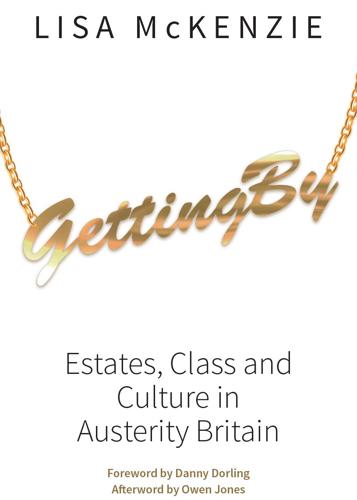
Getting By: Estates, Class and Culture in Austerity Britain
by
Lisa McKenzie
Published 14 Jan 2015
After several serious outbreaks of cholera in the St Mary’s ward, an area to the east of the city, known as the Clay Field, was used to bury the hundreds who died in the outbreak, but was also taken into the city boundary to house the proletariat workers and their families. This area was at the edge of the city and was very close to the Lace Market, and is now known as St Ann’s, but originally it was called New Town because it was built and thought of as a new town within the city. New Town had been specifically built for the working poor, consisting of very basic workers’ cottages, the largest number of public houses in the city, a bakers, a butchers, a marketplace and ‘allotments’. The allotments started life as a green space situated between two of the three steep hills in the area. The workers were ‘allotted’ a slice of land where they could grow their own produce and continue their traditions of the rural life they had left behind.
…
Wacquant argues that the ‘ghetto’ acts like a social condom, a way of allowing intercourse but without ever having to touch ‘those who are unclean’; but it also acts as a screen to balance out some of the negative effects of ‘inner-city’ life (2008, p 2). Within the ‘ghetto’ the stigmatising effects of low pay and poor living conditions and class racism can be offset to some extent through the buffer of community and local culture. New Town in Nottingham, and then, when it later became St Ann’s, was a place where the working poor lived, raised their families, engaged in their own cultural pursuits, and had little interaction except through work in other parts of the city. The labour of the residents within New Town/St Ann’s was vital to the wealth and the economy of Nottingham. Nevertheless, I would not go so far as to say that it was a ghetto within that period of time.
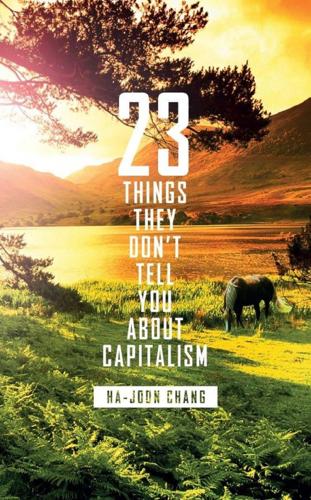
23 Things They Don't Tell You About Capitalism
by
Ha-Joon Chang
Published 1 Jan 2010
The ‘pill’ and other contraceptives have had a powerful impact on female education and labour market participation by allowing women to control the timing and the frequency of their childbirths. And there are non-technological causes. Even with the same household technologies, countries can have quite different female labour market participation ratios and different occupation structures, depending on things like social conventions regarding the acceptability of middle-class women working (poor women have always worked), tax incentives for paid work and child rearing, and the affordability of childcare. Having said all this, however, it is still true that, without the washing machine (and other labour-saving household technologies), the scale of change in the role of women in society and in family dynamics would not have been nearly as dramatic.
…
Especially if it is based on targeted, rather than universal, programmes (as in the US), it can stigmatize welfare recipients. The welfare state raises people’s ‘reservation wages’ and deters them from taking low-paying jobs with poor working conditions, although whether this is a bad thing is a matter of opinion (personally I think the existence of a large number of ‘working poor’, as in the US, is as much of a problem as the generally higher unemployment rates we see in Europe). However, if it is well designed, with a view to giving workers a second chance, as it is in Scandinavian countries, it can encourage economic growth by making people be more open to changes and thus making industrial restructuring easier.

The New Class Conflict
by
Joel Kotkin
Published 31 Aug 2014
In the five years following the Great Recession, the percentage of people living in poverty rose to 15 percent, the highest level in 20 years, although it was significantly higher in 1960. Equally troubling, the ability of less-skilled workers to break into high-wage work has slowed, trapping many in a kind of permanent status as working poor. Increasingly these workers are older and better educated than low-wage workers in the past. Some 43 percent of non-college-educated whites now complain they are downwardly mobile.49 Particularly hard hit are many minorities, notably African Americans and Latinos, whose income has also dropped more than most and whose unemployment has remained stubbornly higher.
…
Dylan Matthews, “Poverty in the 50 Years since ‘the Other America,’ in Five Charts,” Wonkblog (blog), Washington Post, July 11, 2012, http://www.washingtonpost.com/blogs/wonkblog/wp/2012/07/11/poverty-in-the-50-years-since-the-other-america-in-five-charts. 89. Robert Samuelson, “How We Won—and Lost—the War on Poverty,” Real Clear Politics, January 13, 2014, http://www.realclearpolitics.com/articles/2014/01/13/how_we_won_--_and_lost_--_the_war_on_poverty_121197.html. 90. David Shipler, The Working Poor: Invisible in America (New York: Vintage, 2004), pp, 6–7. Chapter 5: Geography of Inequality 1. Encyclopæedia Britannica Online, s.v. “Vidal de La Blache, Paul,” http://www.britannica.com/EBchecked/topic/627886/Paul-Vidal-de-La-Blache. 2. William Bogart, Don’t Call It Sprawl: Metropolitan Structure in the 21st Century (Cambridge: Cambridge UP, 2006), p. 10. 3.

A Pelican Introduction: Basic Income
by
Guy Standing
Published 3 May 2017
This was famously associated with the 1972 proposal by President Richard Nixon for a Family Assistance Plan, a form of negative income tax. He refused to use the term ‘guaranteed annual income’, and it would be an exaggeration to see Nixon as a convert to the basic income cause. He believed in supporting ‘the working poor’, by which was meant those in low-paid jobs, ignoring the many forms of unpaid work. Nevertheless, the measure was an advance in the basic income direction. It passed in the House of Representatives but died in the Senate, despite overwhelming support in public opinion polls. Ironically, the reform was killed by Democrats, some on the specious grounds that the proposed amount was not enough.
…
Standing (2014), A Precariat Charter: From Denizens to Citizens. London: Bloomsbury. 9. M. Tanner and C. Hughes (2013), ‘The work versus welfare trade-off: 2013’, Cato Institute White Paper, cato.org, 19 August. http://object.cato.org/sites/cato.org/files/pubs/pdf/the_work_versus_welfare_trade-off_2013_wp.pdf. 10. R. Berthoud (2007), Work-Rich and Work-Poor: Three Decades of Change. York: Joseph Rowntree Foundation. 11. J. Drèze and A. Sen (2014), An Uncertain Glory: India and Its Contradictions. Princeton, NJ: Princeton University Press. This argument can be dealt with through the provision of food buffer stocks, which could be released when prices rise due to temporary shortages.

The fortune at the bottom of the pyramid
by
C. K. Prahalad
Published 15 Jan 2005
For those poor in India who had lost their limbs, continuing to earn a livelihood was the biggest concern. In the absence of an efficient social security system, being able to work was essential for their survival. It necessitated a prosthesis that supported their work and lifestyles. Jaipur Foot’s design process emphasized the activities listed in Table 4, which are commonly practiced by India’s working poor. Step 2: Overcoming Constraints However, the technical demands were not the only demands by the creators of the Jaipur Foot. In addition, they faced the constraints listed in Table 5. Jaipur Foot: Challenging Convention 251 Table 4 Considerations in the Jaipur Foot Design Process Activity Squatting Sitting cross-legged Walking on uneven ground Barefoot walking Mechanical Requirement Need for dorsiflexion Need for transverse rotation of the foot Need for inversion and eversion in the foot so that varying terrain is not transmitted to stump Cosmetically similar to natural foot Table 5 Constraints of Development for the Jaipur Foot Constraints Poverty Closed economy Work lifestyle Limited trained manpower Implication The vast majority of local amputees were poor.
…
The next challenge was to construct an organization and operating system which could make the Jaipur Foot available to as many amputees as possible. The expectation was that nearly all prospective amputees would fall below the poverty line. Subsequently, Jaipur Foot’s custodians focused their attention on the financial and social needs of India’s working poor. Their efforts eventually took the form of the nonprofit society BMVSS, generally referred to as “the Society.” BMVSS was established in March 1975 by Mr. D. R. Mehta. In the first seven years after the development of the Jaipur Foot in 1968, hardly 50 limbs were fitted. In the first year after the formation of the society, 59 limbs were fitted.
…
William LaJoie William LaJoie is from Denver, Colorado, and his primary interests are the underlying factors that drive exponential growth. After obtaining his BA in English literature from the University of Notre Dame, he spent two years volunteering at the Working Boys’ Center, a school for the working poor, in Quito, Ecuador, teaching in the elementary school, high school, and adult literacy program. After returning to the United States, William worked as a Program Manager for LinkShare Corporation, a provider of Internet-based affiliate solutions, where his clients included Dell and Ford. In 2004, William will earn his MBA from the University of Michigan Business School, where he has combined his interest in Marketing, Technology, and Emerging Economies.
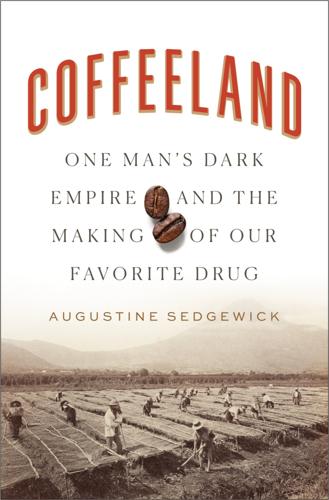
Coffeeland: One Man's Dark Empire and the Making of Our Favorite Drug
by
Augustine Sedgewick
Published 6 Apr 2020
Martí’s complexion disguised his family wealth.6 His father, though born poor, had amassed two farms comprising nearly five square miles of land in the coastal highlands. Yet as a young man Martí rejected the landlord’s life and began to fight against capitalism and imperialism, and for the cause of the working poor. At the time he was chosen to embed with Sandino in Nicaragua, Martí was hanging around the People’s University after leaving, through some combination of choice and expulsion, El Salvador’s national university, where he had studied law. The end of Martí’s career as a law student in good standing came in February 1920, when he was arrested as part of a group planning a demonstration against the Guatemalan dictatorship across the border.
…
His first recommendation was that part of the customs revenue should be “set aside to pay the armed forces of the country for the months of November and December and if possible create a reserve sufficient to take care of a part of January. This has been suggested to the President who assures me that it will be done.” If the army was paid, “tranquility” might be maintained, labor costs might remain low, and the loan might just be repaid.39 Arturo Araujo had won the presidential election with strong support from the working poor, including agricultural workers mobilized by his vision of social harmony. So it came as something of a surprise to his supporters when, within weeks of his taking office at the beginning of March 1931, and within days of his emphasizing the importance of “peace and order” for productivity, Araujo too started using violence to achieve order, sending the National Guard to break up demonstrations and hold the coffee economy in place.40 He even pushed through a law that gave the police and the army expanded power to put down public protests by force.41 The repression undercut whatever hope there had been for reform and pushed the expanded Salvadoran left toward politics by other means
…
Just as James Hill brought parts of Manchester to the Santa Ana Volcano, so too did the people who opposed the dictatorship of coffee. Their politics had also been developed in part in Manchester, and had also been shaped by the idea of energy. By the time Friedrich Engels left Manchester in 1844, he was no longer fixated simply on the lives of the working poor. Instead he wanted to understand the relationship between the poverty he witnessed in the city’s slums and the wealth created in its factories. At the heart of the larger economic puzzle was the question of how his own family’s wealth was connected to the “condition of the working class” he had described.35 On the way home to Germany, Engels stopped in Paris to visit an acquaintance, Karl Marx.
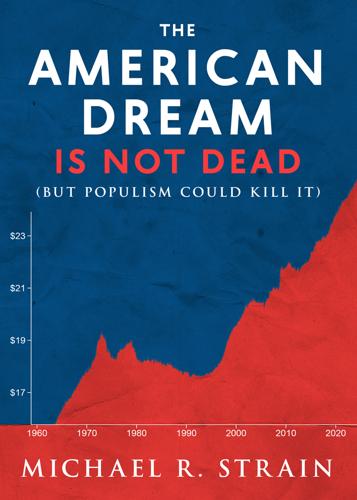
The American Dream Is Not Dead: (But Populism Could Kill It)
by
Michael R. Strain
Published 25 Feb 2020
Policy should encourage entrepreneurship and economic dynamism, advance free trade and the efficiencies and productivity gains (and thus wage gains) it brings over time, increase high-skilled immigration, and put the national debt on a downward trajectory by reforming middle-class entitlement programs. Economic opportunity and earned success are critical to the American Dream, so public policy should work aggressively to increase labor force participation. More generous earnings subsidies can pull more people into the workforce and can lift the incomes of the working poor and working class. Relocation assistance targeted to long-term unemployed workers in struggling local labor markets can offer those workers a hand up to better employment opportunities. Work-based learning programs, like apprenticeship programs, can build skills and increase wages by allowing market forces, rather than government bureaucrats, to determine which skills are taught to apprentices and can provide apprentices with marketable credentials.
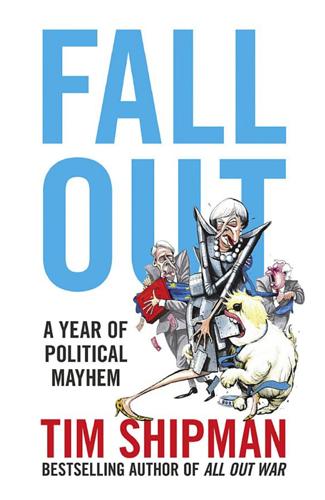
Fall Out: A Year of Political Mayhem
by
Tim Shipman
Published 30 Nov 2017
A Corbyn aide said, ‘For the leadership, it’s not about the process, it’s about different visions for the future. The government has the low-wage, low-growth economy, we’ve got the high-wage, high-growth, high-investment, high-skill economy with an interventionist state.’ Labour warned that a chaotic – or sometimes ‘shambolic’ – Brexit would hurt the working poor. They demanded a ‘Brexit that works for Britain and puts jobs, living standards and the economy first’. Even as the leadership coup was still raging, John McDonnell gave a speech on 1 July laying out five Labour principles for Brexit. He called for existing workers’ rights to be protected; for UK businesses to have the freedom to trade with the EU and EU businesses with the UK; for protection of residency rights for EU citizens living in the UK, and for UK citizens elsewhere in Europe; for the UK to stay part of the European Investment Bank; and for UK financial services to keep their access to the EU.
…
Hammond lacked Osborne’s sure touch with political tactics. Unlike Osborne, who made tackling the deficit a common-sense issue, Hammond talked about ‘austerity’ as if it was a virtue in itself. In the run-up to the autumn statement, Hammond refused to fund schemes designed to attract the ‘just about managing’ working poor – JAMs in Whitehall speak – who Team May had identified as their target audience. ‘Philip made it very clear that every pound in spending would have to be accounted for with cuts,’ said one ally. Distracted by Brexit, Hammond’s quiet victory over Timothy was little noticed but it fuelled the chiefs’ view that the chancellor was an impediment to May achieving the goals she had set herself that first day in Downing Street.
…
Several frontbenchers went further, claiming on Twitter that the debts would be scrapped, a position from which Corbyn distanced himself after the election. While tuition fees inspired an army of students to rally to Corbyn’s flag, there was also concern among many that the manifesto had little to say about the most crucial public policy area for the working poor – the Tory policy of freezing benefits. Corbyn’s opposition to the freeze had been one of the issues which propelled him to the leadership in 2015. Debbie Abrahams, the shadow work and pensions secretary, wanted the cuts reversed and help given to the so-called WASPI women, those in their fifties whose retirement planning had been thrown into turmoil by rises in the state pension age.
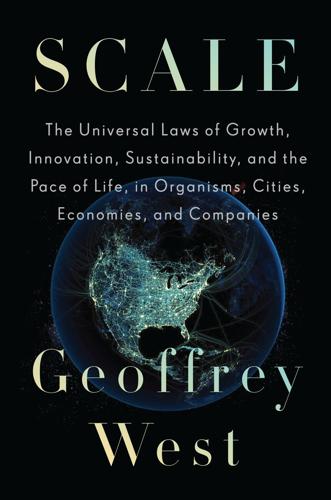
Scale: The Universal Laws of Growth, Innovation, Sustainability, and the Pace of Life in Organisms, Cities, Economies, and Companies
by
Geoffrey West
Published 15 May 2017
To quote the American architect and urban planner Andrés Duany: “In 1860, the capital city of Washington, with a population of 60,000, had unlighted streets, open sewers, and pigs roaming about its principal avenues. This condition was worse than the worst of our current cities. There is hope.” I cannot resist inserting a small personal note when writing about the rise of Victorian megacities and the plight of the “working poor.” Although I was born in a rural area of England, the county of Somerset, I have family roots in the East End of London and by a strange twist of fate ended up attending the last several years of my high school there. The East End is a product of the rapid expansion of London during the nineteenth century and became one of the poorest, most overcrowded areas of the city and, consequently, a breeding ground for disease and crime.
…
Malthus concluded that in order to avoid such a catastrophe and ensure a sustainable population, some form of population control was needed. This would either arise through “natural” causes such as an increase in disease, starvation, and war or, more preferably, by changing social behavior, particularly that of the working poor, whose reproductive rates he perceived as the apparent cause of the problem. Being a devout Christian he didn’t much like the idea of contraception and preferred the concept of moral restraint such as abstinence, delayed marriages, and restricting marriage for those in dire poverty or with health or mental defects.
…
It is hard not to perceive Masdar as effectively a large private suburban residential industrial park rather than a vibrant diverse autonomous city. In many ways its philosophy is derivative of Ebenezer Howard’s garden city concept brought into the high-tech culture of the twenty-first century, except that it appears to be designed for the privileged rather than for the working poor. Nicolai Ouroussoff, who was the architecture critic for the New York Times from 2004 to 2011, suggested that Masdar is the epitome of a gated community: “the crystallization of another global phenomenon: the growing division of the world into refined, high-end enclaves and vast formless ghettos where issues like sustainability have little immediate relevance.”
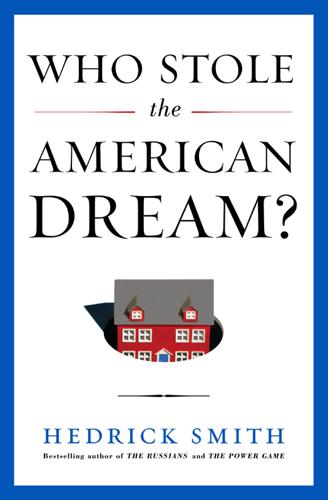
Who Stole the American Dream?
by
Hedrick Smith
Published 10 Sep 2012
Moving to bring budgets more into balance, Nixon called in 1969 for repeal of the business investment tax credit granted by Democrat John F. Kennedy, thus raising corporate taxes by nearly $3 billion. His package also included an increase in the capital gains tax rate; restrictions on the use of tax shelters by the wealthy; and a new “low-income allowance” that removed two million of the working poor from the tax rolls. As Ed Dale wrote in The New Republic, the Nixon tax package was “far and away the most ‘anti-rich’ tax reform proposal ever [sic] proposed by a Republican President in the 56 years of the existence of the income tax.” Business Mobilizes In this political climate, Lewis Powell’s corporate manifesto hit a responsive chord.
…
In the 1970s, the Federal Reserve reported that chief executives at 102 major companies were paid $1.2 million on average, adjusted for inflation, or roughly 40 times an average full-time worker’s pay. But by the early 2000s, CEOs at big companies had enjoyed such a meteoric rise that their average compensation topped $9 million a year, or 367 times the pay of the average worker. At Wal-Mart, which bills itself as the friend of the struggling middle class and the working poor, former CEO Lee Scott was paid $17.5 million in 2005, or roughly 900 times the average pay and benefits of the typical Wal-Mart worker. With America’s changing political climate and the rising influence of pro-business conservatism, CEOs went from being under fire in the 1960s and 1970s, as Lewis Powell observed, to being lionized as superstars in the 1990s and 2000s, supposedly entitling them to pay on a par with Hollywood celebrities and star athletes.
…
With the Senate filibuster rule working for Republicans, they refused to extend Bush’s tax cuts for the middle class unless Obama agreed to extend Bush’s tax cuts for the rich, including a 35 percent cap on the estate tax rate and a tax exemption for estates worth $10 million for couples instead of the old pre-Bush rate of 55 percent on estates larger than $3 million. To break the gridlock, Obama had to accept estate tax cuts for the rich. Those two policies—the failure of an increasingly polarized Congress to help the working poor and lower middle class by indexing the minimum wage to inflation and congressional approval of ever more generous estate tax cuts for the super-rich—have contributed to the great economic divide in America today. They illustrate the economic costs of polarized politics. “The fight over estate tax repeal seems uniquely symbolic of the skewed class politics of the New Gilded Age …,” commented Princeton University political economist Larry Bartels.

The Survival of the City: Human Flourishing in an Age of Isolation
by
Edward Glaeser
and
David Cutler
Published 14 Sep 2021
Poorer people must see the gain from urban life. They must feel the possibility of finding a brighter future. When that future fades, the desperate turn to demagogic calls for the bluntest forms of redistribution. There are smart and effective ways of promoting upward mobility, including better pre-K programs, tax subsidies for the working poor, and better vocational training. We should do all of these and more. But canceling commercial rents for prosperous businesses makes little sense, and neither does canceling student debt for the children of the wealthy. In a sense, the enthusiasm that many have for redistribution from the rich represents an awareness that our cities have become a rigged game that favors insiders over outsiders.
…
The less educated work in more physically demanding jobs, and suffer more pain in their backs, joints, and muscles. Even standing on one’s feet all day, something required of few Americans with advanced degrees, can create lasting pain, especially if one is carrying around extra pounds. The hope that OxyContin would create an escape from that physical pain made it appear a godsend for the working poor. It proved to be a curse. Low levels of life satisfaction—despair—can also leave some people looking for outs, and opioids are one such out. Across individuals and countries, more income is associated with more happiness and life satisfaction. The connection between unhappiness and rising mortality, especially among lower-income prime-aged American males, has led economists Anne Case and Angus Deaton to collectively refer to opioid overdoses, suicides, and alcohol-related liver disease as “deaths of despair.”
…
See also influenza pandemic (1918–19) Sprung-Keyser, Benjamin, 331 Stalin, Joseph, 325 Stanton, Christopher, 231 Stergios, James, 306 Stigler, George, 178–79 “stop and frisk” policies, 288–91 Strong, William Lafayette, 84–85 student debt, canceling, 16 Sturgis Motorcycle Rally, 44 sub-Saharan Africa, 79 suburbs, 7–8, 215, 219, 268–69, 270 Sugar Research Foundation, 125 suicides, 98, 123, 204, 319 super-spreader events, 87 Sweden, 197, 302 Swift, Gustavus, 182 Switzerland, 134 Sy, Elhadj As, 323 Sydenham, Thomas, 118 Tabarrok, Alex, 282 Taiwan, 132, 149, 156, 165, 166 Tammany Hall, 73, 82, 268 Tan, Brandon, 300 taxes and taxation as centrifugal/dispersing force, 218 and corporate relocations, 209 and declines in tax base, 7 and funding of public services, 8 and home mortgage interest deductions, 216 impact of pandemic on revenues from, 6 tax subsidies for working poor, 16 of unhealthy products, 100, 128 teachers unions, 308, 311–12, 313–15, 316 Tebes, John, 290 telemedicine, 146 tenements, disease-infested, 81–83 terrorism car bomb in Times Square, 287–88 September 11, 2001, terrorist attacks, 6, 243 testing for COVID-19 of asymptomatic populations, 18, 149, 164, 167, 198 countries with notable success in, 156 in Germany, 156, 167 governments’ responsibility for, 154–55 in New Zealand, 18, 156, 164–65 in the United States, 149, 150, 167 WHO’s test for, 150 Texas, 18–19, 214 Thatcher, Margaret, 224 The Third Wave (Toffler), 219–20 “three strikes” laws, 14, 277, 281, 282–85, 286 Thucydides, 25, 29–30, 34, 36, 46 Tito, Josip Broz, 54 Tocqueville, Alexis de, 14–15, 72 Toffler, Alvin, 22, 207, 219–23, 224–25, 226, 227, 229, 238 trade, 28, 32, 40, 42 transportation, 7, 210, 212–14, 215, 216–17 travel restrictions ability to quickly implement, 55 and cordon sanitaire at national borders, 53 and COVID-19 pandemic, 50, 54, 55, 149, 150 failures in, 50 of New Zealand, 163 Ragusa’s application of, 41–42 screening international travelers, 55 and yellow fever in Philadelphia, 47 Troesken, Werner, 78 Truman, Harry, 137–38, 140, 145 Trump, Donald, 132, 151, 152 Trump administration, 149–50, 168 tuberculosis, 175 Turner, Frederick Jackson, 268 “Typhoid Mary,” 38 unemployment/joblessness due to COVID-19, 2, 169, 196, 197, 228, 229, 233 and housing costs, 272 long-term, 272 and universal basic income, 204 United Kingdom commitment to urban sanitation in, 77 food consumption trends in, 108–9 health care spending in, 134, 142–43 manufacturing in, 189, 190 National Health Service of, 139–40 place-based health differences in, 103 rural population in, 221 service industry in, 2, 190 sewer system investment of, 76–77 vaccine preorders, 144 vaccine rollout, 77, 145 United Nations (UN), 57, 92, 325 universal basic income, 204 University of the Chinese Academy of Sciences, 91 upward mobility, 3, 16, 244, 257–58, 276 Urban Fortunes (Molotch and Logan), 267 urbanization, rate of, 173, 221 USA Today, 310–11 U.S.
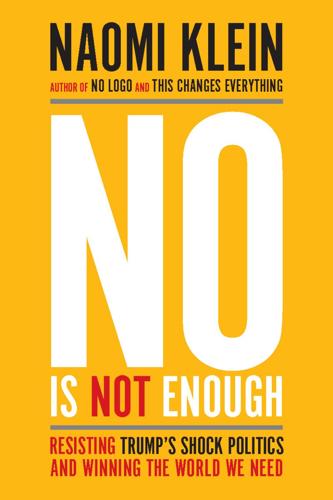
No Is Not Enough: Resisting Trump’s Shock Politics and Winning the World We Need
by
Naomi Klein
Published 12 Jun 2017
With good reason: as the tremendous hoarding (and hiding) of vast sums of wealth by a small and unaccountable global class of virtual oligarchs makes clear, those who benefit most from these radical social restructurings are a small minority, while the majority see their standard of living stagnate or slip, even in periods of rapid economic growth. Which is why, for those who are determined to push through these policies, majority rule and democratic freedoms aren’t a friend—they are a hindrance and a threat. Not every neoliberal policy is unpopular, of course. People do like tax cuts (for the middle class and working poor, if not for the super-rich), as well as the idea of cutting “red tape” (at least in theory). But they also, on the whole, like their taxes to pay for state-funded health care, clean water, good public schools, safe workplaces, pensions, and other programs to care for the elderly and disadvantaged.
…
Among the programs that were slashed: student loans, Medicaid, and food stamps. So, the poorest people in the United States subsidized the contractor bonanza twice: first, when Katrina relief morphed into unregulated corporate handouts, providing neither decent jobs nor functional public services; and second, when the few programs that directly assist the unemployed and working poor nationwide were gutted to pay those bloated bills. — New Orleans is the disaster capitalism blueprint—designed by the current vice president and by the Heritage Foundation, the hard-right think tank to which Trump has outsourced much of his administration’s budgeting. Ultimately, the response to Katrina sparked an approval ratings free fall for George W.

Why It's Still Kicking Off Everywhere: The New Global Revolutions
by
Paul Mason
Published 30 Sep 2013
Those vintage motel signs, which summon up the era of Elvis and full employment, are in reality flagstaffs for the hidden homeless. They are right next to you, on every highway in America. And, just like in the 1930s, there is a president in the White House elected on a platform of hope, radicalism and concern for the working poor. And like in the 1930s, Congress is determined to stop him—insofar as he has not stopped himself. As I leave Albuquerque the landscape becomes drier. The spectacular red canyon walls of the Mogollón Rim dwarf the mobile homes of the Pueblo nation, whose land this once was. There are no Native American shacks in Steinbeck, and no red canyons; no giant cacti, no endless days of blue sky, no vast gulches and ravines.
…
Although the name of this movement was not in any dictionary, it threatened ‘to bring the world face to face with the greatest crisis of modern civilization—perhaps of any civilization’.4 The name of this movement was ‘syndicalism’: a new kind of unskilled trade-unionism that sparked an upsurge of strikes, unionization drives and sit-ins across Europe, the Americas and the Pacific between 1909 and 1913. It had no leaders and no centralized programme, but it inspired a global fight-back by the working poor and a general feeling of defiance aimed at the rich, the media and conservative religions. Syndicalism was also a mass cultural movement, creating free social spaces such as secular schools, from Barcelona to Buenos Aires; an Oxbridge college run by workers in the UK; popular community centres in Italy—and, through the ‘Wobblies’, a whole underground network of camps and canteens for America’s itinerant workers.
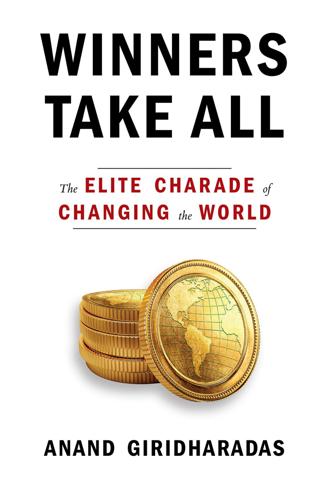
Winners Take All: The Elite Charade of Changing the World
by
Anand Giridharadas
Published 27 Aug 2018
This book offers a series of portraits of this elite-led, market-friendly, winner-safe social change. In these pages, you will meet people who ardently believe in this form of change and people who are beginning to question it. You will meet a start-up employee who believes her for-profit company has the solution to the woes of the working poor, and a billionaire investor in her company who believes that only vigorous public action can stem the rising tide of public rage. You will meet a thinker who grapples with how much she can challenge the rich and powerful if she wants to keep getting their invitations and patronage. You will meet a campaigner for economic equality whose previous employers include Goldman Sachs and McKinsey, and who wonders about his complicity in what he calls “the Trying-to-Solve-the-Problem-with-the-Tools-That-Caused-It issue.”
…
Like Rosenstein and other believers in win-wins, the founders of Even wanted very much to help, but thought it best to help in a way that would create some opportunity for them, too. Leibrock was among the Even founders’ first hires, and she was on the Nimitz that day driving from interview to interview, learning about the lives and needs of the working poor so that Even could most effectively serve them as customers. She is a graduate of Yale and the private schools of Austin, Texas, with no trace of an accent. She was part of the great brain rush to California that was turning the Bay Area into one of the most unaffordable, unequal, and tense parts of the country, with resentful locals famously throwing rocks at the Google buses that ferried employees to and from the South Bay.
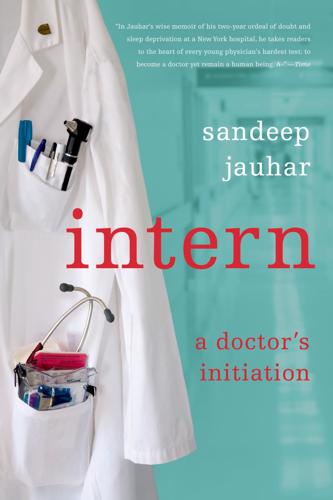
Intern: A Doctor's Initiation
by
Sandeep Jauhar
Published 26 Dec 2007
Capitol to get a quote from Bob Dole about the working poor. He spent most of the day on the Senate floor, so my plan was to accost him when he went to the bathroom. When I got my chance, I froze, mumbling what must have been gibberish as he strode past me on the marble floor. Later that afternoon, dejected that I had failed my first journalism assignment, I ran into Dole’s press secretary and asked for an interview with the senator. He was in the midst of dismissing me when the senator walked up. “This is Sandeep Jauhar,” Dole announced. “He’s working on a story about the working poor. Set up a phone interview with him tomorrow morning.”

The Future of Money
by
Bernard Lietaer
Published 28 Apr 2013
The average rent for a twobedroom unit increased by 110% over the same time period, while rent for a vacant studio increased by a whopping 288%. This explains why 20% of the homeless families have at least one parent with a fulltime job. In short, the fastest-rising component of the homeless is the families of the 'working poor' of yesteryear. San Francisco is in no way a strange anomaly. Because the US Department of Education funds a project tracking schooling problems of homeless children in San Francisco Bay Area experienced by homeless children, it has prepared a report for the US Congress identifying the different ages of homeless children.
…
By the year 2000, more than 300 townships and social service programmes have started Time Dollar systems, most of them in Anglo-Saxon countries. 2. Ithaca HOURS Ithaca is a small university town with a population of about 27,000 in state New York. It is not a rich town. It has, for example, the high percentage of 'working poor' in the state of New York (people who are employed, but whose income is so low that they still remain eligible for stamps). Paul Glover, a local community activist, felt that the proximity of NewYork City kept diverting the community energy into the vastness of the city. He decided to do something about this problem.

A World Without Work: Technology, Automation, and How We Should Respond
by
Daniel Susskind
Published 14 Jan 2020
But far too many of the jobs they will end up taking will pay them too little support what our society considers a middle-class standard of living.” Benjamin M. Friedman, “Born to Be Free,” New York Review of Books, 12 October 2017. 37. From Bureau of Labor Statistics, “Profile of the Working Poor, 2016,” https://www.bls.gov/opub/reports/working-poor/2016/home.htm (accessed July 2018). 38. Robert Reich, a public-policy professor and former secretary of labor for Bill Clinton, once estimated that by 2020 up to 40 percent of Americans would have “uncertain” work like this, the sort of work that makes up the “gig,” “share,” “irregular,” or “precarious” economy, and by 2025, most workers will.

Limitarianism: The Case Against Extreme Wealth
by
Ingrid Robeyns
Published 16 Jan 2024
As the campaigners write, if garment workers were paid a living wage (that is, a wage that allows each worker to lead a decent life), the final cost of a piece of clothing would increase by a mere 1 percent—a price increase that could, of course, equally be taken from the vast profits enjoyed by the billionaire owners of fashion multinationals. The very low wages of the working poor and the wealth hoarding of billionaires are intimately connected. A significant increase in human welfare is possible if the shareholders or owners of a company contented themselves with moderate, rather than limitless, profits.16 Which brings us to another of the key actions that limitarianism requires: to limit executive pay.
…
K. 5, 11, 139 Russia 9–10, 24, 27, 39–40, 50–52, 63, 76, 78–9, 96, 104, 211 Rutte, Mark 85 Sachs, Jeffrey 153–4 Sackler family 52–4 Saez, Emmanuel 66, 69 safety regulations 57 Salk, Jonas 137 Sanders, Bernie xx–xxi Satz, Debra 218–19 savings 4, 10, 11–12, 13, 25, 37, 41, 61, 62, 70–71, 82, 115, 121–2, 151, 152, 171, 189, 226 Schimmelpennick, Sander 190 Scott, MacKenzie 136 sea levels 99 Second World War (1939–45) 3, 27, 33–4, 151 Seko, Mobutu Sese 48–9 “self-made” super-rich 5–6, 121 Sen, Amartya 21 shared spaces 108–9 shareholders 6–7, 55, 56, 57, 59–60, 85, 96–7, 104, 135, 135–6, 145, 159, 210, 220–21, 223 Sharman, Jason 49 Shell 6–7, 86, 96, 102, 128 Sherman, Rachel 199–200 silver-bullet strategies 155, 214–15 Simon, Herbert A. 138 ’S Jongers, Tim 140–41 Skidelsky, Edward 201 Skidelsky, Robert 201 Skocpol, Theda 89–90 slavery 20, 21, 28, 43–4, 45–7, 223, 224 smallpox xv Smalls, Chris 59–60 Smith, Adam: The Wealth of Nations 219 Snyder, Timothy 76 SOAS 46 social capital 138 social comparison 197 social contract 31, 32, 68, 119, 120–21, 124, 137, 139, 167, 169, 176, 191–2, 220, 221 social housing 37, 209–210, 217–18 socialism 21, 44, 55, 208, 211 social mobility 33–4, 39, 123, 139–42, 205 social-security 5, 14, 65, 170 social unrest/“threat of the pitchforks” xxi, 77, 176, 187–92 Soros, George xxi–xxii space tourism xi, xii, 6, 60, 101, 103, 114, 147–8, 154, 181 SpaceX xi special obligations 185 stagflation 34 Stanford University 113, 175, 218–9, 231 state capture 76 Stichting Reclame Rood 102 structural action/change xv, xvi, 180–1, 212, 218 stylized facts 26 subsidies 28, 35, 37, 83, 102–3, 159, 176, 211 Süddeutsche Zeitung 63–4 Sullivan, Dylan 22–23, 136 Sunak, Rishi 40 Sunday Times xi super-rich class system and 29–30, 32 climate change and see climate change corporate ladder and 6–7 corrosive effect of extreme wealth on xiii, 193–9 definition of 4–10 democracy and see democracy dirty money and see dirty money distribution of worldwide 24–5 diversity of 4–10 economic growth and 189–90 future of 203–29 good life and 201–2 government, distrust of 172–5 implementing limitarianism in their own lives xxii inheritance and see inheritance insecurity that characterizes affluent societies and 199–200 limitarianism benefits to 187–202 moral limits of inequality, averse to debating xxiv–xxv neoliberalism and see neoliberalism philanthropy and see philanthropy riches line and see riches line “self-made” 5–7, 121 social unrest/“threat of the pitchforks” and 187–92 tax and see tax wealth addiction and 198–9 Switzerland 24–5, 63, 224 taboos 30–31, 32 tax avoidance 60–68, 146, 166, 167, 168, 175, 180, 203, 221, 221–2, 223 breaks 37, 61 climate change and 102, 110–16 confiscatory tax 114, 122 corporation tax 39–40, 60, 65–7, 90, 225 cuts 33, 35, 38, 39–40, 90, 168 deductions xxiv 28, 65–6, 70, 175–6 dividends and 85–6, 225 dodging 60–80 “double” taxation 124 estate tax 8, 90, 121 evasion 37, 51–2, 60–61, 63, 64, 67, 68, 116, 146, 167, 203, 221, 221–2, 223z fraud xiv, 51–2, 64–5, 221 fuel tax 103 government and 119–22 havens 42, 62–8, 121–2, 214, 222, 222–3 highest tax rate xv, xvii, 15–16, 37, 39–40, 69, 95, 160, 161–2, 214, 221 income tax 33, 37, 39–40, 61, 70, 77, 160–61, 186 inheritance tax 8, 68, 82, 121–5, 191, 226–7 international tax differences 166–67, 222 international tax organization 222 jaloesiebelasting (envy tax) xxi labor and capital, income from and 60, 61–62, 69–70, 225 limitarian society and xv lobbying and 69, 85–86 neoliberalism and 33, 34 100 per cent xvi, xvi, 15–16, 22, 95, 160, 214–15 optimal top marginal taxation rate 160 philanthropy and 166–9, 172, 173–4, 175–6, 180–81 profit shifting and 65–7 progressive tax rates xiv, xvii, xx–xxi, 34, 61, 145, 146, 221 property and 70, 120 racial inequality and 28 Reagan tax cuts 33 taxmenow 6, 65 trickle-down effect and 38–40 wealth-defense industry and 67–71, 82, 121, 124, 175, 180, 197 wealth taxes xviii, xx–xxi, 160, 222, 226 technological innovation 30–31, 32, 41, 108, 113–14, 137–8, 144, 158, 159, 177–78, 207 10 percent rule 185–6 Tesla xi Thatcher, Margaret 33, 208 Thiel, Peter 77 think tanks 40, 89, 90, 94–5 “too rich” xii–xiii, xviii Total Energies 96 transnational capitalist class 92–3 Trevelyan family 46–7 trickle-down effect 38–40, 189 Trump, Donald 52, 67, 68, 79, 81, 87–8, 92 Trump, Fred 67 Truss, Liz 40 tuition fees 14 Tuvalu 106 Twitter xi, xii, 5–6 ultra-high-net-worth individuals 24–5 unconditional basic income 138, 150, 174 undeserved wealth 117, 118–43, 184 inheritance 121–2 labor/wage inequalities 126–33 markets/property as social institutions 118–22 social mobility and 140–41 wealth creators/entrepreneurs and investors 133–9 unemployment 14, 34, 39, 65, 146, 150, 158, 170, 200 unequal exchange 23–4 Unilever 86 Union Carbide 55–7 unions, labor/trade 23, 30, 33, 58, 59–60, 83, 135, 160, 180, 220 United Nations (UN) 42, 72 Food Systems Pre-Summit (2021) 154 human development indicators 171 Sustainable Development Solutions Network 153 World Food Program 99 United Russia 50 Universal Declaration of Human Rights 72 universal draft 30 universities 6, 14, 33, 36, 46, 47, 76, 84, 90, 114–5, 165, 166, 169–70, 180, 181, 195, 223, 227 University of Glasgow 46 University of the West Indies 46 unmet needs 144–63, 182 collective-action problems and 159 Covid–19 and 144–146 declining marginal value of money and 146–7 direct cash transfers and 152 entrepreneurial goals and 159 extreme poverty and 149–150 incentives objection 160–3 money, possibility of addressing with 148–50 non-financial incentives 162–3 poverty in rich economies 155–8 USA American Dream 156, 205, 217 asylum seekers in 79 basic income in 174 Black Lives Matter movement 191–2 business practices, harmful 52–7 CEO pay 7, 126, 127, 133 class system 30–32 climate change and 104–5, 108 Covid–19 and wealth in 145 estate tax 8, 90, 121 health deficits in 157 national parks 211 national public service in 218–9 oligarchy 73 philanthropy and 53, 164–8, 192 political donors and 80–84 political polarization in 88–91 poverty in 20, 26–7, 37, 155 presidential election (2020) xxi, xxii, 52, 88–9 race and 45–7, 174 taxes in 8, 33, 62, 64, 68, 69, 90, 121 tuition fees 14 wealth distribution in 24–8, 204–6 utilitarianism 146, 184 Utrecht 1, 15 Utrecht University 11 vaccines 36, 137, 145 Van der Veer, Peter 128, 160 variola virus xv viruses xv, 146 VVD 85 wages Amazon and 59 burden of job and 131–3 equality and 125–6, 131, 132, 223 garment industry 57, 58 globalization and 32 Global South and 23 labor market discrimination and 125 living wage 12, 143, 160, 223 low wages of working poor 156, 223 maximum wage 224 middle classes and 189 minimum wage xv, 160, 174, 176, 211, 224 ratio 224–5 slavery and 45 stagnation of 39 tax and 67 underestimation of 205 unions and 180 Wales, Prince William, Prince of 7 Wall Street 198–9 Walmart 58 Warren, Elizabeth xxi, 38 Washington Center for Equitable Growth 39 wealth addiction 16, 195, 198–9 climate change and see climate change concentration of xii, xiii–xiv, xvi, xviii, xxv, 4, 16, 24–5, 35, 36, 42, 65, 74, 89, 94–5, 100, 109–10, 116, 117, 118, 125, 139, 207, 221, 225, 231 confiscation of xiv, xix, 47, 191, 222 corrosive effect of xiii, 193–9 creators 133–9 see also entrepreneurs defense industry 67–71, 82, 121, 124, 175, 180, 196 democracy and see democracy dirty money and 41–71 distribution of xiii, xv, xxv, 2, 3, 24–9, 32, 35, 97, 100, 141, 169, 172, 183, 189, 204–6, 225 equality/inequality and see equality extreme xx–xxi, xxv, xxvi 2, 3, 4, 5, 16, 17–40, 41, 68, 71, 75, 89, 97, 99–100, 106, 109, 115–7, 121, 125, 133, 139, 148, 161, 182, 185, 188, 192, 194–5, 196, 199, 200, 203, 207, 215, 221 inheritance and see inheritance limiting see limitarianism philanthropy and see philanthropy poverty and se poverty rich lists xi–xii, 2, 133–4 super-rich and see super-rich tax and see tax undeserved 118–43, 184 unmet needs and see unmet needs welfare fraud 65 state 14, 65, 83, 143, 156, 170–71, 190, 201, 213 well-being big government and 169, 172 Covid–19 and 144–5 poverty and 140, 151, 152, 154–5 property rights and 119 super-rich people and 6, 16, 194, 197–8 tax and 146 utilitarianism and 184 well-being economy 213–14 Wellbeing Economy Alliance 213–14 Wenar, Leif: Blood Oil 48 White, Stuart 226 Wiardi Beckman Foundation 141 wildfires 99, 102, 105 Winfrey, Oprah 5, 6, 139 “winner takes all” market 129, 134–5 win-win narrative 18–21, 67 Wirsching, Andreas 44 working class 29, 31–32, 35, 83, 83–4, 164, 217–18 World Bank 18, 21 World Bank Economic Review 21 World Economic Forum (WEF) xxi, 42, 91 Annual Meeting, Davos xxi–xxiii, 17, 91–3, 103, 188 World Health Organization (WHO) xv Zaïre 48–9 Zara 136 Zoomkawala, Huzaifa 22–3, 136 Zucman, Gabriel 62–3, 66, 69 Zwarthoed, Danielle 198 About the Author Ingrid Robeyns currently holds the chair in ethics of institutions at Utrecht University.

The New Prophets of Capital
by
Nicole Aschoff
Published 10 Mar 2015
In the corporate world, job openings elicit hundreds of résumés, and when foreign automakers open plants in the US South tens of thousands apply. A third of households have negative wealth or no assets, and three-fourths have less than six months’ income in savings. One in three people say that if they lost their job they wouldn’t be able to make their mortgage or rent payment within one month.5 While the working poor grew used to crushed dreams a long time ago, the emotional toll of the recent crisis on the middle class is stark. The New York Times recently reported that the US middle class is no longer the most affluent in the world: even economic self-help guru Suze Orman tells older middle-class people that they’ll need to work until at least age seventy and “live below their means” if they’re going to make enough to support themselves through their retirement.
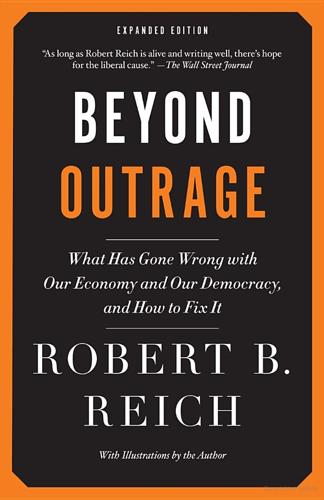
Beyond Outrage: Expanded Edition: What Has Gone Wrong With Our Economy and Our Democracy, and How to Fix It
by
Robert B. Reich
Published 3 Sep 2012
Middle- and lower-income Americans are shelling out larger portions of their sinking incomes in payroll taxes, sales taxes, and property taxes than they did thirty years ago. The Social Security payroll tax continues to climb as a share of total government tax revenues. Yet the payroll tax is regressive, applying only to yearly income under $110,100 (the ceiling in 2012). That means it takes a far bigger bite out of the pay of the middle class and the working poor than out of the rich. Sales taxes at the state and local levels are soaring, along with property taxes and tolls on highways, bridges, and tunnels. These also take bigger percentage bites out of the incomes of average Americans than they do out of those of the rich. What are the super-rich and big corporations doing with all their savings?
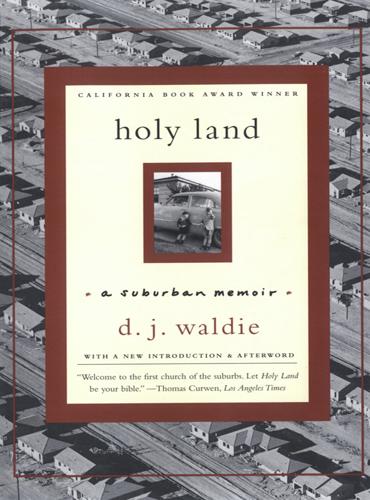
Weimar Culture: The Outsider as Insider
by
Weimar Gay
Published 31 Dec 2001
The preference of a majority of people for neighborhoods that look remarkably like mine won’t go away, however, even though the suburban frontier has grown harsher. Optimism still makes bearable the risks of our lives together. Los Angeles is often described as an increasingly polarized community from which people “in the middle” are being squeezed out, leaving a great many working poor and the few who are relatively wealthy. If that’s so, what is in store for the kind of homeowner Holy Land describes? The suburb described in Holy Land depended then—and depends now—on jobs that let men and women with ordinary skills make a living. Once those jobs were riveting jets together at Douglas and cracking crude oil into gasoline at Shell and Texaco.
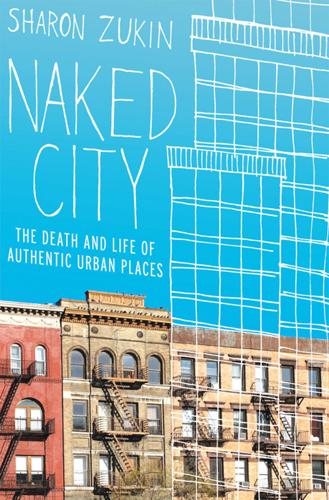
Naked City: The Death and Life of Authentic Urban Places
by
Sharon Zukin
Published 1 Dec 2009
“Brooklyn-ness,” as the New York Times art critic Holland Cotter wrote in 2004, is now “a cultural ethnicity.”10 The contentious fate of the McCarren Park pool, a public recreational facility on the border between Williamsburg and Greenpoint, reflects this dramatic shift in Brooklyn’s image. Built by Robert Moses in the 1930s with funds from the federal Works Progress Administration, the swimming pool served an overcrowded tenement district of the working poor. During hot summer months in the 1930s and 1940s more than six thousand swimmers a day would pass through the majestic arch of its entry pavilion. In the 1970s, though, when more black and Puerto Rican residents moved into nearby neighborhoods and began to use the pool, racial conflicts broke out over who belonged there, as well as over who was responsible for mounting incidents of crime and vandalism.
…
Klein “on the Square,” opened across the street from the park during the 1920s, drawing crowds of factory workers and immigrants who grabbed bargains from the sales tables without any pretense of politeness. The humorist James Thurber described sale days at S. Klein as near-riots.10 From an elegant residential neighborhood and then a popular shopping and entertainment district, Union Square turned into a center of cheap stores for the working poor. This is how it remained until the 1970s, when, an architectural history of the city says, the square was “threatened … by a slow social decline that was turning it into a seedy and menacing corner of the city.”11 Like the privatization of other responsibilities formerly carried out by government, the privatization of public space in New York City begins with this narrative of urban decline.

Luxury Fever: Why Money Fails to Satisfy in an Era of Excess
by
Robert H. Frank
Published 15 Jan 1999
“Enemies of Exploration: Self-Initiated Versus Other-Initiated Learning,” Journal of Personality and Social Psychology 35, 1977: 459-77. Consumers Union. “Air Quality: Special Report,” Consumer Reports 62, 1997: 36ff. Continelli, Louise. “Cheap Thrills in an Era of Downsizing,” Buffalo News, May 25, 1997: 1F. Cooper, Mary H. “The Working Poor: Will Funding Cuts Make Their Future Grimmer?” CQ Researcher, November 3, 1995: 969-92. Coppen, Alec. “Role of Serotonin in Affective Disorders,” in Serotonin and Behavior, ed. J. Barchas and E. Usdin, New York: Academic Press, 1973. Copple, James. “Prepared Testimony before the Senate Committee on Labor and Human Resources,” Federal News Service, April 18, 1997.
…
L., 10 Mercedes, 19 Merck Family Fund, 188 Metals, exposure to toxic, 54-55 Microsoft, 269 Middle-income earners, 4-5, 45 Miliband, David, 243 Military arms race, 156, 161-62 Mill, John Stuart, 213, 223 Mission Hills, Kansas, 28 Mondale, Walter, 226 Monopolies, 269 Mood, exercise and, 85 Moral dimension of altering spending patterns, 12 Morris, William, 187 Mortality, social integration and, 87-88 Motivation, purpose of, 135 Moultrup, Patrick, 52 Multiplier effects, 234 Municipal water systems, 54-55, 253-54 Music industry, 39 National Basketball Association, 166 National Commission on Teaching and America’s Future, 59 National debt, 252 National defense services, taxation for, 246-47 National Football League, 166 National income, 15 criticism of measure, 66-67 in golden age of economic growth, 244-45 Natural selection, 123, 148, 149-52 Nehring Bliss, Nanny, 190 Neiman Marcus, 25 Netsuke, 200 Neumark, David, 115-16 Neurological measurement of affect, 69-71 New York Times, 3, 227 Niarchos, Stavros, 5-6 1984 (Orwell), 198 Nixon, Richard, 256, 279 Noise, stress from, 81-82 Norms, against conspicuous consumption, 167-69, 201-3 Nozick, Robert, 65-66, 195 Nunn, Sam, 224, 225 Occupational choice in winner-take-all economy, 235-39 Omnibus highway bill (1998), 61 Onassis, Aristotle, 5-6 On-line retailing, 42 Opus One, 30 Orwell, George, 198 Osterholm, Michael, 57 Ottoman Empire, sumptuary laws in, 199 Overharvesting, 157 Overtime laws, 169, 170, 171 Overworked American, The (Schor), 49 Ozone, 55-56 Page, Marianne, 58-59 Paramecium, 94-95 Parking spaces, employee, 52-53 Particulate matter in air, 55-56 Part-time jobs, 190-93 Patek Philippe wristwatches, 16-17, 18, 212, 221 Pavarotti, Luciano, 38 Payroll tax, 103 Peacock, evolution of plumage of male, 150 Per capita income, criticism as measure of well-being, 241-42 Perception, context and, 129-30 Perks, higher tax rates and corporate, 231-32 Perlman, Itzhak, 23 Personal relationships, health and, 87 Personal savings rate, 5 Pigou, Alfred, 213, 223 Pinkerton, Brian, 29 Pleasure craft, 23-24 Pollution, 8, 156 air, 55-56 consumption spending as analogous to, 272-73 controlling cost-effective solutions for, 195 new approach to, 209-11 regulations, 102, 208-9 taxes, 102, 209-11 first attempts to solve problem of, 208-9 growth rates and, 101-2 incentive gap causing, 207 Poor, the children of, 255-56 Earned Income Tax Credit for working poor, 257 welfare reform and, 257-59 Pope, C. Arden, 55 Porsche automobiles, 19, 168-69, 180, 203, 218, 220, 221 Postlewaite, Andrew, 115-16 Postponement effect, 233 Potholes, 60 Poverty, 239-41. See also Poor, the Praag, Bernard van, 74 Pragmatism, radical, 199 Primark Decision Economics, 51 Princess Cruise Lines, 47 Prison inmates, increasing number and cost of, 263-64 Procter & Gamble, 174 Productivity, 97 growth in, 101 job specialization and, 190-91 Product quality evaluation, context and, 131-32 Progressive consumption tax, 211-26, 249-50 to change current spending trajectory, 277 consumption goods produced under, 219 defining, 213-14 effect on the wealthy, 217-19 employment changes from, 219 illustration of, 214-16 inconspicuous consumption and, 222 luxury tax compared to, 214 as mainstream idea, 223-24 major advantage of using, 218-19 money for nothing from, 279 reasons against, 224-26 as remedy for conspicuous consumption, 271-73 resources saved with, 217-18 ripple effects of, 222-23 savings and, 213-14, 215, 220-21, 232-35, 248-49 short-run prospects for, 278-79 stimulation of economic growth by, 232-39 consumption mix change, 235 occupational choice and, 235-39 savings increase and, 232-35 tax evasion and, 232 transition to, 219-21 Project DREAM, 62 Proulx, Tom, 29 Prozac, 142 Public good, high growth rate as, 246-47 Public investments, 53-62 in air quality standards, 55-56, 254 in beef inspection, 56-58, 254 in bridge and highway maintenance, 59-61 current trajectory for, 276-77 cutbacks in cost-effective, 251-54 in drinking water, 54-55, 253-54 in drug treatment and prevention programs, 61-62 in pay for public school teachers, 58-59 Public school teachers, better pay for, 58-59 Public-service employment, 259, 261-65 Putnam, Robert, 202 Radical pragmatism, 199 Railroad crossings, neglect of, 60-61 Rainwater, Lee, 74 Raleigh, Michael, 141 Rank dependence of reward on, 133-35, 136 serotonin levels and, 140-41 Rare coin market, 119-20 Rational actor model, 124, 127-28, 173, 174.
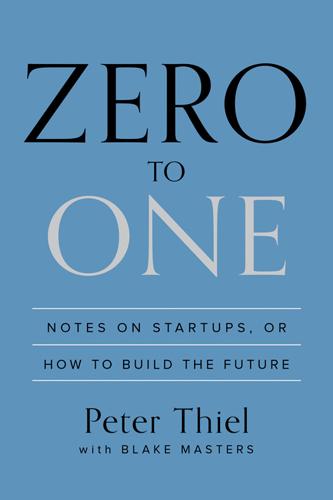
Zero to One: Notes on Startups, or How to Build the Future
by
Peter Thiel
and
Blake Masters
Published 15 Sep 2014
This is counterintuitive for most entrepreneurs, who assume that more is more. But the kitchen sink approach—employ a few salespeople, place some magazine ads, and try to add some kind of viral functionality to the product as an afterthought—doesn’t work. Most businesses get zero distribution channels to work: poor sales rather than bad product is the most common cause of failure. If you can get just one distribution channel to work, you have a great business. If you try for several but don’t nail one, you’re finished. Selling to Non-Customers Your company needs to sell more than its product. You must also sell your company to employees and investors.

Our Kids: The American Dream in Crisis
by
Robert D. Putnam
Published 10 Mar 2015
Originally conceived by conservative economist Milton Friedman and expanded by administrations of both parties during the last quarter century, this program is widely regarded as a reasonably efficient way of increasing the disposal income of poor parents who are working, and it has become one of the largest antipoverty programs in America (after food stamps and Medicaid). On the other hand, this program only helps the working poor, so it doesn’t reach the poorest of poor kids. • Expand the modest existing child tax credit (as advocated by Tea Party favorite Senator Mike Lee [R., Utah]), but make the credit fully refundable, so that it can benefit children in families too poor to owe any federal taxes at all, thus reaching the poorest kids
…
Patrick Sharkey, “Neighborhoods, Cities, and Economic Mobility” (paper prepared for the Boston Federal Reserve conference on Inequality of Economic Opportunity, Boston, October 17–18, 2014), and sources cited there. Greg J. Duncan, Aletha C. Huston, and Thomas S. Weisner, Higher Ground: New Hope for the Working Poor and Their Children (New York: Russell Sage, 2009); Johannes Bos et al., “New Hope for People with Low Incomes: Two-Year Results of a Program to Reduce Poverty and Reform Welfare” (New York: MDRC, 1999); Aletha C. Huston et al., “New Hope for Families and Children: Five-Year Results of a Program to Reduce Poverty and Reform Welfare,” Manpower Demonstration Research Corporation, 2003; Aletha C.

Giving the Devil His Due: Reflections of a Scientific Humanist
by
Michael Shermer
Published 8 Apr 2020
Brooks, when it comes to charitable giving and volunteering, numerous quantitative measures debunk the myth of “bleeding heart liberals” and “heartless conservatives.” The opposite, in fact, appears to be true. Conservatives donate 30 percent more money than liberals (even when controlled for income), give more blood, and log more volunteer hours. And it isn’t because conservatives have more expendable income that they are more generous. The working poor give a substantially higher percentage of their incomes to charity than any other income group, and three times more than those on public assistance of comparable income. In other words, poverty is not a barrier to charity, but welfare is. One explanation for these findings is that people who are skeptical of big government give more than those who believe that the government should take care of the poor.
…
And there’s no reason why persons with low status in these non-pecuniary categories will not suffer all the stress and envy now allegedly suffered by people with low incomes.24 In the end, then, following Frank’s line of reasoning, the government should give tax breaks to conservatives, the wealthy, and the working poor in order to reward their pro-social behavior and encourage more giving, and the government should stimulate income inequality in order to attenuate status seeking in other nonpecuniary traits. All liberals in favor of such policies please raise your hands. Other Hidden Costs: What Is Seen and What Is Not Seen in Government Actions Even if evolutionary psychologists are wrong in this analysis of sexual selection and costly signaling theory, and it was determined that ostentatious displays of wealth, power, prestige, and creativity should be penalized through a consumption tax because of Frank’s analysis using Coase’s transaction models that reveal the hidden transaction costs of positional ranking and subsequent arms races, there are transaction costs of implementing such a tax.
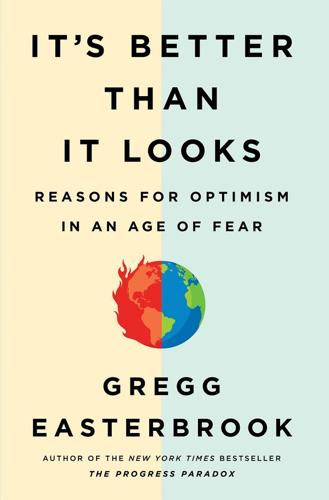
It's Better Than It Looks: Reasons for Optimism in an Age of Fear
by
Gregg Easterbrook
Published 20 Feb 2018
Adjusting to current dollars and for population growth, contemporary income-transfer programs—including Social Security, Medicare, Medicaid, ObamaCare, and the alphabet soup of TANF (Temporary Assistance for Needy Families), SNAP (Supplemental Nutrition Assistance Program, formerly the food stamps program), CHIP (Children’s Health Insurance Program), SSDI (Social Security Disability Insurance), SSI (Supplemental Security Income), and EITC (Earned Income Tax Credit)—mean Washington transfers about four times as much, per recipient, as was transferred during the New Deal. It’s good that government aid to individuals is greater today than in the past—no one should live as many did during the Depression. But US federal spending for the poor, the working poor, the lower middle class, the disabled, and the retired is more substantial than generally understood. That federal entitlement spending is backed by two sources—taxes on the affluent and borrowing from the young through the national debt. Both are income-transfer mechanisms. Yet income inequality still is high.
…
In 2015, economists led by William Gale of the Brookings Institution calculated that raising the top federal tax rate to 50 percent, then redistributing new revenue entirely to the bottom quintile, would have an “exceedingly modest” effect on inequality. The higher rate would increase federal revenue by about $95 billion; transferring the sum to the bottom would remit about $2,000 per year to poor and working-poor American adults, money that would be welcome, to be sure, but would not alter the basics of social equity. During the 2016 presidential campaign, Bernie Sanders and Hillary Clinton advocated federal tax increases at the top. The Sanders plan would have raised an added $150 billion per year, though the Vermont senator proposed to distribute most of the revenue not toward the bottom, rather, to senior citizens, who are already society’s most-favored group economically, and to the middle class, which already is fairly well off.

Dopesick: Dealers, Doctors and the Drug Company That Addicted America
by
Beth Macy
Published 4 Mar 2019
The idea was to create a public-private partnership where “angels,” or trained volunteers, helped funnel addicts into treatment, mentoring them during the cumbersome and usually relapse-ridden march toward sobriety—kind of like an on-call NA sponsor, only with the skills of a social worker able to take advantage of the city’s housing, mental health, and job resources. The program would be located at the Bradley Free Clinic, a long-running program for the working poor staffed by physician volunteers and located in Old Southwest, a burgeoning heroin hot spot. The clinic’s executive director, Janine Underwood, wasn’t a doctor. In the fall of 2015 she attended the first Hope Initiative meeting not because she ran a nonprofit medical clinic but because her twenty-eight-year-old son, Bobby Baylis, was among the four who died of fentanyl-laced heroin that June, while Tess was in jail.
…
Still raw in her grief—her son Bobby had been dead only six months—Janine Underwood could draw a detailed mental map of the treatment landscape, from health care privacy hurdles to instructions on what to do the moment you realize your twenty-one-year-old is injecting heroin. “I’m in health care, and there were just so many things I didn’t know,” said Underwood, the administrator of a free clinic for the working poor. In 2016, psychologist Cheri Hartman teamed up with Jamie Waldrop and Janine Underwood as well as local police officers to try to divert Roanoke users from jail into treat-ment. Hartman and her husband, psychiatrist Dr. David Hartman, battled bureaucratic logjams, political indifference, and stigma concerning the use of buprenorphine to treat opioid-use disorder.
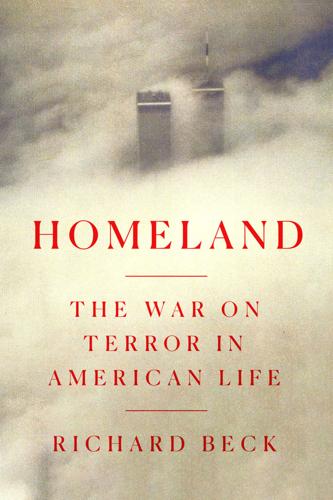
Homeland: The War on Terror in American Life
by
Richard Beck
Published 2 Sep 2024
These projects might once have symbolized the optimism of Lyndon Johnson’s Great Society, a project undertaken when America’s growth engine was roaring, but now they are “uninhabitable,” although Peters must know that many people do, in fact, continue to inhabit them. The factories became unusable because growth slowed and the corporations that built them stopped investing in their operation, and the projects, which once housed a class of people referred to as the working poor, are now little more than decrepit containers in which to store people who are still impoverished but increasingly struggle to find any work at all. This pessimistic vision may seem like a non sequitur, a somewhat paranoid conception of domestic social decay shoehorned into what is otherwise a coherent (if very contestable) account of what the United States will need to do to maintain its global dominance in the twenty-first century.
…
States and municipalities had slightly more success, though mostly in the area of more rigorous training. In response to Black Lives Matter’s central 2020 demand, however—that police departments throughout the country be substantially defunded, so as to decrease the influence police have over the daily lives of the working poor—government at all levels delivered a clear, resounding “no.” Defunding the police was rejected by every major presidential candidate during the 2020 campaign, including the democratic socialist Bernie Sanders. And while the country’s fifty largest cities reduced their police budgets by around 5 percent in 2021, that was almost entirely due to wider post-pandemic cuts to municipal budgets.
…
There are many millions of people living in the United States who don’t want to make war on Arabs, Muslims, or China to preserve America’s economic privileges. They don’t want to see protesters and refugees beaten, demonized, jailed, and killed. They don’t want fossil fuels to lay waste to what remains of our biosphere, and they don’t want the world’s working poor to be sacrificed on the altar of unending American supremacy. In the decades to come, some of those people are going to find ways of changing and living in society that don’t require a militarized world of SWAT teams, armored police vehicles, fortified borders, surveillance, night raids, secret prisons, and bombs, if only because they have no other choice.
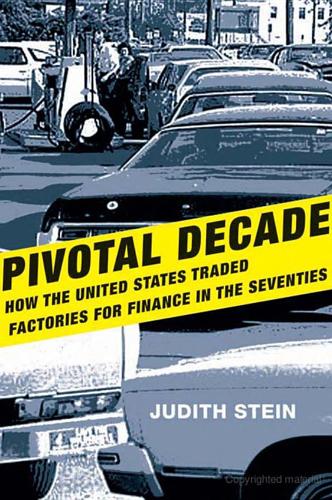
Pivotal Decade: How the United States Traded Factories for Finance in the Seventies
by
Judith Stein
Published 30 Apr 2010
As a result of the Revenue Act of 1978, the middle class share of the tax burden increased, and, with rising social security taxes in 1979 and inflation, its tax bill actually increased. The Democratic congress fueled the fires of the tax revolt of 1978.94 The only real winners, Schultze declared, were the “working poor and the very wealthy.” And, he added, “from the standpoint of investment stimulation, the capital gains cut is relatively wasteful and from an income distribution standpoint it is regressive.”95 Carter briefly considered vetoing the bill. But the macroeconomic need for a tax cut for 1979 and the popularity of tax reductions made such a course economically and politically difficult.
…
It converted Medicaid into a block grant, in essence turning over the health care of the poor to the states. It cut the growth of Medicare. Despite the radical surgery, Gingrich included $227 billion in tax cuts, achieved partly by reducing the Earned Income Tax Credit, thus raising taxes for the working poor. Believing that the accommodating Clinton would yield, the speaker overplayed his hand when the president did not and government shut down. Surprising everyone, Clinton had the public with him. By early January the Republicans capitulated, which ended the Gingrich Revolution. Nevertheless, the GOP forced Clinton to accept a seven-year goal to balance the budget and, by implication, erased the significance of Clinton’s own efforts in 1993.

Smart Cities: Big Data, Civic Hackers, and the Quest for a New Utopia
by
Anthony M. Townsend
Published 29 Sep 2013
In the slums of the developing world’s megacities, where those responsibilities were hardly acknowledged to begin with, crowdsourced alternatives may allow governments to free themselves from the obligation to equalize services in the future. As fashionable as it has become in the developed world, crowdsourcing is highly regressive. It presumes a surplus of volunteer time and energy. For the working poor, every second of every day is devoted to basic survival. The withdrawal of any government services would remove a critical base of support for these extremely vulnerable communities. For engineers and technologists, the intractability of these dilemmas is deeply uncomfortable. Information technology has remarkable power to help the poor help themselves, but to date its greatest impact has been to lure them off their farms to squatter cities where they now wait to see if they’ll be permitted to grow rich too.
…
As she explained it to me, “The difference with transit data is that developers are maintaining and improving the apps rather than abandoning them. Users are willing to pay for transit apps and continually suggest new features to developers to make them better, and transit agencies keep releasing new and improved data sets.”22 Investing in transit apps is also good public policy. They’re highly inclusive and the benefits accrue to the working poor who depend on public transportation the most. For a working mom struggling to balance childcare and a long commute, knowing the arrival time of the next bus is a huge help. And as apps make transit easier to use, they might help tempt drivers out of their cars and onto buses and trains, where they can be distracted by their online lives more safely and productively even as they cut their carbon emissions.

A Line in the Tar Sands: Struggles for Environmental Justice
by
Tony Weis
and
Joshua Kahn Russell
Published 14 Oct 2014
See Enbridge’s Environmental, Health and Safety and Corporate Social Responsibility Reports: csr.enbridge.com. 5. Statistics regarding the number of recent immigrants in Toronto census tracts are available from Stuart Thompson of York University. See Anna Mehler Paperny, “Interactive Map: Explore the data behind Toronto’s working poor,” The Globe and Mail, February 10, 2012, www.theglobeandmail.com/news/toronto/interactive-map-explore-the-data-behind-torontos-working-poor/article545650/. 6. For the purposes of this chapter, the term “two-spirit” is used to refer to Indigenous people who embrace the fluid, non-linear, and interrelated nature of all aspects of their identity, including their gender, sexuality, community, culture, and spirituality. 7.
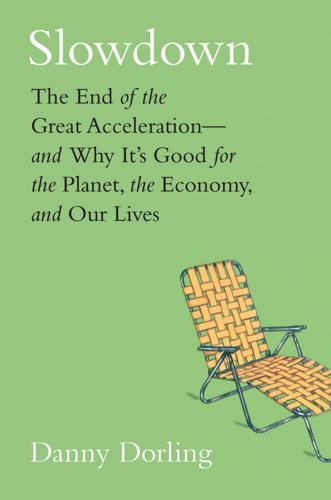
Slowdown: The End of the Great Acceleration―and Why It’s Good for the Planet, the Economy, and Our Lives
by
Danny Dorling
and
Kirsten McClure
Published 18 May 2020
Max Neufeind, Jacqueline O’Reilly, and Florian Ranft (New York: Rowman and Littlefield, 2018), 286-94, https://policynetwork.org/wp-content/uploads/2018/06/Work-in-the-Digital-Age.pdf. 24. Anna Ilsøe, “Progressing the Voluntarist Approach,” in Neufeind, O’Reilly, and Ranft, Work in the Digital Age, 286. 25. “Global Unemployment Down, but Too Many Working Poor: UN,” New Straits Times, 13 February 2019, https://www.nst.com.my/world/2019/02/459969/global-unemployment-down-too-many-working-poor-un. New Straits Times is Malaysia’s oldest English-language politics and business newspaper. 26. Nationwide House Price Index, accessed 6 May 2019, https://www.nationwide.co.uk/-/media/MainSite/documents/about/house-price-index/downloads/uk-house-price-since-1952.xls. 27.

The Hour of Fate
by
Susan Berfield
Shortly afterward, Roosevelt visited the Evening Sun office where Riis worked and left his card with a note on the back: “I have read your book7 and I have come to help.” Roosevelt was working on the Civil Service Commission then, so there wasn’t much he could do, but the two became friends. Five years later, as health commissioner, Roosevelt saw that living conditions for the working poor were unimproved since then, or even since his time as legislator, when his fact-finding missions among tenement dwellers had first challenged his perspective on the underclass. His political pronouncements became more forceful. “There is not8 in the world a more ignoble character than the mere money-getting American, insensible to every duty, regardless of every principle, bent only on amassing a fortune,” Roosevelt wrote in a magazine article in 1895.
…
The men called it “mining the miners.”13 Then owners lowered production and raised prices. Some of the earlier generations, resentful or retired, moved away. By 1902, at least half14 of the anthracite miners were immigrants from Slavic countries; by some counts they spoke fourteen different languages and dialects. They were the new working poor, each month calculating how to support their families. The old high-priced “pluck-me” company stores had officially closed, only to be handed over to the relatives of favored foremen or superintendents. Shopping there15 wasn’t compulsory, if a miner didn’t care about losing a rich vein or the days to mine it.

The Future Won't Be Long
by
Jarett Kobek
Published 15 Aug 2017
One empty lot looked as if its building had exploded, obliterating the walls and ceilings while leaving the interior contents unscathed. Piles of doors and furniture and bathtubs and the scattered plastic of people’s lives, trash all mashed together. There was no fence, no barrier between the street and the remains. My family had been poor, but we were the working poor, people who lived off our land. The citizens of Alphabet City were something below that, living on the streets, in abandoned buildings, in empty lots, in burned-out cars. There was a ghost town quality that would be hard to believe today when every block is crammed with hundreds of people no matter what hour.
…
I somehow convinced Baby to come along. “You’re a groupie now?” he asked. The Inverted Bloody Crosses sounded horrible but were the proper sort of awful, constructing signs and signifiers of post-riot LES discontent. Pronouncements, sans musique, about the cops, about the rich, about wars against the working poor. All delivered by Jon de Lee. Vocalist and lead guitarist. In the short moments between his prolonged bouts of ranting, the band cranked out dense eruptions of noise. Jon later explained that the Crosses were thrashcore, elaborating on the various punk subgenres and their distinguishing features.
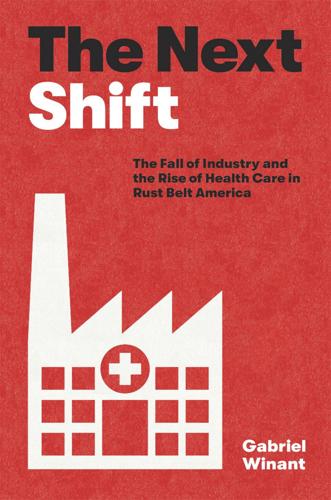
The Next Shift: The Fall of Industry and the Rise of Health Care in Rust Belt America
by
Gabriel Winant
Published 23 Mar 2021
“Right now we feel the hospitals can and will be able to provide this care,” commented the vice president for finance of the Hospital Council of Western Pennsylvania—though he made ominous noises about the future, in line with the industry’s ambitions to reclaim more funds from the state. Recalled psychiatric aide Koehler of this time, “We started taking in more and more people that went from middle class to working poor. But at that time, everyone had a right to a bed.”62 Although Pennsylvania had cut state welfare programs in 1982, health coverage remained intact for many in the recently displaced population. While being on the AFDC rolls qualified someone for medical assistance, those who fell through the cracks but remained on general assistance also had a chance at coverage.
…
Haraway saw a relationship between industrial restructuring and “the collapsing welfare state and the ensuing intensification of demands on women to sustain daily life for themselves as well as for men, children, and old people.” Similarly, in his speech at the 1988 Democratic National Convention, Jesse Jackson delivered a paean to the supposedly voiceless working poor whom his unexpectedly strong presidential campaign had sought to represent: “No, no, they are not lazy! Someone must defend them because it’s right, and they cannot speak for themselves. They work in hospitals. I know they do. They wipe the bodies of those who are sick with fever and pain. They empty their bedpans.
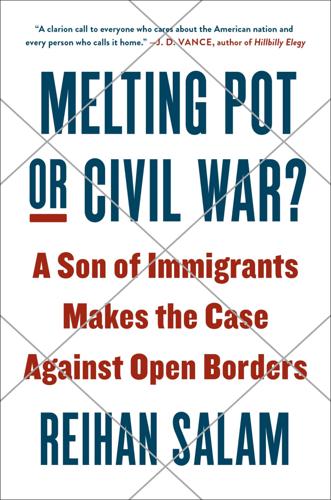
Melting Pot or Civil War?: A Son of Immigrants Makes the Case Against Open Borders
by
Reihan Salam
Published 24 Sep 2018
Indeed, the great appeal of newcomers as workers is that relative to native-born workers, they will do any job and live in the most insalubrious conditions. This is especially true of low-skill immigrants, who greatly increase their incomes by moving to the United States, even when they are among the poorest of America’s working poor. That’s part of why the political influence of the newcomer working class is so muted as compared to that of the established working class. Low-income immigrants tend to naturalize at low levels, in part because many are so poor that the cost of naturalization is daunting,14 and naturalized citizens vote at lower rates than the native-born.15 Meanwhile, unauthorized immigrants have even less influence.
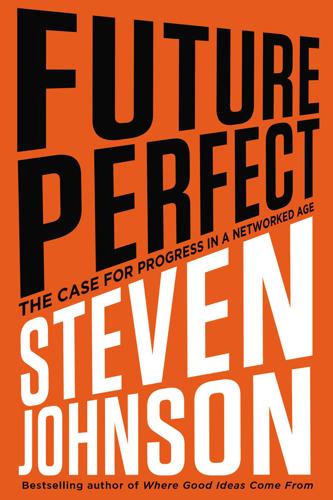
Future Perfect: The Case for Progress in a Networked Age
by
Steven Johnson
Published 14 Jul 2012
In the American tradition, the word “progress” has long been embedded in one of the country’s most durable political labels, dating back to the Progressive movement, which peaked a century ago with Teddy Roosevelt’s failed presidential bid under the banner of the Progressive Party—to this day the most successful third-party challenge to the presidency since the modern two-party system consolidated in the middle of the nineteenth century. The original Progressives were inspired by two emerging developments. They shared a newfound belief in the importance of social justice for women and the working poor, embodied in the suffrage movement and the muckraking journalism that exposed the horrors of many industrial workplaces. And they shared a belief in a new kind of institution: the crusading Big Government that could use its power to combat the excesses of the capitalist oligarchs, by breaking up the monopolies, by supporting unions, by regulating conditions on the factory floor, and through other novel interventions.
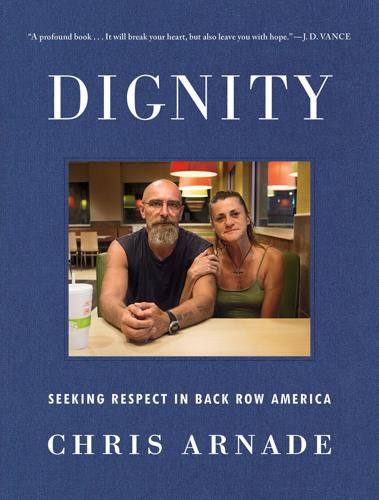
Dignity: Seeking Respect in Back Row America
by
Chris Arnade
Published 3 Jun 2019
This meant dismantling a system that demeaned, denied, and dehumanized so many based simply on the color of their skin, their sexuality, or their views. Yet we didn’t get just how deep and pervasive our privilege was. We were well intended, but we had removed ourselves from the lived experiences of most of the country, including the places and people we wanted to help. The vast majority of minorities and the working poor were excluded from our club—by a lack of credentials and by a system rigged against them getting any. Our similar path to success, our education, and our isolation from the bulk of the country, left us with a narrow view of the world. We primarily valued what we could measure, and that meant material wealth.
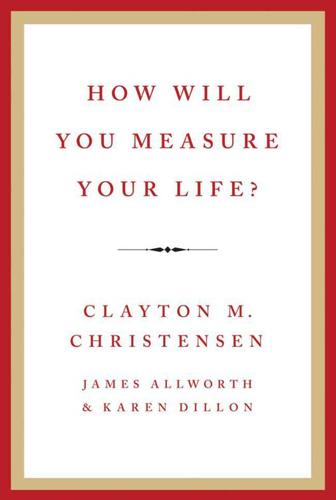
How Will You Measure Your Life?
by
Christensen, Clayton M.
,
Dillon, Karen
and
Allworth, James
Published 15 May 2012
That means children who have been exposed to extra talk have an almost incalculable cognitive advantage. What’s more, Risley and Hart’s research suggests that “language dancing” is the key to this cognitive advantage—not income, ethnicity, or parents’ education. “In other words,” summarized Risley and Hart, “some working-poor people talked a lot to their kids and their kids did really well. Some affluent businesspeople talked very little to their kids and their kids did very poorly…. All the variation in outcomes was taken up by the amount of talking, in the family, to the babies before age three.” A child who enters school with a strong vocabulary and strong cognitive abilities is likely to do well in school early on and continues to do well in the longer term.
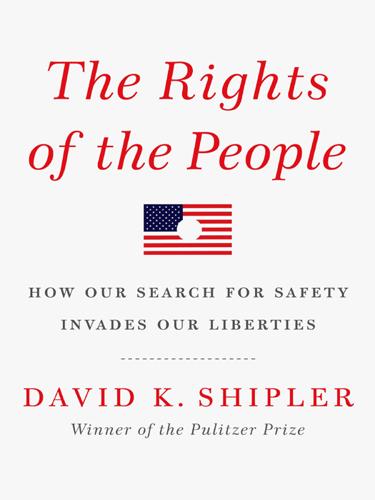
The Rights of the People
by
David K. Shipler
Published 18 Apr 2011
ALSO BY DAVID K. SHIPLER The Working Poor: Invisible in America A Country of Strangers: Blacks and Whites in America Arab and Jew: Wounded Spirits in a Promised Land Russia: Broken Idols, Solemn Dreams THIS IS A BORZOI BOOK PUBLISHED BY ALFRED A. KNOPF Copyright © 2011 by David K. Shipler All rights reserved. Published in the United States by Alfred A. Knopf, a division of Random House, Inc., New York, and in Canada by Random House of Canada Limited, Toronto. www.aaknopf.com Knopf, Borzoi Books, and the colophon are registered trademarks of Random House, Inc. Library of Congress Cataloging-in-Publication Data Shipler, David K., date.
…
He shared a George Polk Award for his coverage of the 1982 war in Lebanon and was executive producer, writer, and narrator of two PBS documentaries on the Israeli-Palestinian conflict, one of which won an Alfred I. duPont—Columbia University Award for excellence in broadcast journalism. He is the author of four other books: Russia: Broken Idols, Solemn Dreams; Arab and Jew: Wounded Spirits in a Promised Land (which won a Pulitzer Prize); A Country of Strangers: Blacks and Whites in America; and The Working Poor: Invisible in America. He has been a guest scholar at the Brookings Institution, a senior associate at the Carnegie Endowment for International Peace, a trustee of Dartmouth College, chair of the Pulitzer jury on general nonfiction, a writer-in-residence at the University of Southern California, and a Woodrow Wilson Visiting Fellow.

The Rational Optimist: How Prosperity Evolves
by
Matt Ridley
Published 17 May 2010
That Charles Darwin’s wealthy spinster aunt Sarah Wedgwood’s funding of the anti-slavery movement (she was the movement’s biggest donor) may have a hint of unconscious sexual motives, is a charming surprise. But it does not detract from the good she did, or from the fact that commerce paid for that good. This applies among the poor as well as the rich. The working poor give a much higher proportion of their income to good causes than the rich do, and crucially they give three times as much as people on welfare do. As Michael Shermer comments, ‘Poverty is not a barrier to charity, but welfare is.’ Those of libertarian bent often prove more generous than those of a socialist persuasion: where the socialist feels that it is government’s job to look after the poor using taxes, libertarians think it is their duty.
…
Not only technology, but living standards themselves, had begun their extraordinary break-out, their two centuries of unprecedented explosion. For the first time people’s life expectancy was rapidly rising, child mortality rapidly falling, purchasing power burgeoning and options expanding. The rise of living standards over the next few decades would be especially marked among the unskilled working poor. British working-class real earnings were about to double in thirty years, an unprecedented occurrence. All across the world countries were looking enviously at Britain and saying ‘I want some of that.’ But for the reactionary, Tory, nostalgic Robert Southey, the future could only get worse. He would have been at home in the modern environmental movement, lamenting world trade, tutting at consumerism, despairing of technology, longing to return to the golden age of Merrie England when people ate their local, organic veg, danced round their maypoles, sheared their own sheep and did not clog up the airports on the way to their ghastly package holidays.

Why We Can't Afford the Rich
by
Andrew Sayer
Published 6 Nov 2014
Maybe we should call it an entitlement rather than a ‘benefit’, which suggests an act of charity. • Typically, the unemployed are in and out of work as short-term jobs become available, rather than unemployed permanently. And thanks to declining real wages since 2008, the numbers of ‘the working poor’ have risen, substantially exceeding the out-of-work poor.11 • Many are unable to work because of debilitating illnesses or serious impairments. In the UK the current ConDem coalition has waged a shocking campaign against the sick and disabled, attempting to force people who are in no condition to work to find work or face benefit cuts

Investment: A History
by
Norton Reamer
and
Jesse Downing
Published 19 Feb 2016
Life insurance and savings accounts are two of the earliest and simplest vehicles. The development of life insurance includes comical legal strategies, actuarial mathematics, and ethical reactions to the very notion of betting on death. Savings accounts have an equally intriguing history—from the savings societies that were crucial for many working poor to the development of commercial banks that facilitate the transactions that propel the economy, and through the 1970s banking crisis, which required governmental intervention. Then there are the more complex, and often more risky, investments in the form of separate investment accounts and mutual funds.
…
Over time, more public equities have been held by insurance companies (growing at a 5 percent annual clip from 2000 to 2010).41 The establishment of insurance companies as investment vehicles is directly linked to the vast expansion of individuals who are participating in life insurance, savings, and investment activities. Savings Accounts Chapter 3 discussed evidence of life-cycle savings by female servants in the context of retirement. Here, the analysis broadens to the history of savings vehicles. Savings societies allowed the previously underbanked (most notably, the working poor) to access the benefits of a depository institution, and they grew in prominence in the early nineteenth century. The Philadelphia Saving Fund Society was the first American mutual savings bank, commencing its dealings in 1816. The first chartered US mutual savings bank was the Provident Institution for Savings in Boston, which began serving the public that same year.

Them And Us: Politics, Greed And Inequality - Why We Need A Fair Society
by
Will Hutton
Published 30 Sep 2010
But such arguments were never even attempted on a range of other issues. Consider the approach to children. Working families’ tax credits included a component to help pay for children; middle-class families, on the other hand, were given tax relief on childcare vouchers. In effect Labour built a two-tier system in which the working poor were targeted for special assistance. Instead of building a world in which child-rearing is seen as something that everybody faces together, New Labour created a segmented universe of ‘them’ and ‘us’. Worse, those in receipt of targeted benefit became stigmatised. Those earning slightly more resented not receiving the benefit; those who did receive it knew that it marked them out as poor.
…
The Ones Without Principles Are’, Quarterly Journal of Economics 116: 901–32. 12 Michael Faulkender and Jun Yang (2001) ‘Inside the Black Box: The Role and Composition of Compensation Peer Groups’, Journal of Financial Economics 96 (2): 257–70; Tom Diprete, Greg Eirich and Matthew Pittinsky, ‘Compensation Benchmarking, Leap Frogs and the Surge in Executive Pay’, forthcoming in the American Journal of Sociology. 13 Melvin Lerner (1980) The Belief in a Just World: A Fundamental Delusion, Plenum. 14 Graeme Cooke and Kate Lawton (2008) ‘Working out of Poverty: A Study of the Low-Paid and the “Working Poor”’, report, IPPR. 15 Mark Hetherington (2004) Why Trust Matters: Declining Political Trust and the Demise of American Liberalism, Princeton University Press. 16 Adam Smith (1776) An Enquiry into the Nature and Causes of the Wealth of Nations, Book 5, chapter 2. 17 Allan Lind, Carol Kulik, Maureen Ambrose and Maria de Vera Park (1993) ‘Individual and Corporate Dispute Resolution: Using Procedural Fairness as a Decision Heuristic’, Administrative Science Quarterly 38: 224–51. 18 Bruno Bettelheim (1943) ‘Individual and Mass Behaviour in Extreme Situations’ Journal of Abnormal and Social Psychology 38: 417–52. 19 Matthias Benz and Bruno Frey (2004) ‘Being Independent Raises Happiness at Work’, Swedish Economic Policy Review 11: 95–134. 20 Bruno Frey and Alois Stutzer (2001) ‘Beyond Bentham – Measuring Procedural Utility’, CESifo Working Paper No. 492. 21 Tom Tyler (1997) ‘Procedural Fairness and Compliance with the Law’, Swiss Journal of Economics and Statistics 133 (2/2): 219–40 at 231. 22 For an even-handed discussion, see Michael Trebilcock (1994) The Limits of Freedom of Contract, Harvard University Press. 23 Donald W.

The Stack: On Software and Sovereignty
by
Benjamin H. Bratton
Published 19 Feb 2016
Jameson continues, “This dialectical character of the new reality Wal-Mart represents is also very much the source of the ambivalence universally felt about this business operation, whose capacity to reduce inflation and to hold down or even lower prices and to make life affordable for the poorest Americans is also the very source of their poverty and the prime mover in the dissolution of American industrial productivity and the irrevocable destruction of the American small town.” In other words Walmart's relentless synthetic pricing and production megastructure allows the working poor to afford a diverse collection of commodities from roughly 11,000 stores in twenty-seven countries, but at the expense of keeping them poor. Walmart is known to pay wages so low that many full-time employees may receive regular government assistance just to survive, effectively treating marginal labor costs as an externality and outsourcing them to the state as just another manipulated supplier, and all the while realizing global net profits of over $17 billion.
…
See cars: driverless personal rapid transit (PRT) systems, 282 personhood, 173–175, 271, 439n65 persuasive interfaces, 224, 430n65 pervasive computing, 113, 172, 301–302 petroglyphs, 309 phone-car interface, 280 physicalization of abstraction, 29, 33 physical-to-virtual binary opposition, 19 Pinochet, Augusto, 59, 385n25 piracy, 380n15 pirate radio, 244–245 placebo interfaces, 224 placefulness, 16, 29, 155 place-making, 84, 149–150, 310 planetary computational economy, 92 planetary data infrastructure, 267 planetary photography, 150, 300, 354 planetary-scale computation architecture, 5, 197 assignment claimed by, 122 cartographic imperative of, 191 client-side versus server-side critique, 356–357 climactic impact of, 92–93, 96 design and, 192, 356 divides crossed, 27–28 ecological governance convergence, 98 economic geography, effect on, 199 elements of, 5 emergence of, 3, 13, 55 energy footprint, 82–83, 92–96, 106–107, 113, 140–141, 258–260, 303–304 forms taken, 4–5 future of, 351, 356 Google's occupation of, 34–40 governance and, 27 jurisdictions, 357 limits to growth, 93–94 at microlevel of the object, 191–192 neoliberalism and, 21 physical world, relation to, 358 political geography and, 6, 11 real project of, 404n11 space of, 34–40, 303 technologies’ alignment into, 4–5 urban design for, 160 Planetary Skin Institute, 88–90, 92, 97–98, 106, 180, 336, 392n42, 452n67 planetary supersurfaces, 188–189 planetary visualization, 452n69 Planet of the Apes, 182 planetology, comparative, 300–302, 333, 353, 360 plan of action, 43, 342 platform architecture, ideal, 49–50 platform-as-state, 7–8, 42, 48–50, 120–123, 140, 295, 315–316, 319, 327, 335, 341 platform-based robotics, 138–139 platform cities, 183–189 platform design, 44, 48, 51 platform economics network value, 159 platform surplus value, 48, 137, 159, 309, 374 User platform value, 309, 375–376 User surplus, 48 value versus price, indexing of, 336 platforms accidents of, 51 authority, 57 autonomy, 136, 282, 339 centralization versus decentralization, 48 characteristics of, 47–51, 214 City layer, designs for, 177 competition between, 50 component standardization, 47–48 control-decontrol paradox in, 46 decision-making, 44, 341–342 defined, 42, 328, 374, 383n4 diagrams ensnaring actors in, 44 economically sustainable, 48 etymology, 43 exchange value, 51 functions of, 19, 41, 119, 328, 342 future of, 117, 141–145, 244, 295, 315–316 genealogy of, 42 generic universality, 49 geography, 110–112 governing, 109, 119, 143 identity, 42 information mediated, 46 institutional forms, 44 introduction, 41–46 logic, 19, 44, 314 mechanics, 44–51 model-to-real correlation, 387n33 network effects, 48 neutrality, 44 origins, 46 overview of, 41–46 physicality and tactility of, 129–130 platform of platforms, 332–333 platform-within-a-platform principle, 284 plots in, 44 as remedy and poison, 5, 133 robotics, shift to, 362 service infrastructures, 116 as stacks, 7–8, 42–43 standardization, 44–46 theory, 41, 47 wars, 110, 123–125, 295 platform sovereignty activist stance on, 312 architectural surface interfaciality in, 166–167 City layer infrastructures role in, 151–153 constitutional violence of, 155 deciding exceptions in, 21 decision-making, 32–33, 44 defined, 374 derivation of, 37 design, 87–88 emergence of, 33, 152 grid programmability providing, 38 guarantees, 151 of nonhuman User, 273 overview of, 51 paradoxes of, 37 principle of, 36 productive accidents of, 37 reversibility, 22, 152–153 states, 339 urban envelopes, 159, 258 platform surplus value, 38, 48, 137, 159, 309, 374 platform totalities, 297 plot, 43–44 Plug-In City (Archigram), 179 pluralism, 302–303 polis, segmentation of, 241 political, the, 6, 30, 379n10 political agency, 173–175, 250, 258 political-geographic order, 26, 56 political identity of the User, 260, 347 political machine, stack as, 55–58 political philosophy, 20 political rights of the User, 285 political subjectivity, 21, 136, 152, 258, 260, 268 political technology, territory as, 335 political theology, 105, 236, 243, 297, 426n46 politico-theological geographies, 242, 248, 320–322 politics agonistic logics of, 180, 247 architectural, 166–167 interfacial, 244–246 of Internet of Things, 204 norms of, 39 Schmittian, spatial dimension of, 381n24 of ubiquitous computing, 203 “Politics of the Envelope, The” (Zaera-Polo), 166 Pontecorvo, Gillo, 244 poor doors, 311 pop futurist media, 432n71 Popper, Karl, 459n19 popular ecology movement, 86 Portzamparc, Christian de, 311 postage stamps, 194 postal identity, 193–196, 206 postal system, 132, 153–154, 195 post-Anthropocenic geopolitics, 285 post-Anthropocenic User, 264 Postel, John, 319 post-Fordism, 231 posthumanism, 275 post-human User, 285, 287–288 “Postscript on Societies of Control” (Deleuze), 157–158 Pourparlers (Deleuze), 147 Pouzin, Louis, 41 poverty ending, 303, 443n23 interiority/exteriority of, 311–312 politics of, 312, 444n30 of working poor, 331 power architecture symbolizing, 325 cultural legitimacy of exercise of, 424n41 of extralegal violence, 317 monopolizing, 308–309 shifts in, 233, 312–313 power-knowledge asymmetries, 454n75 power of brand, 128, 130 “Powers of Ten” (Eames and Eames), 52 power tools, 438n59 preagricultural societies, 149 presence, 205 Price, Cedric, 179, 201 Princeton Radio Project, 254 Prism, 9, 121, 320 privacy axiomatization of individual, 409n42 biopolitics of, 159, 360 cost of, 136, 285, 445n37 expectations of, 346 meta-metadata recursivity for, 287 right to, 270, 285 sacralization through encryption, 347 privacy markets, 285, 445n37 private human User, dissolution of, 289 private versus public space, 159 production labor.
…
(Davis), 304–305 WikiLeaks, 9, 110 Wikipedia, 9, 125 Wilkins, John, 42 Wilkinson, Clive, 184 Williams, Stanley, 102 Wilson, Edward O., 385n25 Wilsonian globalism, 32 Witmore, Michael, 199 workampers, 111 workforce agricultural, 307–308 Amazon's, 186, 307, 443n19 Apple's, 186–187 automation and dehumanization of, 254, 285, 307–308, 344 Facebook's, 185 factory cities, 130–131, 179, 189 fulfillment centers, 111, 186, 443n19 Google's, 184–185 outsourced and re-outsourced, 111 poverty, 331 programmer lifestyle, 184 third-world countries, 443n23, 449n52 unemployed, 307 working poor, 331 world city as, 151 digital simulation of, 363–364 end of, 359 interfaces, 149 “World, The” (Perec), 75 world-making/world-erasure projects, 91–92, 267 World Trade Center, 321 Writers against Mass Surveillance, 293 Yanukovych, Viktor, 347 Young, Neil, 412n69 Yugoslavian civil war, 23 Zaera-Polo, Alejandro, 166–167, 175 Zee Town, Facebook, 185 zero-sum economics, 336 zettaflop computing, 102 Žižek, Slavoj, 241, 426n46, 427n51 zombie jurisdictions, 296 zone of habitation, 22 Zuckerberg, Mark, 185
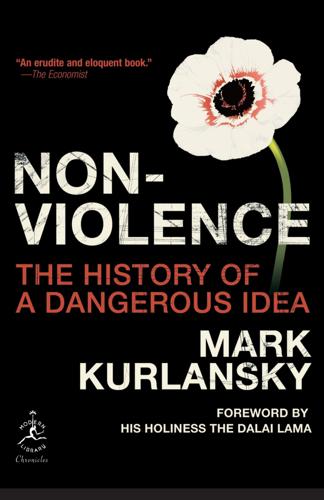
Nonviolence: The History of a Dangerous Idea
by
Mark Kurlansky
Published 7 Apr 2008
The demonstrations were accompanied by a boycott of British goods. The result of all this was that within a year the act was repealed. But the following year the British attempted another taxation scheme, the Townsend Acts, which, because they only taxed imports indirectly, the British hoped would be more palatable. The working poor were angry about their economic plight and they were not always nonviolent. They attacked and destroyed homes of officials, and looting was not uncommon. The intellectual leaders, being largely men of property, opposed these acts of destruction and tried to keep the street protests orderly. There was clearly a class division, and the upper-class leaders had to negotiate with the street leaders.

Makeshift Metropolis: Ideas About Cities
by
Witold Rybczynski
Published 9 Nov 2010
Robertson writes, is a plan that provides “a clear American order of things, elegantly canonizing the format of our public buildings, streets, houses, trees, yards and natural terrain.”2 The planner of Savannah was James Oglethorpe, founder and governor of the Georgia colony. Oglethorpe, who had been a successful general in the English army, was also a social reformer, settling the new colony with “working poor” and banning slavery. His remarkable town plan was based on a standardized “ward” consisting of forty house lots surrounding a central square fronted by public buildings. As the town grew, new wards were added in an orderly fashion. This sounds mechanical, but the ingenuity of the plan was that major and minor streets were an integral part of the expansion, creating continuous, treed avenues that connected the wards.

The Passenger
by
AA.VV.
Published 23 May 2022
This influx of higher-earning tenants into an already congested market has led to a rise in rents, which, in turn—together with the exclusionary zoning, no-fault evictions, and barriers to new construction that have beleaguered the rest of the state—is creating unprecedented housing instability among Salinas’s working poor. Over the past decade, there has been a 37 per cent loss of low-rent units in the city, while rents have shot up by almost 60 per cent since 2014—roughly four times the national average. According to the National Low Income Housing Coalition, the “housing wage” necessary to afford a modest two-bedroom apartment in Salinas, where costs now exceed those of Miami and Chicago, is $29.62 per hour.
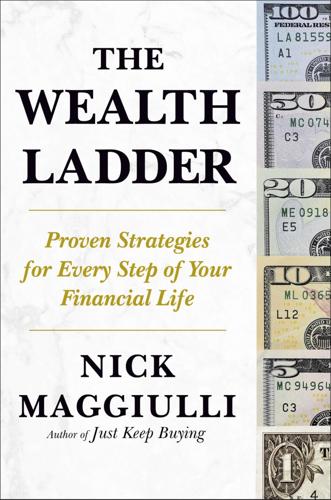
The Wealth Ladder: Proven Strategies for Every Step of Your Financial Life
by
Nick Maggiulli
Published 22 Jul 2025
Rich kids can afford many throws. If they want to, they can try over and over and over again until they hit something and feel good about themselves. Some keep going until they hit the center bull’s-eye, then they give speeches or write blog posts about “meritocracy” and the salutary effects of hard work. Poor kids aren’t visiting the carnival. They’re the ones working it.[16] While this comment might seem exaggerated to some, there is data to back it. A study from Israel’s Finance Ministry found that “the income of someone’s parents is the factor that correlates most to entrepreneurship, with higher wealth connected to a greater likelihood of being a start-up founder.”[17] Many prominent tech billionaires, including Bill Gates and Jeff Bezos, had parental support in the creation of their first businesses.[18] Of course, I’m not suggesting that rich parents are a requirement to become a successful entrepreneur.
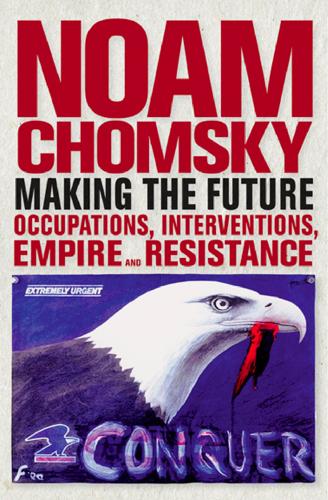
Making the Future: The Unipolar Imperial Moment
by
Noam Chomsky
Published 15 Mar 2010
There are differences between them. In his study Unequal Democracy: The Political Economy of the New Gilded Age, Larry M. Bartels shows that during the past six decades “real incomes of middle-class families have grown twice as fast under Democrats as they have under Republicans, while the real incomes of working-poor families have grown six times as fast under Democrats as they have under Republicans.” Differences can be detected in the current election as well. Voters should consider them, but without illusions about the political parties, and with the recognition that consistently over the centuries, progressive legislation and social welfare have been won by popular struggles, not gifts from above.

Meet the Frugalwoods: Achieving Financial Independence Through Simple Living
by
Elizabeth Willard Thames
Published 6 Mar 2018
Compounding this problem is the fact that many economically disadvantaged people lack a bank account, which means they’re unable to take advantage of the lending opportunities or overdraft protections that a large financial services firm can provide. It’s my belief that we, as a country, need a stronger social safety net for the working poor. We need comprehensive medical and dental coverage, we need welfare programs that don’t strand families who earn just barely too much money to qualify for housing and food subsidies, we need to care not only for our children and our elderly, but also for adults who struggle—for any number of reasons—to cobble together a livable wage.
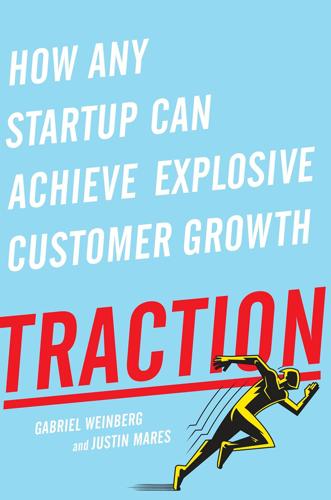
Traction: How Any Startup Can Achieve Explosive Customer Growth
by
Gabriel Weinberg
and
Justin Mares
Published 5 Oct 2015
Engineers frequently fall victim to this because they do not understand distribution. Since they don’t know what works, and haven’t thought about it, they try some sales, BD, advertising, and viral marketing—everything but the kitchen sink. That is a really bad idea. It is very likely that one channel is optimal. Most businesses actually get zero distribution channels to work. Poor distribution—not product—is the number one cause of failure. If you can get even a single distribution channel to work, you have great business. If you try for several but don’t nail one, you’re finished. So it’s worth thinking really hard about finding the single best distribution channel. We use the name Bullseye for our three-step framework because you’re aiming for the Bullseye—the one traction channel at the center of the target that will unlock your next growth stage.
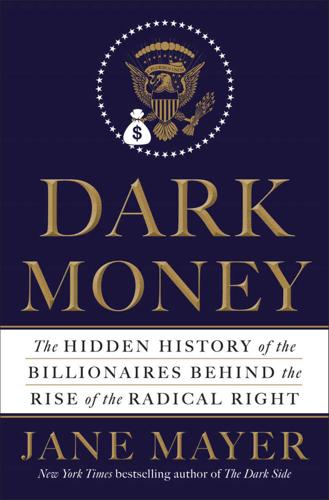
Dark Money: The Hidden History of the Billionaires Behind the Rise of the Radical Right
by
Jane Mayer
Published 19 Jan 2016
Romney was expressing what The Wall Street Journal described as the “new orthodoxy” within the Republican Party. In a new twist on the old conservative argument against government aid for the poor, it denigrated nearly half the country as what the Journal called “Lucky Duckies” freeloading off the rich. This startling theory held that because many members of the middle class and working poor received targeted tax credits, such as the earned income tax credit and the child tax credit, which reduced their income taxes to zero, they were “a nation of moochers,” as the title of a book written by a fellow at the Wisconsin Policy Research Institute put it. Behind the theory were several nonprofit organizations tied to the Kochs and other wealthy ideologues, including the Heritage Foundation and AEI.
…
Carter, who specialized in southern history at the University of South Carolina, noted that when friends around the country asked if things in North Carolina were as bad as they looked from the outside, he was forced to answer, “No, it’s worse—a lot worse.” Republicans claimed their new policies allowed residents to “keep more of their hard-earned money.” But according to a fact-checking analysis by the Associated Press, the working poor were in line to pay more while the wealthiest gained the most. The North Carolina Budget and Tax Center scored the changes and found that 75 percent of the savings would go to the top 5 percent of taxpayers. The legislature eliminated the earned-income tax credit for low-income workers. It also repealed North Carolina’s estate tax, a move that was projected to cost the state $300 million in its first five years.
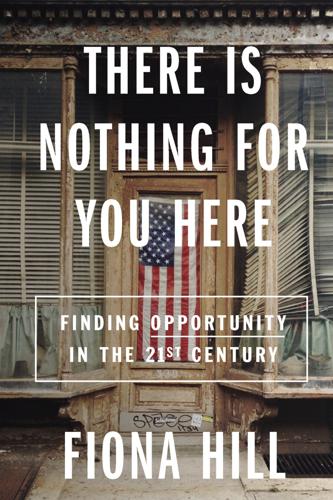
There Is Nothing for You Here: Finding Opportunity in the Twenty-First Century
by
Fiona Hill
Published 4 Oct 2021
In addition, Biden drew a large turnout among Black Americans, especially women, in pivotal states like Georgia and Michigan. America seemed genuinely polarized in the aftermath of the election, its population separated into all kinds of sectarian camps. Joe Biden appeared to be the president of the educated and economically advantaged, and Donald Trump the champion of the predominantly white working poor, the socially disaffected, and white evangelical Christians of all incomes. The fault lines ran along the edges of cities, suburbs, and towns, dividing educated white-collar professionals from blue-collar workers who had been denied similar educational opportunities. In multiple analyses of the voting patterns, inequality as well as social grievance and cultural despair had undermined trust in democracy and fed populism.
…
The system included not just the establishment of the National Health Service but the introduction of a “family allowance,” a mix of direct payments and tax benefits to cover every child until he or she completed school; the provision of national insurance and pension reforms; and other benefits and subsidies (like free school milk) to provide a safety net for children, the working poor, and the elderly. As was the case in the UK before the formalization of the welfare state and the NHS in the 1940s, the United States Congress in 2021 had already allocated billions of dollars for domestic programs that fell under the rubric of “development.” The federal government could fold into a new institution existing activities and funding, such as grants and other measures to alleviate poverty, provide child benefits and unemployment assistance, improve resources for K-12 public school education, and increase access for the majority of the population to lifelong education, new skills development, and retraining, for example.
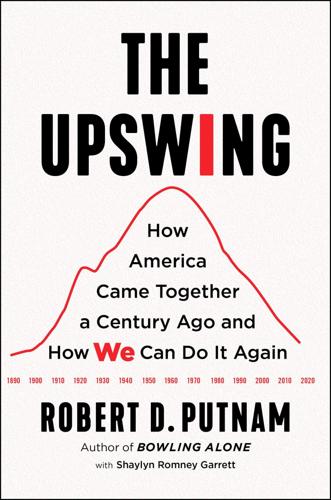
The Upswing: How America Came Together a Century Ago and How We Can Do It Again
by
Robert D. Putnam
Published 12 Oct 2020
As an undergraduate at Mount Holyoke College she had been introduced to Progressive politics by a professor who tasked her students with visiting factories and interviewing laborers about their working conditions. After graduation, Perkins began teaching at a Chicago-area girls school and continued to learn about the plight of the working poor as a volunteer at Jane Addams’s Hull House. At Hull House she rubbed shoulders with an impressive array of influential Progressives, and saw firsthand the social problems which, until then, she had mainly encountered only in books. She attended fiery labor speeches and thought-provoking lectures, and found herself questioning the detached, conservative politics of her parents and becoming increasingly drawn to fight for the rights of the downtrodden.
…
A GROUNDSWELL OF AGITATION Though individual and collective action in neighborhoods, cities, and states throughout the country provided the lifeblood of innovation behind the movement, it quickly became clear to Progressives that local solutions were not enough to tackle problems that were systemic in nature, and often extended beyond the bounds of cities and states. In her book, Twenty Years at Hull-House (1910), Jane Addams describes an experience early in her tenure as an advocate for the working poor, in which she tried to negotiate directly with a factory owner whose negligence had caused injury to two young boys, and death to a third. She recounts having naively believed that appealing directly to the owner’s conscience would remedy the situation, and was shocked when he refused to do anything.

End This Depression Now!
by
Paul Krugman
Published 30 Apr 2012
For each category I’ve compared the rate of growth in spending from 2000 to 2007—that is, between two periods of more or less full employment, under a conservative Republican administration—with the growth from 2007 to 2011, amid economic crisis. Now, “income security” is mainly unemployment benefits, food stamps, and the earned-income tax credit, which helps the working poor. That is, it consists of programs that help poor or near-poor Americans, and which you’d expect to spend more if the number of Americans in financial distress rises. Meanwhile, Medicaid is also a means-tested program to help the poor and near-poor, so it also should spend more if the nation is experiencing hard times.
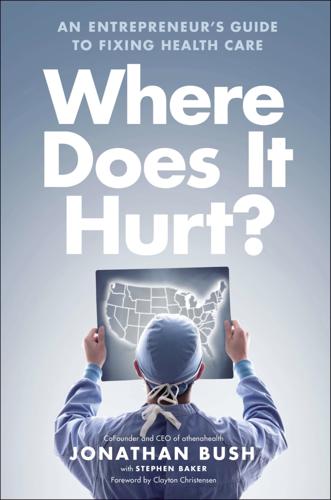
Where Does It Hurt?: An Entrepreneur's Guide to Fixing Health Care
by
Jonathan Bush
and
Stephen Baker
Published 14 May 2014
The union had a contract that put aside funds for benefits. Year after year the rank and file were promised that any savings from this fund would underwrite pay hikes. This sounded fine. But as you can imagine, all potential savings were swallowed up by ballooning health care costs. Pay was stuck at an average of $13 per hour. Union members were working poor and getting poorer. Unlike most Americans, they could see in lurid detail how exploding health care costs were emptying their pockets. So in 2003, the union contracted with Milstein. “I told them,” Milstein says, “that doctors are like cars. Some give you forty miles per gallon on health insurance fuel.
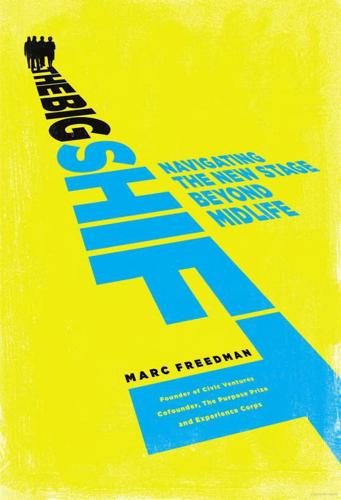
The Big Shift: Navigating the New Stage Beyond Midlife
by
Marc Freedman
Published 15 Dec 2011
Trained initially in free clinics caring for the poor and linked to teaching hospitals, he went on to become a primary-care doctor as well as an adjunct faculty member at the well-regarded University of California–San Francisco (UCSF) Medical School. A few years earlier, while still engaged in his private practice, Schwartz started volunteering at night at Samaritan House, a local agency serving the disadvantaged. He began seeing working poor patients, those who made too much money to qualify for publicly funded medical care yet not enough to pay for health insurance. He examined them on Samaritan House’s conference room table, in the makeshift doctor’s office he set up in that room. As word got around about the service and the line out the door wound down the street, Schwartz moved from one night a week to two.

Inequality and the 1%
by
Danny Dorling
Published 6 Oct 2014
Figure 3.4 in Social Mobility and Child Poverty Commission, ‘State of the Nation 2013, October 2013, London, Stationery Office, at gov.uk. 66. H. Reed, ‘In the Eye of the Storm: Britain’s Forgotten Children and Families – Methodological Summary’, London, Action for Children – The Children’s Society – NSPCC, 2012, p. 6. 67. G. Kelly, ‘Stealth Cuts Are Making Universal Credit Toxic to the Working Poor’, Guardian, 12 December 2013. 68. According to the research undertaken for the Children’s Society and the National Society for the Prevention of Cruelty to Children. See Reed, ‘In the Eye of the Storm’. 69. Nat Cen, ‘Social Attitudes in an Age of Austerity’, British Social Attitudes 2012, London, National Centre for Social Research, at bsa-29.natcen.ac.uk. 70.
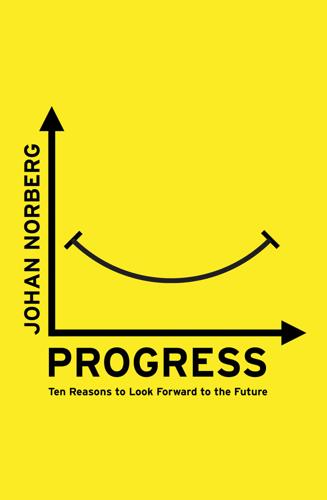
Progress: Ten Reasons to Look Forward to the Future
by
Johan Norberg
Published 31 Aug 2016
The Scottish economist Adam Smith, the arch-enemy of the Mercantilists, thought that this was wrong, arguing that higher wages could in fact make people work more and that ‘no society can surely be flourishing and happy, of which the far greater part of the members are poor and miserable.’7 The ideas of Smith and other Enlightenment thinkers developed a growing respect for the hard-working poor. By then, the Industrial Revolution was taking off in Europe, starting in England, a country where government control of the economy had been scaled back and the élites did not try to resist new technologies like they did in other places. A new openness to experiments and technological applications of scientific discoveries improved production methods that had stayed almost the same for a thousand years.
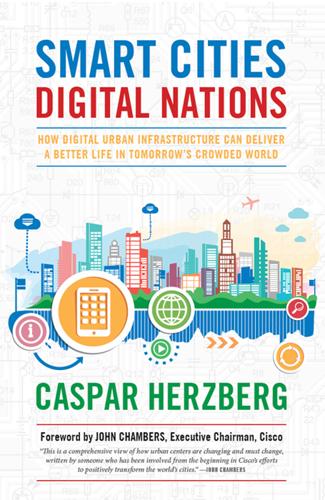
Smart Cities, Digital Nations
by
Caspar Herzberg
Published 13 Apr 2017
In the case of New Cairo and 6th October City, they were designed to relieve some of the pressure from Cairo’s runaway population growth but thus far had perpetuated its striking income disparity. Rather than solving a need for stronger economic drivers, many found these developments to be suburban retreats for the wealthy and impractical for the working poor. The entire concept of urban planning on the brand-new, citywide scale too easily invoked dystopian images of grey, lifeless structures containing none of the vitality and relevance the world now expects of city life. Meanwhile, established cities such as London and Chicago were fighting hard to retain their positions as transportation hubs; was it not presumptuous to believe that a brand-new city could divert enough air traffic to sustain economic promise?

The Nation City: Why Mayors Are Now Running the World
by
Rahm Emanuel
Published 25 Feb 2020
The middle class believed it was a get-out-of-jail-free card intended solely for the executives who created the crisis in the first place. And then came the Affordable Care Act. Again, this was a great piece of social policy. We had to provide health-care coverage for the 40 million formerly uninsured people in our country. The program at one level was an expansion of Medicaid for the working poor, but our political opposition painted it as health care for “others” while you struggled to pay your own bills. People also came to believe that they would lose their health care and doctor and not be able to keep them as promised. Somehow those narratives became the more accepted ones—at the time.
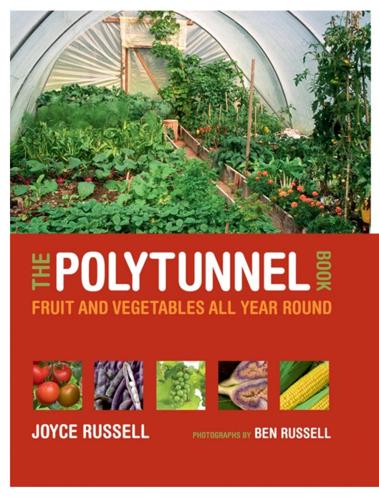
The Polytunnel Book: Fruit and Vegetables All Year Round
by
Joyce Russell
Published 3 Apr 2013
You will need to watch out for sharp spines on the stem, as these can give a nasty prick. Cut through the stem with a knife or clippers. Don’t just tug on the plant, as roots may be damaged. August is ‘make or break’ month for this temperamental vegetable. Some people grow aubergines without any problem; other people just can’t seem to get them to work. Poor fruit set can be due to low temperatures, poor feeding or poor pollination (or all three at once). If no fruit has set, dampen a paintbrush and transfer pollen as early in the month as possible. If we get a hot, late summer, it’s still possible to get late fruit. Feed with a seaweed-based liquid feed and apply well-rotted horse manure as a mulch around the aubergine plants.

Come and Take It: The Gun Printer's Guide to Thinking Free
by
Cody Wilson
Published 10 Oct 2016
I had avoided other diners and cafés since my first weeks back in Austin. Everything to the south and east was choked with hipsters, sitting, malling, looming—mostly looming. But this far north they dared not gambol. No quarter for your bad conscience and mercenary affectations among the old and working poor, whose blind indifference was better than any contempt. Highway 1 led me slowly back to Guadalupe and home, where lustrous bands of white and green and red were pulled across the pavement’s mirror surface. The night’s work finished, I thought maybe I’d go to class tomorrow. PART II Ministry of Defense One virtue is better than two, a poet once said.

Internet for the People: The Fight for Our Digital Future
by
Ben Tarnoff
Published 13 Jun 2022
Finally, a 2020 study found that drivers in San Francisco earned less than the minimum wage: Chris Benner et al., “On-Demand and On-the-Edge: Ride-hailing and Delivery Workers in San Francisco,” UC Santa Cruz Institute for Social Transformation, May 20, 2020. Georgetown study: Katie J. Wells, Kafui Attoh, and Declan Cullen, “The Uber Workplace in DC,” Georgetown University Kalmanovitz Initiative for Labor and the Working Poor, April 2019. 130, Inspired by Uber’s example … “Uberization”: Alexis Madrigal and his colleagues at The Atlantic assembled a spreadsheet of 105 “Uber-for-X” companies. Prop 22 campaign and pursuit of similar measures: Josh Eidelson, “The Gig Economy Is Coming for Millions of American Jobs,” Bloomberg Businessweek, February 17, 2021, and Kate Conger, “Gig Companies Want Massachusetts Voters to Exempt Workers from Employee Status,” New York Times, August 4, 2021.
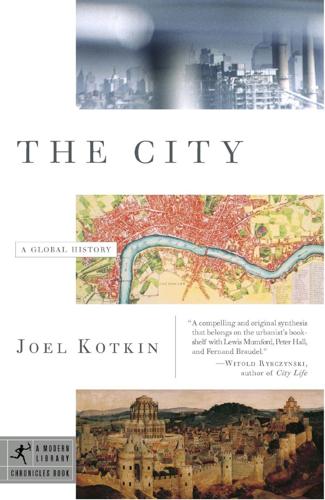
The City: A Global History
by
Joel Kotkin
Published 1 Jan 2005
Rather than embrace economic change, Strong abjured it, believing that the industrial expansion was pushing the nation toward the “final doom of materialism.” Others, such as Chicago’s Jane Addams, believed only massive intervention could address the rampant crime, deepening class conflict, and growing evidence of deviancy, from alcoholism to prostitution, common among the working poor. A host of American cities soon followed her example of providing recreation and educational opportunities in slum areas. Reformist urges also spilled into the political world, transforming often corrupt governments in cities such as Milwaukee, Cleveland, Toledo, and Detroit.38 Cities everywhere in America began modernizing their administrations.

Stress Test: Reflections on Financial Crises
by
Timothy F. Geithner
Published 11 May 2014
“We can’t accept that,” I said. “If they want to argue that we can’t raise taxes in a weak economy, then nobody’s taxes should go up.” I thought we should be willing to swallow two more years of the Bush tax cuts for the wealthy, but not if we had to add to the burden of the middle class and the working poor. After the meeting, Axelrod thanked me for saying what others were thinking. Over the next couple of days, McConnell agreed to most of what we wanted, although he insisted on keeping the egregious estate tax cuts for multimillionaires. We also engineered a clever switch conjured up by Gene Sperling, replacing the Making Work Pay tax cut for most of the American workforce—which Republicans hated because it was part of President Obama’s stimulus—with a one-year payroll tax cut.
…
We preserved the Bush tax cuts for families earning up to $450,000 a year but restored the higher Clinton-era rates above that, raising about $600 billion in new revenue and making the tax code more progressive. We also extended unemployment benefits, along with many of the Recovery Act’s tax credits, including relief for the working poor and college students. Senate Republicans would not agree to any additional stimulus, and the deal only delayed the dreaded sequester for two months; it did not even address the debt limit. But it was a truly bipartisan agreement, and at 2 a.m. on January 1, the Senate overwhelmingly approved it, 89–8.

Never Let a Serious Crisis Go to Waste: How Neoliberalism Survived the Financial Meltdown
by
Philip Mirowski
Published 24 Jun 2013
As of 2008, there were more payday lender outlets in the United States than there were McDonald’s and Burger King restaurants combined, with turnover that dwarfed casinos, the other major poverty vampire operation.73 What is astounding about such operations is that they are no longer treated as reviled bottom-feeders by both the media and politicians, but rather as exemplary of the types of legitimate businesses that provide opportunity and salvation in the current contraction. Given the vast hollowing out of the income distribution, it makes sense that the working poor constituted one of the only substantial customer segments that left any room for expansion: Jared Davis [CEO of Check ’n Go] . . . pulls in around $20 million a year making loans of $300 or $400 or $500 a year to the working poor but he had brought his brother into the business and it was his father’s money that had gotten him started. “I don’t consider myself wealthy,” he tells me . . . There were photos around his office of him shaking hands with George W.
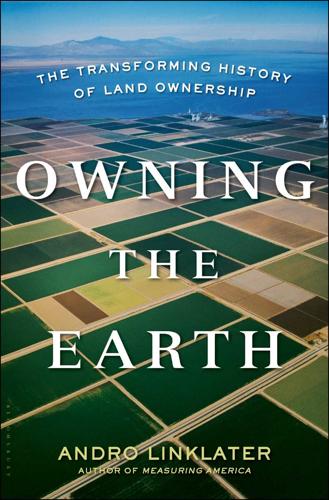
Owning the Earth: The Transforming History of Land Ownership
by
Andro Linklater
Published 12 Nov 2013
Raw wool, worth around two million pounds a year, earned more than eight million pounds a year as cloth, and its production employed almost one in five of the workforce in the mid-seventeenth century. And almost uniquely among European nations, England charged no internal taxes on the movement of agricultural produce from the country to the town. “The working manufacturing people of England eat the fat, and drink the sweet, live better, and fare better, than the working poor of any other nation in Europe,” declared Daniel Defoe in 1726. “They make better wages of their work, and spend more of the money upon their backs and bellies, than in any other country.” The significance of this widening divergence has provoked furious debate amongst historians and economists attempting to explain why it happened.
…
An explosive growth in the population, from about seven million inhabitants in 1700 to more than eleven million by the end of the century, should have pushed up agricultural prices and profits as the demand for food increased. Instead, prices for wheat and other cereals barely rose until the 1780s. Cheap food meant that Daniel Defoe did not exaggerate in 1726 when he claimed that “The working manufacturing people of England eat the fat, and drink the sweet, live better, and fare better, than the working poor of any other nation in Europe.” Much of the demand was in fact met by imports of wheat from northern France, and some from an increase in the acreage worked by British farmers. But in the first seventy years of the century, the rising productivity of farming that had doubled wheat yields since the early 16th century began to flatten and almost level off.
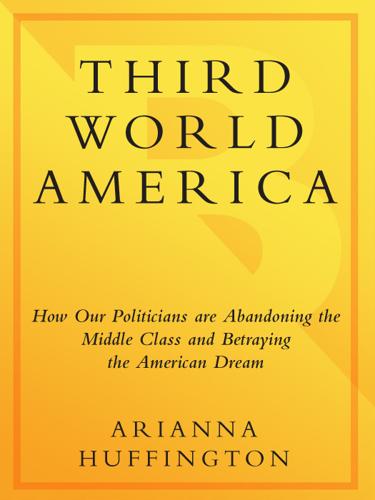
Third World America: How Our Politicians Are Abandoning the Middle Class and Betraying the American Dream
by
Arianna Huffington
Published 7 Sep 2010
They knew that this great democratic experiment would be defined not by breeding or religion or language, but by a unifying idea—“All men are created equal”—and by an ideal: the good of the many outweighs the good of the few. E pluribus unum. Out of many, one. In the infancy of our nation, Tocqueville saw the power of this idea and its centrality to the American experiment. He traveled across America before the industrial revolution transformed the country. Once it did, manufacturing jobs helped turn the working poor into middle-class Americans, liberating them from the shackles of a hand-to-mouth existence and moving them closer to enjoying a “general equality of condition.” So, is America still a nation where its citizens enjoy a “general equality of condition”? Are we still promoting “the welfare of the greatest possible number”?
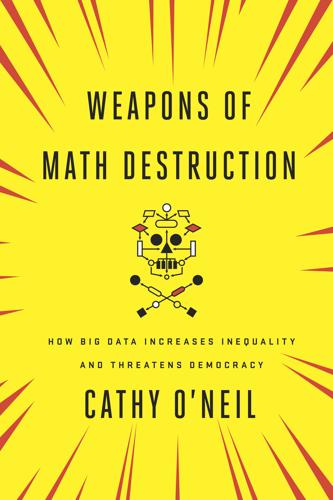
Weapons of Math Destruction: How Big Data Increases Inequality and Threatens Democracy
by
Cathy O'Neil
Published 5 Sep 2016
Innovation, after all, hinges on the freedom to experiment. And with petabytes of behavioral data at their fingertips and virtually no oversight, opportunities for the creation of new business models are vast. Multiple companies, for example, are working to replace payday lenders. These banks of last resort cater to the working poor, tiding them over from one paycheck to the next and charging exorbitant interest rates. After twenty-two weeks, a $500 loan could cost $1,500. So if an efficient newcomer could find new ways to rate risk, then pluck creditworthy candidates from this desperate pool of people, it could charge them slightly lower interest and still make a mountain of money.
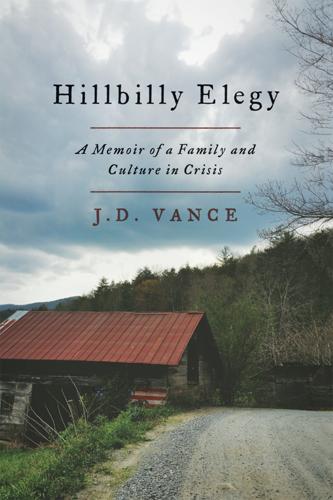
Hillbilly Elegy: A Memoir of a Family and Culture in Crisis
by
J. D. Vance
Published 27 Jun 2016
And if things got out of hand, the police would come and take someone’s drunk dad or unhinged mom down to the city building. That building housed the tax collector, the public utilities, and even a small museum, but all the kids in my neighborhood knew it as the home of Middletown’s short-term jail. I consumed books about social policy and the working poor. One book in particular, a study by eminent sociologist William Julius Wilson called The Truly Disadvantaged, struck a nerve. I was sixteen the first time I read it, and though I didn’t fully understand it all, I grasped the core thesis. As millions migrated north to factory jobs, the communities that sprouted up around those factories were vibrant but fragile: When the factories shut their doors, the people left behind were trapped in towns and cities that could no longer support such large populations with high-quality work.
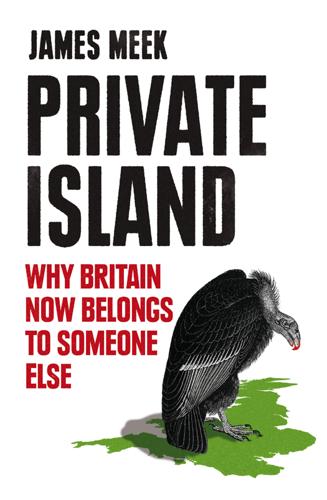
Private Island: Why Britain Now Belongs to Someone Else
by
James Meek
Published 18 Aug 2014
But the gap where the economic rationale for privatising council houses should be becomes a window through which it becomes possible to see beyond the individual privatisations to the meta-privatisation, and its one indisputable success: that it put more money into the hands of a small number of the very wealthiest people, at the expense of the elderly, the sick, the jobless and the working poor. What do we think we know about taxes since the Thatcher revolution? Government spending has been cut, we know that. Income tax is lower than it used to be, we know that. And we might remember that the one time Margaret Thatcher tried to change the principle of progressive taxation, where the amount of tax you pay depends on your income, to a flat fee, where everyone pays the same – when the Conservatives tried to introduce the infamous ‘poll tax’ on council services – it was the catalyst for her downfall.
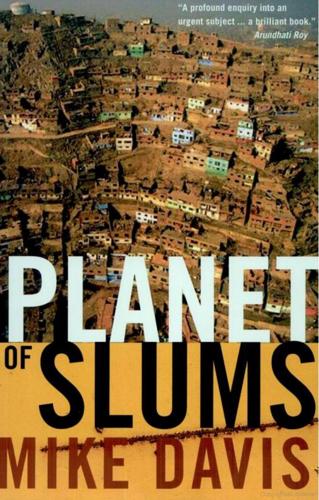
Planet of Slums
by
Mike Davis
Published 1 Mar 2006
One of the most telling pictures of this sector is the sight of the "gentlemanly" owner of a garbage shop, sitting in his well-ironed clothes by his gleaming motorcycle, amidst the piles of waste that the rag-pickers have painfully sorted out for him to profit from. Rags to riches, indeed! 26 /Fourth -j/and this is a corollary of the previous two points — informality ensures extreme abuse of women and children. Again, it is Breman, in his magisterial study of the working poor in India, who drags the skeleton out of the closet: "Out of public view, it is usually the weakest and smallest shoulders that have to bear the heaviest burdens of informalization. The image of shared poverty does not do justice to the inequality w th which this form of existence, too, is permeated within the sphere of the household."27 {Fifth, w contrast to the wishful thinking of bootstrap ideologues, the informal sector - as observed by Frederic Thomas in Kolkata generates joEs not by elaborating new_divisionsjDfJafepr,.. but by fragmenting existing work, and thus subdividing incomes: 25 Breman, The Labouring Poor, pp. 4, 9, 154, 196. 26 Jan Breman and Arvind Das, Down and Out: Labouring Under Global Capitalism, New Delhi 2000, p 56. 27 Breman, The Labouring Poor, p. 231. ... three or four persons dividing a task which could be as well done by one, market women sitting for hours in front of litde piles of fruit or vegetables, barbers and shoeshiners squatting on the sidewalk all day to ' serve only a handful of customers, young boys dodging in and out of traffic selling tissues, wiping car windows, hawking magazines or cigarettes individually, construction workers waiting each morning, often in vain, in the hope of going out on a job.28 The surpluses of labor transformed into informal "entrepreneurs" are often astonishing.
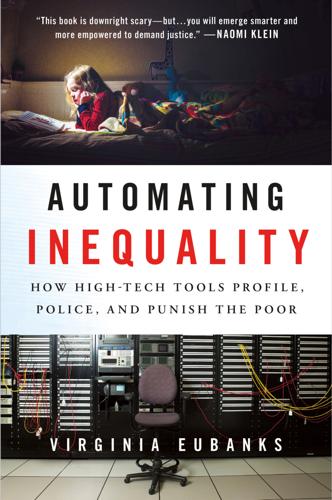
Automating Inequality
by
Virginia Eubanks
From the beginning, the poorhouse served irreconcilable purposes that led to terrible suffering and spiraling costs. On the one hand, the poorhouse was a semi-voluntary institution providing care for the elderly, the frail, the sick, the disabled, orphans, and the mentally ill. On the other, its harsh conditions were meant to discourage the working poor from seeking aid. The mandate to deter the poor drastically undercut the institution’s ability to provide care. Inmates were required to swear a pauper’s oath stripping them of whatever basic civil rights they enjoyed (if they were white and male). Inmates could not vote, marry, or hold office.

Tomorrow's Capitalist: My Search for the Soul of Business
by
Alan Murray
Published 15 Dec 2022
Trust in business, and in all institutions, also plummeted. And capitalism got a second look. People had experienced the painful effects of markets gone haywire. The invisible hand had developed serious arthritis. And as the economy recovered, everyone looked around and saw an enormous and widening gap between the very rich and the working poor, between the ample rewards going to the owners of capital and the stagnating wages being paid to labor, between the plight of the protected few and the vulnerable many. The irony of the moment was that even as capitalism was being reconsidered in the US and Europe, it was scoring its greatest global triumph.
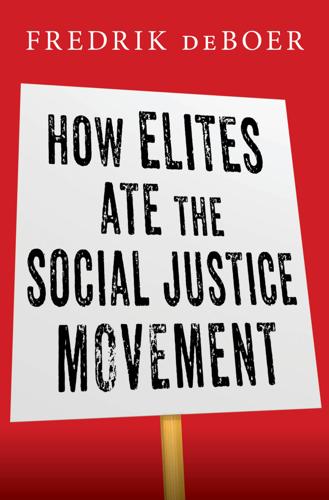
How Elites Ate the Social Justice Movement
by
Fredrik Deboer
Published 4 Sep 2023
The selfsame helicopter parents who insist that their children delay gratification and make smart, forward-thinking choices evince political opinions that minimize the importance of those same decisions. After all, it’s liberals who fixate relentlessly on privilege, defined as unearned (and uncontrollable) advantage that accrues to some by dint of an identity category. It’s liberals who—accurately and humanely, in my view—look at the working poor and the homeless and see the hand of forces they can’t control. It’s liberals who reject the conservative ethos of the self-made man, liberals who talk about structural forces that dictate winners and losers. And, at times, they talk and act in a way consistent with belief in those forces. Appropriately contextualized, belief in external locus of control is all for the good.

Suburban Nation
by
Andres Duany
,
Elizabeth Plater-Zyberk
and
Jeff Speck
Published 14 Sep 2010
Corporate flight to the metropolitan fringe would be less damaging if adequate public transportation existed to bring the urban poor to and from exurban jobs. Unfortunately, most new jobs in the suburbs are accessible only to people with cars, and automobile ownership is a hurdle that the would-be working poor are often unable to surmount. While waiting for a taxi recently in the outskirts of Washington, we saw a black hotel worker likewise trying to hail a cab. After watching several pass him by, we hailed the next taxi, invited him to ride along, and then learned that he spends $25 a day on the only form of transit available to his suburban minimum-wage job.

Protocol: how control exists after decentralization
by
Alexander R. Galloway
Published 1 Apr 2004
But at the same time market economies bring into existence high levels of social inequality. Berners-Lee’s “currency used for trade” is clearly not accessible in equal measures for all parties involved, and his “rules for fair trading” have historically been less than fair, subjugating vast populations of the working poor, immigrants, women, and workers in developing countries, to name a few examples. Thus the same types of critiques that can be levied against so-called successful social realities such as market economies (or even liberalism, or civil society, or the bourgeois class itself) can be levied against protocol.
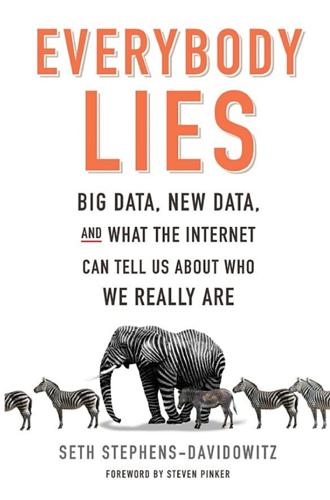
Everybody Lies: Big Data, New Data, and What the Internet Can Tell Us About Who We Really Are
by
Seth Stephens-Davidowitz
Published 8 May 2017
The key is knowing that there is an easy way for self-employed people with one child to maximize the money they receive from the government. If you report that you had taxable income of exactly $9,000 in a given year, the government will write you a check for $1,377—that amount represents the Earned Income Tax Credit, a grant to supplement the earnings of the working poor, minus your payroll taxes. Report any more than that, and your payroll taxes will go up. Report any less than that, and the Earned Income Tax Credit drops. A taxable income of $9,000 is the sweet spot. And, wouldn’t you know it, $9,000 is the most common taxable income reported by self-employed people with one child.
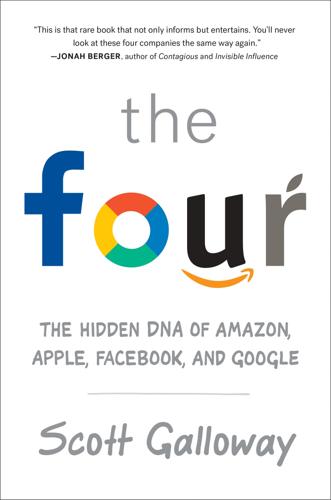
The Four: How Amazon, Apple, Facebook, and Google Divided and Conquered the World
by
Scott Galloway
Published 2 Oct 2017
I highlight that Apple is the largest tax avoider in the world because lawmakers treat it like the hot girl on campus—if she pays a little attention to them, they swoon and are willing to enter into an abusive relationship. I say that Uber is fomenting an ethos in business that’s terrible for society. Four thousand Uber employees and their investors will split $80 billion (or more) as the 1,600,000 drivers working for Uber will see their wages crash to a level that makes them the working poor. We used to admire firms that created hundreds of thousands of middle- and upper-class jobs; now our heroes are firms that produce a dozen lords and hundreds of thousands of serfs. The CEOs at events like DLD can’t respond to my claims because if they do the markets might listen and the consequences could be dramatic.
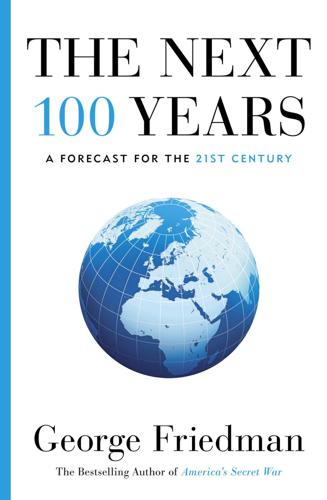
The Next 100 Years: A Forecast for the 21st Century
by
George Friedman
Published 30 Jul 2008
So the first step toward solving the crisis will be limiting immigration, a massive and traumatizing reversal that will cause a crisis, just as the shift toward attracting and increasing immigration had fifty years before. Once immigration has been halted, the United States will have to manage the economic imbalance caused by its population surplus. Layoffs and unemployment will strike disproportionately at the working poor—and particularly the Mexican population in the borderlands. Serious foreign policy issues will then arise. Add to this picture soaring energy prices, and all of the catalysts for the crisis of the 2080s are in place. MEXICO'S ECONOMIC DEVELOPMENT Mexico's economy is currently ranked fifteenth in the world.
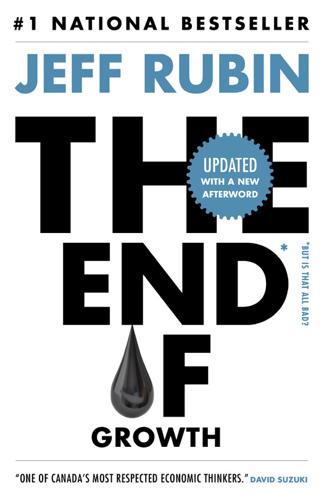
The End of Growth
by
Jeff Rubin
Published 2 Sep 2013
A zero percent vacancy rate in the city’s rental market meant that transplanted workers, if they could find a room, were forced to pay triple what they would in Calgary, Vancouver or Toronto. Some new arrivals were even desperate enough to pay top dollar to rent out garage space from locals. Despite high wages, the numbers of the city’s working poor swelled, as did the number of squatters living in the surrounding woods. In Fort McMurray, the insidious effects of inflation meant that some workers who relocated to take advantage of a seemingly can’t-lose opportunity actually wound up in a situation that was economically untenable. Regardless of where you are in the world, when prices start rising faster than incomes, all those people working hard to get ahead are actually getting poorer.
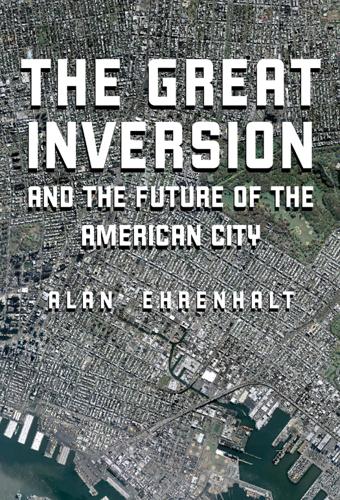
The Great Inversion and the Future of the American City
by
Alan Ehrenhalt
Published 23 Apr 2012
Lawrence found it more ominous still: “some hoary massive underworld, a hoary ponderous inferno, where traffic flows through the rigid grey streets like the rivers of hell through their banks of dry rocky ash.” Turn-of-the-century London was not unique in placing its affluent on one side of the divide and reserving another for immigrants and the working poor. What was unique about London was the rapid expansion of suburbs for the lower middle class, generated almost entirely by rail transportation. The Cheap Trains Act of 1883 required the railroads to build “workmen’s trains.” Although it took a while, they built enormous numbers of them: More than six thousand of these trains were running by 1904.

How Capitalism Saved America: The Untold History of Our Country, From the Pilgrims to the Present
by
Thomas J. Dilorenzo
Published 9 Aug 2004
ONE OF the most pervasive—and pernicious—myths about capitalism is that capitalists have always exploited the working class. To anticapitalist myth makers, the industrial revolution was a horror that subjected the American working class to nightmarish working conditions while a relative few capitalists became wealthy on the backs of the working poor, and that subjugation has only continued. But the historical record of capitalism in America—and in every other country where it has been practiced—reveals something quite different: capitalism has continually improved the lot of the working class. To be sure, the advent of capitalism—and factory production—created working conditions that seem unpleasant or even deplorable by today’s standards, but it is important to understand that they were a significant improvement over the conditions the working class had previously endured.
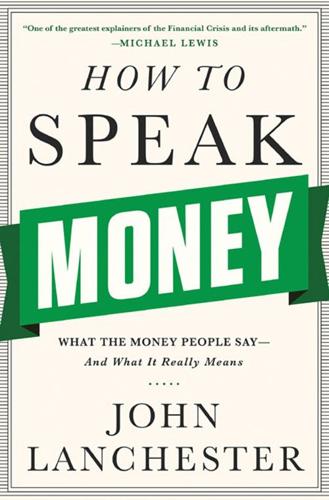
How to Speak Money: What the Money People Say--And What It Really Means
by
John Lanchester
Published 5 Oct 2014
This can make the language seem abrasive, even shocking, to people who habitually speak a different kind of discourse. Since much of the language of public life has an implied moral and political load, this makes money-speak very distinctive. “Welfare scroungers” has a different spin from “benefit claimants,” who don’t sound at all the same as “the working poor,” even if these are all the same people, and the benefit they’re claiming is called “job seeker’s allowance,” where once it was known as “unemployment benefit” in an attempt to provide a heavy nudge (and to placate right-wing headline writers). Your “asylum seeker” is my “refugee”; your “entitlements” are my “pensions.”

The Vanishing Middle Class: Prejudice and Power in a Dual Economy
by
Peter Temin
Published 17 Mar 2017
European immigration was restricted after the First World War, and six million African Americans moved north during what was called the Great Migration as a result. In recent years, immigration from Mexico and other nearby Latin American countries has increased rapidly, and Latinos also are concentrated in the lower group shown in figure 1. Public discussion of the working poor focuses on African Americans, but it sometimes refers to them simply as “them,” including Latinos as well. African Americans also have become the focus of policy debates at both state and federal levels. Politicians who oppose government welfare expenses used to identify the recipients as black; however, since the Civil Rights Movement of the 1960s, politicians use code words instead.

Rethinking Money: How New Currencies Turn Scarcity Into Prosperity
by
Bernard Lietaer
and
Jacqui Dunne
Published 4 Feb 2013
While this reform would eliminate the risk of bank crashes and sovereign debt crises, there would still be monetary crises.3 These stark statistics don’t begin to tell the personal and individual stories of struggle and hardship. The extraordinary chasm that has emerged between the superwealthy and the expanding ranks of the working poor is demonstrated by the fact that the combined assets of the family that owns Wal-Mart equal those of America’s bottom 150 million people.4 4 INTRODUCTION All of this begs the question, “Why do we not examine our money system?” Throughout the history of our world, with all its wars, political upheavals, and periods of civil unrest, and with the emergence of political models including capitalism, socialism, and communism in all their variations and adaptations, still the money system was left unexamined.

The Internet Is Not the Answer
by
Andrew Keen
Published 5 Jan 2015
The feudal aspect of this new economy isn’t just metaphorical. The Chapman University geographer Joel Kotkin has broken down what he calls this “new feudalism” into different classes, including “oligarch” billionaires like Thiel and Uber’s Travis Kalanick, the “clerisy” of media commentators like Kevin Kelly, the “new serfs” of the working poor and the unemployed, and the “yeomanry” of the old “private sector middle class,” the professionals and skilled workers in towns like Rochester who are victims of the new winner-take-all networked economy.81 The respected MIT economists Erik Brynjolfsson and Andrew McAfee, who are cautiously optimistic about what they call “the brilliant technologies” of “the Second Machine Age,” acknowledge that our networked society is creating a world of “stars and superstars” in a “winner-take-all” economy.
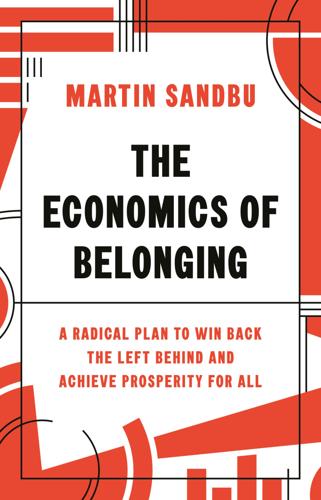
The Economics of Belonging: A Radical Plan to Win Back the Left Behind and Achieve Prosperity for All
by
Martin Sandbu
Published 15 Jun 2020
But average wages did not move—and actually fell for the lower paid. Temporary work, meanwhile, became more frequent, as did so-called mini-jobs, or very part-time positions. As a result, the bottom 40 per cent make the same as or less than twenty-five years ago (after adjusting for inflation), and the number of working poor has doubled.10 Unionisation, too, has fallen significantly, which seems to be behind the long wage stagnation.11 If Germany was the model for some of the southern European countries that reformed their labour markets under pressure from the debt crisis a decade later, it is not a big surprise if they achieve similar results.12 Despite often being seen as an example of an inclusive economy both in Germany itself and by others, the German economy now creates income inequality to equal that of the United Kingdom and the United States before taxes and redistribution—to the point where the German economist Marcel Fratzscher has said the old Germany social market economy that was built on the ruins of the Second World War no longer exists.13 Indeed Germany, too, has produced groups of left behind—those channelled into the precarious rungs of the labour market after the early-2000s reforms, as well as large parts of the former East Germany.
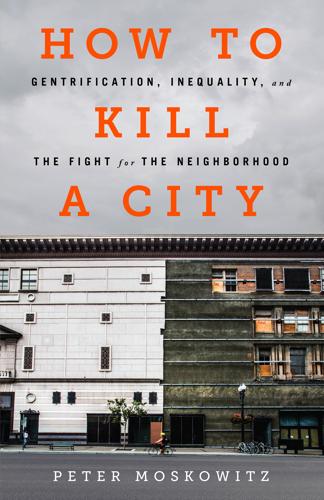
How to Kill a City: The Real Story of Gentrification
by
Peter Moskowitz
Published 7 Mar 2017
Reynolds National Center for Business Journalism, April 13, 2015; Teresa Wiltz, “America’s Declining Cities Try to Attract Millennials,” Governing, April 3, 2015. Through its tax credit programs: “Citywide Highlights,” City of New Orleans website, www.nola.gov/mayor/priorities, accessed September 4, 2016. It sold off properties (many abandoned since Katrina): Robert McClendon, “Where Will Working Poor Live in Future New Orleans, if Gentrification Continues?” Times-Picayune, July 30, 2015. It began marketing residential neighborhoods: Lauren Laborde, “GoNOLA TV: Discover New Orleans’ Bywater,” hosted by C. J. Hunt, GoNOLA website, September 8, 2014. “Hurricane Katrina was an awful event”: Eric Velasco, “The Battle for New Orleans,” Politico, April 16, 2015.
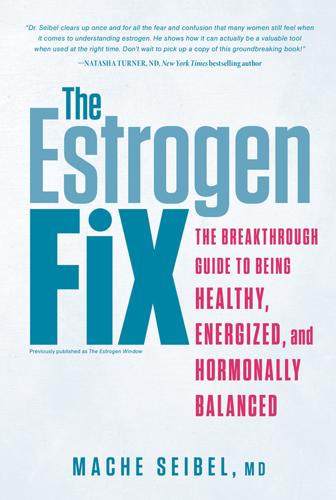
The Estrogen Fix: The Breakthrough Guide to Being Healthy, Energized, and Hormonally Balanced
by
Mache Seibel
Published 18 Sep 2017
Lack of sleep has also been linked to increased risk of heart disease, high blood pressure, and diabetes. A person is said to have adequate sleep if she can function in an alert state during her desired waking hours. Poor sleep (either too little or poor quality) can lead to poor performance on the job, and this can play a major role in how one is perceived at work. Poor sleep can also cause muscle aches, irritability, poor motivation, and fatigue. It’s hard to sleep through drenching night sweats when your nightclothes and bed linens are repeatedly soaked from perspiration. Getting up frequently to go to the bathroom to urinate is disruptive. Other causes of poor sleep include arthritis pain in joints, obesity, depression, stress, and anxiety.

Quit Like a Millionaire: No Gimmicks, Luck, or Trust Fund Required
by
Kristy Shen
and
Bryce Leung
Published 8 Jul 2019
In a progressive tax system (like in the United States and Canada), you are taxed based on how much you make. Poor people pay little tax because they need every cent of their income to live. Middle-class people pay more because they can afford it. Rich people pay the most because they have money to burn. Or at least, that’s what we’ve been led to believe. In reality, here’s how it works: Poor people pay little. Middle-class people pay more. Rich people use tricks and loopholes (bought with their lobbyist friends) to pay as little tax as possible while the rest of us pick up the slack. This is a major contributing factor to income inequality in the United States. The more money you have, the more loopholes are available to you.

Hostile Environment: How Immigrants Became Scapegoats
by
Maya Goodfellow
Published 5 Nov 2019
By directing the blame at people who come into the country, people in power have abandoned or intentionally obscured a thoroughgoing analysis of what causes our deeply unequal economy – a system that thrives off low-paid, increasingly insecure labour that affects so many people, including migrants. There was never a golden age of work. Poor working conditions, racism, sexism, homophobia and ableism have long shaped peoples’ lives. But over the ’80s and into the ’90s, the economy shifted from an industrial base to a service sector, and cities began to reconstitute themselves to become twenty-four-hour operations with disposable, casualised workers.

The Great Demographic Reversal: Ageing Societies, Waning Inequality, and an Inflation Revival
by
Charles Goodhart
and
Manoj Pradhan
Published 8 Aug 2020
It would (temporarily) raise domestic prices, especially of goods/services with a high import content. While the intention is to combine the rise in VAT with a reduction in taxes on labour income, there is no certainty that this would, or could, be done so as to leave labour real post-tax incomes unchanged. Even more seriously, the non-working poor, e.g. old, unemployed, sick, would not be protected, and, absent a general re-rating of benefits would lose, depending in part on exchange rate effects. So the scheme could be attacked as potentially highly regressive. Since investment is pro-cyclical and volatile, as are corporate losses, DBCFT tax receipts would be more procyclical and volatile than the current forms of corporate tax (IMF Policy Paper, 2019).

After the Gig: How the Sharing Economy Got Hijacked and How to Win It Back
by
Juliet Schor
,
William Attwood-Charles
and
Mehmet Cansoy
Published 15 Mar 2020
Cambridge, MA: Harvard University Press. Weiser, Benjamin, and J. David Goodman. 2019. “Judge Blocks New York City Law Aimed at Curbing Airbnb Rentals.” New York Times, January 3, 2019. Wells, Kathryn, Kafui Attoh, and Declan Cullen. 2019. “The Uber Workplace in D.C.” Washington, DC: Kalmanowitz Initiative for Labor and the Working Poor, Georgetown University. https://lwp.georgetown.edu/wp-content/uploads/Uber-Workplace.pdf. White, Andy, and Dana Olsen. 2018. “Here’s Where Uber and Lyft Would Rank among the Decade’s Most Valuable VC-Backed IPOs.” Pitchbook: News and Analysis, October 16, 2018. https://pitchbook.com/news/articles/heres-where-uber-and-lyft-would-rank-among-the-decades-most-valuable-vc-backed-ipos.
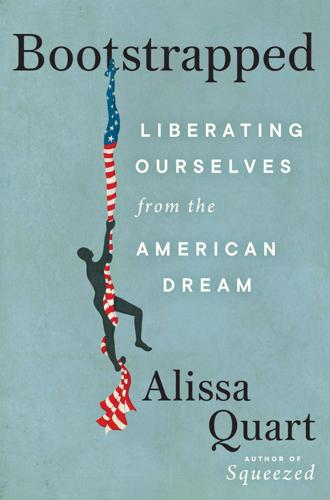
Bootstrapped: Liberating Ourselves From the American Dream
by
Alissa Quart
Published 14 Mar 2023
At one point, they live in a town that is more or less owned by a monopolistic mining company and that circulates around a dominant company store, “the one store from which we bought food and clothing . . . no others were permitted to exist.” At the age of thirteen, Smedley and her protagonist both worked in a series of after-school jobs she “despised,” including as a teenage sleep-in boardinghouse maid, “fired for drinking her employer’s milk,” and a tobacco stripper. Like many working-poor women of that time, the women in Daughter of Earth labor like oxen, swallowing their humiliations (I think of my own grandmother as a teenager at a similar time, sticking feathers on hats in a New York factory). The only woman with any self-regard is the protagonist’s aunt, a sex worker whose exploitation is clear-cut and whose profits are her own.
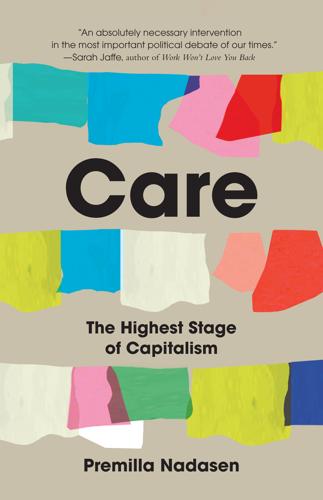
Care: The Highest Stage of Capitalism
by
Premilla Nadasen
Published 10 Oct 2023
And undocumented immigrants who pay taxes with an individual taxpayer identification number rather than a social security number cannot receive the EITC benefit. Thus, the determining factor for EITC is not how much people need to live but whether and how they have worked, as well as their legal status. Tax credits and other assistance programs have lifted some working poor out of poverty but have done little to address the precarity of the labor market. In addition, tax credits like the CTC and the EITC deflect from the real problem: low wages. Why should the government supplement the wages of working Americans? Why aren’t workers paid enough to live securely? The paradox of a booming stock market and wages that fail to keep up with inflation is not a contradiction at all—low wages simply mean more profit for shareholders.
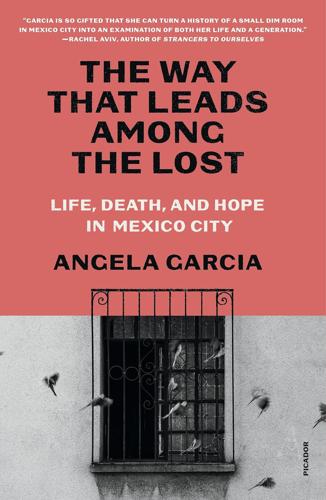
The Way That Leads Among the Lost: Life, Death, and Hope in Mexico City's Anexos
by
Angela Garcia
Published 30 Apr 2024
Addictions to alcohol and drugs skyrocketed. Twelve-step programs, especially Alcoholics Anonymous, were widely available throughout the country, but their philosophy and traditions didn’t align with the culture and struggles of poor people in Mexico. Not only was AA’s ninety-minute format unrealistic—the working poor needed to be able to access meetings twenty-four hours a day—but the program lacked a strong spiritual element. Alcoholics, addicts, and enfermos didn’t just need “steps” to end their addictions; they needed spiritual nourishment. Padrino Mario distilled the twelve steps into two, focusing on what he saw as the root causes of suffering—the refusal to acknowledge one’s sins and the need to confess them.
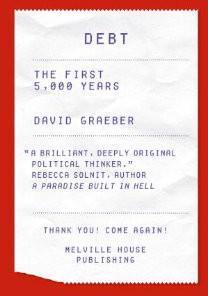
Debt: The First 5,000 Years
by
David Graeber
Published 1 Jan 2010
Employers had a final expedient: wait for the money to show up, and in the meantime, don’t pay anything—leaving their employees to get by with only what they could scrounge from their shop floors, or what their families could finagle in outside employment, receive in charity, preserve in savings pools with friends and families, or, when all else failed, acquire on credit from the loan sharks and pawnbrokers who rapidly came to be seen as the perennial scourge of the working poor. The situation became such that, by the nineteenth century, any time a fire destroyed a London pawnshop, working-class neighborhoods would brace for the wave of domestic violence that would inevitably ensue when many a wife was forced to confess that she’d long since secretly hocked her husband’s Sunday suit.104 We are, nowadays, used to associating factories eighteen months in arrears for wages with a nation in economic free-fall, such as occurred during the collapse of the Soviet Union; but owing to the hard-money policies of the British government, who were always concerned above all to ensure that their paper money didn’t float away in another speculative bubble, in the early days of industrial capitalism, such a situation was in no way unusual.
…
One of the guiding principles of Thatcherism and Reaganism alike was that economic reforms would never gain widespread support unless ordinary working people could at least aspire to owning their own homes; to this was added, by the 1990s and 2000s, endless mortgage-refinancing schemes that treated houses, whose value it was assumed would only rise, “like ATMs”—as the popular catchphrase had it, though it turns out, in retrospect, it was really more like credit cards. Then there was the proliferation of actual credit cards, juggled against one another. Here, for many, “buying a piece of capitalism” slithered undetectably into something indistinguishable from those familiar scourges of the working poor: the loan shark and the pawnbroker. It did not help here that in 1980, U.S. federal usury laws, which had previously limited interest to between 7 and 10 percent, were eliminated by act of Congress. Just as the United States had managed to largely get rid of the problem of political corruption by making the bribery of legislators effectively legal (it was redefined as “lobbying”), so the problem of loan-sharking was brushed aside by making real interest rates of 25 percent, 50 percent, or even in some cases (for instance for payday loans) 120 percent annually, once typical only of organized crime, perfectly legal—and therefore, enforceable no longer by just hired goons and the sort of people who place mutilated animals on their victims’ doorsteps, but by judges, lawyers, bailiffs, and police.25 Any number of names have been coined to describe the new dispensation, from the “democratization of finance” to the “financialization of everyday life.”26 Outside the United States, it came to be known as “neoliberalism.”
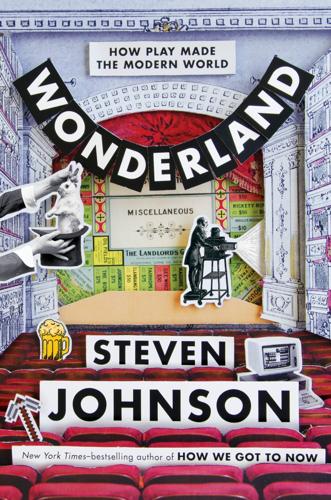
Wonderland: How Play Made the Modern World
by
Steven Johnson
Published 15 Nov 2016
— Like the temples of illusion and department stores that would follow them, coffeehouses were environments where social classes converged: poets, lords, stock speculators, actors, gossips, entrepreneurs, scientists—all found a seat in the shared environment of the coffeehouse. It was not, to be sure, an environment that welcomed women or the working poor. (Most establishments charged a penny for admission, easily affordable to the middle class, but just dear enough to discourage common laborers.) But by the standards of the eighteenth century, it was, almost certainly, the most egalitarian room that modern Europeans had ever experienced. As early as 1665, a pamphlet on the new coffeehouse culture observed, in verse: “It reason seems that liberty / Of speech and words should be allow’d / Where men of differing judgements croud, / And that’s a Coffee-house, for where / Should men discourse so free as there?”
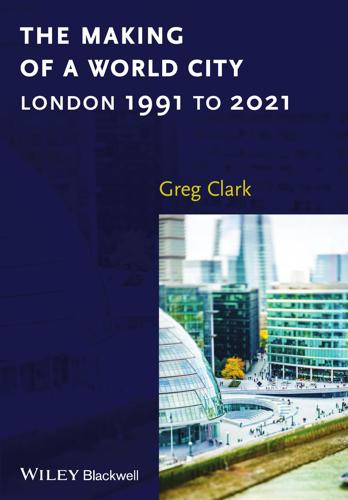
The Making of a World City: London 1991 to 2021
by
Greg Clark
Published 31 Dec 2014
A constrained land supply market resulted in lower completion figures in many west London boroughs, as greater opportunities in East London and outer London borough town centres – notably in Greenwich, Enfield and Newham – saw the focus of housebuilding move outwards. Gradually affordable housing was becoming a struggle not only for the underemployed and the working poor, but also many middle class populations, especially families. Homes and housing in London 101 The lack of progress in housing development in this period was exemplified by the relative inactivity in the Thames Gateway region. The decade following New Labour’s rise to power was marked by fragmentation of leadership for the Gateway development.

Cape Town After Apartheid: Crime and Governance in the Divided City
by
Tony Roshan Samara
Published 12 Jun 2011
On the surface, the involvement of the military in crime fighting and the militaristic nature of policing in the late 1990s are understandable. The political violence associated with the transition, much of which has since been confirmed as linked to state-directed provocation, was just beginning to subside. Crime and violence, however, continued to plague working-poor and middle-class areas and fed into the emergence of PAGAD as a community response to perceived police apathy, ineffectiveness, and even complicity with gangsterism on the Flats. Emerging from working- and middle-class coloured communities in the mid-1990s, PAGAD was, importantly, a response not just to high crime rates but also to perceived deficiencies in the state’s ability and willingness to protect vulnerable communities during a tumultuous period in the city.

Floating City: A Rogue Sociologist Lost and Found in New York's Underground Economy
by
Sudhir Venkatesh
Published 11 Sep 2013
Black neighborhoods were turning white, Greenpoint was going from Polish to Latino, Mexican day laborers were living side by side with young white artists, and suburban whites were now moving back to cities in droves. A minority since the early 1970s, whites now made up 77 percent of all Manhattan apartment buyers, and the homes they purchased were often rehabbed rental units that once housed minorities and the working poor. The city was gentrifying at a pace that had not been seen in decades. The laborers were relegated to the outer boroughs. And with gentrification, New York was becoming a city of sharp contrasts. As Sassen wrote pointedly, 90 percent of the highest-paid professionals arriving in the new New York City were white and their conspicuous consumption and service needs were spawning entire industries, which were mostly staffed by minorities coming from distant homes.
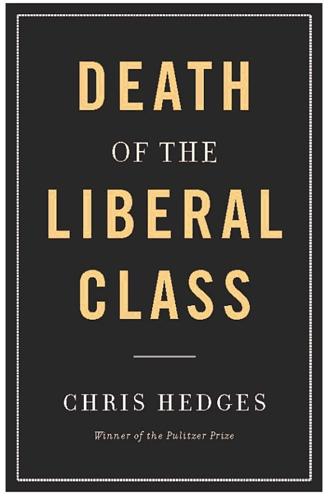
Death of the Liberal Class
by
Chris Hedges
Published 14 May 2010
Progressive politics had enjoyed an upsurge before the war, bringing on a golden era of American journalism and social reform, but that was now ended. Progressivism would flicker to life again in the 1930s with the Great Depression and then be crushed in the next war. Progressives in World War I shifted from the role of social critics to that of propagandists. They did this seamlessly. The crusades undertaken for the working poor in mill towns and urban slums were transformed into an abstract crusade to remake the world through violence, a war to end all wars. Addams acidly pointed out that “it is hard for some of us to understand upon what experience this pathetic belief in the regenerative results of war could be founded; but the world had become filled with fine phrases and this one, which afforded comfort to many a young soldier, was taken up and endlessly repeated with an entire absence of critical spirit.”

Reskilling America: Learning to Labor in the Twenty-First Century
by
Katherine S. Newman
and
Hella Winston
Published 18 Apr 2016
(with Elisabeth Jacobs) The Missing Class (with Victor Tan Chen) Chutes and Ladders Rampage (with Cybelle Fox, David Harding, Jal Mehta, and Wendy Roth) A Different Shade of Gray No Shame in My Game Declining Fortunes Falling from Grace Law and Economic Organization ALSO BY HELLA WINSTON Unchosen About the Authors KATHERINE S. NEWMAN is the author of twelve books on topics ranging from urban poverty to middle-class economic insecurity to school violence. Her No Shame in My Game: The Working Poor in the Inner City received the Robert F. Kennedy Book Award and the Sidney Hillman Foundation Book Award. Newman, who has held senior teaching and administrative positions at Johns Hopkins, Harvard, and Princeton, is currently Provost and Professor of Sociology at the University of Massachusetts, Amherst.

Leading From the Emerging Future: From Ego-System to Eco-System Economies
by
Otto Scharmer
and
Katrin Kaufer
Published 14 Apr 2013
This is a delusional myth for at least three reasons: a. Ecological limits. If we solve the employment problem by doing more of what we’ve been doing for the past decade, we will produce severe ecological breakdowns in less than a generation. b. Social limits. If we add to the unemployed the working poor in the United States and the welfare-dependent in Europe, the result is a more accurate number of people for whom the current system doesn’t produce sufficient work. The size of this group is probably 20 or 30 percent of the adult population. In other countries, particularly in the global South, this number exceeds 60 or 70 percent.

Rethinking the Economics of Land and Housing
by
Josh Ryan-Collins
,
Toby Lloyd
and
Laurie Macfarlane
Published 28 Feb 2017
The Old Nichol was eventually redeveloped by the new London County Council into the pioneering Boundary Estate: the alleys and crumbling tenements replaced with mansion blocks of social housing built to an ordered street pattern, often described as the first council housing in the world. This represented a new attempt to address the problem of rent by providing quality housing for the working poor at below-market rents, with the capital cost of construction met by the state. But although these multiple efforts to clean up cities, provide infrastructure and give ordinary people better homes made significant improvements to urban life and mitigated the worst effects of the problem of rent, the fundamental structure of the land economy remained largely unchanged.

Can't Even: How Millennials Became the Burnout Generation
by
Anne Helen Petersen
Published 14 Jan 2021
People who worked in retail, people pulling double shifts to support a family as a single mom. People whose parents didn’t speak English. People who worked as house cleaners, hairdressers, bartenders, nurses’ aides, or any number of other jobs that weren’t unionized. People who remained largely invisible. Some weren’t working; some were what’s come to be known as the working poor: barely, barely making ends meet. As millennials grew up in towns like mine all over America, our families were experiencing—or cognizant and scared of—downward mobility. Divorced women were some of the most affected—if understudied—by this trend. Pre-divorce, the men in these families had been the primary or only breadwinner.
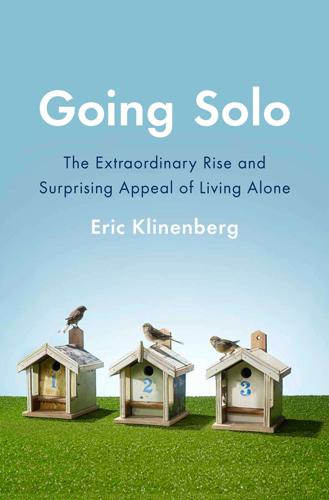
Going Solo: The Extraordinary Rise and Surprising Appeal of Living Alone
by
Eric Klinenberg
Published 1 Jan 2012
Although she was not yet thirty, Haggerty had seven years of experience renovating buildings for the homeless, and she knew exactly how to get city funding for the Times Square project. After three years of renovations, Common Ground reopened the hotel in 1994 as an entirely new kind of SRO. About half the residents are formerly homeless, and they struggle with everything from substance abuse to mental illness and HIV. But the other half is made up of the working poor, including aspiring actors and artists and a variety of blue-collar laborers who have a hard time finding a place for themselves in the local rental market. Haggerty hoped that those who were used to working every day would mix with those who weren’t. The groups can help each other, whether it’s dog walking or helping find a job.
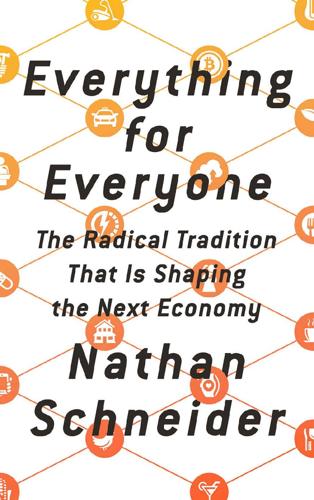
Everything for Everyone: The Radical Tradition That Is Shaping the Next Economy
by
Nathan Schneider
Published 10 Sep 2018
As I listened to him talk, I felt I’d never met someone so expert in the mechanics of democracy—along with its contradictions and limits. Cooperation, for him, was a matter of necessity more than choice. He said, “It’s a double-edged sword.” Modern cooperation had come to the country as an instrument of exploitation. By the end of the nineteenth century, after honing cooperative business to uplift their own working poor, the British turned it on their colonies. Even by the time of the 1931 Cooperative Societies Ordinance in colonial Kenya, membership was still open only to white settlers, who used their co-ops to organize the export of cash crops grown with African land and African labor.34 Meanwhile, British colonists in India encouraged farming co-ops, and in British-Mandate Palestine, Jewish settlers from Europe were establishing collective villages on land Arabs had held for centuries.

You Can't Make This Stuff Up: The Complete Guide to Writing Creative Nonfiction--From Memoir to Literary Journalism and Everything in Between
by
Lee Gutkind
Published 13 Aug 2012
” - Nasdijj, The Blood Runs Like a River Through My Dreams: the first of three memoirs by a Navajo writer who claims that he “became a writer to piss on all the many white teachers and white editors out there (everywhere) who said it could not be done. Not by the stupid mongrel likes of me.” 20 01 Barbara Ehrenreich, Nickel and Dimed: the Harper’s writer goes undercover as a house cleaner, waitress, and Walmart employee to see how the working poor make ends meet. - Ken Kesey, acclaimed novelist whose psychedelic parties featured prominently in Tom Wolfe’s The Electric Kool-Aid Acid Test and Hunter S. Thompson’s Hell’s Angels, dies at age 66. - Hollywood falls in love with nonfiction: A Beautiful Mind, adapted from Sylvia Nasar’s biography of Nobel laureate John Nash, wins four Academy Awards, including best picture.
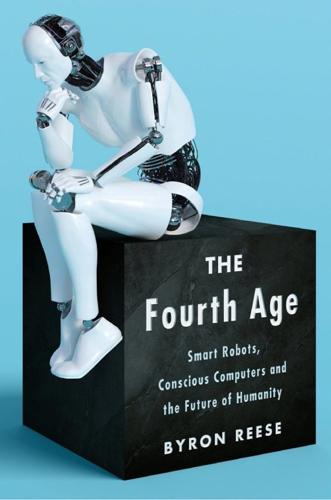
The Fourth Age: Smart Robots, Conscious Computers, and the Future of Humanity
by
Byron Reese
Published 23 Apr 2018
We have opted to collectively stay late at the office instead of growing and peeling our own potatoes. We all want a higher standard of living—and that desire is what creates most of the jobs. As long as you want more income, you will likely find a way to use your skills to add value somewhere, and that action is what creates a job. Don’t get me wrong. I am emphatically not saying that the working poor today are living the life of Riley and could do just fine on even less than they presently have. Not at all. Being a low-income worker in 1930 was a bitterly hard life. Forget about going to the doctor when you are sick. Forget about higher education. Forget about ever taking vacations, ever having disposable income, ever truly getting ahead.

Heartland: A Memoir of Working Hard and Being Broke in the Richest Country on Earth
by
Sarah Smarsh
Published 17 Sep 2018
It was a blessing of class, even, in that the academic and professional worlds they couldn’t access would have frowned on it. It was a power no one could take from them. It was a way of seeing the world that they crafted themselves. 7 THE PLACE I WAS FROM My life has been a bridge between two places: the working poor and “higher” economic classes. The city and the country. College-educated coworkers and disenfranchised loved ones. A somewhat conservative upbringing and a liberal adulthood. Home in the middle of the country and work on the East Coast. The physical world where I talk to people and the formless dimension where I talk to you.

Late Bloomers: The Power of Patience in a World Obsessed With Early Achievement
by
Rich Karlgaard
Published 15 Apr 2019
Just as Lewis Terman, Carl Brigham, and Edward Lee Thorndike were working to quantify the potential of each individual, another powerful trend was taking shape in the United States. * * * Does this sound familiar? A new technology is created and connects the world. It creates enormous first-generation wealth for its visionary leaders but crushes the working poor in locations far from the technology grid. The gap between rich and poor grows to record proportions. The dispossessed rural poor crowd into cities, which creates epidemics of disease and crime. Angry populism, on both left and right, catches fire. Growing numbers of people suspect the American dream is a myth.
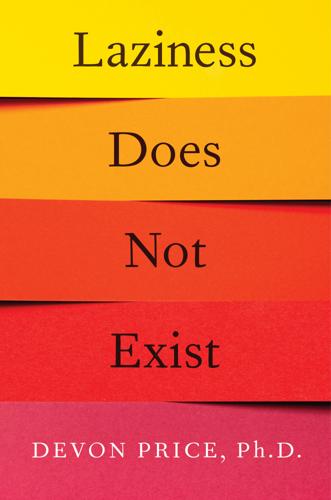
Laziness Does Not Exist
by
Devon Price
Published 5 Jan 2021
As the Industrial Revolution changed the landscape of the country, with more and more Americans working long hours in manufacturing plants, the Laziness Lie was pushed even more. The wealthy and highly educated began to claim that poor whites also couldn’t be trusted with “idle” time. In fact, too many breaks could make a person antisocial.25 Propaganda from that time often claimed that if the working poor weren’t kept busy, they would resort to crime and drug use, and society would run amok.26 Laziness had officially become not only a personal failing but a social ill to be defeated—and it has remained that way ever since. * * * We can see the dogma of the Laziness Lie in popular media from that period as well.

Days of Fire: Bush and Cheney in the White House
by
Peter Baker
Published 21 Oct 2013
Even his centerpiece domestic promise, a sweeping package of tax cuts with plenty of benefits for the wealthiest Americans such as eliminating the inheritance tax and reducing top marginal tax rates, also included ideas targeted at those with less means, like doubling the child tax credit and reducing the lowest tax bracket for the working poor. For conservative economists, such ideas made no sense because they would not trigger economic growth. “Somewhat different from many conservatives, certainly at the time, he asked a lot of questions about fairness and safety nets,” recalled Glenn Hubbard, who advised him on economics. “He’s a little bit of a hybrid.”
…
“It took a little getting used to for me because I am not much of a towel snapper,” Gerson said. For all the speeches he would give and policy papers he would issue, Bush crystallized his image as a different kind of Republican with a single sentence one day that fall when congressional Republicans proposed stretching out earned income tax credits to the working poor. Hughes went to Bush’s hotel room. “You’re going to get asked about this,” she said. “It doesn’t sound like something you would do.” Bush agreed, and when a reporter did ask, he responded, “I don’t think they ought to balance their budget on the backs of the poor.” He could get away with the overt appeal to independents and moderates in part because of his own ties to the Christian conservative wing of the party.
…
Cheney brokered the final deal, scribbling down $1.425 trillion on a yellow napkin and passing it to Senator Ben Nelson in a meeting; ultimately, it was negotiated down to $1.35 trillion, and included a clause making the tax cuts expire after a decade unless renewed. But it was a major victory. The final version lowered the top rate from 39.6 percent to 35 percent and the three next-highest rates by three percentage points each. A new, lower 10 percent bracket was created for the working poor, child tax credits were increased, the estate tax was to be phased out, and the so-called marriage penalty reduced. The bulk of the cut would go to the highest-income Americans; however, as a percentage, their share roughly mirrored their share of the tax burden. The lowest-income Americans, who do not pay income taxes but do pay payroll taxes, were not affected.
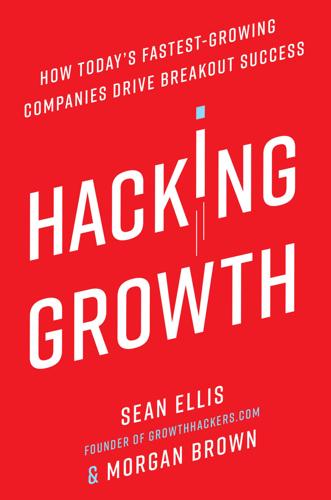
Hacking Growth: How Today's Fastest-Growing Companies Drive Breakout Success
by
Sean Ellis
and
Morgan Brown
Published 24 Apr 2017
Most often it’s better, as Google founder and CEO Larry Page has said, to put “more wood behind fewer arrows.” Or as Peter Thiel, cofounder of PayPal, Palantir, and the first outside investor in Facebook, tells start-up founders, “It is very likely that one channel is optimal. Most businesses actually get zero distribution channels to work. Poor distribution—not product—is the number one cause of failure. If you can get even a single distribution channel to work, you have great business. If you try for several but don’t nail one, you’re finished.”12 At the same time, too many companies get caught in the trap of following the herd, using the same channels as everyone else, such as Google paid ads or Facebook advertising, and not experimenting with options that might be more effective for their specific product, and less expensive.
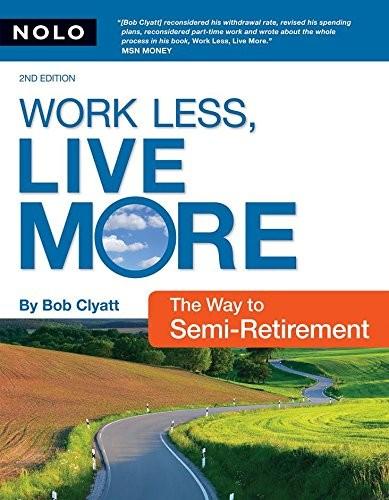
Work Less, Live More: The Way to Semi-Retirement
by
Robert Clyatt
Published 28 Sep 2007
A semi-retiree earning up to 20% of annual spending through selfemployment and realizing the remainder through interest, dividends, and capital gains should be able to keep taxes down to 3% to 5% of annual spending or less—perhaps .2% of portfolio value—due to the structure of the tax code. In effect, you will be taxed like the working poor, whom the tax code is designed to help. Investment fees and expenses Your investments should be built around tax-efficient and fee-efficient funds. Fees from even these low-fee funds add up and need to be in your budget to give an accurate picture of your spending each year. Assume that expenses will be about .5% of assets each year.
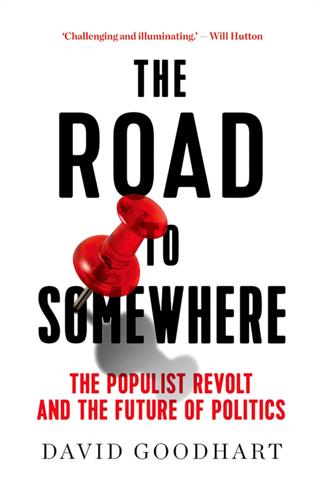
The Road to Somewhere: The Populist Revolt and the Future of Politics
by
David Goodhart
Published 7 Jan 2017
The disaffection was already there, prior to the crash, in many parts of the country—especially the former industrial Labour strongholds that never recovered from 1980s de-industrialisation—and has burst out sporadically after 2008. It was also to be found in the so-called ‘squeezed middle’—a phrase coined by the Resolution Foundation think tank in 2010—the large group who have not made it into the security of the professional class but have not dropped as low as the more persistently ‘left behind’ groups such as the working poor and people with few qualifications in the former industrial areas. Despite the louder public complaints about inequality since the crash, levels of inequality have changed only a little since the late 1980s following the tax and other reforms of the Thatcher governments. Indeed, there is little evidence for many of the widely held anti-capitalist claims about sharply rising inequality and job insecurity.

Servant Economy: Where America's Elite Is Sending the Middle Class
by
Jeff Faux
Published 16 May 2012
“He spoke frequently to many, many different players and kept his finger on the pulse of the situation.”33 The job of chairing the Federal Reserve of New York would hardly go to someone who was not close to the financial sector. Geithner’s two predecessors left to work for investment banking firms, and his successor came from Goldman-Sachs. Some of the actors in this tragic story could reasonably claim stupidity and/or ignorance. The working poor were assured that they could afford a home of their own by the real estate agent and the mortgage broker, and if they had any lingering doubts, they would be assured by the confidence of two presidents of the United States and the chairmen of the Federal Reserve Bank. But as one moves up the ladder of responsibility, the stupidity defense fades quickly.
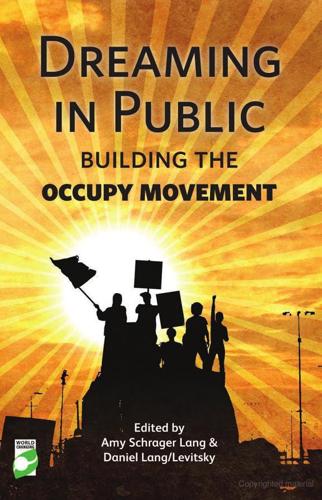
Dreaming in Public: Building the Occupy Movement
by
Amy Lang
and
Daniel Lang/levitsky
Published 11 Jun 2012
Atlanta also has a mass transit system that is forced to pay its own way with no help from the state. Although mostly black Fulton and DeKalb counties paid for its multibillion-dollar infrastructure over a generation, its further development is being dictated by business interests openly hostile to the transit needs of Atlanta’s working poor. Gentrification isn’t just the scourge of black urban communities nationwide. It’s the core ‘economic development’ model for urban America. If occupying public spaces with human bodies is a tactic that works for white hipsters in the middle of town, why can’t it work elsewhere, with them AND with us?

Garbage Land: On the Secret Trail of Trash
by
Elizabeth Royte
Published 1 Jan 2005
My head swirled with arguments regarding hot versus cold composting, the questionable value of newspaper in compost, whether or not kitchen grease was welcome, and with methods for stemming nitrogen loss, upping carbon-to-nitrogen ratios, suppressing weed seeds and pathogens, nurturing disease-suppressing microbes, avoiding exposure to the elements, and achieving the proper ratio of wet to dry materials. It seemed so much simpler to throw our food waste to the pigs, the way our urban forebears and our country cousins did. As late as 1892, a hundred thousand pigs roamed New York City’s streets, feasting on scraps tossed out doors and windows by the working poor, who relied on these animals to convert waste into edible protein. The pigs weren’t docile: they were wild animals that defecated on sidewalks, copulated in public, and injured and occasionally killed children, according to historian Ted Steinberg in Natural History magazine. Crusading mayors occasionally passed antipig ordinances, starting in the 1810s, but they didn’t stick.
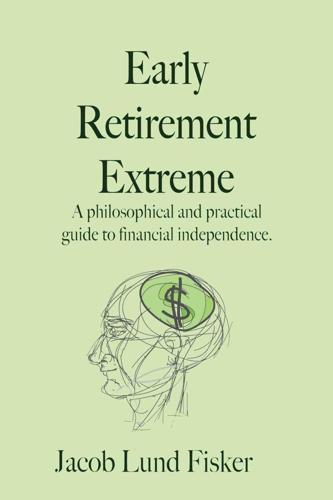
Early Retirement Extreme
by
Jacob Lund Fisker
Published 30 Sep 2010
(3) Also I found that the "quadrants" in Economic degrees of freedom are similar to the Cashflow Quadrant book by Robert Kiyosaki even as they were inspired by the types described in Maccoby's earlier book The Gamesman and the arrangement itself (the dimensions) comes from Charles Perrow's Normal Accident Theory. It's also possible to identify the "working man" with the working class or the working poor, the "salaryman" with the middle class, the "businessman" with the capitalist class, and the "Renaissance man" with the creative class in modern sociology. In feudal Japan, the four types were the gentry (samurai), farmers, artisans, and merchants. Richard Bartle's Players to Suit MUDs is an interesting paper analyzing the four different types of computer game players--killers, socializers, explorers, and achievers--classified according to their preference for acting with or acting on other players or the game world, respectively.

The Importance of Being Seven
by
Alexander McCall Smith
Published 1 Jan 2010
He had at first infuriated her, and then she had found herself being strangely drawn to him. Fortunately she had wrenched herself free – just in time – as some moths manage to escape the candle flame at the very last moment. Then there had been Matthew, for whom she had felt considerable fondness, but with whom she felt ultimately there was just insufficient chemistry to make it work. Poor Matthew, with his distressed-oatmeal sweater and his Macgregor tartan boxer shorts. She still thought that those were a bit of a cheek, given that Matthew had nothing to do with the Clan Macgregor; but she had bitten her tongue on that, as Matthew seemed to have so little in his life, and one should not begrudge somebody like that a bit of colour, even if only in their boxer shorts.
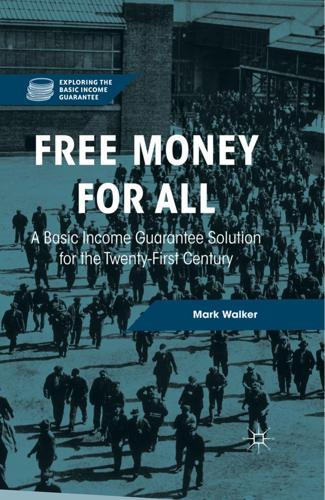
Free Money for All: A Basic Income Guarantee Solution for the Twenty-First Century
by
Mark Walker
Published 29 Nov 2015
Although the deductions would be eliminated on the present proposal, they would be replaced by a check from the federal government for the corresponding amount, which would come from the 205 billion pool of funds. 32 FREE MONEY FOR ALL Elimination of Standard and Personal Deductions Another $300 billion is saved in removing standard and personal deductions. One of the impetuses for these deductions was to help the working poor. The basic idea behind both deductions was to say, in effect, “we won’t tax any income below subsistence level.” For example, the standard deduction for single persons is $6,100, which means that the first $6,100 in income is not subject to income tax.21 Of course, in practice, the standard deduction has not kept up with inflation, so now it is about half the official poverty line.
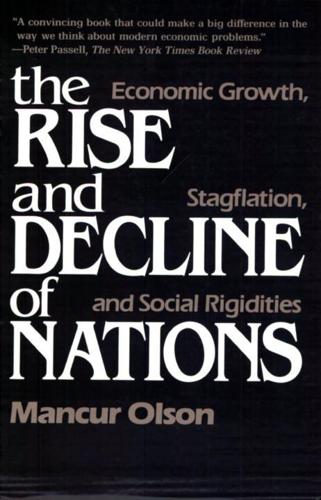
The Rise and Decline of Nations: Economic Growth, Stagflation, and Social Rigidities
by
Mancur Olson
In some African countries, especially, the rural exporters are further exploited by government marketing monopolies that give the farmers only a portion of the price at which the government sells their commodities. The plentiful factors of production earn relatively little to begin with and the loss of export earnings reduces their incomes still further. The owners of the plentiful factors-which include in every developing nation the working poor-not only are denied access to cheaper imports by the protection, but also get lower prices for the labor and the products they have to sell. There are a host of qualifications and technical niceties that it would be interesting to explore at this point. It is also important to point out that situations are somewhat different in each country.

Forward: Notes on the Future of Our Democracy
by
Andrew Yang
Published 15 Nov 2021
Even when I changed tacks, asking, “Well, can you give us $1 million in prepaid debit cards that we could potentially mail to people?” we were told that it would take weeks or months. Fortunately, while we were talking to the banks, we were pursuing alternate routes. Always good to have a plan B. I reached out to Justine Zinkin, the head of a nonprofit called Neighborhood Trust that provides financial services to the working poor in the Bronx. It turns out that they had a technology partner, SaverLife, that was acting as the account intermediary for the families that Neighborhood Trust served. They could identify a thousand struggling families in the Bronx, transfer the money into their accounts, and even include a financial services counseling session for the recipients.
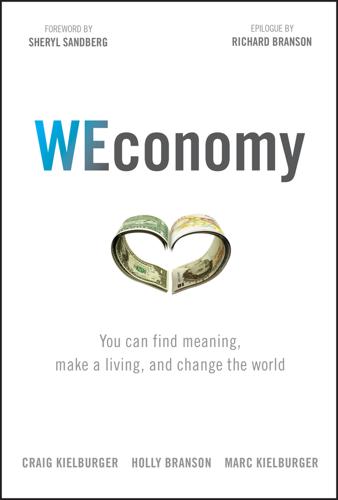
WEconomy: You Can Find Meaning, Make a Living, and Change the World
by
Craig Kielburger
,
Holly Branson
,
Marc Kielburger
,
Sir Richard Branson
and
Sheryl Sandberg
Published 7 Mar 2018
General Mills is parent to popular brands Cheerios and Betty Crocker, among others. The company feeds people, and its charitable arm, the General Mills Foundation, operates with the mission “nourishing lives.” Naturally, General Mills picked the cause of hunger. In America, food security is concerning not only for the homeless, but also for the working poor, with many kids in low-income areas relying on government-run school lunch programs. Those free meals stop when the school year ends. Outnumber Hunger launched in 2011, with General Mills donating partial proceeds from product sales to support food banks across the country, in partnership with nonprofit Feeding America.
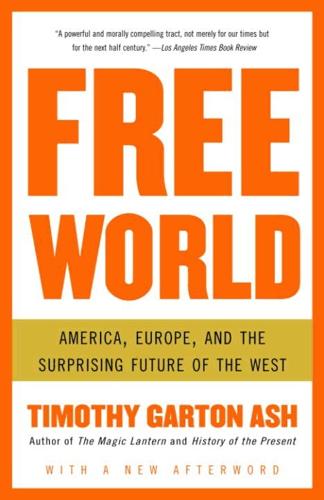
Free World: America, Europe, and the Surprising Future of the West
by
Timothy Garton Ash
Published 30 Jun 2004
The way British industry relies on the stock market to raise capital, with an increasingly frenetic emphasis on “shareholder value,” is more like America, but the way the government redistributes national income through the welfare state is more like France or Germany. Britain has created more new jobs than France but less than America; those jobs are often worse paid and less secure than in France, but there is still not the large underclass of “working poor” that you find in America. Politically, Britain shares great chunks of its formal sovereignty and effective power with the European Union. In many fields, E.U. legislation takes precedence over English or Scottish law. British citizens routinely appeal from the highest British courts to both the European Court of Justice and the separate European Court of Human Rights.

Hate Inc.: Why Today’s Media Makes Us Despise One Another
by
Matt Taibbi
Published 7 Oct 2019
Big northeast dailies like the Times and the Post have devoted innumerable critiques of both current brands, the right-wing version pimped by Trump and the more traditional version, recently revived by the likes of Bernie Sanders. The original Populists of the 1890s were a left-based movement of farmers and the working poor. They had fiery rhetoric but fairly modest goals. They sought a graduated income tax and public railroads, and railed against the “money power” of the Northeast. Then as now, their movement was reviled as crude and uninformed by the upper-crust voices of papers like the New York Times. The really devastating criticism came from celebrated writer William Allen White, who penned an essay about the state most associated with the movement, called… “What’s the Matter With Kansas?”
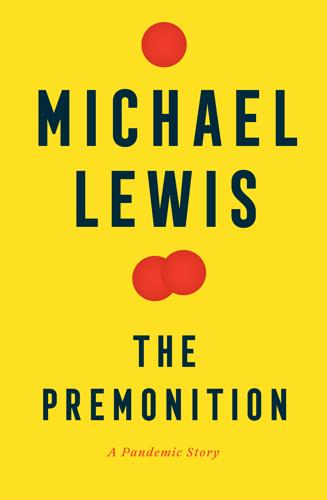
The Premonition: A Pandemic Story
by
Michael Lewis
Published 3 May 2021
He also mentioned—in passing, but so that Charity heard it loud and clear—that the luxury she had of being married to a rich surgeon meant that she could afford to take the job. The job had no obvious appeal, at least to a normal young doctor. It paid a third of what she could earn starting out in the private practices that had already asked her to work for them. Doctors of Santa Barbara already referred to themselves as “the working poor.” Being a doctor in Santa Barbara without being paid like one—well, that was insane. “Everyone tried to talk me out of it,” said Charity. “People couldn’t believe it. They were like, ‘You aren’t seriously thinking of going to work for the county???’ They thought it meant that I was going to be a doctor down in the shithole basement of the county clinic.”

Golden Gates: Fighting for Housing in America
by
Conor Dougherty
Published 18 Feb 2020
As you pass it, the sidewalk ends, block-long fences rise, and over the tops you can see the batting cages and public-park-sized playgrounds that are required backyard amenities in a city that is home to several billionaires and where the median house value is nearing $7 million. So that was North Fair Oaks’ status: a place that was ignored but also mostly undisturbed, a hamlet of the working poor that was surrounded by Silicon Valley excess and sat just a few miles from the expanding headquarters of Google and Facebook. It was a place nobody wanted, until of course they did. * * * — SISTER CHRISTINA GOT the Buckingham call in July 2016. Sister Christina Heltsley was a nun who ran a Catholic nonprofit called the St.
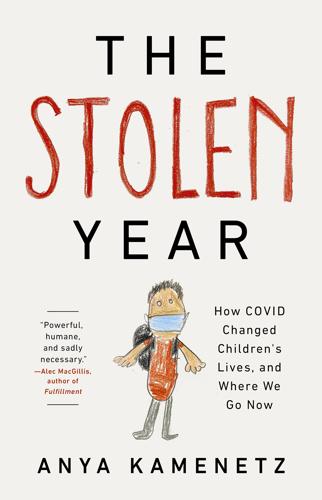
The Stolen Year
by
Anya Kamenetz
Published 23 Aug 2022
Many feminists actually endorsed the new law’s core principles—mainly, that poor single mothers should move from welfare to work and into financial relationships with their children’s fathers.” What happened instead with welfare reform was a drop in the number of families receiving cash aid, a rise in child poverty and homelessness, and a growth in the numbers of the working poor. As journalist Lauren Sandler describes in her 2020 book This Is All I Got, which follows a single mother’s quest for survival in and out of shelters and affordable housing in New York City, welfare reform often means in practice that you drop off your child at the home of another woman living at the edge of poverty, just so you can sit all day in a job center waiting for work that never comes.

Cheap: The High Cost of Discount Culture
by
Ellen Ruppel Shell
Published 2 Jul 2009
Check out Bloom’s excellent blog: http://wastedfood.com. 160 raised the minimum wage to $7.25 over two years: U.S. Department of Labor, Employment and Standards Administration, Wage and Hour Division, online at http://www.dol.gov/esa/whd/flsa. 160 minimum wage of 1960: Adam Cohen, “After 75 Years, the Working Poor Still Struggle for a Fair Wage,” New York Times, June 17, 2008. 160 and crushing homelessness: David Levinson, The Encyclopedia of Homelessness (Thousand Oaks, Calif.: Sage Publications, 2004), 83. 161 the final major reform of the New Deal: Jerold L. Waltman, The Politics of the Minimum Wage (Champaign: University of Illinois Press, 2000), 28. 161 “ever adopted here or any other country”: A bit of hyperbole offered during one of Roosevelt’s customary “fireside chats,” June 24, 1938.
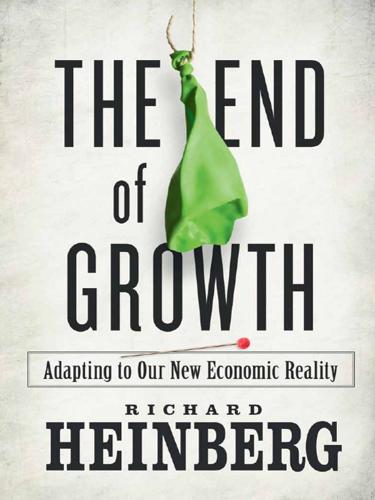
The End of Growth: Adapting to Our New Economic Reality
by
Richard Heinberg
Published 1 Jun 2011
Elderly women are the poorest and most vulnerable people in the US, and their lives are not likely to be improved by peak oil. Women are more likely to be single parents, a job that will come with a whole host of new difficulties post peak. They are more likely than men to work minimum wage jobs, to be exploited at work.... Poor women are more likely to be victims of violence, to have unplanned children, to be trapped in poverty from which they can’t arise. In a period of economic crisis, where everyone is desperate for work, women will be even more vulnerable than usual, and we are already more vulnerable than men. “Creating a sustainable future requires that women who don’t want to have children, or not yet, or not many, be able to cease doing so.
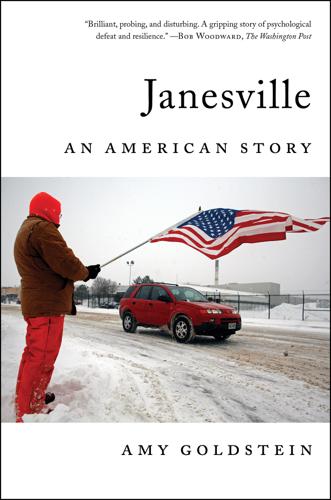
Janesville: An American Story
by
Amy Goldstein
Published 17 Apr 2017
And I am grateful to Timothy Smeeding for inviting me to the University of Wisconsin–Madison’s Institute for Research on Poverty, sharing his wisdom about public policy and income distribution, and helping in many other ways while I was there. Back in D.C., Kathy Courrier wangled office space for me at the American Institutes for Research and then extended my visit. At Georgetown University, I will always hold dear the crew at the Kalmanovitz Initiative for Labor and the Working Poor, with special thanks to labor historian Joseph McCartin, who took me in when I needed a space to draft the manuscript and was always available as a sounding board. Thanks, too, at Georgetown to Ed Montgomery, a dean who knows more than a little about hurting U.S. auto communities and, early on, welcomed me at what has become the McCourt School of Public Policy; Anthony Carnevale, who directs the Georgetown University Center on Education and the Workforce; and economist Harry Holzer, an expert in the low-wage labor market and a good lunch companion.
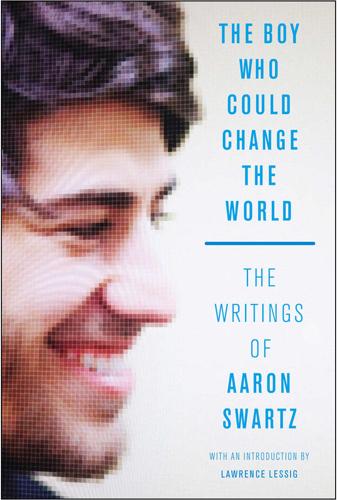
The Boy Who Could Change the World: The Writings of Aaron Swartz
by
Aaron Swartz
and
Lawrence Lessig
Published 5 Jan 2016
She argued that such “unskilled” jobs were much harder than the white-collar work she was used to and found that even working by herself, eating little, and living in pitiful conditions, she still was unable to make ends meet. The result was the bestselling book Nickel and Dimed, which led to a resurgence of interest in the conditions of the “working poor.” Food Lion Fallout But, outside of Harper’s, undercover reporting has largely dried up in recent years, and many point to the Food Lion case as the reason. In 1992, ABC’s PrimeTime Live sent reporters undercover at the Food Lion grocery store to investigate claims of unsanitary food handling practices.
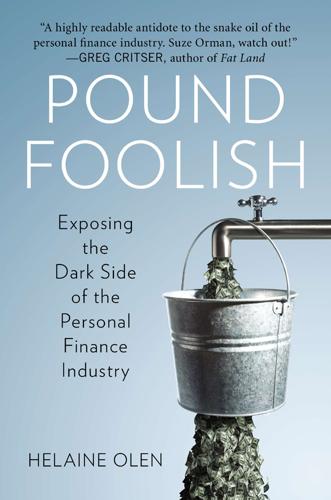
Pound Foolish: Exposing the Dark Side of the Personal Finance Industry
by
Helaine Olen
Published 27 Dec 2012
“Even if you were at the lower end, if the rich are getting richer than you, it’s still going up for you too… They were thinking ‘I’m going to be so much better off than I could imagine based on my salary and it will happen automatically because stocks will always go up.’” And when people like Quinn warned them about potential hazards, these optimistic investors turned a deaf ear. In 2001, Quinn inveighed against President George W. Bush’s tax cut package as “a contemptible piece of consumer fraud,” noting that the working poor would not see a penny extra as a result of the deficit busting plan. But people either didn’t care or chose not to listen. When she wrote a piece for Newsweek in 2002 suggesting some relatively minor fixes to make to 401(k) accounts, which were already emerging as a source of trouble for many people (for reasons ranging from choosing the wrong investments to not putting enough money in them to make a real difference), the letters to the editor in response to her critique were scathing.
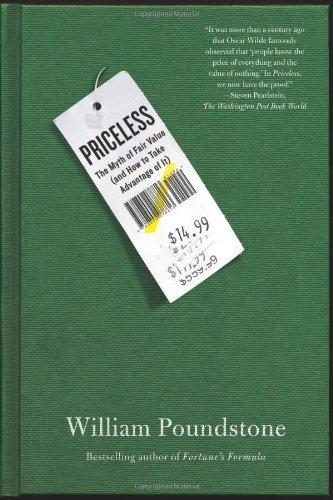
Priceless: The Myth of Fair Value (And How to Take Advantage of It)
by
William Poundstone
Published 1 Jan 2010
Forty-seven Pricing Gender A group including Sendhil Mullainathan and Eldar Shafir conducted a particularly ambitious experiment in the fall of 2003. They got permission from a large consumer lender in South Africa to test a grab bag of psychological tricks in its junk-mail pitches for loans. The lender was offering the equivalent of American payday loans—short-term cash for the working poor, at loan shark rates. The lender sent letters offering a special interest rate to 53,194 past customers. Among other factors, Mullainathan and Shafir’s team tested the effect of having a photograph in the mailing. They found stock photos of pleasant, smiling faces and put them in the lower right corner of the letter, near the signature.

On the Run: Fugitive Life in an American City
by
Alice Goffman
Published 30 Apr 2014
There were probably a number of reasons why I began spending more of my time with Mike and his friends, beyond the need to demonstrate that I wasn’t molesting teenage girls. For one, I had been reading All Our Kin,5 Making Ends Meet,6 and No Shame in My Game,7 and had learned a lot about the lives of working poor people and women struggling on welfare. I wasn’t sure how much my notes about Aisha and her family and friends could add to what these books had already said. Mike and his friends, on the other hand, were a mystery. They sort of had jobs, but they also seemed to have income that they didn’t speak about.
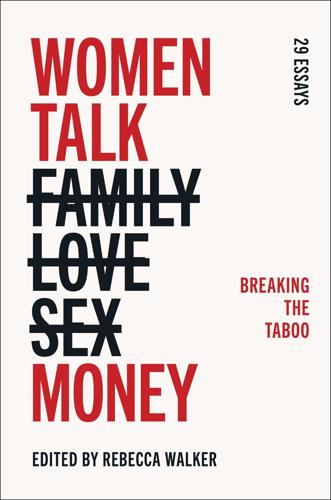
Women Talk Money: Breaking the Taboo
by
Rebecca Walker
Published 15 Mar 2022
My circle of friends at the time—mostly women artists, writers, doctors, lawyers, academics, nonprofit directors, researchers, entrepreneurs, and consultants of all stripes—were socioeconomically displaced. Mostly middle-class, with outliers on each end of the spectrum, we felt the same economic winds that bore down on our working-class and working-poor counterparts, and struggled with many of the same outcomes: upside-down mortgages, sudden and unfathomable debt of the sort our parents warned us about, growing financial anxiety about health care, tuition, food. Mainstays of our privileged lives, like a trip to another country, a meal at a favorite restaurant, a random theater performance, were now expenditures to be carefully considered.
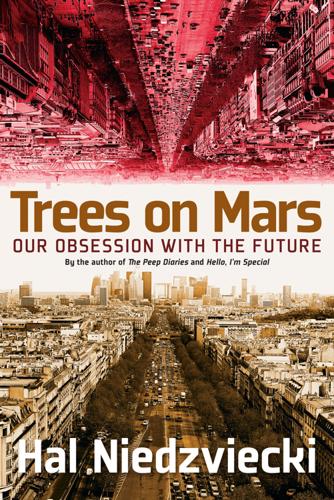
Trees on Mars: Our Obsession With the Future
by
Hal Niedzviecki
Published 15 Mar 2015
Lawrence Summers, “Thomas Piketty Is Right About the Past and Wrong About the Future,” The Atlantic, May 16, 2014, http://www.theatlantic.com/business/archive/2014/05/thomas-piketty-is-right-about-the-past-and-wrong-about-the-fu-ture/370994/. 52. Mitch Potter, “A Dark Shadow Is Falling upon next Week’s Edition of Black Friday,” The Toronto Star, November 24, 2013, http://www.thestar.com/news/world/2013/11/24/black_friday_and_the_digital_rumble_of_americas_working_poor.html. 53. Mayer-Scho¨nberger and Cukier, Big Data, 55. 54. Michael Maiello, “Walmart’s Wage Hike Still About Greed,” The Daily Beast, February 20, 2015, http://www.thedailybeast.com/articles/2015/02/20/walmart-s-wage-hike-still-about-greed.html. 55. Robert Reich, “Wal-Mart and McDonald’s: What’s Wrong with U.S.
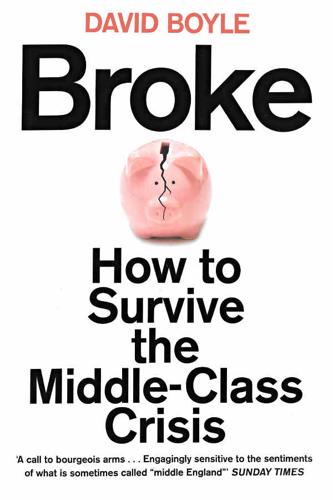
Broke: How to Survive the Middle Class Crisis
by
David Boyle
Published 15 Jan 2014
The kind of morality that they lived by has been turned in on itself, revealed so shockingly in the Lloyd’s Scandal and so many times since. The mistakes also coincide with a fatal crux in economic history — investment yields at an unprecedented low, house prices at an unprecedented high, and the rising insecurity of uncertain economic times. ‘The insecurities that were once limited to the working poor have increasingly crept into the lives of middle class — and even the upper middle class of Americans,’ wrote the political scientist Jacob Hacker in his revelatory book The Great Risk Shift, and it applies on this side of the Atlantic too.[8] But here is the giveaway. He published in 2006 at the height of the boom.

We Are All Fast-Food Workers Now: The Global Uprising Against Poverty Wages
by
Annelise Orleck
Published 27 Feb 2018
Title: “We are all fast-food workers now” : the global uprising against poverty wages / Annelise Orleck. Description: Boston : Beacon Press, 2018. | Includes bibliographical references and index. Identifiers: LCCN 2017037792 (print) | LCCN 2017056512 (ebook) | ISBN 9780807081785 (e-book) | ISBN 9780807081778 (paperback) Subjects: LCSH: Working poor—Interviews. | Living wage movement. | BISAC: SOCIAL SCIENCE / Social Classes. | HISTORY / Modern / 21st Century. | POLITICAL SCIENCE / Labor & Industrial Relations. Classification: LCC HD4901 (ebook) | LCC HD4901 .O75 2018 (print) | DDC 331.5/4—dc23 LC record available at https://lccn.loc.gov/2017037792

Pour Your Heart Into It: How Starbucks Built a Company One Cup at a Time
by
Howard Schultz
and
Dori Jones Yang
Back then, the Projects were not a frightening place but a friendly, large, leafy compound with a dozen eight-story brick buildings, all brand-new. The elementary school, P.S. 272, was right on the grounds of the Projects, complete with playground, basketball courts, and paved school yard. Still, no one was proud of living in the Projects; our parents were all what we now call “the working poor.” Still, I had many happy moments during my childhood. Growing up in the Projects made for a well-balanced value system, as it forced me to get along with many different kinds of people. Our building alone housed about 150 families, and we all shared one tiny elevator. Each apartment was very small, and our family started off in a cramped two-bedroom unit.

Stakeholder Capitalism: A Global Economy That Works for Progress, People and Planet
by
Klaus Schwab
Published 7 Jan 2021
For those at the bottom of the income pyramid, the situation was much bleaker. Many workers saw their real incomes and purchasing power decline since the early 1980s (Figure 2.4). In the UK a similar shift took place. The social and economic outcomes of this worsening inequality in the US have been highly problematic. There are again many working poor in America, a painful outcome in the wealthiest country the world has ever known. Guy Standing, a British economist, even coined the term precariat, to point to “an emerging class, comprising the rapidly growing number of people facing lives of insecurity, moving in and out of jobs that give little meaning to their lives.”43 Seen from this perspective, it is no wonder that in 2011, a one-page call for action in an activist magazine led to one of the most supported American protest movements of this century.
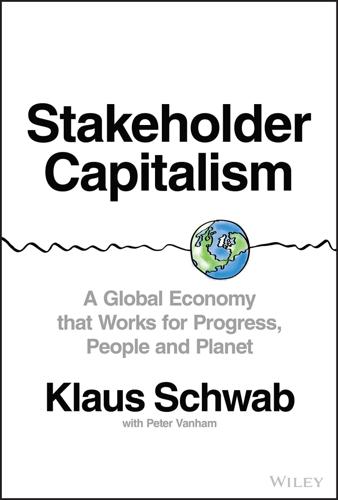
Stakeholder Capitalism: A Global Economy That Works for Progress, People and Planet
by
Klaus Schwab
and
Peter Vanham
Published 27 Jan 2021
For those at the bottom of the income pyramid, the situation was much bleaker. Many workers saw their real incomes and purchasing power decline since the early 1980s (Figure 2.4). In the UK a similar shift took place. The social and economic outcomes of this worsening inequality in the US have been highly problematic. There are again many working poor in America, a painful outcome in the wealthiest country the world has ever known. Guy Standing, a British economist, even coined the term precariat, to point to “an emerging class, comprising the rapidly growing number of people facing lives of insecurity, moving in and out of jobs that give little meaning to their lives.”43 Seen from this perspective, it is no wonder that in 2011, a one-page call for action in an activist magazine led to one of the most supported American protest movements of this century.
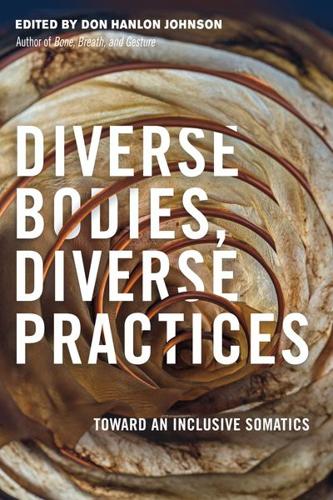
Diverse Bodies, Diverse Practices: Toward an Inclusive Somatics
by
Don Hanlon Johnson
Published 10 Sep 2018
Her best friend was another mixed girl who was black and white. Though I was friends with them, I was never able to move beyond that and into their clique. We were separated by socioeconomic status. To my knowledge, each of them belonged to middle-class families who owned homes and whose parents were still together. On the other hand, I belonged to a working poor family run by my single mother. We moved homes often and I was raised by a village of people. As I write this, I surprise myself with tears. As I allow myself to cry, I am reminded of the craving within myself. For sisterhood. For a place to be seen. To be loved by others with shared experiences.
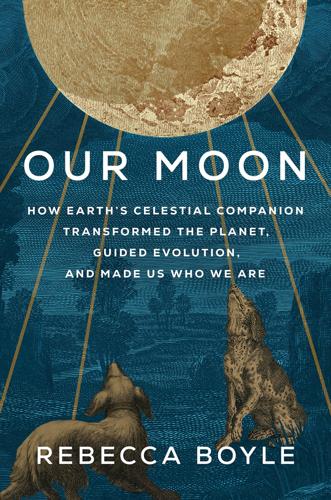
Our Moon: How Earth's Celestial Companion Transformed the Planet, Guided Evolution, and Made Us Who We Are
by
Rebecca Boyle
Published 16 Jan 2024
A few days before Apollo 11 lifted off, a contingent of five hundred mostly Black protesters, marshaled by the civil rights leader Ralph Abernathy, the right-hand man and successor of Martin Luther King, Jr., arrived at the gates of Kennedy Space Center. Abernathy and other members of the Southern Christian Leadership Conference brought four mules and two wooden carts, calling back to the promises of emancipation and drawing a stark contrast between the lives of working poor Americans and the gleaming white obelisk on the launch pad. They met with the NASA administrator, Thomas Paine, and they sang “We Shall Overcome.”5 One archival photo shows Abernathy holding a sign that reads $12 A DAY TO FEED AN ASTRONAUT. WE COULD FEED A CHILD FOR $8. As Paine later recalled, Abernathy told the NASA chief that one-fifth of Americans lacked adequate food, clothing, shelter, and medical care, and that the money for the space program should be spent to “feed the hungry, clothe the naked, tend the sick, and house the shelterless.”

Mood Machine: The Rise of Spotify and the Costs of the Perfect Playlist
by
Liz Pelly
Published 7 Jan 2025
Podcast, July 8, 2020, https://www.thelookuppodcast.com/episodes/passive-mindfulness-with-oleg-stavitsky-ceo-amp-co-founder-of-endel; for the Endel “manifesto,” see https://manifesto.endel.io/. 12 Chris Deville, “Algorithm Gets Major-Label Distribution Deal,” Stereogum, March 22, 2019, https://www.stereogum.com/2036887/endel-algorithm-warners-bros-record-deal/news/; UMG press release, “Endel and Universal Music Group to Create AI-Powered, Artist-Driven Functional Music, Designed to Support Listener Wellness,” May 23, 2023, https://www.universalmusic.com/endel-and-universal-music-group-to-create-ai-powered-artist-driven-functional-music-designed-to-support-listener-wellness/; Aisha Malik, “Endel raises $15M to further develop Its AI-Powered Sound Wellness Technology,” TechCrunch, April 5, 2022, https://techcrunch.com/2022/04/05/endel-raises-15m-to-further-develop-its-ai-powered-sound-wellness-technology/; Mandy Dalugdug, “Amazon Music Strikes Playlist Partnership with Generative AI Music Company Endel,” Music Business Worldwide, February 20, 2023, https://www.musicbusinessworldwide.com/amazon-music-strikes-playlist-partnership-with-generative-ai-music-company-endel12/. 13 Sheldon Pearce, “James Blake & Endel: ‘Wind Down,’ ” New Yorker, June 3, 2022, https://www.newyorker.com/goings-on-about-town/night-life/james-blake-and-endel-wind-down; “Generative AI Can Be a Co-Songwriter, Not a Copycat: Guest Post by Endel CEO Oleg Stavitsky,” Variety, March 29, 2023, https://variety.com/2023/music/opinion/generative-ai-csongwriter-endel-oleg-stavitsky-artificial-intelligence-1235568233/. 14 Bob Wilson, “The Science behind Focus,” Endel, June 28, 2022, https://endel.io/blog/the-science-behind-focus; “Modeling The Effect of Background Sounds on Human Focus Using Brain Decoding Technology,” Arctop, https://arctop.com/deep-dives/modeling-focus. 15 UMG press release for “MUSIC + HEALTH” summit, https://www.universalmusic.com/universal-music-group-and-thrive-global-launch-music-health-summit/. 12 Streaming as Surveillance 1 Tim Peterson, “Spotify to use playlists as proxy for targeting ads to activities, moods,” AdAge, April, 16, 2015, https://adage.com/article/digital/spotify-playlists-gauge-moods-ad-targeting/298066; Zach Rodgers, “Podcast: How Spotify Blazed a Trail in Audio Ads,” AdExchanger Talks, June 8, 2017, https://www.adexchanger.com/ad-exchange-news/podcast-spotify-blazed-trail-audio-ads/. 2 Spotify Advertising Team, “How Listeners See Video Ads on Spotify,” August 2, 2020, https://ads.spotify.com/en-US/news-and-insights/how-listeners-see-video-ads-on-spotify/. 3 See Spotify’s annual report for advertising revenue: https://investors.spotify.com/financials/default.aspx; Gen Z trend report: https://ads.spotify.com/en-US/culture-next/gen-z-trends-report/ 4 Natasha Singer, “Making Ads That Whisper to the Brain,” New York Times, November 13, 2010, https://www.nytimes.com/2010/11/14/business/14stream.html/; Matt Wall, “What Are Neuromarketers Really Selling?,” Slate, July 16, 2013, https://slate.com/technology/2013/07/does-neuromarketing-work-poor-data-secret-analysis-and-logical-errors.html; “Brain scam?” Nature Neuroscience, July 2004, https://www.nature.com/articles/nn0704-683. 5 Spotify neuromarketing campaign: https://ads.spotify.com/en-US/news-and-insights/wpp-neuro-insight-digital-audio-report/. 6 Eric Drott, Streaming Music, Streaming Capital, Duke University Press, 2024. 7 Justin Sherman, “Data Brokers Are a Threat to Democracy,” Wired, April 13, 2021, https://www.wired.com/story/opinion-data-brokers-are-a-threat-to-democracy; Spotify Cookies Vendor List: https://www.spotify.com/us/legal/cookies-vendor-list/; Liz Pelly, “Big Mood Machine,” The Baffler, June 10, 2019, https://thebaffler.com/downstream/big-mood-machine-pelly; for details on WPP and Spotify’s renewed partnership announced in 2023, see this press release: https://www.wpp.com/en/news/2023/08/wpp-spotify-announce-first-of-its-kind-global-partnership. 8 Devin Coldewey, “Signal’s Meredith Whittaker: AI is fundamentally ‘a surveillance technology’,” Tech Crunch, September 25, 2023, https://techcrunch.com/2023/09/25/signals-meredith-whittaker-ai-is-fundamentally-a-surveillance-technology/ 9 Mark Savage, “Spotify wants to suggest songs based on your emotions,” BBC, January 28, 2021, https://www.bbc.com/news/entertainment-arts-55839655; Murray Stassen, “Spotify has a patent for personality tracking technology—and it’s pretty creepy stuff,” Music Business Worldwide, October 7, 2020, https://www.musicbusinessworldwide.com/spotify-has-a-patent-for-personality-tracking-technology-and-its-pretty-creepy/; Ashley King, “Spotify Patents Technology to Target Listeners Based on ‘Nostalgia Metrics,’ ” Digital Music News, September 30, 2020, https://www.digitalmusicnews.com/2020/09/30/spotify-nostalgia-patent-2020/. 10 For the AI Now Institute’s 2019 Report: https://ainowinstitute.org/wp-content/uploads/2023/04/AI_Now_2019_Report.pdf; for a press release regarding a consulting firm’s claims about the present and future of the “emotion detection and recognition market”: https://www.prnewswire.co.uk/news-releases/emotion-detection-and-recognition-market-is-expected-to-generate-a-revenue-of-usd-60-86-billion-by-2030--globally-at-13-cagr-verified-market-research-301730403.html. 11 The Privacy International explanation of why privacy matters: https://privacyinternational.org/learning-resources/privacy-matters 12 Sarah Perez, “Spotify will now let brands sponsor its Discover Weekly playlist,” Tech Crunch, January 7, 2019, https://techcrunch.com/2019/01/07/spotify-will-let-now-brands-sponsor-its-discover-weekly-weekly-playlist/; To see the Microsoft AI commercial featuring Common: https://www.ispot.tv/ad/Ijcr/microsoft-ai-inspiring-possibility-featuring-common; David E.

A History of Modern Britain
by
Andrew Marr
Published 2 Jul 2009
Labour in particular emphasized child poverty because, since the launch of the Child Poverty Action Group, it had become a particularly emotive problem. Labour policies took a million children out of relative poverty between 1997 and 2004, though the numbers rose again later. Brown’s emphasis was also on the working poor, and the virtue of work. So his major innovations were the national minimum wage, the ‘New Deal’ for the young unemployed, and the working families’ tax credit, as well as tax credits aimed at children. There was also a minimum income guarantee, and later a pension credit, for worse-off pensioners.
…
Blair, turning to the ‘war on terror’ and Iraq, failed to concentrate enough on domestic policy. Even so, he became ever more determined to hang on until he got the reforms he wanted. A gap seemed to open between Blair’s enthusiasm for market-mimicking ideas to reform health and schools, and Brown’s, for delivering better lives to the working poor. As we have seen, Brown was also keen on bringing private capital into public services, but there was a difference in emphasis which both men played up. ‘Best when we are at our boldest,’ said Blair. ‘Best when we are Labour,’ retorted Brown. Over Iraq, foundation hospitals and student top-up fees, Blair thought Brown came close to leaving him at the mercy of lethal backbench revolts, disappearing off into the rhododendron bushes just when he was most needed.

Fortunes of Change: The Rise of the Liberal Rich and the Remaking of America
by
David Callahan
Published 9 Aug 2010
Although the individualist outlook had prevailed during the Reagan years, when oil and manufacturing fortunes dominated the Forbes 400 list, the communal view was rapidly gaining strength by the 1990s as people like Bill Gates vaulted to the top ranks of the U.S. upper class. Clinton’s tax hikes, when coupled with a big increase in the Earned Income Tax Credit (EITC) to help the working poor, amounted to a major redistribution of national income away from the upper class. No matter. Clinton still got the support of many in this class. In March 1993, the New York Times reported, “Since Mr. Clinton presented his economic blueprint to Congress and the nation 12 days ago, he has crisscrossed the country to meet with c06.indd 134 5/11/10 6:20:01 AM “please raise my taxes” 135 business leaders and seek their support.
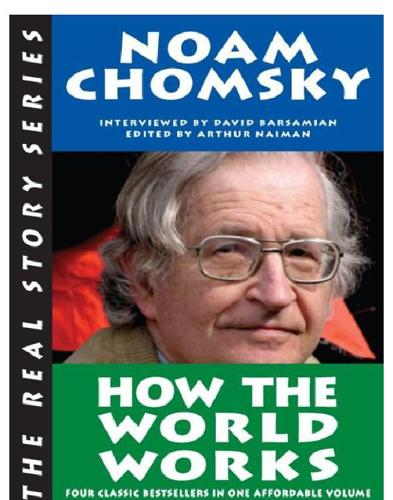
How the World Works
by
Noam Chomsky
,
Arthur Naiman
and
David Barsamian
Published 13 Sep 2011
They’re going to make it more brutal, ruthless and destructive. So while one can recognize the motivation that lies behind some of the opposition to gun control, I think it’s sadly misguided. Becoming a Third World country A recent Census Bureau report stated that there’s been a 50% increase in the working poor—that is, people who have jobs but are still below the poverty level. That’s part of the Third-Worldization of the society. It’s not just unemployment, but also wage reduction. Real wages have been declining since the late 1960s. Since 1987, they’ve even been declining for college-educated people, which was a striking shift.

Arrival City
by
Doug Saunders
Published 22 Mar 2011
By that time, between a quarter and a third of the British middle class and an eighth of the higher professional and managerial classes comprised people who had been born in the lower classes, most of whom had presumably used the arrival cities of London and Manchester as their gateways to advancement—a higher level of mobility, by Miles’s measurement, than existed at the end of the twentieth century. There were limits to this mobility. While a majority of poor people entering the city were able to rise within a generation from unskilled working-poor status to the far more comfortable and stable skilled-worker or tradesman status, only 5 percent of working-class men at the beginning of the twentieth century were able to obtain middle-class status.§ Much of this has to do with property ownership. In nineteenth-century Europe, it was almost unthinkable for even the most elevated members of the working class to purchase the land beneath their feet.
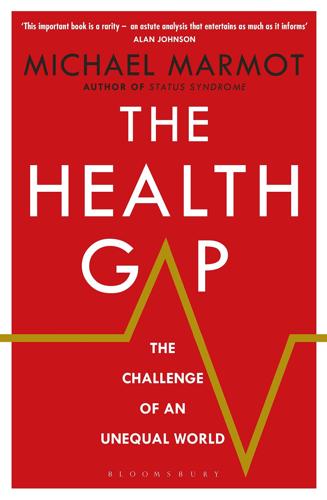
The Health Gap: The Challenge of an Unequal World
by
Michael Marmot
Published 9 Sep 2015
The fortunes of the middle groups are therefore also of concern. The US is getting richer but the benefit is going overwhelmingly to the richest 10 per cent. As Figure 6.2 shows, not much of it reaches the bottom 80 per cent. Simplifying and summarising, there are three ways to address low incomes of people of working age: improve the incomes of the working poor, get more people into work, and improve the incomes of people who for whatever reason are unable to work. Each of these is likely to reduce health inequalities. Before we move from conditions in the workplace to employment conditions, we should ask an important question: is it work or the worker that is damaging health?
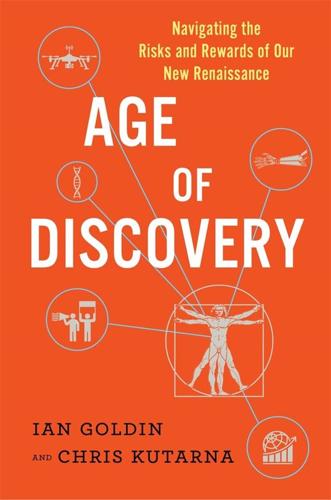
Age of Discovery: Navigating the Risks and Rewards of Our New Renaissance
by
Ian Goldin
and
Chris Kutarna
Published 23 May 2016
The consequences were stupendously bad. By 2009, the financial crisis had already tallied up losses of $4.1 trillion, across every market in the world.45 Roughly 50 million people lost their jobs worldwide; among those who managed to stay employed, a quarter-billion fell into the ranks of the “working poor.”46 In Africa, it is estimated that 30,000–50,000 children died—from starvation—as a direct result of the global economic downturn that followed.47 By now, this story has been told so many times—in interviews, editorials, books and Hollywood-produced documentaries and dramas—that the main lessons easily get blurred in the back-and-forth blame-casting.

Uneasy Street: The Anxieties of Affluence
by
Rachel Sherman
Published 21 Aug 2017
She said, “I feel like we have more of the values of, I think, my parents, who had to count every single penny. … And they got no gifts from their family. You know, moneywise, or anything. So they were very, very self-made. So my mindset is from there.” Having what Helen calls the “mindset” of hard-working, poor immigrants is the most important thing, thus again invoking a particular kind of deserving selfhood that is disconnected from actual material privilege. INHERITORS, GUILT, AND LIVING UP TO PRIVILEGE Not surprisingly, the inheritors I interviewed could not draw as easily on meritorious discourses of hard work, independence, and productivity, especially when they did not also have high-paying jobs.13 As a consequence, in place of an affect or mindset of prudence in the face of risk, they were more likely to describe feeling uncomfortable or guilty about their wealth.14 Ellen was a financial advisor to many people with inherited wealth and an inheritor herself.

Free to Choose: A Personal Statement
by
Milton Friedman
and
Rose D. Friedman
Published 2 Jan 1980
Relief payments vary widely from one part of the country to another, which encourages migration from the South and the rural areas to the North, and particularly to urban centers. Persons who are or have been on relief are treated differently from those who have not been on relief (the so-called working poor) though both may be on the same economic level. Public anger is repeatedly stirred by widespread corruption and cheating, well-publicized reports of welfare "queens" driving around in Cadillacs bought with multiple relief checks. As complaints about welfare programs have mounted, so have the number of programs to be complained about.

44 Scotland Street
by
Alexander McCall Smith
Published 13 Jun 2005
“This is a very interesting audience. There are some people here who are just itching to have their portraits painted. They come to everything that the gallery organises. They sit through every lecture, without fail. They give large donations. All for the sake of immortality in oils. And the sad thing is – it never works. Poor dears. They just aren’t of sufficient public interest. Fascinating to themselves and their friends, but not of sufficient public interest.” Domenica smiled wickedly. “There was a very embarrassing incident some years ago. Somebody – and I really can’t name him – had a portrait of himself painted and offered it to the gallery.
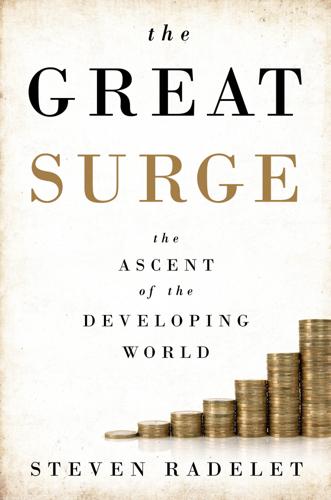
The Great Surge: The Ascent of the Developing World
by
Steven Radelet
Published 10 Nov 2015
But it’s extremely demanding even for the most fit; consequently, few people can do it for more than four days a week—and that is only if the rickshaw is available. Many drivers try to find other work as street cooks or garbage collectors or construction workers. Other members of the household will try to take on work cleaning homes, sewing, or picking rags—if they can find the work—or taking in boarders. Because there are so few opportunities for steady work, poor families often need multiple sources of small amounts of income to get by. Standard economics teaches the benefits of specialization—greater skill, speed, quality, and efficiency—but for the extreme poor, these gains are outweighed by the risks of not being able to find full-time specialized work or by being too dependent on the weather or the vagaries of the markets.
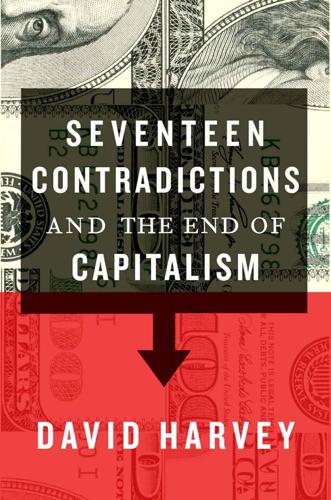
Seventeen Contradictions and the End of Capitalism
by
David Harvey
Published 3 Apr 2014
It has been suggested, on the other hand, that grossly lopsided distributions might spell trouble not only because of the social instability and unrest they may provoke (a fear the IMF and the Davos conferences of the global capitalist elites frequently invoke), but because the historical evidence suggests gross inequalities might be a harbinger of a macroeconomic crisis to come. This is so because the contradictory unity between production and realisation becomes far harder to keep in balance when realisation depends on the vagaries and discretionary habits of wealthy people as opposed to the solid and reliable non-discretionary demands of the working poor. The last time the USA experienced equivalent levels of inequality to those now prevailing was the 1920s and this clearly played an important role in fomenting if not triggering the depression of the 1930s. The situation today seems broadly comparable. Can we hope to get out of the current stagnation without radically reordering distributional arrangements?

The Geography of Nowhere: The Rise and Decline of America's Man-Made Landscape
by
James Howard Kunstler
Published 31 May 1993
The poor were not a permanent class of subsidized indigents but rather working people who made less money. As factories multiplied, and the streets where they stood became less desirable places to live, older, single-family houses were bought by enterprising landlords and chopped up into warrens for the poor. But a great many more of the working poor lived among middle-class families, in rented rooms, apart ments, basements, and in back-alley dwellings scattered fairly evenly throughout the city. In the first phase of industrialism, the dimensions of city life re mained at a human scale. While the canal system and then the railroads vastly improved the transport of goods between towns and cities, the movement of anything bulky within the city itself was still arduous.

The Great Railway Bazaar
by
Paul Theroux
Published 1 Jan 1975
I didn't feel I had any right to watch people bathing under a low faucet -naked among the incoming tide of office workers; men sleeping late on their charpoys or tucking up their turbans; women with nose rings and cracked yellow feet cooking stews of begged vegetables over smoky fires, suckling infants, folding bedrolls; children pissing on their toes; little girls, in oversized frocks falling from their shoulders, fetching water in tin cans from the third-class toilet; and, near a newspaper vendor, a man lying on his back, holding a baby up to admire and tickling it. Hard work, poor pleasures, and the scrimmage of appetite. This village has no walls. I distracted myself with the Signs, GWALIOR SUITINGS, RASHMI SUPERB COATINGS, and the film poster of plump faces that was never out of view, BOBBY ('A Story of Modern Love'). I was moving so quickly I lost Hermann. He had drugged himself for the arrival: crowds made him nervous.
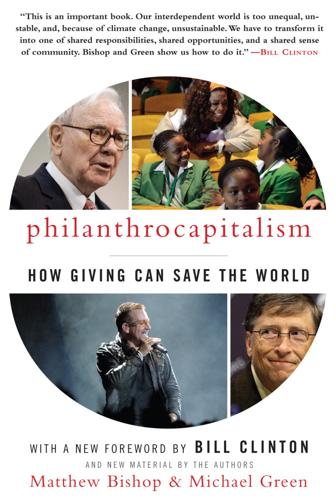
Philanthrocapitalism
by
Matthew Bishop
,
Michael Green
and
Bill Clinton
Published 29 Sep 2008
Compartamos does not serve the very poorest clients, unlike Yunus’s Grameen, which even makes interest-free loans to beggars. Danel acknowledges that there may be limits to the scope of for-profit microfinance. “We focus on market segments C and D—not the poorest segment, E, as micro-finance is not an effective tool there,” says Danel. “It is really only for the working poor. The entire industry in Mexico only has fifteen percent coverage of the C and D market, so there is still plenty of opportunity to grow.” Some critics complain that the interest rates charged by Compartamos are too high, but Danel says that if the rates were lower, it would not be able to so quickly grow the number of clients it serves.

Miracle Cure
by
William Rosen
Published 14 Apr 2017
At least twenty thousand British soldiers contracted the disease, and more than nine thousand of them died. Disgusted, Wright left the War Department in 1902, and moved to St. Mary’s Hospital. On Praed Street in London’s Paddington neighborhood, St. Mary’s was one of the last of London’s so-called “voluntary” hospitals, set up for the care of the working poor, and one of the first conceived of as a teaching hospital with an attached medical school. There, following the model of Pasteur and Koch, he opened a laboratory—the “Inoculation Department”—that he would direct for the next forty-five years. In retrospect, Wright’s accomplishments at St. Mary’s never soared as high as his reputation, and his place in history has suffered in consequence.
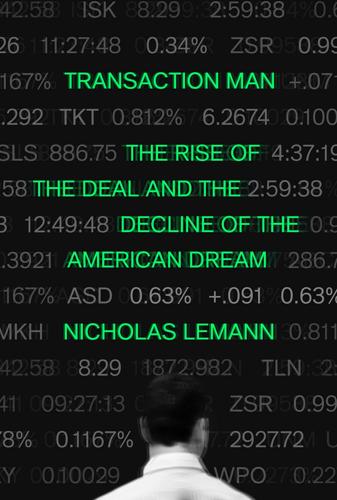
Transaction Man: The Rise of the Deal and the Decline of the American Dream
by
Nicholas Lemann
Published 9 Sep 2019
Aside from being active in her church and taking care of her ailing mother, her life is mainly about trying to maintain order on her block, and that hasn’t been easy. Chicago Lawn, nowhere near the prosperous sections of Chicago, has never represented anything grander than the first step above working-poor apartment life for whoever is moving in from a fresh-off-the-boat ethnic neighborhood. That step is a big one, though; it makes the neighborhood worth fighting for, and it makes the danger of falling back palpably real, especially for someone like Ann, who had lived through the vertiginous fall of another neighborhood.

New Laws of Robotics: Defending Human Expertise in the Age of AI
by
Frank Pasquale
Published 14 May 2020
Stories of suicides among clients of micro-lenders unable to repay their loans are not uncommon. “Credit circles” mean that fellow villagers of the debtor will often be saddled with his debt, creating unbearable shaming dynamics. One Kenyan argued that digital lending apps are “enslaving” both the working poor and the salaried classes in his country.54 Predatory inclusion also poisons education’s promise. When those desperate for opportunity take on a heavy loan burden to attend training programs of dubious value, the latter effect predominates. The rhetoric of uplift convinces too many that more learning is a sure path to better earning power.

On the Clock: What Low-Wage Work Did to Me and How It Drives America Insane
by
Emily Guendelsberger
Published 15 Jul 2019
Rosen The Lean Startup: How Today’s Entrepreneurs Use Continuous Innovation to Create Radically Successful Businesses, Eric Ries Gigged: The End of the Job and the Future of Work, Sarah Kessler The Job: Work and Its Future in a Time of Radical Change, Ellen Ruppel Shell On low-wage work and workers The Working Poor: Invisible in America, David K. Shipler Precarious Lives: Job Insecurity and Well-Being in Rich Democracies, Arne Kalleberg The Disposable American: Layoffs and Their Consequences, Louis Uchitelle The Overworked American: The Unexpected Decline of Leisure, Juliet Schor Free Time: The Forgotten American Dream, Benjamin Hunnicutt The Precariat: The New Dangerous Class, Guy Standing Strangers in Their Own Land: Anger and Mourning on the American Right, Arlie Hochschild The Big Squeeze: Tough Times for the American Worker, Steven Greenhouse The Working Life: The Promise and Betrayal of Modern Work, Joanne B.
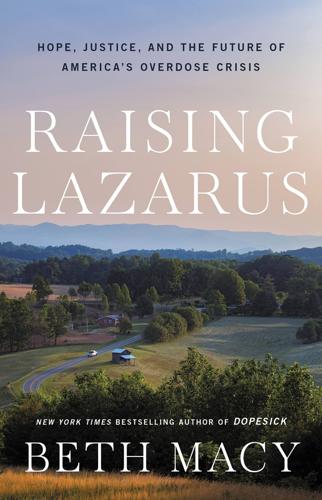
Raising Lazarus: Hope, Justice, and the Future of America’s Overdose Crisis
by
Beth Macy
Published 15 Aug 2022
Unlike the counties where Michelle Mathis and Tim Nolan worked, Surry County has not one sliding-scale FQHC for adults. The largest Medicaid-funded option for addiction medicines remained Daymark Recovery Services, but most drug users I met found its mandatory counseling requirements exceedingly onerous, and roughly half of the addicted working poor in the community don’t qualify for Medicaid because state politicians had shunned Obamacare as socialism. An estimated half-million North Carolinians would benefit from closing the Medicaid coverage gap. (It would most help those who earn too much to qualify for Medicaid but still can’t afford insurance and too often end up using costlier emergency rooms rather than primary care.)
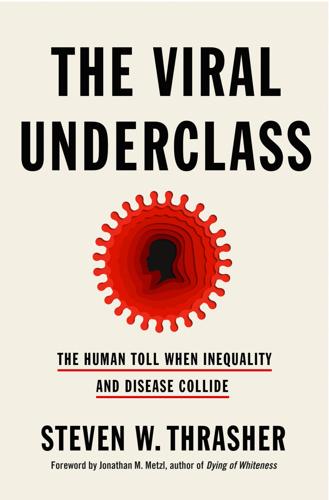
The Viral Underclass: The Human Toll When Inequality and Disease Collide
by
Steven W. Thrasher
Published 1 Aug 2022
This was about public health, but not entirely because the government had finally decided to prioritize the well-being of marginalized populations. Because the ruling class would have no way to extract profit from laborers if the laborers couldn’t go to work, the government paid for everyone’s vaccines. It’s a very different story when a laborer gets a cancer diagnosis. After all, cancer in a working poor person doesn’t put any rich people’s lives in danger, and it doesn’t infect fellow workers. But during the COVID-19 pandemic, poor people suddenly could get screened and sometimes even treated for COVID-19 for free in a way they never could for cancer. And as the ruling class understood that there were powerful forms of prophylaxis (such as working from home) at their disposal that could keep danger at a safe distance, a sense of emergency about the pandemic by politicians and the press waxed and waned relative to the risk posed to the wealthy.
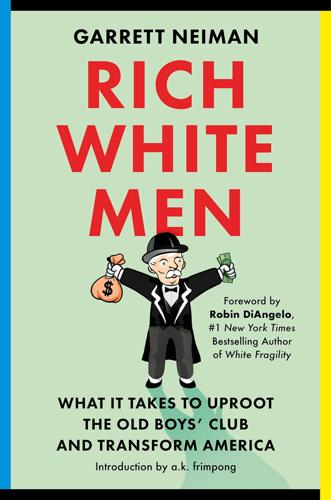
Rich White Men: What It Takes to Uproot the Old Boys' Club and Transform America
by
Garrett Neiman
Published 19 Jun 2023
More than 140 million Americans—nearly half of the population—live below the official poverty line or are living paycheck to paycheck.7 Adjusted for inflation, the 2020 federal minimum wage is a third lower than it was in 1970.8 That loss—worth $3.42 per hour in today’s dollars—is among the reasons why America’s working class has become the working poor. “If you want the American dream today,” Ford Foundation president Darren Walker told CNBC in 2019, “you ought to move to Canada.”9 Some economists and politicians say that the American dream is fading because the economy isn’t growing as quickly as it once was.10 That’s a partial truth: GDP did grow more quickly in the 1950s and 1960s, when the American middle class blossomed.11 However, faster growth wouldn’t be enough to reverse social mobility trends.
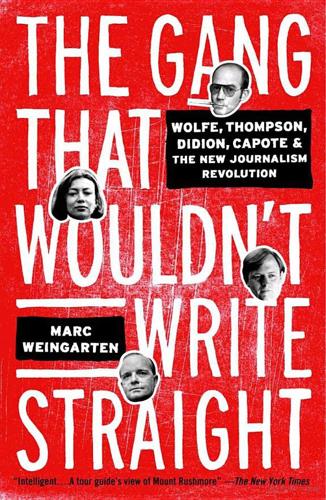
The Gang That Wouldn't Write Straight: Wolfe, Thompson, Didion, Capote, and the New Journalism Revolution
by
Marc Weingarten
Published 12 Dec 2006
In frail health from his Burmese experience, and suffering from an infected foot, Orwell nonetheless plunged into the maelstrom with dedicated mind and spirit. Orwell’s experiences, which he was eventually to recount in his 1931 book Down and Out in Paris and London, transpired over a longer period of time than Jack London’s (in all, Orwell’s life as a member of the working poor spanned three years). Unlike London, who booked another room in comfortable lodgings in order to maintain a “port of refuge … into which I could run now and again to assure myself that good clothes and cleanliness still existed,” Orwell allowed himself no such safe harbor. When his paltry savings ran out, he scrounged around for whatever work he could find, with fitful results.
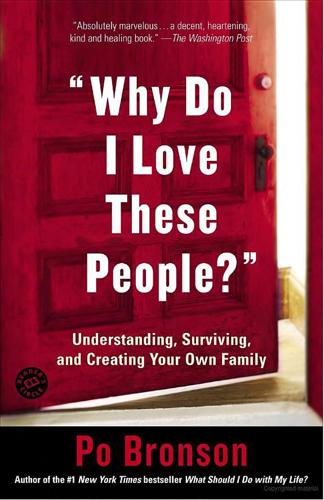
Why Do I Love These People?: Understanding, Surviving, and Creating Your Own Family
by
Po Bronson
Published 26 Dec 2006
In the backseat, Jarralynne prayed. If there was a bottom, that was it. But this happened more than once. This scene recurred maybe four times a year, up until Jarralynne was about ten years old. Karen would come out of those harrowing decision points outside Shawn Acres with some determination. Karen was the working poor, which meant she was jealous of those on food stamps, who at least had something to eat. So she'd get creative. She would dress herself up real nice, drag the kids to a restaurant, and announce, “Oh my God, the check didn't show up! But it'll be here tomorrow. The kids gotta eat, though.” If that didn't work, Karen would tell her girls to go up to a nice lady somewhere and ask her to “be my godmother.”
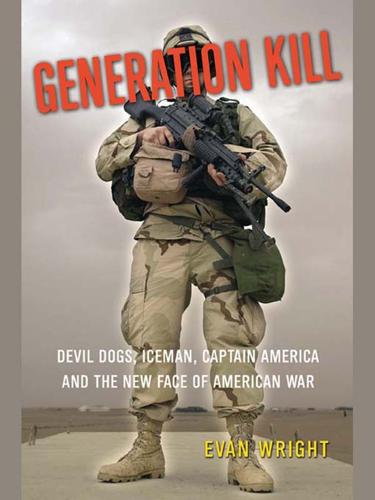
Generation Kill
by
Evan Wright
Published 19 May 2004
The Hispanics in the platoon refer to the white guys as “cracker-ass fucks,” the whites refer to them as “muds” and to Spanish as “dirty spic talk,” and they are the best of friends. Person, the aspiring rock star who serves as the driver and radio operator for Colbert’s team, is among those whose feelings about the Corps seem almost conflicted. From Nevada, Missouri, a small town where “NASCAR is sort of like a state religion,” he was proudly raised working-poor by his mother. “We lived in a trailer for a few years on my grandpa’s farm, and I’d get one pair of shoes a year from Wal-Mart.” Person was a pudgy kid in high school, didn’t play sports, was on the debate team and played any musical instrument—from guitar to saxophone to piano—he could get his hands on.
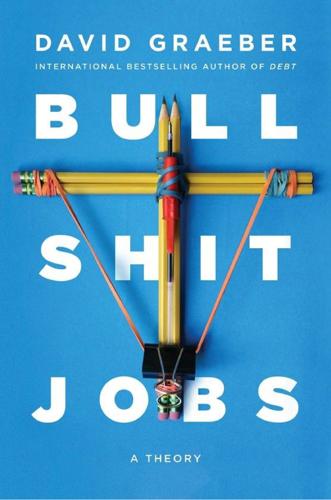
Bullshit Jobs: A Theory
by
David Graeber
Published 14 May 2018
Factories began employing time clocks; workers came to be expected to punch the clock upon entering and leaving; charity schools designed to teach the poor discipline and punctuality gave way to public school systems where students of all social classes were made to get up and march from room to room each hour at the sound of a bell, an arrangement self-consciously designed to train children for future lives of paid factory labor.25 Modern work discipline and capitalist techniques of supervision have their own peculiar histories, too, as forms of total control first developed on merchant ships and slave plantations in the colonies were imposed on the working poor back home.26 But the new conception of time was what made it possible. What I want to underline here is that this was both a technological and a moral change. It is usually laid at the feet of Puritanism, and Puritanism certainly had something to do with it; but one could argue equally compellingly that the more dramatic forms of Calvinist asceticism were just overblown versions of a new time sense that was, in one way or another, reshaping the sensibilities of the middle classes across the Christian world.
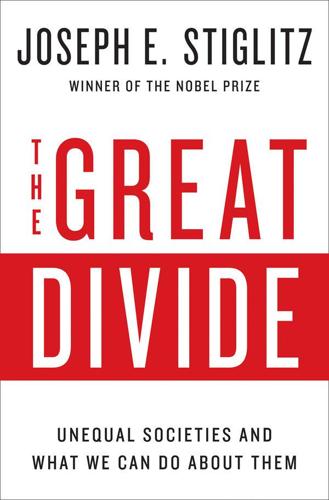
The Great Divide: Unequal Societies and What We Can Do About Them
by
Joseph E. Stiglitz
Published 15 Mar 2015
Making it more difficult to register to vote, or even to vote, for certain groups (e.g., those without a driver’s license, the usual piece of identification in the United States, where there is no national identity card) discourages them from voting. The poll tax (imposing a tax on everyone who votes) affects the “economics” of voting. It creates a de facto disenfranchisement of the poor. This was one of the tried-and-true ways used in America’s South. Some countries try to make it easy for the working poor to vote, by having elections on Sunday. Other countries (like Australia) have actively sought to make sure that the voices of all citizens are heard. Australia’s rule of mandatory voting—charging a penalty on everyone who does not show up at the voting booth—affects the economics of voting in precisely the opposite way that a poll tax does.
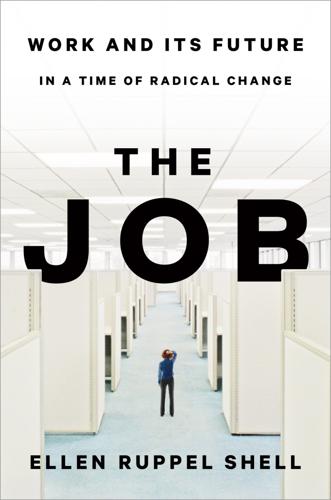
The Job: The Future of Work in the Modern Era
by
Ellen Ruppel Shell
Published 22 Oct 2018
Most working Finns are covered by legally binding collective agreements specifying pay ranges by sector—physicians, teachers, janitors, and home health aides are all similarly covered—agreements that were sanctioned by industry and government, working together. As a consequence, in Finland the phrase “working poor” has little resonance—not everyone in Finland is middle class, but no working person need fear losing a home, health care, or education for his or her children. The Finns do not mince words. Their self-avowed national character trait sisu translates roughly as “perseverance in the face of hopelessness.”
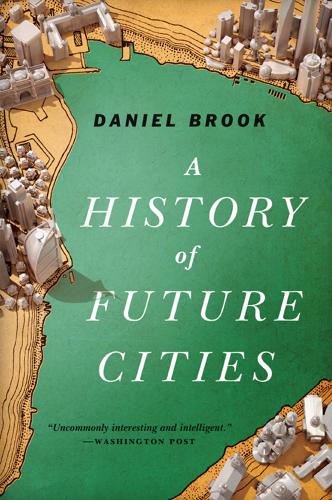
A History of Future Cities
by
Daniel Brook
Published 18 Feb 2013
By 1910, literacy in St. Petersburg stood at nearly 80 percent, well ahead of Moscow and off the charts compared to rural Russia. But mass literacy was a social innovation the Petersburg elite would come to regret. Industrial St. Petersburg was really two cities—one of the wealthy and another of the working poor. And yet the two cities existed cheek by jowl. The world of flea-market hawkers, even the Dostoevskian phantasmagoria of propositioning prostitutes and passed-out drunkards, stood a brief stroll down the Catherine Canal from the onion domes of Christ on the Blood and the lavish shops of Nevsky Prospect.

Life Inc.: How the World Became a Corporation and How to Take It Back
by
Douglas Rushkoff
Published 1 Jun 2009
They were inspired to find a way to facilitate loans to small-business owners in the developing world and began developing the concept of an Internet-based fund where socially minded individuals could loan directly to these deserving entrepreneurs. They spent the next year researching and creating a business plan to make Kiva a reality. In 2005, Kiva.org launched as the world’s first micro-lending website for the working poor, empowering individuals to lend to entrepreneurs across the globe. By combining micro-finance with the Internet, Kiva created a global community of people connected through lending. Today, anyone with an email address can create a Kiva account, and anyone who can make payments using a credit card or PayPal account can be a Kiva Lender.
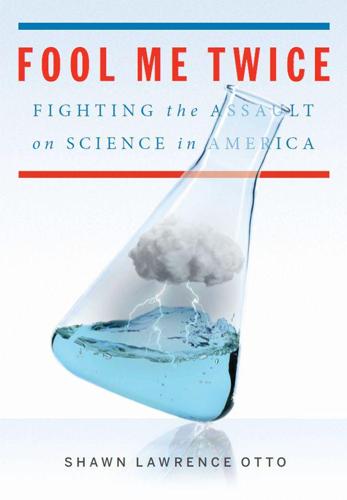
Fool Me Twice: Fighting the Assault on Science in America
by
Shawn Lawrence Otto
Published 10 Oct 2011
This view was enthusiastically embraced by the largely left-leaning academics in the humanities at many universities, who had found themselves being deposed by science in the battle of the two cultures. They found common cause with political activists representing feminism, environmentalism, African Americans, Native Americans, the working poor, humanism, the peace movement, gay rights, animal rights, antinuclear activists, and other disempowered groups. Science came to be seen as the province of a hawkish, probusiness political-right power structure—polluting, uncaring, greedy, mechanistic, sexist, racist, imperialistic, oppressive, and not to be trusted.
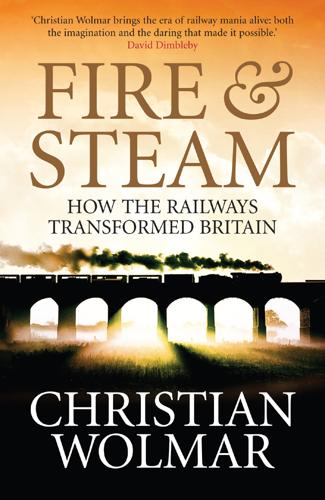
Fire and Steam: A New History of the Railways in Britain
by
Christian Wolmar
Published 1 Mar 2009
The festivities continued largely as planned, including the banquet at the Adelphi Hotel, although the band was cancelled out of respect for poor Huskisson. There had been no doubt that the ceremonies should start and end at Liverpool where the enthusiasm for the railway appeared unalloyed. The quality of life of the working poor was perhaps a trifle better there, and the crowds were wholeheartedly enthusiastic about the new invention, whereas in Manchester contemporary observers noted that the procession was watched ‘with looks of sullen or insolent indifference’.31 Indeed, the welcome in east Lancashire was far from warm.

If You're So Smart, Why Aren't You Happy?
by
Raj Raghunathan
Published 25 Apr 2016
If few people were willing to take up menial-but-critical jobs, then the most likely consequence—which follows from a simple supply-demand logic—would be this: those willing to take up the menial-but-critical jobs would command higher wages. This wouldn’t be such a bad thing for at least two reasons. First, higher wages for the working poor would improve the lot of those at the “bottom of the pyramid.” Second, assuming the operation of free-market forces, opportunistic entrepreneurs would step in to figure out alternative ways to meet the demand for menial-but-critical jobs. Specifically, after perhaps a brief period of chaos, machines and robots would take the place of humans currently doing these jobs.
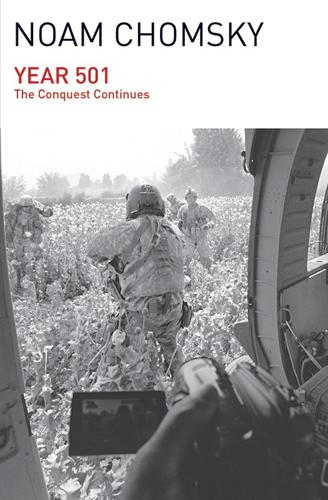
Year 501
by
Noam Chomsky
Published 19 Jan 2016
Even “once-generous donors such as Sweden” are cutting back, while “less generous countries, such as the UK and US,...are expected to cut still further” their minuscule contributions. A meeting of non-governmental organizations (NGOs) meanwhile concluded that “Structural adjustment imposed by the World Bank and [IMF] have brought disaster to the working poor of as many as 100 countries,” forced “to open their markets to a flood of cheap imports” while the rich refuse “to abandon their subsidies, quotas and high tariffs.” The result is “‘brutal’ suppression of wages and living standards” and elimination of social programs, the effects increasing as the programs are implemented over the past decade or more.47 The institutions of “the new ruling class,” which now “run large parts of the developing world and eastern Europe,” “encourage” their clients to follow “the right kind of reform policy,” Morgan continues.
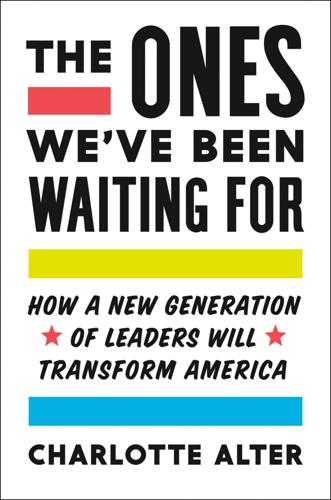
The Ones We've Been Waiting For: How a New Generation of Leaders Will Transform America
by
Charlotte Alter
Published 18 Feb 2020
By the 1990s, when Bill Clinton became the first boomer president, baby boomers had been building power for long enough that they held important positions in the White House, Congress, and the courts: America was tilting their way. Clinton greatly expanded the earned income tax credit—the most successful antipoverty program in a generation—which, along with a rising economy, sharply raised the incomes of the working poor. But despite some rational justifications at the time, many of the policies implemented by Clinton and his fellow boomers in the 1990s would prove to be disastrously shortsighted. The bill he signed to “end welfare as we know it” helped some welfare recipients find jobs, but cut off desperately needed cash for families stuck in deep poverty.
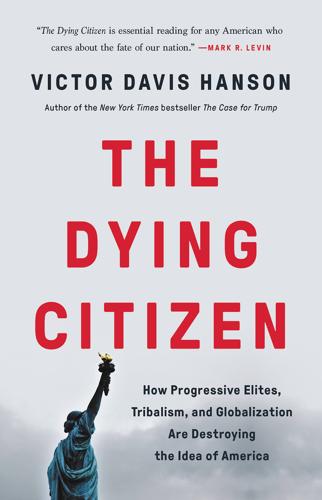
The Dying Citizen: How Progressive Elites, Tribalism, and Globalization Are Destroying the Idea of America
by
Victor Davis Hanson
Published 15 Nov 2021
He was unable to find many in the establishment willing to endure the social ostracism brought by allying with or working for him. And given his agendas and mercurial persona, he never enjoyed complete party unity to advance his political agendas. Still, as part of his middle-class restoration agenda and appeals to the working poor and minorities, Trump sought to distinguish residency from citizenship by fortifying and thus securing the southern border, while enforcing laxly administered immigration laws. The Trump administration deliberately attacked the orthodoxy of identity politics, sometimes bluntly and without refinement, in calls to return to the practice of the melting pot.
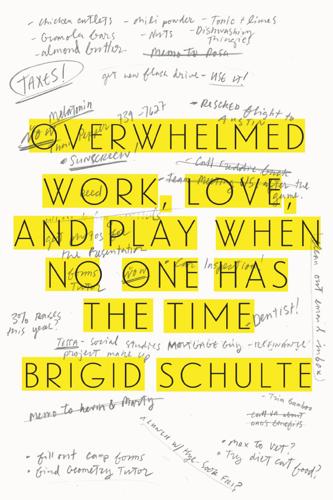
Overwhelmed: Work, Love, and Play When No One Has the Time
by
Brigid Schulte
Published 11 Mar 2014
“I can’t seem to get myself to just relax and enjoy the moment,” she said. “I have to find something, anything, to do, because that’s what I’m usually doing—something.” When I read that some social scientists thought the time crunch was really an indulgent “yuppie kvetch,” I asked a friend who works with working-poor immigrant families if I could come to one of their monthly evening meetings. A group of about fifty people gathered in the cafeteria of the local high school. As I went from table to table, many explained how they cobbled together two or three part-time, low-paying jobs to pay the rent. They lived in apartments with two and sometimes three other families.

The Great Transformation: The Political and Economic Origins of Our Time
by
Karl Polanyi
Published 27 Mar 2001
Cf. also Postlethwayt’s editorial remark in the Universal Dictionary of 1757 on the Dutch Poor Law of October 7, 1531. * Bentham, J., Pauper Management. First published, 1797. C H A P T E R T E N Political Economy and the Discovery of Society When the significance of poverty was realized, the stage was set for the nineteenth century. The watershed lay somewhere around 1780. In Adam Smith’s great work poor relief was no problem as yet; only a decade later it was raised as a broad issue in Townsend’s Dissertation on the Poor Laws and never ceased to occupy men’s minds for another century and a half. The change of atmosphere from Adam Smith to Townsend was, indeed, striking. The former marked the close of an age which opened with the inventors of the state, Thomas More and Machiavelli, Luther and Calvin; the latter belonged to that nineteenth century in which Ricardo and Hegel discovered from opposite angles the existence of a society that was not subject to the laws of the state, but, on the contrary, subjected the state to its own laws.

The Lonely Century: How Isolation Imperils Our Future
by
Noreena Hertz
Published 13 May 2020
A range of factors in recent decades contributed to this: the fact that in the United States, CEO pay had increased by 930% since 1978, whilst the average worker’s wages had grown by only 11.9%; the fact that the rules of the game seemed dictated ever more by large global corporations at a time that workers’ voices and rights were being diminished; the fact that in the UK one in eight adults in employment were, already in 2018, classified as working poor and 850,000 people were on zero hours’ contracts (not knowing how many hours they’ll be working each week or even if they’ll get any hours at all); the fact that many millions of people across much of the world were stuck at the turn of the decade in low-paid, low status jobs with no opportunity for advancement.58 Over a hundred years ago, Karl Marx cautioned in his theory of alienation that workers lacking control over the means of production, and reaping limited rewards from their hard work, would feel disconnected not only from the process and product of their labour, but also from their fellow workers, the workplace and their very selves.59 Even before the economic downturn of 2020 a new set of working conditions had created a very similar effect.

Retrofitting Suburbia, Updated Edition: Urban Design Solutions for Redesigning Suburbs
by
Ellen Dunham-Jones
and
June Williamson
Published 23 Mar 2011
It was part of a swath of “swinging singles” apartment complexes built for pilots, flight attendants, and their friends. By the 1990s the complex and others like it had become run down, though still respectable, and home to working-class families. A 1991 article in the Atlanta Journal Constitution about the “hidden homeless” among the working poor featured a family evicted from The Windjammer. Figure 2–10 Garden apartment buildings at Brookside Apartments, formerly known as The Windjammer, were rehabilitated in the summer of 2005 to accommodate larger families. The leasing website features Martin Luther King Day essay contests, Easter egg hunts, and “dress for success” workshops for the largely minority and/or immigrant tenants, a far cry from the “swinging singles” parties and cocktails by the pool of the 1970s.
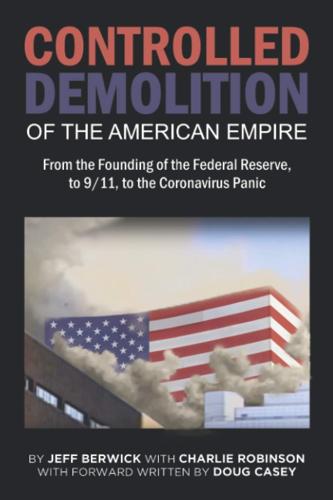
The Controlled Demolition of the American Empire
by
Jeff Berwick
and
Charlie Robinson
Published 14 Apr 2020
Once people come to understand how they are actually viewed by the controllers, the tax system makes a whole lot more sense. They want to milk the population for all they are worth, then slaughter them. Pretty simple. Although the politicians in Washington would never admit this, the reality is that taxes are not for everyone, just the middle class and the working poor. The way the tax laws are structured, those with a smart tax attorney can see gaping loopholes that the majority of Americans simply cannot. All sorts of legal maneuvering through tax shelters, trusts, and corporate structuring can shave large percentages off of the bill. Tax havens like the Cayman Islands, Bermuda, and Jersey are simply not options for the general public if they even know where they are and what they do in the first place.
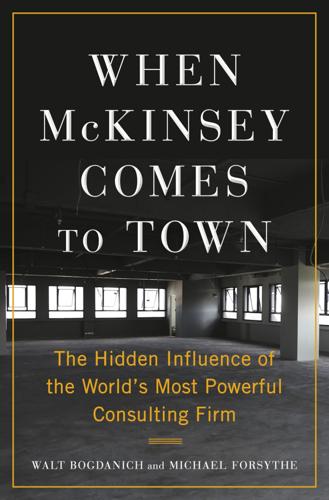
When McKinsey Comes to Town: The Hidden Influence of the World's Most Powerful Consulting Firm
by
Walt Bogdanich
and
Michael Forsythe
Published 3 Oct 2022
With little time to resolve the conflict, McKinsey removed a strongly worded section that Ghatak found objectionable. A spokesman for Azar denied that McKinsey helped him get the HHS job. * * * — While opioid addiction and fatal overdoses affected wide swaths of society, they fell heaviest on the working poor, struggling to survive in rust-belt cities where factories closed, salaries stagnated, and jobs were outsourced. The epidemic contributed to the further fracturing of the middle class while diminishing the prospects of those aspiring to join it. In a review of the book Deaths of Despair and the Future of Capitalism, Atul Gawande wrote that the authors, two Princeton economists, explored a vexing question: why so many members of the working class without college degrees were dying from drug and alcohol abuse or suicide.

One Less Car: Bicycling and the Politics of Automobility
by
Zack Furness
and
Zachary Mooradian Furness
Published 28 Mar 2010
These collaborations certainly do not guarantee a collective struggle for unity and social justice, but the attention many community bicycle organizations pay to the dynamics of race, class, and gender is a necessary step in the right direction. Race, Class, and Bicycling Transportation and access to transportation resources are both intricately connected to race and class.11 african americans and the urban working poor, for example, suffer from a lack of transportation options not unlike their disproportionately poor access to affordable housing and other basic daily goods and services, such as neighborhood grocery stores.12 Consequently, community bicycle organizations that intentionally facilitate programs to assist the poor and communities of color not only provide a rare service in a profit-based economy—access to free services, learned volunteers, and the use of tools and resources that would otherwise be unavailable or prohibitively expensive—but also are engaged (whether explicitly or implicitly) with intersecting issues of race, class, and transportation.

The Zero Marginal Cost Society: The Internet of Things, the Collaborative Commons, and the Eclipse of Capitalism
by
Jeremy Rifkin
Published 31 Mar 2014
Mercantilist policies favored merchant exporters but hurt domestic manufacturers in the host countries as well as in the colonies. Moreover, restricting the volume of domestic products that could be produced for the home market in order to keep export prices artificially high worked not only to the disadvantage of the domestic manufacturers, but also the rising middle class and urban working poor, who had to contend with higher prices for domestic goods. Opposition to mercantilist policies in Europe and the colonies continued to mount, leading the 13 American colonies to break with England in 1776, followed by the French Revolution, which initiated the overthrow of that nation’s monarchy in 1789.

Wealth and Poverty: A New Edition for the Twenty-First Century
by
George Gilder
Published 30 Apr 1981
Year by year, the ante is raised: first a high-school diploma, then a special test, then a further degree, finally a grant of virtual tenure for the “qualified,” all with the effect of downplaying performance on the job and exalting effort on the test, all with the effect of protecting any schooled but shiftless members of the middle class from the competition of unschooled but aggressively hard-working poor people. In short, this system depreciates the assets of diligence, determination, and drive to get ahead, which have launched other groups into the middle class and above, and which every close study has shown to be most important to productivity; and it exalts the assets of the advantaged classes—schooling, testing, computing—that are often irrelevant to productivity in most jobs.

Sugar: A Bittersweet History
by
Elizabeth Abbott
Published 14 Sep 2011
Like tobacco, for centuries a luxury of the rich, sugar became “the general solace of all classes,” especially “the emerging proletarian classes, who found sugar and kindred drug foods profound consolations in the mines and in the factories.”96 A case in point is an eighteenth-century washerwoman, “a queasy and ragged creature who came into a shop with two children … asked for a pennyworth of tea and a half-pennyworth of sugar, and said she could not live without drinking it every day.”97 By 1750, “Sugar, the inseparable Companion of Tea, came to be in the Possession of the very poorest Housewife”98—remember Gladys? Sugar as consolation—the ultimate comfort food—gave it a psychological dimension that transcended taste and caloric force. The wage-earning worker’s ability to buy this previously unattainable luxury connected the “will to work and the will to consume.” The working poor could now aspire to pamper themselves as the rich had long done. One way working-class families did this was through the ritual of high tea, a modest new meal that was rather different from low tea. High tea was served on the high table in the dining room, not on low tables next to sofas and chairs in the drawing room.
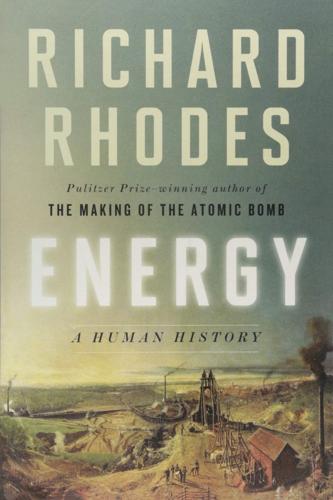
Energy: A Human History
by
Richard Rhodes
Published 28 May 2018
“Every class of resident saw it, handled it, purchased it, and smelled its dust. Residents knew good coal from bad and which coals burned best in their furnaces. They knew the names of mines and mining regions that labeled the black diamonds they produced. Middle-class homeowners bought coal by the ton and stored it in basement bins. The working poor bought it by the bucket and used it sparingly in their tenement stoves for heating and cooking. The desperately poor dug through ash dumps in search of bits of unburned coal or combed the railroad tracks for lumps that had fallen from rail cars.”9 Coal and its smoke, like horses and their wastes, were daily encounters that have disappeared from modern life in mature industrial societies.

Behemoth: A History of the Factory and the Making of the Modern World
by
Joshua B. Freeman
Published 27 Feb 2018
Even after men began to be hired for production jobs, dormitories generally remained sexually segregated. The dormitory system gave companies extraordinary control over their workers. As in the Lowell-style mills, many Chinese factories had (and have) detailed rules for behavior, imposing fines not only for being late to work, poor-quality work, or talking on the job but also for littering or leaving dormitory rooms untidy. Foxconn forbids workers of the opposite sex from visiting one another in their rooms, bans drinking and gambling, and imposes a curfew. Having workers in company housing allows factories to mobilize large numbers of workers rapidly when rush jobs come in and makes it easier to have large numbers of young women working night shifts.
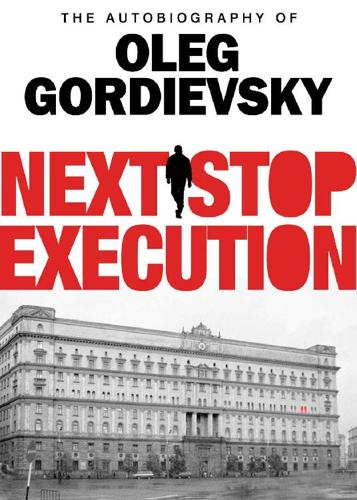
Next Stop Execution: The Autobiography of Oleg Gordievsky
by
Oleg Gordievsky
Published 13 Apr 2015
Then she disappeared for a few days, and, when she came back, to our unbounded relief we found that the smell had gone. Yet still she had a secret up her sleeve. ‘You know,’ she said casually, ‘I’ve got a new interest in life. I bought a season ticket to the swimming pool, and I go there every morning on my way to work.’ Poor pool! Poor fellow swimmers! But at least the problem had been shifted off our own territory. * The great event of 1971 was the expulsion from Britain of 105 KGB officers. This was a bombshell, an earthquake of an expulsion, without precedent, an event that shocked the Centre profoundly. It was triggered by the defection of Oleg Lyalin, a member of the KGB station in London, and in particular of the Thirteenth Department, the unit responsible for gathering information about strategic targets, sabotaging key facilities, and providing safe houses for the teams which would be sent into enemy territory during the first few days of all-out East—West conflict.

Evil Geniuses: The Unmaking of America: A Recent History
by
Kurt Andersen
Published 14 Sep 2020
So some managers might not care as much about employee loyalty as they used to.” Jacob Hacker, the Yale political scientist, calls this the Great Risk Shift, the ways that starting around 1980, business, in order to reduce current and future costs, dumped more and more risk “back onto workers and their families.” As a result, “problems once confined to the working poor—lack of health insurance and access to guaranteed pensions, job insecurity and staggering personal debt, bankruptcy and home foreclosure—have crept up the income ladder to become an increasingly normal part of middle-class life.” Health insurance became a standard part of American jobs starting in the 1940s and ’50s, and early on the pioneering, not-for-profit, cover-everyone Blue Cross and Blue Shield associations provided most of that coverage.
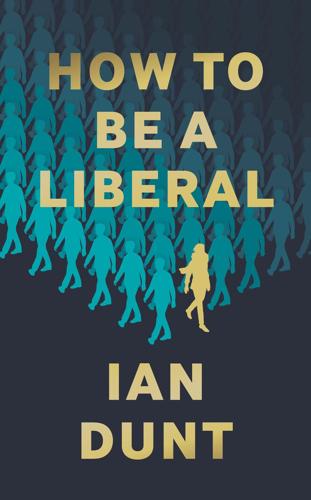
How to Be a Liberal: The Story of Liberalism and the Fight for Its Life
by
Ian Dunt
Published 15 Oct 2020
The railway, car and bicycle were reducing the restrictions of physical distance, while the telephone, cinema and radio reduced mental distance. Industrialisation was hastening urbanisation. Large cities of over 100,000 people became quite common and a handful of metropolises – places like Berlin, London, Paris and Vienna – had over a million. There was a slow but noticeable improvement in the lives of the working poor. Average pay was now enough to buy more than just the bare necessities. States were tentatively interfering with the market, for instance by introducing restrictions on child labour. There was even an embryonic welfare state developing, notably in Germany in 1871 with the introduction of an industrial accident insurance scheme.
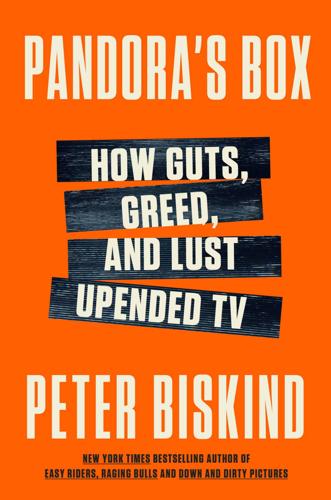
Pandora's Box: How Guts, Guile, and Greed Upended TV
by
Peter Biskind
Published 6 Nov 2023
It is anarchic and subversive, but the stakes aren’t real. When Frank needs a new liver and can’t afford it, he doesn’t die; his nurse falls in love with him, and he gets a new one. Poverty is portrayed as freedom, and freedom is fun. Although the characters are sometimes shown working at real jobs, they’re hardly the working poor. They are, to underline the obvious, the playing poor. Although unavoidable, given the premise, it’s poverty as entertainment. Despite its faults, Shameless more than worked. Over the course of eleven seasons, according to one estimate, across all platforms, it averaged 6.14 million viewers per episode.

There Is No Place for Us: Working and Homeless in America
by
Brian Goldstone
Published 25 Mar 2025
Census data, a recent study by scholars from the University of Chicago, Yale University, and the University of Pennsylvania offers the most comprehensive portrait to date on income and employment among Americans experiencing homelessness. The study found that “a substantial share of the homeless population is drawn from the ranks of the working poor: about half of those in shelters and 40 percent of those at unsheltered locations had formal employment.” Bruce D. Meyer, Angela Wyse, Gillian Meyer, Alexa Grunwaldt, and Derek Wu, “Homelessness and the Persistence of Deprivation: Income, Employment, and Safety Net Participation,” University of Chicago, Becker Friedman Institute for Economics Working Paper No. 2024-48, April 2024, https://papers.ssrn.com/sol3/papers.cfm?

Betrayal of Trust: The Collapse of Global Public Health
by
Laurie Garrett
Published 15 Feb 2000
In 1850 children growing up in large American cities had about fifty-fifty odds of reaching the age of five years without succumbing to disease or malnutrition. Odds were even worse—three to one against them—for children of the poorest urbanites: immigrants and African-Americans. What was missing from American urban society—but would soon appear—was a middle class. Prior to the Civil War, most of the country’s cities were largely populated by the working poor, entrepreneurial poor, and desperately poor. A small, elite group of urbanites possessed enormous wealth and employed large numbers of servants. They and the poor lived parallel but rarely intersecting lives. In the absence of a strong, civically invested middle class, the cities became centers of political corruption.
…
Rather, as had Truman, LBJ, and Nixon, Carter set out to broaden access to all medical treatment while, at the same time, controlling costs:356 Although American medical skill is among the best in the world, we have an abominable system in this country for the delivery of health care, with gross inequalities towards the poor—particularly the working poor—and profiteering by many hospitals and some medical doctors, who prey on the vulnerability of the ill. From the enormous profits, unnecessary hospital facilities can be built; the cost of the empty beds and underutilized equipment is financed by the public through higher taxes to pay for Medicaid and Medicare, plus bigger hospital bills and insurance premiums for private care.
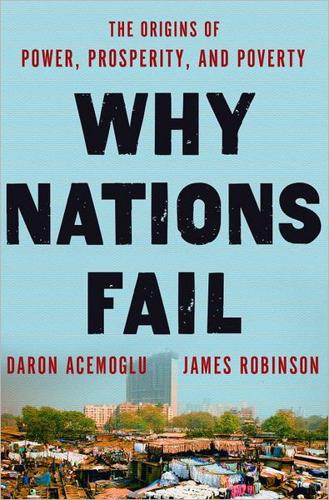
Why Nations Fail: The Origins of Power, Prosperity, and Poverty
by
Daron Acemoglu
and
James Robinson
Published 20 Mar 2012
HB74.P65A28 2012 330—dc23 2011023538 eISBN: 978-0-307-71923-2 Maps by Melissa Dell Jacket design by David Tran Jacket photograph by Kirk Mastin/Getty Images v3.1 For Arda and Asu—DA Para María Angélica, mi vida y mi alma—JR CONTENTS Cover Title Page Copyright Dedication PREFACE Why Egyptians filled Tahrir Square to bring down Hosni Mubarak and what it means for our understanding of the causes of prosperity and poverty 1. SO CLOSE AND YET SO DIFFERENT Nogales, Arizona, and Nogales, Sonora, have the same people, culture, and geography. Why is one rich and one poor? 2. THEORIES THAT DON’T WORK Poor countries are poor not because of their geographies or cultures, or because their leaders do not know which policies will enrich their citizens 3. THE MAKING OF PROSPERITY AND POVERTY How prosperity and poverty are determined by the incentives created by institutions, and how politics determines what institutions a nation has 4.

The Relentless Revolution: A History of Capitalism
by
Joyce Appleby
Published 22 Dec 2009
Thomas Robert Malthus’s popular theory about population growth taught that poverty was the inescapable lot of the mass of men and women. Breaking through this penumbra of resignation has not proved easy. Almost two centuries ago the English radical William Cobbett denounced the cruelty of jobs that kept sober and industrious workers fully employed but did not pay them enough to feed their families. Cobbett’s working poor have now attracted the attention of today’s activists who have succeeded in getting more than a hundred cities in the United States to pass living wage ordinances for their employees and those working for firms with municipal contracts. Amartya Sen, like Yunus, was born in what has become Bangladesh, but he emigrated to India after the partition of 1947.
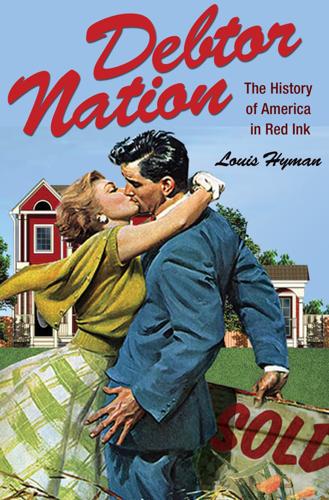
Debtor Nation: The History of America in Red Ink (Politics and Society in Modern America)
by
Louis Hyman
Published 3 Jan 2011
For those who control and regulate these structures today, the choices remain as they always have—within limits. The state has the power to make markets and guide the profitable flow of capital, as has been shown throughout this book. When policymakers acknowledged this flow, their policy ambitions have been successful. In the 1920s, small loan reformers helped channel capital to the working poor, to give them cheaper, yet still expensive, access to credit. In the 1930s, federal policymakers channeled this capital to create the suburbs, surpassing even the most grandiose of tax-funded programs. In the 1960s, Great Society reformers created mortgage-backed securities that expanded the lending pool for American home owners.

A Splendid Exchange: How Trade Shaped the World
by
William J. Bernstein
Published 5 May 2009
This benefited no one except the landowning aristocracy. Ricardo's pamphlet convinced few. His more influential Principles did not appear in print until 1817, and he himself did not enter Parliament until 1819. The thought of German, Polish, and Danish warehouses bulging with cheap grain incited England's working poor. In the end the mob proved more influential than the forces of rational discourse, but not in the direction intended. In March 1815, anti-Corn Law rioters raged through London's streets and broke into the houses of the bill's supporters, including those of Lord Castlereagh, the notoriously repressive foreign minister, and Frederick Robinson, who had introduced the bill.
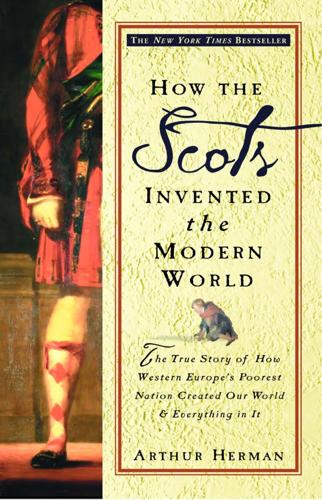
How the Scots Invented the Modern World: The True Story of How Western Europe's Poorest Nation Created Our World and Everything in It
by
Arthur Herman
Published 27 Nov 2001
The first were aristocrats, since there was no space allotted for their usual mansions and parks. Although some did eventually buy and build, particularly in later stages of the development, the New Town’s rule required that their houses could look no different from, or any larger than, those of their middle-class “tradesmen” neighbors. The second group was the laboring masses and working poor. Increasingly, the Old Town became their preserve, as more and more wealthy people left its narrow, teeming streets to find a place in the wide-open spaces north of the city. Class division in Edinburgh was no longer vertical (servants and laborers in the attic, well-to-do in the middle, artisans and shopkeepers at street level) but horizontal.
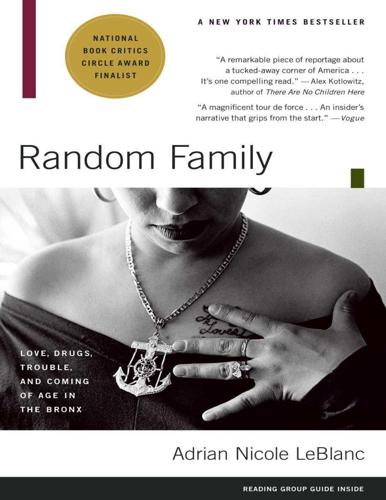
Random Family: Love, Drugs, Trouble, and Coming of Age in the Bro
by
LeBlanc, Adrian Nicole
Published 23 Oct 2012
“Now we in separate rooms.” Serena preferred to spend her summer days at her best friend Priscilla’s rather than in the empty apartment at Hunts Point. Priscilla lived with her sister, two brothers, her mother, and stepfather on the top floor of a three-decker near White Plains Road. Priscilla’s neighborhood was working poor and working class—full of Albanians, Indians, Irish, Puerto Ricans, Italians, and Dominicans. Instead of the bullet-proof check cashiers, the bodegas and liquor stores shared the blocks with businesses that spoke of future-oriented days—tile and sprinkler shops, travel agencies, bakeries. The parents’ workaday routines limited the teenagers’ range of motion: no adults were home after Priscilla’s mother went to work at two, but she kept watch on the girls by telephone.
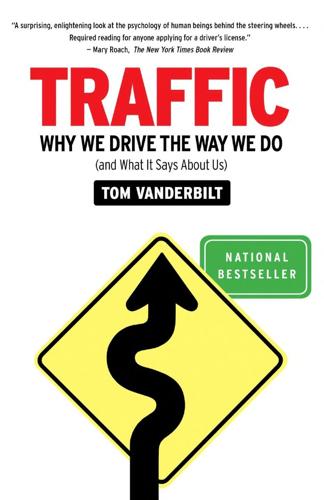
Traffic: Why We Drive the Way We Do (And What It Says About Us)
by
Tom Vanderbilt
Published 28 Jul 2008
The average car journey takes up to one-third longer in Europe than it does in the United States (which is perhaps why Europeans make fewer car trips). Driving to work alone, which is what nearly nine out of ten Americans do, is still, on average, about one and a half minutes faster than the average time for all other travel methods. One study that looked at the working poor found that those with a car were able to get around three times more quickly than those without one. Even people who do not own a car are more likely to commute via car than public transit. Trying to crack the commuter psyche is rather bewildering work. On the one hand, people seem to hate commuting.

Not Working: Where Have All the Good Jobs Gone?
by
David G. Blanchflower
Published 12 Apr 2021
The United Nations Special Rapporteur on extreme poverty and human rights to the UK, Philip Alston, reported at the end of a twelve-day visit to the UK in 2018 that “the government’s policies and drastic cuts to social support are entrenching high levels of poverty and inflicting unnecessary misery…. In the fifth richest country in the world, this is not just a disgrace, but a social calamity and an economic disaster, all rolled into one.” He continued: “Government policies have inflicted great misery unnecessarily, especially on the working poor, on single mothers struggling against mighty odds, on people with disabilities who are already marginalised, and on millions of children who are locked into a cycle of poverty from which many will have great difficulty escaping.”27 That says it all. It seems we have learned little in three-quarters of a century.
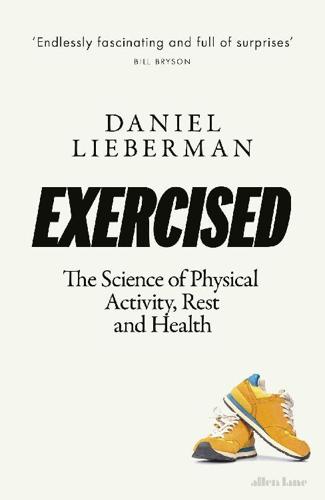
Exercised: The Science of Physical Activity, Rest and Health
by
Daniel Lieberman
Published 2 Sep 2020
Many of my friends, however, commute long distances, their inherently sedentary office jobs are fixed in terms of hours, and they have other time-consuming obligations including child care and elder care. Paradoxically, for the first time in history, wealthier people get more physical activity than the working poor.13 When free time is scarce, optional activities like exercise are relegated to weekends, and by then a week’s worth of accumulated fatigue can make it hard to muster the energy to exercise. When people are asked what keeps them from exercising, they almost always list time as a main barrier. Which brings up fun.

Imagining India
by
Nandan Nilekani
Published 25 Nov 2008
One of the biggest challenges he says that we face in Indian education is that everyone but the poorest and most illiterate parents have abandoned our government schools. “The parents that still place children in such schools,” he says, “don’t really know what a good education is.” Unfortunately, institutional reform in a country is usually the outcome of pressure from the middle and educated classes. The opinions of the working poor get underrepresented in public debates due to their illiteracy, and their lack of access to information also limits them when it comes to comparing good and bad systems and demanding reform. The middle class often has both numbers and public voice in their favor, and their participation in India’s state education systems was critical in maintaining education and teaching standards.
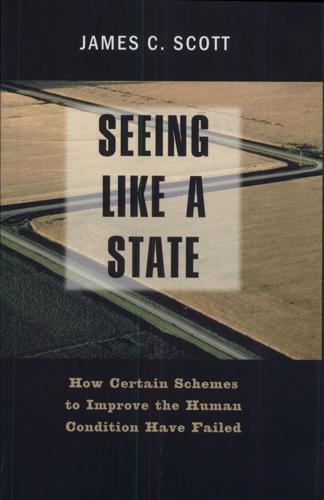
Seeing Like a State: How Certain Schemes to Improve the Human Condition Have Failed
by
James C. Scott
Published 8 Feb 1999
It was possible to conceive of an artificial, engineered society designed, not by custom and historical accident, but according to conscious, rational, scientific criteria. Every nook and cranny of the social order might be improved upon: personal hygiene, diet, child rearing, housing, posture, recreation, family structure, and, most infamously, the genetic inheritance of the population." The working poor were often the first subjects of scientific social planning. 19 Schemes for improving their daily lives were promulgated by progressive urban and public-health policies and instituted in model factory towns and newly founded welfare agencies. Subpopulations found wanting in ways that were potentially threatening-such as indigents, vagabonds, the mentally ill, and criminals-might be made the objects of the most intensive social engineering.20 The metaphor of gardening, Zygmunt Bauman suggests, captures much of this new spirit.
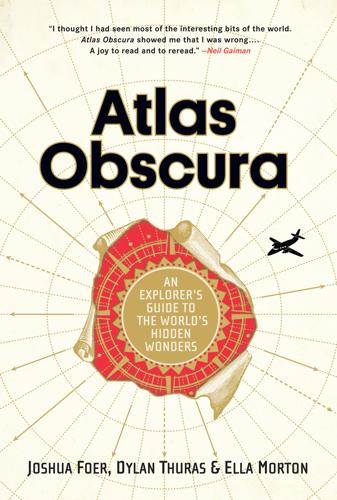
Atlas Obscura: An Explorer's Guide to the World's Hidden Wonders
by
Joshua Foer
,
Dylan Thuras
and
Ella Morton
Published 19 Sep 2016
(Just to make sure this point is crystal clear, the small section that his dad worked on is painted with the words “Jim started the castle, not his father, Willard.”) Bishop sees his castle as a symbol of American freedom. Signs surrounding the building tell of the local government’s unsuccessful attempts to regulate his work. “They tried but failed to oppress and control my God-given talent to hand-build this great monument to hard-working poor people,” one reads (in part—it’s a long sign). Bishop plans to keep building until he is no longer physically able. When visiting, you may see him carrying stones or making an impromptu speech from one of the towers—he is known to unleash his political views on visitors at high volume. 1529 Claremont Avenue, Pueblo.

Power and Progress: Our Thousand-Year Struggle Over Technology and Prosperity
by
Daron Acemoglu
and
Simon Johnson
Published 15 May 2023
New people replacing an age-old hierarchy sounds like the stuff that could produce an inclusive vision, and if so, we should expect this vision to propel us toward shared prosperity. Unfortunately, this was most definitely not what happened in the short term. In eighteenth-century and early nineteenth-century Britain, the working poor had no political representation and, aside from occasional demonstrations, no way to express themselves collectively. The emboldened middle class, in turn, aspired to rise within the existing system. They accepted its values, and many of them, including Richard Arkwright, bought estates in order to improve their social standing.
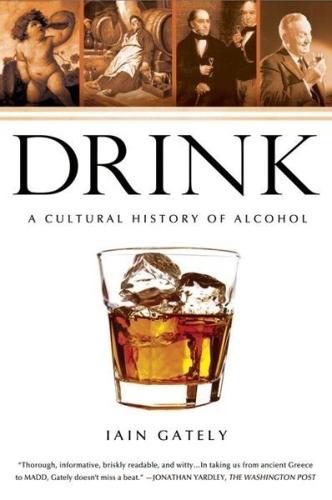
Drink: A Cultural History of Alcohol
by
Iain Gately
Published 30 Jun 2008
Cheap weak wine was likewise the standard fare at a new class of watering holes—guinguettes—that had been established on the outskirts of the town to avoid the heavy Parisian sales taxes. These were large utilitarian places, which offered dancing as well as drinking, and which were patronized by the working poor. Perhaps the only places in Paris where a stranger might get a decent glass of wine were its cafés, whose numbers had multiplied considerably since the now-venerable Procope had introduced coffee to the French capital. These had since assumed a role akin to the coffee shops in London, and served as forums where intellectuals gathered to discuss the news and matters that the royal censors prevented from appearing in print.

An Empire of Their Own: How the Jews Invented Hollywood
by
Neal Gabler
Published 17 Nov 2010
Two million people a day are needed before profits can begin, and two million are forthcoming.” He concluded with understatement. “It is a big thing, this new enterprise.” Why the movies had suddenly seized the imagination of America, or at least one segment of America, certainly had something to do with price and proximity. For the working poor and the immigrant masses, movies were affordable, a nickel compared with a quarter or fifty cents for vaudeville and more for the legitimate stage, and they were usually located within walking distance, saving patrons carfare, which was always a consideration. But this didn’t explain the extent to which movies were capturing the imagination of the American underclass.

The Empathic Civilization: The Race to Global Consciousness in a World in Crisis
by
Jeremy Rifkin
Published 31 Dec 2009
While the increase in foreign trade helped expand the home market for manufactured goods, the restrictions that governments like Britain eventually placed on the volume of domestic production that could be produced in order to keep export prices artificially high worked to the disadvantage of the manufacturers.69 The young capitalist class preferred open markets and free trade, believing that it was the best way to increase output, optimize their margins, and improve their profits. The peasantry, the urban working poor, and the rising middle class all felt the sting of higher prices on domestic products. They also suffered under the burden of increased taxes to finance government spending on armies, weaponry, and wars. By the late eighteenth century, the breach between the emerging capitalist class and the monarchies was irreversible.
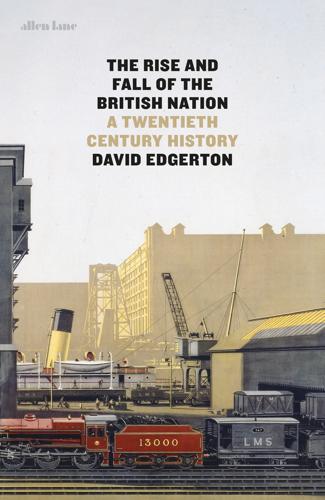
The Rise and Fall of the British Nation: A Twentieth-Century History
by
David Edgerton
Published 27 Jun 2018
This was profoundly important, as it first drove down the pension as a proportion of average earnings to 16 per cent, where it stayed essentially to the end of New Labour in 2010. It had stood at 26 per cent at its peak during the 1970s Labour government.39 New Labour was content, it seemed, with a welfare state of minimal generosity, and special measures for a rediscovered underclass of the ‘socially excluded’. It created a new means-tested system of support for the working poor, one which radically extended means-testing and in effect subsidized employers paying low wages. After 1999 public spending did increase under New Labour, notably in health and education (which had been singled out as a priority area). There was growth in welfare by stealth. Yet we need to recall that welfare spending had also been increasing under the Conservatives as we acknowledge that New Labour did become consciously keen on some public sector interventions.

The Meritocracy Trap: How America's Foundational Myth Feeds Inequality, Dismantles the Middle Class, and Devours the Elite
by
Daniel Markovits
Published 14 Sep 2019
medical expenses and car and house repairs: Center for Responsible Lending, The Plastic Safety Net: The Reality Behind Debt in America (October 2005), 4–5, www.responsiblelending.org/credit-cards/research-analysis/DEMOS-101205.pdf. See also Anika Singh Lemar, Debt Weight: The Consumer Credit Crisis in New York City and Its Impact on the Working Poor, Urban Justice Center (2007), 3, https://papers.ssrn.com/sol3/papers.cfm?abstract_id=3160600. Hereafter cited as Lemar, Debt Weight. Christian E. Weller, Pushing the Limit: Credit Card Debt Burdens American Families, Center for American Progress (2006), https://cdn.americanprogress.org/wp-content/uploads/kf/CREDITCARDDEBTREPORT_PDF.PDF; Brian K.
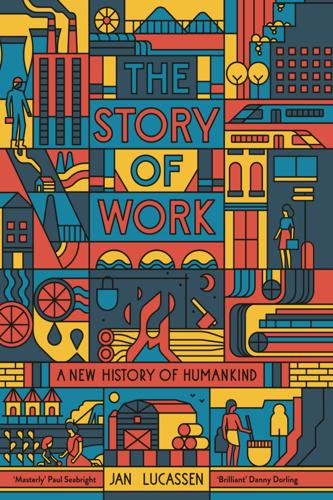
The Story of Work: A New History of Humankind
by
Jan Lucassen
Published 26 Jul 2021
Although the trend towards the deregulation and reduced pretensions of the welfare state is evident in all countries in the North Atlantic, there are still substantial differences between the US, Britain and the Continent. In the US, the distinction between the privileged, white, male breadwinners and other wage earners was pronounced long before Reagan. In 1960, the American public intellectual Paul Goodman, in his peculiar and provocative style, had already contrasted the working poor in America (‘Negroes, Puerto Ricans and Mexicans, migrant farm labor’) that were ‘outside society’ with, on the one hand, the factory workers, and on the other: the vast herd of the old-fashioned, the eccentric, the criminal, the gifted, the serious, the men and women, the rentiers, the freelancers . . .
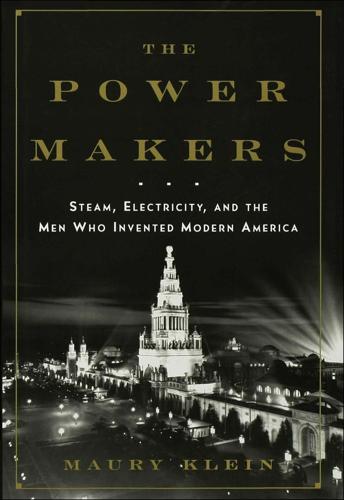
The Power Makers
by
Maury Klein
Published 26 May 2008
“The mechanism was locked together like a Chinese puzzle,” he recalled, “and difficult to get apart. It was entirely devoid of screws.” Still the determined customer could get at it. One man complained that a lamp was defective. “Why I’ve had that lamp all to pieces four times,” he protested, “and still it won’t work.” Poor installation by men inadequately trained for the job led to short circuits, grounds, and other accidents. On one occasion Brush journeyed fifteen hundred miles to solve a problem by removing a simple staple tack from the bottom of a dynamo, where it short-circuited a magnet.52 During the early years of his company, Brush operated as what he called a “ ‘one-man’ laboratory.”

Enlightenment Now: The Case for Reason, Science, Humanism, and Progress
by
Steven Pinker
Published 13 Feb 2018
Roser 2016k. 50. Why the United States doesn’t have a European welfare state: Alesina, Glaeser, & Sacerdote 2001; Peterson 2015. 51. Rise in disposable income in lower quintiles: Burtless 2014. 52. Income rise from 2014 to 2015: Proctor, Semega, & Kollar 2016. Continuation in 2016: E. Levitz, “The Working Poor Got Richer in 2016,” New York, March 9, 2017. 53. C. Jencks, “The War on Poverty: Was It Lost?” New York Review of Books, April 2, 2015. Similar analyses: Furman 2014; Meyer & Sullivan 2011, 2012, 2016, 2017; Sacerdote 2017. 54. 2015 and 2016 drops in the poverty rate: Proctor, Semega, & Kollar 2016; Semega, Fontenot, & Kollar 2017. 55.

I Am Charlotte Simmons: A Novel
by
Tom Wolfe
Published 9 Nov 2004
In any event, the three hundred dollars a month he was paid for this service was crucial to his existence at Dupont, as was the approximately one hundred a month-all of it in tips, none in wages-he made delivering pizza, mainly to students' rooms, for a franchise operation called PowerPizza. Of course, delivering pizza for tips created a master-servant relationship, too, but these days, students and young people generally shrank from being anything but egalitarian in their dealings with the working poor. No matter which job he was working at, he had to make a trade-off. The downside of delivering pizza was that it was mindlessly repetitive, and your time wasn't flexible. Whenever you worked the job, you were committed to a six-hour stretch. In tutoring athletes, you had to submit to the egos of large, stupid people who could summon you by beeper anytime they felt like it, and you had to accept the fact that you were abetting an institutional farce known as "the student-athlete."

Coastal California
by
Lonely Planet
Some are teens who have run away or been kicked out by their families, but the largest contingent of homeless Californians are US military veterans – almost 30,000 in all. What’s more, in the 1970s mental-health programs were cut, and state-funded drug-treatment programs were dropped in the 1980s, leaving many Californians with mental illnesses and substance-abuse problems with no place to go. Also standing in line at homeless shelters are the working poor, unable to cover medical care and high rent on minimum-wage salaries. Rather than addressing the underlying causes of homelessness, some California cities have criminalized loitering, panhandling, even sitting on sidewalks. However, local charities continue to provide essential backup for the homeless.

Lonely Planet Morocco (Travel Guide)
by
Lonely Planet
,
Paul Clammer
and
Paula Hardy
Published 1 Jul 2014
Years of Lead Along with the growing gap between the rich and the poor and a mounting tax bill to cover Morocco’s military spending in the Western Sahara, King Hassan II’s suppression of dissent fuelled further resentment among his subjects. By the 1980s, the critics of the king included journalists, trade unionists, women’s-rights activists, Marxists, Islamists, Berbers advocating recognition of their culture and language, and the working poor – in other words, a broad cross-section of Moroccan society. Queen al-Kahina had one distinct advantage over the Umayyads: second sight. The downside? She foretold her own death at the hands of her enemy. The last straw for many came in 1981, when official Moroccan newspapers casually announced that the government had conceded to the International Monetary Fund to hike prices for staple foods.
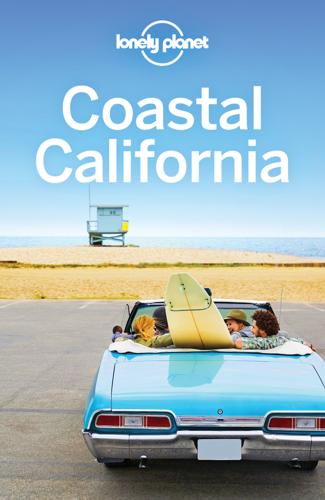
Coastal California Travel Guide
by
Lonely Planet
The demographic of homeless people is varied, but the largest contingent of homeless Californians are US military veterans – estimated at more than 15,000 people. What’s more, in the 1970s mental-health programs were cut, and state-funded drug-treatment programs were dropped in the 1980s, leaving many Californians with mental illnesses and substance-use problems no place to go. Also standing in line at homeless shelters are the working poor, unable to afford to rent even a small apartment on minimum-wage salaries. Rather than addressing the underlying causes of homelessness, some California cities have criminalized loitering, panhandling, even sitting on sidewalks. More than three out of every 1000 Californians already sit in the state’s notoriously overcrowded jails, the majority for drug-related crimes.

Bourgeois Dignity: Why Economics Can't Explain the Modern World
by
Deirdre N. McCloskey
Published 15 Nov 2011
The Interstate Commerce Commission, supposed to keep down rail rates charged to farmers, was swiftly captured by the railways and commenced keeping rates up.12 Because the rich and powerful run the government, the poor and other powerless have been regularly hurt by governmental regulation—even by such sweet-sounding regulations as evening closing of shops (making it hard for the working poor to have time to shop) or protections limiting the hours women could work (making it hard for them to hold supervisory jobs requiring one to come early and stay late) or building codes claiming to promote safety but instigated by building trade unions (making it hard to build inexpensive housing) or minimum wages (making it hard for blacks, immigrants, women, and nonmembers of craft unions to get paying jobs).
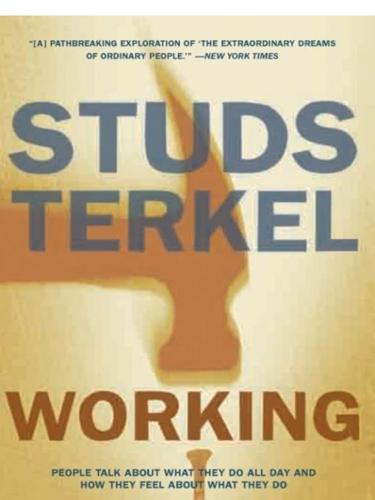
Working: People Talk About What They Do All Day and How They Feel About What They Do
by
Studs Terkel
Published 1 Jan 1974
They wouldn’t have anything without us. How could we employ teachers if it wasn’t for the factory workers to manufacture the books? And briefcases, that’s luggage. (Laughs.) I can understand how the black and the Spanish-speaking people feel. Even as a farmer’s daughter, because we were just hard-working poor farmers, you were looked down upon by many people. Then to go into factory work, it’s the same thing. You’re looked down upon. You can even feel it in a store, if you’re in work clothes. The difference between being in work clothes going into a nice department store and going in your dress clothes.

The Rise and Fall of American Growth: The U.S. Standard of Living Since the Civil War (The Princeton Economic History of the Western World)
by
Robert J. Gordon
Published 12 Jan 2016
On the eve of the passage of the Patient Protection and Affordable Care Act of 2010, better known as Obamacare, 16 percent of U.S. citizens lacked health coverage, higher than the 12 percent who had lacked insurance in 1987.124 The burden of lack of coverage has mostly, contrary to the popular narrative, fallen not on the unemployed or extremely poor, but instead on the working poor. Thanks to a steady decline in employment-based health insurance, by the early 2000s about 80 percent of the uninsured were working Americans who were neither poor enough to qualify for Medicaid nor in a position to bargain for a job with health benefits.125 Among those were citizens who needed and were willing to pay for insurance to cover a pre-existing condition but who were denied coverage because of that very condition.

Northern California Travel Guide
by
Lonely Planet
Some say the problem started in the 1960s, when Ronald Reagan slashed funding to mental-health facilities, drug-rehab programs and low-income housing programs, both as governor of California and later as president. Over the following decades this left few options for many Californians suffering from mental illness and drug addiction. Also standing in line at homeless shelters and food banks are the working poor, unable to cover rent and expenses on minimum-wage salaries, despite recent increases to the latter. Rather than addressing the underlying causes of homelessness, some California cities have criminalized loitering, panhandling and even sitting on sidewalks, further marginalizing the homeless. The bottom line is nobody knows how to address the issue, and until they do, panhandlers will be part of the experience of visiting Northern California cities – especially San Francisco.
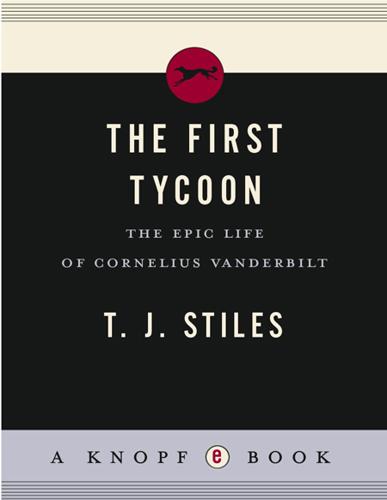
The First Tycoon
by
T.J. Stiles
Published 14 Aug 2009
“Admixed with foundries and factories were reeking gasworks, putrid slaughterhouses, malodorous railyards, rotting wharves, and stinking manure piles,” write two historians of New York, “which gave the working-class quarters their distinctively fetid quality” Diseases such as cholera swept Five Points, Corlears Hook, and other impoverished neighborhoods, leading to death rates as high as 195 out of every thousand. The closing of factory doors and slashing of wages in the Panic made a bad situation impossible for many. A “Work or Bread” movement swept the working poor; it would culminate in a protest by seven thousand unemployed workers in Tompkins Square in New York on January 13, 1874. The police broke it up with ruthless force. Homeless and hopeless, many of the unemployed took to the road, giving birth to a new creature on the American landscape: the tramp.66 The tidal wave threatened to engulf even the mightiest of the mighty: the Pennsylvania Railroad and its gifted managers.
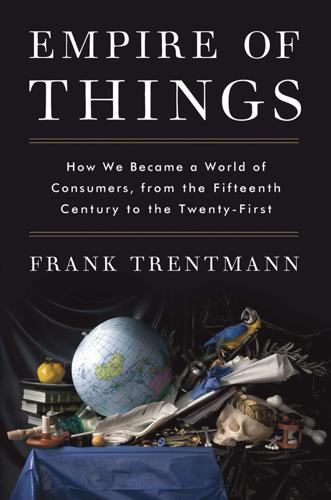
Empire of Things: How We Became a World of Consumers, From the Fifteenth Century to the Twenty-First
by
Frank Trentmann
Published 1 Dec 2015
In tailor shops in Jena, Germany, for example, only a quarter of customers paid in cash or settled their bills within three months. Students were notorious for extending their credit, ‘sometimes for years’, although their parents and university corps saw to it that debts were eventually paid off.9 For the working poor, borrowing was an unavoidable strategy of survival. Like their superiors, workers used credit to bridge the temporary gap between earnings and expenses. Unlike their superiors, they had neither the assets nor the ‘character’ to be especially credit-worthy. For them, the gap could be a matter of life and death.
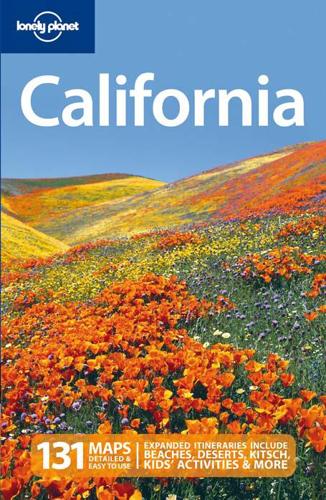
California
by
Sara Benson
Published 15 Oct 2010
Some are teens who have run away or been locked out by their parents, but the largest contingent of homeless Californians are US war veterans – 49,000 in all. What’s more, in the 1970s mental health programs were cut, and state-funded drug treatment programs were dropped in the 1980s, leaving many Californians with mental illnesses and substance abuse problems no place to go. Also standing in line at homeless shelters are the working poor, unable to cover medical care and high rent on minimum-wage salaries. San Francisco is pioneering efforts to provide universal health-care citywide and set a realistic living wage, but no one city can carry the burden for the statewide crisis. Rather than addressing the underlying causes of homelessness, some California cities have criminalized loitering, panhandling, even sitting on sidewalks.
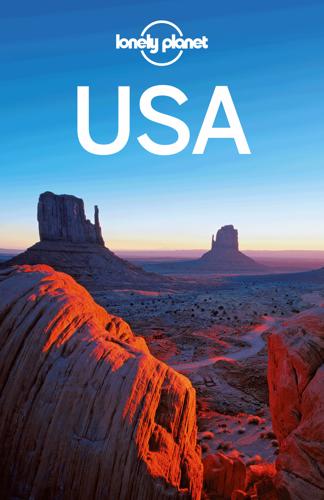
USA Travel Guide
by
Lonely, Planet
Other notable American figures at Parisian literary salons included modernist writers Gertrude Stein and Ezra Pound, and iconoclast Henry Miller, whose semiautobiographical novels were published in Paris, only to be banned for obscenity and pornography in the USA until the 1960s. F Scott Fitzgerald eviscerated East Coast society life with his fiction, while John Steinbeck became the great voice of rural working poor in the West, especially during the Great Depression. William Faulkner examined the South’s social rifts in dense prose riddled with bullets of black humor. Between the world wars, the Harlem Renaissance also flourished, as African American intellectuals and artists took pride in their culture and undermined racist stereotypes.
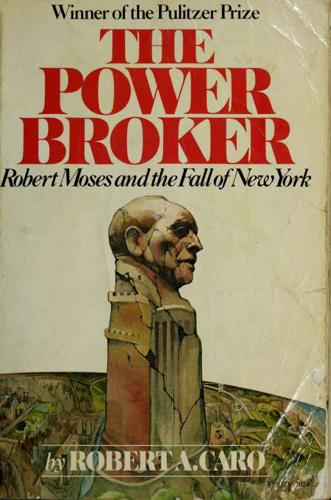
The power broker : Robert Moses and the fall of New York
by
Caro, Robert A
Published 14 Apr 1975
One tried to look down only enough to avoid stepping on the piles of feces, whether mercifully dried or reeking fresh—animal and human. There was no heat in those buildings; if they were homes, they were homes as the cave of the savage was a home. And yet they were homes—homes for tens of thousands of people. They were homes for welfare tenants and for the poorest of the working poor, for families that drift from one apartment to another without, seemingly, ever paying a month's rent in full—urban gypsies—for mothers who say desperately to the stranger, when they can be induced to talk to the stranger: "I got to get my kids out of here," and for children who come to the door long after the knock is heard and peer around and ask the stranger, with fear in eyes and voice: "Are you the man from the welfare?"